

Ultimate 21 Day Japan Itinerary
In my opinion, 21 days in Japan is the perfect amount of time to spend in Japan. Sure with 14 days you could see all the highlights, but with 21 days you can really delve into the cities, as well as visit some of the more “off the beaten path” destinations, away from much of the tourists. Check out this ultimate 21 day Japan itinerary to see how to best spend your time!
Disclaimer: This post contains affiliate links. Find more information about affiliate links on our policy page .
- Before You Go
Day 1: Travel Day
Days 2-5: tokyo.
- Days 6-9: Day Trips from Tokyo
Day 10: Yamagata & Sendai
Day 11: nagoya, days 12-14: kyoto.
- Days 15-17: Day Trips from Kyoto
Day 18: Okayama
Day 19: hiroshima.
- Day 20: Day Trip from Hiroshima
Day 21: Travel Day
Transportation & discount passes, souvenirs & shopping, additional information, before you begin.
If this is your first time traveling to Japan, I highly recommend doing some research into the country’s transportation system, customs, etc. I believe you’ll find it much easier to put together a Japan itinerary if you sort of know what you are getting yourself into.
Useful articles:
- Top Japanese Phrases for Travel
- Best Japan Travel Apps – Directions, Food, & More
- Navigating Japan’s Train System: Tips for Traveling Japan by Train
- Is the Japan Rail Pass (JR Pass) Worth It?
21 Day Japan Itinerary
You’ll likely spend your first day in Japan just getting settled. Depending on whether or not your purchased any discount passes, as well as a phone SIM card or pocket Wi-Fi, you may have to pick them up and/or get them activated. Between that and getting to your hotel in Tokyo, you’ll likely find that a good chunk of your day is gone. If you are lucky, you may have some time to explore the area around your hotel in the evening.
Four days in Tokyo gives you enough time to really delve into the city, instead just seeing the highlights.
I recommend spending the first day just exploring the Shinjuku area. There is so much to do there, from strolling around Shinjuku Gyoen (one of my favorite gardens in Tokyo), to visiting Hanazono Jinja (a shrine hidden away in the chaos of the city), to shopping in downtown Shinjuku.
With your second day, you can delve more into Japanese culture in the eastern districts of Tokyo. Take a tour of the Imperial Palace, and then head over to Senso-ji, Tokyo’s oldest temple. Also in that area is Tokyo Skytree, he tallest tower in the world. If that’s not enough, I recommend taking a ride on the futurist Himiko and Hotaluna boats.
With your third day, its back to the hustle and bustle of the big city in the Shibuya District. Quite literally. Shibuya Crossing, also sometimes called the Shibuya Scramble, is the busiest intersection in Japan (and possibly the world). Also in this area are popular shopping areas like Shibuya 109 and Don Quijote. Once you’ve had enough of the city, take a stroll around Yoyogi Park and stop by Meiji Jingu.
With your last day, you have to stop by Harajuku. You just can’t miss the wild street fashion, especially common around the Takeshita-dori shopping street. Then, in the afternoon, head over to Akihabara the center of tech and anime culture in Tokyo.
Days 6-9: Tokyo Day Trips
Just outside the city are some truly spectacular places that make for a great day trip from Tokyo, such as Lake Kawaguchiko, Hakone, Kamakura, and Nikko.
Lake Kawaguchiko is one of the Fuji Five lakes. Not only does it offer fantastic views of Mt. Fuji, but it’s also one of the most accessible Mt. Fuji viewing spots. Some popular spots include Chureito Pagoda as well as Music Forest.
One of the most unique activities in Hakone is Hakone Kowakien Yunessun Spa and Resort . It has traditional style onsen (hot springs), but it also has a water theme park with themed onsen such as wine onsen and coffee onsen. It’s definitely a unique experience if nothing else.
Next is Kamakura , the former capital of Medieval Japan. It’s a city full of history and contains several sites of importance. You can take a stroll around Meigetsuin, which is particularly known for their hydrangea flowers, or check out Zeniarai Benten, a temple hidden away in the side of the mountain. Most importantly, make sure to stop by Kotokuin, which is known for housing the second largest Buddha statue in Japan.
I’ve always considered Nikko to by like a mini-Kyoto. It’s a great place to take a deep dive into Japanese culture and history without all the crowds. It’s home to a UNESCO World Heritage Site as well as the mausoleum of a historic political leader.
It’s a bit of work to get there, but one of my favorite stops in Japan is Yamadera. Yamadera, which literally translates to Mountain Temple, is aptly named due to its unique location up in the mountains just outside Yamagata City. You’ll have to climb 1,000 steps to reach the top, but the view at the end is 100% worth every step.
About an hour east of Yamadera is Sendai . Founded by Date Masamune, much of his history is present within the city’s attractions, such as Zuihoden Mausoleum and Osaki Hachimangu.
If you have time in the afternoon, you can also head up to Matsushima Bay area, considered one of Japan’s three most scenic views. Otherwise, head to the train station and head off to your next destination: Nagoya!
Nagoya is a bit off the beaten path, but makes for a great stopover on your way to Kyoto (the next destination on this 21 day Japan itinerary). Checking out places like Nagoya Castle, Tokugawa Garden, and Osu Kannon Dori is a great way to spend a day and get a bit of break from the hustle and bustle. In my opinion, Nagoya Castle pales in comparison to some of the other castles included in this Japan 21 day itinerary, but it warrants a visit, if only so you can check out the exquisite paintings on the sliding doors in Honmaru palace.
Kyoto was probably one of my favorite destinations in Japan. If you have an interest in traditional Japanese culture, customs, and history, you likely will too. The city is full of countless historically significant structures, and has plenty of fun activities to help you delve into it all.
The first thing I recommend doing while is renting kimono in Kyoto for the day. What better way is there to experience Japanese culture first hand? If you do rent kimono, I recommend keeping the itinerary for the day simple and making sure it doesn’t include a lot of walking, as you’ll find it a bit harder to get around in the kimono. Taking a bus to popular temples such as Ginkakuji, Nanzenji, Shorenin, and Kiyomizudera.
Any trip to Kyoto needs to include a stop at Fushimi Inari. It easily topped the list of my favorite shrines and temples in Kyoto . With over 1,000 bright orange torii gates, it’s definitely a sight to see. Plus, it’s set on the side of the mountain, making for a great place to do some hiking. A bit further south you’ll find Fushimi Momoya Castle. It’s a bit off the beaten path, making it a great place to get some pictures and relax without any crowds. To the east of Fushimi Inari and Momoya Castle is Daigoji, which is a UNESCO World Heritage Site.
On your last day in Kyoto, I recommend starting off at Arashiyama Bamboo Grove. If possible, I’d get there early so that you can enjoy the tranquility of the walk and forest without all the other people. From there, hop on the Sagano Scenic Railway, where you can sit back and enjoy the relaxing views of Kyoto’s natural beauty. Also, don’t forget to make a stop at Kinkakuji, arguably one of Kyoto’s most famous temples, due to its bright gold color. Then, finish off your time in Kyoto by watching a Kembu demonstration , a traditional Japanese sword art practiced by ancient samurai, and maybe even take some lessons!
Days 15-17: Kyoto Day Trips
Similar to Tokyo, there are a lot of different places that make for great day trips from Kyoto. However, the main three I recommend are Osaka, Himeji and Nara.
With 19 million inhabitants, Osaka is the second largest metropolitan area in Japan. It’s well known for its shopping streets, modern architecture, and bountiful activities. Some of my favorites included Osaka Castle, Dotonbori, and the observatory atop Umeda Sky Building.
Himeji is home to one of Japan’s most famous castles. Himeji Castle, also nicknamed the White Heron castle due to its color and shape, has not only been designated as a national treasure but is also a UNESCO World Heritage Site. Nearby the castle is also Kokoen, a great place for a stroll in a Japanese garden.
Nara is likely most famous for being the home of Todaiji, which houses Japan’s largest, bronze Buddha statue. The second thing it’s most famous for is arguably its people friendly deer. If you have some deer treats, you may even be able to get them to bow to you!
Not only is Okayama the capital of Okayama Prefecture, but it’s one of those “hidden gem” cities. It’s not nearly as crowded with tourists as say Tokyo or Kyoto, but definitely has its claim to fame with iconic landmarks such as “Crow Castle” and Korakuen Garden, one of the three great gardens in Japan.
Hiroshima is one of those places that I personally feel every person should visit. It’s home to the Atomic Bomb Dome, also called the Genbaku Dome or Hiroshima Peace Memorial, which is one of the only buildings to survive the atomic bomb dropped on Hiroshima at the end of World War II. The Hiroshima Peace Memorial Museum is probably the most impactful, but also heart wrenching places to visit, because you can actually see the true extent of the damage of the atomic bomb. Also in the area are the Children’s Peace Monument, the Cenotaph and Peace Flame.
Day 20: Hiroshima Day Trip: Miyajima
You could spend one this day exploring more of Hiroshima, but I personally believe your time would be better spent taking a ferry over to the island of Miyajima for a day. One of the most popular attractions here is Itsukushima, known for the way its torii gate seems to float in the water when the tide is in. For some spectacular views of the island as well as the distant Hiroshima, head over to Mount Misen for some hiking.
If you made it all the way to Hiroshima during this 21 day Japan itinerary, and you are flying out of Tokyo, you’ll likely loose most of your last day to traveling. If you take the bullet train, you can likely make it back to Tokyo in about 4 hours, which may give you some extra time to do some last minute sightseeing depending on how late your flight is. Otherwise, take the time to explore the airport and pick up any last minute souvenirs for friends and family.
How Much Should I Budget?
How cheap or expensive the Japan trip is totally up to you. It really comes down to how cost-conscious you are. Do you prefer lodging that simply has a place to sleep for the night, or do want comfort and simple luxuries? How involved do you want to get with some of the activities. These types of questions will be the biggest driving factors of your budget.
Conversion Rate at time of writing: $1 USD = ¥110.71 JPY
For this 21 day Japan itinerary, I HIGHLY recommend buying the Japan Rail Pass (JR Pass) . Depending on the routes you take, you could spend anywhere from ¥89,662 ($810 USD) to ¥112,050 ($1,012 USD) just in transportation costs. The cost of a 21-day Japan Rail Pass, plus the cost of trains and busses not covered by the Japan Rail Pass comes out be ¥67,990 ($614 USD). By purchasing the Japan Rail Pass, you could save between ¥21,672 and ¥44,060 ($196 and $398 USD).
Assuming you’re not looking for the ultimate fine dining experience, you’ll likely pay about ¥1,000 ($9.01 USD) for a breakfast or lunch meal, and closer to ¥2,000 ($18.02 USD) for dinner. If you’re a nightlife person, I’d add an extra ¥2,000 – ¥3,000 ($18.02 – $27.03 USD) for drinks at an izakaya (Japanese pub).
For 21 days in Japan, a food budget of ¥84,000 – ¥105,000 ($759- $949 USD) should be plenty.
Most standard, western-style, 3 star hotels in cities like Tokyo, Osaka, and Hiroshima will likely be about $90 – $120 USD a night. Hostels and capsule hotels can range anywhere from $20 – $70 USD a night, depending on how fancy the place is and how close it is to downtown. On the luxury end, you can get as fancy as you would like. You could go from simple luxury around $250 USD a night, to over the top fancy at $920 USD a night.
If you get the opportunity, I recommend staying in a ryokan, or traditional Japanese Inn. These style inns typically feature the traditional tatami mats, shoji paper sliding doors, and traditional Japanese clothing for guests to borrow. Depending how fancy of a place you want to stay at, Ryokans typically range from $70 – $200 USD per night.
Overall, you’re looking at about $1,400 to $2,700 USD in lodging expenses.
Thankfully, most of the activities and sightseeing in this 21 day japan itinerary are free. However, many of the temples and shrines have an admission fee, and there are a handful of activities that require tickets or reservations. Depending on what type of package you purchase for some of the activities, you can expect to spend about ¥27,000 – ¥39,000 ($244 – $353 USD).
Chances are, you’re going to want at least one souvenir from Japan, especially if this is your first time. Thankfully, there are lots of places along this Japan 14 day itinerary to pick up some souvenirs. Shopping districts such as Shinjuku and Shibuya in Tokyo as well as Dotonbori in Osaka are great places to start. Also, most shrines and temples sell small trinkets such as omamori (good luck charms), small Buddha statues, and other souvenirs. For more traditional Japanese handicraft, keep your eye open as you walk around Kyoto for shops selling more traditional Japanese products such as kokeshi dolls, furin (japanese windchimes), and similar items unique to Japan.
Like food, budgeting for souvenirs comes down to personal preference. Most smaller souvenirs like Japanese fans, chopsticks, maneki-neko (beckoning cats), Japanese towels, and such will likely be about ¥1,000 ($9.01 USD) or less per item.
As a general rule of thumb, I typically budget about $100 USD for souvenirs if the trip is less than a week. However, for 14 days in Japan, I would probably budget closer to $200 – $300 USD. Just remember you have to fit all your souvenirs in your suitcase when you go home!
When you combine the estimated costs of transportation, food, hotels, activities, and shopping, the total budget for 14 days in Japan comes out to be….
- For budget travelers: $3,000 USD
- For mid-range travelers: $4,500 USD
- For luxury travelers: $7,000 USD
Figuring out where to go, what to do, and how much it all will cost is a big part of planning a trip to Japan. Unfortunately though, it’s not everything. Here are a few more articles that can provide even more helpful information when planning a 7 day trip to Japan.
- Navigating Japan’s Train System
- Best Japan Travel Apps
If you’re looking for some alternatives to the activities listed above, you can check out my in-depth itineraries.
- Tokyo in 5 – 7 days
- Kyoto in 2 – 4 days
- Hiroshima in 1 – 2 days
- Osaka in 2 days
Liked this article? Pin it to Pinterest!
1 thought on “ultimate 21 day japan itinerary”.
Japan specifically Tokyo will always have special place in my heart. I love Japan’s culture but mostly the politeness of the people. In all my visits, I never experienced any rudeness.
Leave a Comment Cancel Reply
Your email address will not be published. Required fields are marked *
Save my name, email, and website in this browser for the next time I comment.
This site uses Akismet to reduce spam. Learn how your comment data is processed .
Pay in full discount
from pp Twin Share
Single Traveller
20 Day Spectacular Japan And Kyushu
A portion of this tour runs as a group tour where you will be escorted by an expert tour leader. Another portion is self-guided, whether conducted by rail, cruise or land, and you will travel between destinations on your own, with free time to explore at your own pace.
This tour is conducted at a medium-fast pace. Some long travel days may be required to complete this itinerary and you will typically spend two nights at each destination, with some one night stays required. This trip includes a mix of sightseeing and free time to explore at your own pace. You will be required to move about unassisted, including getting on and off vehicles, walking up and down stairs and some activities will be conducted on uneven or steep terrain. You will be required to handle your own luggage.
Take advantage of our 7 day cooling-off period.
✓ Incredible sightseeing, including Japan’s beautiful shrines, gardens and temples, charming Shirakawa-go and Takayama Old Town, Kyoto’s ancient World Heritage Sites and Kyushu’s highlights including the Hells of Beppu ✓ 17 nights in comfortable 3-star accommodation ✓ 2 nights in traditional Japanese onsen ryokans ✓ Breakfast daily and 2 dinners ✓ Travel on the Shinkansen bullet train with your 7 day Japan Rail Pass ✓ Scenic cruise on Lake Ashi with spectacular views of Mount Fuji ✓ Escorted by a professional English-speaking tour guide (Day 1 to 14) ✓ Independent touring with local guides in Kyushu (Day 14 to 20) ✓ Comfortable, dedicated transportation throughout ✓ In-depth sightseeing and entrance fees as per the itinerary
✈ Needing international airfares to accompany your Inspiring Vacation? You will be able to access our flight portal after securing your package to add international airfares to your booking.
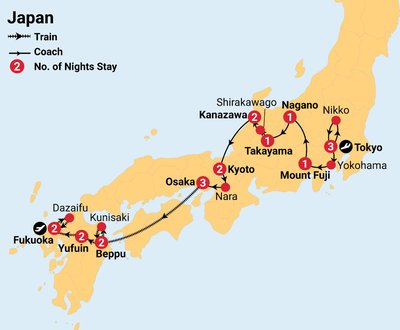
Travel with the experts for a carefully curated, value-packed discovery of the world's most iconic destinations. Our tours are bursting with must-see sights, rich experiences and quality inclusions, all at an unbeatable price. Bucket list dreams are ticked off on these all-encompassing journeys.
Day 1 Tokyo
Upon arrival into Tokyo, please make your own way to the starting point hotel.
Take the evening to relax after your flight and prepare for your first full day of touring tomorrow.
The easiest and most convenient way to travel from Haneda International Airport (HND) to Tokyo Central is by train or by monorail. The airport is also serviced by many 'Limousine Bus' services which offer shared shuttle bus service from around ¥1300 per person.
The best way to travel from Narita International Airport (NRT) to Tokyo Central is by the Narita Airport Express. The journey to most Tokyo stations takes approximately 1hr and the ticket costs ¥4070. The airport is also serviced by many 'Limousine Bus' services which offer shared shuttle buses from around ¥1300 per person.
Hotel Check-in:
Travellers will be arriving at various times throughout the day. If arriving prior to standard check-in time, which is generally 3pm local time, you are welcome to leave your luggage with hotel reception and explore your surroundings until check-in becomes available, as there are no scheduled activities on day 1 of the itinerary. The hotel may grant early check-in, however this is strictly subject to availability and at the hotel’s discretion.
Day 2 Tokyo
Our exploration of Tokyo begins with a visit to Asakusa Sensoji Temple – the oldest temple in Tokyo – famous for its huge hanging lantern at the Kaminarimon Gate (Thunder Gate). Then, we’ll explore the outer grounds of the Imperial Palace, the primary residence of the Emperor of Japan. Previously home to samurai warriors, it’s a sprawling complex with beautiful 17th century parks in the heart of the city. Built on the site of the old Edo Castle, it is surrounded by a large park, moats and massive stone walls. Come cherry blossom season, it is blanketed in a sea of pink blooms.
There is arguably no better place in Tokyo to have a fresh sushi breakfast or lunch than at the Tsukiji Outer Market. At the market, you can find processed and fresh seafood, along with culinary-related items such as specialty knives.
No trip to Tokyo is complete with a visit to the famous Shibuya Crossing – the famed icon of the district alongside the Hachiko statue.
Day 3 Tokyo Nikko Tokyo
We’ll leave Tokyo this morning after breakfast and head north to Nikko, one of Japan’s most famous mountain towns.
We’ll visit the Nikko Toshogu Shrine. Enclosed in dense forest and hailed as Japan’s most lavish shrine, it’s the final resting place of shogun Tokugawa Ieyasu. Most of the shrine complex was rebuilt in the 17th century and listed as a UNESCO World Heritage Site in 1999.
Whilst in Nikko, we visit Kinu-Tateiwa Otsuribashi and Oya History Museum, which is a museum built inside a former stone quarry. The caverns are from the Edo Period to mine Oya Stone, a soft but durable volcanic stone.
Day 4 Tokyo Yokohama Mount Fuji
Leaving Tokyo this morning we head to the national park region of Hakone. On the way we explore the Yokohama Red Brick Warehouse, a building complex that was erected a century ago as a customs house for Yokohama Port. Requisitioned by the US military after World War II, the buildings were repurposed as a cultural centre and shopping complex in 2002.
Enjoy a boat trip across the serene Ashinoko Lake, followed by taking a cable car up the mountains to the sulphur vents of Owakudani. You’ll have spectacular views, and on a clear day, you can catch a glimpse of nearby Mount Fuji.
Day 5 Mount Fuji Nagano
We’ll head to Kawaguchiko today, about a two-hour drive. Lake Kawaguchiko is the most accessible of the Fuji Five Lakes; popular sightseeing spots each offering an astonishing view of dramatic, iconic Mount Fuji. This is a great place to get back to nature.
Here we’ll visit Mountt Fuji 5th station to hopefully view the divine mountain before visiting Oishi Park on the north side of the lake. If you’re here in spring, seeing the cherry blossoms with Japan’s most famous mountain in the background really is an experience. This lake is also home to a cherry blossom festival held during the season, one of the most popular in the country. There are about 300 cherry trees on the northern shore, stretching for about a kilometre.
You’ll see the lakeside trail along the eastern shore of the lake that boasts many weeping cherry trees. There will be time for lunch.
Continue onto Nagano for the night, home of the 1998 Winter Olympics.
Day 6 Nagano Takayama
After breakfast, we will head to Hokusai Museum to discover the great artworks of Katsuhika Hokusai (1760-1849), one of Japan's leading Edo period ukiyo-e painters.
We’ll drive to the traditional city of Takayama today, still home to many Edo-period buildings.
For a taste of authentic, old Japan, we’ll enjoy a tour of Takayama old town, nestled in the Hida mountains. This city still retains a traditional feel, especially in its beautifully preserved old town (Sanmachi Suji). Here you’ll find quaint, old latticed wooden buildings and Sannomachi Street, with pretty homes, restaurants and sake breweries. We’ll see the Takayama Jin’ya, the former government headquarters under the Tokugawa Shogunate from 1692-1871.
Day 7 Takayama Shirakawa-gō Kanazawa
After breakfast we’ll travel to Shirakawa-gō Village, a UNESCO World Heritage Site that has more than 100 'Gassho-style' houses, which feature steeply-pitched roofs. Built many hundreds of years ago, these historic houses stand together in a beautiful natural setting. From the site’s observation deck you can enjoy a panoramic view of this unique village, its thatched-roof houses sitting among gorgeous mountain scenery.
Day 8 Kanazawa
Today we will explore the castle town of Kanazawa. First up is a visit to Omicho Market, where you can try some local favourites, such as fresh seafood and gold leaf ice cream.
Next, we visit Kenrokuen Garden. This is one of Japan's three best landscape gardens, and is considered the most beautiful of them all.
Finish up your day by taking a stroll down the streets of Higashi Chaya, a geisha district in Kanazawa known for its quaint old buildings and teahouses.
Day 9 Kanazawa Kyoto
Echizen Washi Village is located in the Imadate area, it is steeped in paper-washi making history dating back 1500 years. ‘Washi’ is a traditional Japanese paper.
There are over 60 paper mills in Echizen which you will be able to walk around and visit whilst here.
After your visit, we will continue to Kyoto.
Day 10 Kyoto
Today we’ll visit some of Kyoto’s most iconic sites, like the Kinkakuji (Golden Pavilion). This is a Zen temple and UNESCO World Heritage Site, with two floors covered entirely in thin layers of pure gold, set within a beautiful classical Zen garden.
Afterwards, we continue to the Arashiyama Bamboo Grove for an enchanting walk through the towering bamboo forest.
This afternoon is spent at your leisure – perhaps selecting one of the optional activities on offer in Kyoto.
Learn the secrets of Sado, the Japanese tea ceremony, from a qualified tea instructor.
Tea Ceremony The Japanese tea ceremony (known as sado or chado in Japanese) is a Japanese tradition that has become an art form. More than just about preparing and drinking tea, it is a formal way for a guest to enjoy a host's hospitality, far removed from the hustle and bustle of everyday life.
Itinerary Today enjoy your tea ceremony experience in the heart of Kyoto. Make your own way to the venue and enjoy this unique traditional Japanese experience.
The Japanese tea ceremony is a traditional ritual influenced by the principles of Zen Buddhism in which powdered green tea, or matcha, is prepared and served by a host in a quiet setting.
Enjoy tasting traditional Japanese confectionary with your green tea.
Start time: approx 3:00pm.
- Traditional Japanese Tea Ceremony
- Qualified tea instructor
- Taste Japanese traditional confectionary
- Transportation to the activity is not included and must be self-arranged
- Personal expenses and anything not stated
Kimonos are a traditional Japanese garment that were first introduced in Japan in the Heian period. You will be able to rent a Kimono and walk around the traditional streets of Kyoto to take iconic photos. Your guide will be able to provide you with directions to the venue.
Start time: approx 2:00pm. Duration: 45mins to 1 hour
Day 11 Kyoto Nara Osaka
After breakfast we’ll leave for a day tour of some of Japan’s icons before continuing onto historic Nara, ancient capital of Japan.
Our first stop in Kyoto is Fushimi Inari Taisha, one of the most iconic sights in Japan with its thousands of red Shinto shrine gates. We spend time here strolling through the gates and visiting the various shrines and temples.
No trip to Japan is complete without sampling the local tipple – sake. An expert will take you through the distilling process, flavours, styles and history of the beverage, before you will be able to sample some for yourself.
Next, we’ll visit Todaiji Temple, one of the oldest Buddhist temples in Japan and home to the country’s largest Buddha statue. We’ll then see Kasuga Shrine, featuring over 3000 stone and bronze lanterns.
Our last stop is at Nara Park, one of the oldest parks in Japan, to see over one thousand tame deer roaming freely in this vast, tranquil space.
The day will conclude, overnighting in Osaka.
Day 12 Osaka
Today is all about visiting one of Japan’s most famous landmarks, Osaka Castle.
Built in 1583 as a centre of a new, unified Japan, Osaka Castle is a wonderfully preserved example of Japanese architecture. We then continue to our centrally-located hotel in Osaka for a night at leisure.
You may wish to head out to experience the famous Osaka nightlife in the Dōtonbori area – one of the city's most popular tourist destinations, Dōtonbori Street runs parallel to the eponymous canal. It’s a popular shopping and entertainment district and an area famed for its street food and plentiful restaurants. At night the streets here are illuminated by hundreds of colourful neon lights and mechanised signs, including the famous running Glico Man sign and the Kani Doraku crab sign.
Day 13 Osaka
Today is spent at your leisure.
There are two optional activities which you can participate in, otherwise, feel free to pick your Tour Leader’s brain for some alternative ideas around/in the city:
Explore old backstreets, markets, and retail areas seldom seen by most tourists; discover the New York-inspired neighbourhood of Shinsekai and see what ghosts still linger in the streets. Wander through the flashy, glittering, famed district of Dotonbori and sample famous Osaka treats like kushi-katsu and takoyaki octopus balls; plus find out why Osaka is considered the heart and soul of the Kansai region. Start time: 5pm Finishing time: approx 8.30pm (This tour cannot operate on the same day as Hiroshima Day Tour. If you are wanting to do both tours, the Osaka Food Tour will operate the evening prior.)
Ride the shinkansen bullet train to Hiroshima today. On arrival, join your guide on a visit to the Hiroshima Peace Memorial Park and the Atomic Bomb Dome, before taking a cruise to Itsukushima Shrine on Miyajima Island, best known for its floating torii gate. Afterwards, return to Osaka via bullet train. Start time: 9am Finishing time: approx 8pm (This tour cannot operate on the same day as Osaka Food Tour. If you are wanting to do both tours, the Osaka Food Tour will operate the evening prior.)
Day 14 Osaka Beppu
This morning, make your own way to Osaka train station to board your bullet train to Beppu. On arrival in Beppu, make your own way to your centrally located hotel. The rest of the day is at your leisure to explore the local area or relax in your hotel.
Please note: The rest of the tour is unescorted. You will be met by local guides for your included sightseeing and provided with detailed itinerary instructions with your documentation.
Day 15 Beppu Kunisaki Beppu
After breakfast, you will be met by your local guide for a guided day tour of Kunisaki. Visit Usa Jingu, a famous Shinto shrine dedicated to Hachiman, the god of war. Then, visit Fukiji, a beautiful temple with a unique thatched roof and serene surroundings. Next, Maki Odo, another temple, is known for its ancient stone Buddha statues and historic architecture. Visit Kumano Magaibutsu, a Buddhist temple with large carvings of Buddha and other deities set into the rock face. Finally, visit Futagoji, a temple with stunning views over the surrounding countryside. Return to Beppu in the afternoon for time at leisure.
Day 16 Beppu Yufuin
Start the day with a half-day guided tour of Beppu, including a visit to the famous "Hells of Beppu," a group of geothermal hot springs and bubbling mud pools. You might like to try some Jigoku Mushi, a traditional way of cooking using the heat from the hot springs. In the afternoon, take a 1.5-hour train ride to Yufuin. Check into your traditional ryokan, the Yufuin Iyotomi, and enjoy dinner at the hotel. This evening, you might wish to experience the onsen at your ryokan.
Day 17 Yufuin
Spend the day at your leisure in Yufuin, a charming town known for its hot springs and beautiful scenery. You may want to consider an optional half-day tour of the town, which includes a visit to Lake Kinrin, a picturesque lake with a natural hot spring, and a local craft village. Alternatively, try a rickshaw tour of the town. In the evening, enjoy another traditional Japanese meal at your ryokan.
Day 18 Yufuin Fukuoka
After breakfast, take a 2.5-hour train ride to Fukuoka. Check into your hotel and spend the rest of the day at your leisure exploring the city or relaxing in your hotel. Fukuoka, Kyushu’s largest city, is a haven for food-lovers and the Hakata ramen is a dish not to be missed. Fukuoka is a laid-back and friendly city and is easy to explore with your Japan Rail pass.
Day 19 Fukuoka Dazaifu Fukuoka
Enjoy a guided day tour of Dazaifu, a historic town just outside Fukuoka. Visit Dazaifu Tenmangu, a famous Shinto shrine dedicated to the god of learning and scholarship, and the nearby Kyushu National Museum, which showcases the history and culture of the region. After Dazaifu, embark on a river cruise on the Yanagawa River, where you can enjoy a boat trip accompanied by the Funauta boatman's song, while taking in the beautiful scenery of each season.
Your return train ticket to Dazaifu is included.
Back in Fukuoka, spend your last evening in Japan at leisure. We recommend dining at a yatai, temporary restaurants that spring up and serve all kinds of delicious and inexpensive food options.
Day 20 Fukuoka
Today marks the end of your incredible tour through Japan. At the appropriate time, make your own way to Fukuoka Airport or your next destination using your Japan Rail Pass.
What’s Included
- Incredible sightseeing, including Japan’s beautiful shrines, gardens and temples, charming Shirakawa-go and Takayama Old Town, Kyoto’s ancient World Heritage Sites and Kyushu’s highlights including the Hells of Beppu
- 17 nights in comfortable 3-star accommodation
- 2 nights in traditional Japanese onsen ryokans
- Breakfast daily and 2 dinners
- Travel on the shinkansen bullet train with your 7 Day Japan Rail Pass
- Scenic cruise on Lake Ashi with spectacular views of Mount Fuji
- Escorted by a professional English-speaking tour guide (Day 1 to 14)
- Independent touring with local guides in Kyushu (Day 14 to 20)
- Comfortable, dedicated transportation throughout
- In-depth sightseeing and entrance fees as per the itinerary
Sightseeing Highlights
- Tokyo – Enjoy the buzz and energy of one of the world’s great cities
- Tokyo – Visit Tsukiji Outer Market, a haven for foodies
- Tokyo – Visit Asakusa Sensoji temple – the oldest temple in Tokyo – famous for its huge hanging lantern at the Kaminarimon gate (Thunder Gate)
- Tokyo – Join the scramble across Shibuya Crossing, the world’s busiest pedestrian crossing
- Hakone – Cruise serene Lake Ashi with views of Mt Fuji
- Nikko – Marvel at UNESCO World Heritage Sites including Toshogu Shrine
- Nikko – Walk across the Kinu-Tateiwa Otsuribashi suspension bridge
- Nikko – Visit the underground Oya History Museum, housed in a massive former stone quarry
- Yokohama – Spend time wandering the shops and restaurants at the Yokohama Red Brick Warehouse
- Mount Fuji – Savour the views from halfway up this iconic mountain at the 5th Station (weather permitting)
- Nagano – Discover the works of one of Japan’s most revered artists at the Hokusai Museum
- Takayama – Experience the rustic charm of this quaint city with a walk through its beautifully preserved old town
- Shirakawa-go – Admire more than 100 traditional thatched houses in this historical alpine village
- Kanazawa – Visit celebrated Kenrokuen Garden, ranked as one of Japan’s top three gardens
- Kanazawa – Step back in time in the Higashi Chaya district, where geisha still live and perform today
- Kyoto – See this ancient capital’s most famous temples and shrines – Kinkakuji (Golden Pavilion) and Fushimi Inari
- Kyoto – Revel in the lush, peaceful green splendour of Arashiyama Bamboo Grove
- Kyoto – Enjoy a sake tasting in one of Japan’s premier sake producing regions
- Nara – Wander through Nara Park with over 1,200 freely roaming Sika deer
- Nara – Discover Todaiji Temple and its great Buddha
- Osaka – Visit the expansive grounds of Osaka Castle, a grand monument of feudal Japan
- Osaka – Stroll through the lively, colourful Dōtonbori area
- Beppu – Tour the Hells of Beppu, a stunning series of hot springs and bubbling mud pools
- Kunisaki – Explore the Kunisaki Peninsula’s stunning natural scenery and historic temples
- Dazaifu – Discover the history of Kyushu during your half-day guided tour
- Fukuoka – Spend time at leisure in this laid-back city famous for its culinary scene
Payment Terms
Secure your trip with a $99.00 deposit per person. Once we receive your deposit, we will send you an invoice with your remaining balance and payment options. Instalment Schedule:
- At the time of booking pay a $99.00 deposit per person.
- Pay a 1st installment of $566.00 per person within 28 days.
- Pay a 2nd installment of $1,132.00 per person within 90 days.
- You will then be invoiced for final payment 120 days prior to departure.
Visa & Passport
It is the traveller's responsibility to ensure they have a valid passport. The passport must be valid for a minimum of six months from the intended date of return. Visas may be required for your destination. For further visa information, click here .
Flight Information & Booking Options
This is a land only package.
This package does not include international airfares. If you would like to add airfares to your booking our flight portal will be available via your Traveller Hub. The flight portal will allow you to search for all available airfares to your destination. The function works like most general flight search engines allowing you to select your preferred airline, book different cabin classes (eg. Business class) and view flight durations and transit times to your destination.
The flight portal will be available via your Traveller Hub once the following criteria has been met:
- Your booking is confirmed
- Your departure date is within 11 months
- You have completed your passenger detail form
Visit our Flight Hub for more information on terms and conditions, amending your flights and information on luggage allowances.
Important Information
Fitness Requirements While the tour itinerary should give you some guidance and overview to the expected requirements, to determine if this tour is right for you we categorise each of our tours in terms of their intensity. These guidelines are to ensure that each tour group is conducted as expected and to ensure the overall satisfaction of all Inspiring Vacations customers.
As a general rule, porterage is not included, therefore at all times you are expected to handle your own luggage where help may not be available.
This particular tour is categorised as a”3”
Moderate Tour : A good level of fitness and mobility is required, as this tour includes a moderate level of physical activity and is considered a medium-fast paced tour. You should be able to walk up and down stairs, get on and off the coach and able to walk reasonable distances of approximately 2 kilometres per day or more with ease. Any physical ailments you may have must be disclosed at the time of booking to determine your suitability. If you have any form of walking aids, other than a walking stick or hiking poles, then this tour is not suitable.
Tipping A friendly reminder that tipping is not included in your package. While tipping is not customary, it's of great significance to the people who will take care of you during your travels, inspires excellent service, and is an entrenched feature of the tourism industry across many destinations. You may also consider tipping your tour leader and driver for outstanding service throughout your trip. Suggested amount for your guide, 500Y per person per day. Remember, a tip is not compulsory and should only be given when you receive excellent service.
Accommodation The accommodation listed is subject to change. Any changes will be of an equal or higher standard. Bedding configurations (double or twin) are requests only. All efforts will be made to meet your preferences, however, any changes are beyond our control.
Twin Share Bedding Configuration At any time, bedding configuration is subject to confirmation by the hotel and based on availability. While you have the option to select either twin or double bedding at time of booking, our recommendation when travelling to Japan is to choose twin bedding, as the rooms are often bigger than those that have a double bed. If insisting on double bedding, please note that the rooms will be smaller and more narrow. As a general expectation, we cannot always guarantee bedding at all hotel stays.
Single Supplement Single supplement is $1,533.00 per person, in addition to the twin-share price.
Please note when choosing Single Supplement for this deal that you will receive a single room, which is smaller in size than a twin/double room. Unfortunately this is typical for Japan, as the cost to solely occupy a double/twin size room is incredibly high. We appreciate your understanding.
Triple Share Not available.
Travel Insurance Travel insurance is compulsory for this tour to protect yourself against the unexpected. In addition to the support that a policy may provide, you may be asked to present a copy of your travel insurance documentation while traveling.
Group Size 20-40 people
Children Children must be 5 years old or above and share a room with parents at all times. Children are charged the same price as adults.
Tour Style To meet the needs of various types of travelers, we choose to operate various types of tours, and depending on your selected package will mean different services are provided throughout your trip. The following descriptions of each tour style we hope will ensure that each traveller has appropriate expectations before they start their travels:
- Partially Escorted - A portion of these packages runs as a group tour where you will be escorted by an expert tour leader. Another portion is independent, whether conducted by rail, cruise or land, and you will travel between destinations on your own, with free time to explore at your own pace.
Cherry Blossoms Please note: cherry blossoms are weather dependent and it is not guaranteed that they will be in bloom at the time of your arrival.
Health & Mobility Requirements
All participants must be in good physical condition to fully engage in this journey. For the safety and welfare of yourself and fellow travellers, if you are feeling unwell prior to departure, we advise staying home and contacting us to arrange alternate plans.
Prior to selecting your trip, carefully review the itinerary to assess your ability to comfortably manage our travel style. Please be aware that if, based on evaluation by our leader or local representative, a participant is deemed unable to safely complete the itinerary, we retain the right to exclude them from all or part of the trip without reimbursement.
It is advisable to consult your physician for current medical travel advisories and any required vaccinations before embarking. We recommend carrying a first aid kit and any necessary medications in their original packaging, as they may not be readily available during travel. For those carrying medication, it's essential to check your government's foreign travel guidelines for local restrictions or regulations.
Optional Tours
To enhance your journey, we are offering guests a choice of the following optional activities (prices are per person):
- Kyoto Tea Ceremony (Day 10) - $77 per person
- Kimono Fitting - Kyoto (Day 10) - $128 per person
- Osaka Food Tour (Day 13) - $119 per person
- Hiroshima Day Tour (Day 13) - $417 per person
Optional tours can be selected once you have finalised your tour purchase and paid your deposit. When completing your Passenger Booking Form, you will be asked if you would like to add Optional Tours, where any applicable cost will be added to your final balance. If you choose not to select them at this time, you can choose to add them later by logging in to your Account online.
Please note that you must select your Optional Tours no later than 70 days before departure, after which you will be required to purchase them on tour. Please keep in mind that anything purchased on-tour is subject to availability and prices may vary as you will be paying in local currency. We appreciate your understanding.
Please note that transportation to and from each optional tour is not included in the price. You will be required to make your own way to the starting point of the optional tour, as well as back to your hotel. Your tour guide can provide you with the direction and guidance needed to make your own way.
Pre and Post-Tour Accommodation & Extra Services
You can enhance your holiday by arriving or departing before or after the tour. On this tour you can choose from the following options:
Pre Tour Accommodation
- $204.00 per room, per night for double and twin share
- $341.00 per room, per night for solo travellers
Post Tour Accommodation
Please select the number of extra nights required in the 'Additional Nights Accommodation' field when making your purchase. The additional cost for these arrangements will be added to your final payment invoice and are subject to availability.
- International airfares
- Airport Transfers
- Travel insurance (compulsory)
- Optional activities
- Personal expenses
- Anything not mentioned in the itinerary
What Climate To Expect
Click HERE for more information on weather in Japan
Departure Dates for 20 Day Spectacular Japan And Kyushu
Choose your departure month
Were you looking for another departure date?
Enter your email to be notified when new dates are released
You might also like
13 day cherry blossoms of japan, 14 day japan winter wonderland small group tour, experiences.
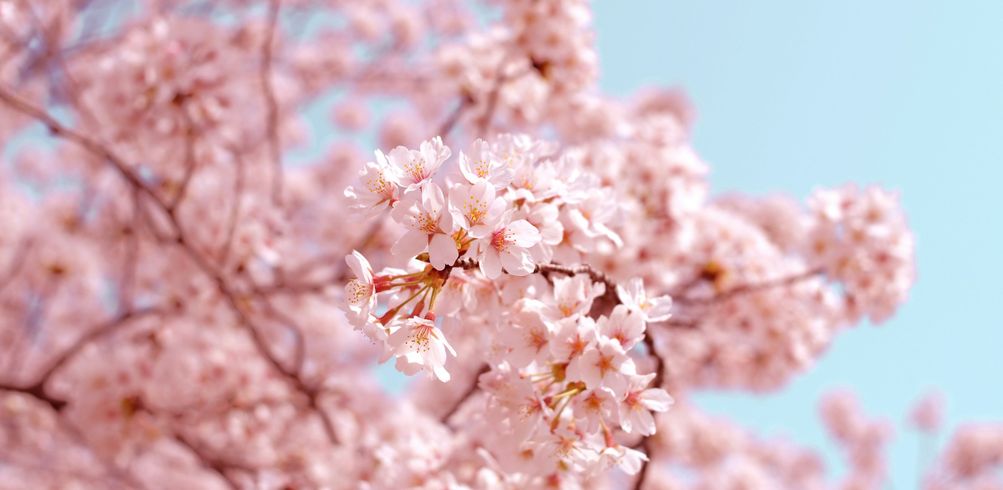
Five of the Best: Tokyo parks to see cherry blossoms

Customers on Tour: Nicole and Charlie on Inspiring Japan
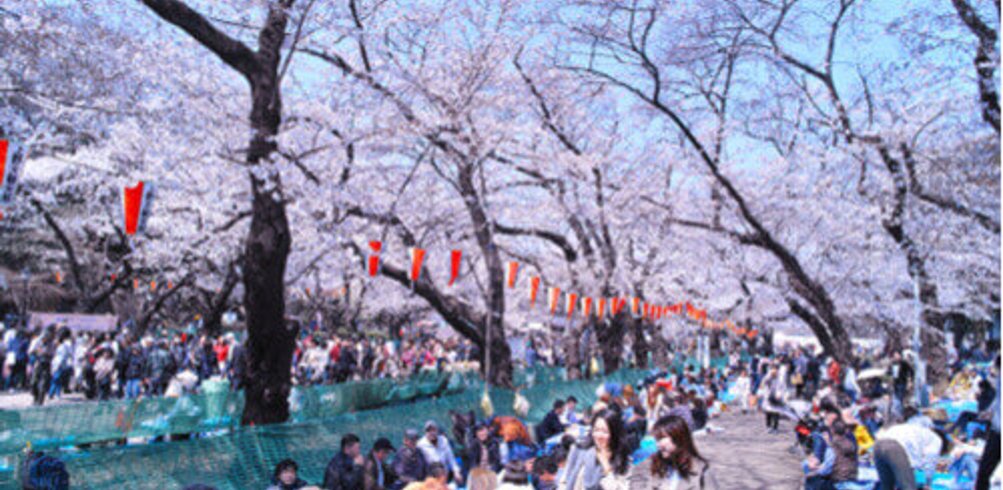
Customers on Tour: Unforgettable Japan
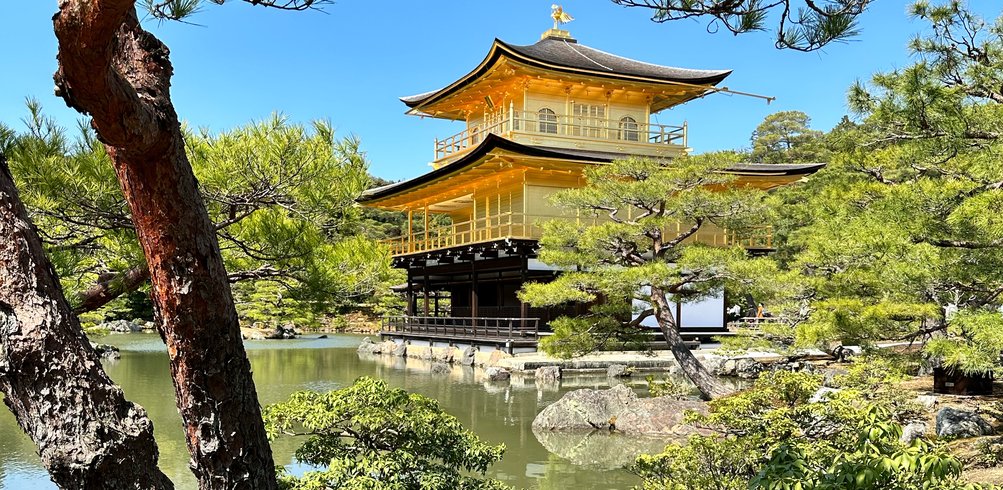
Customers on Tour: Rebecca and Leanne on Inspiring Japan
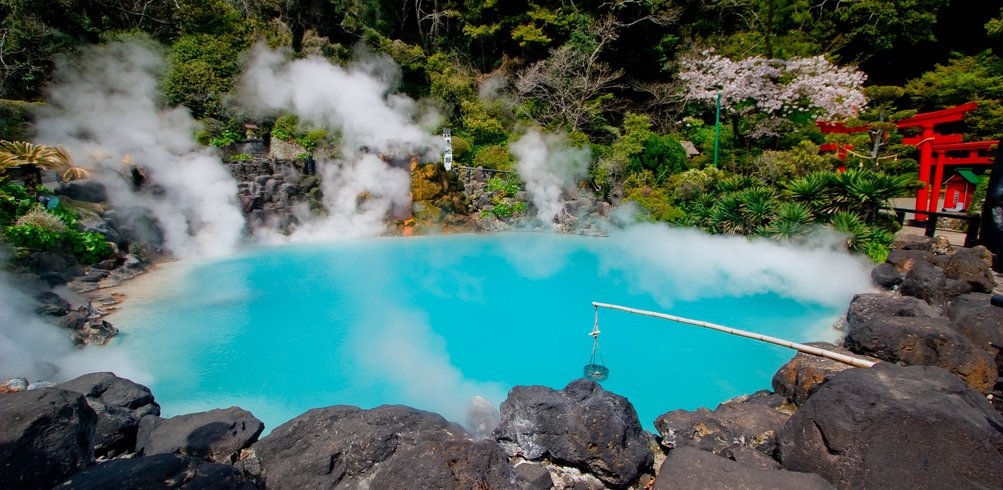
Spotlight: Oita
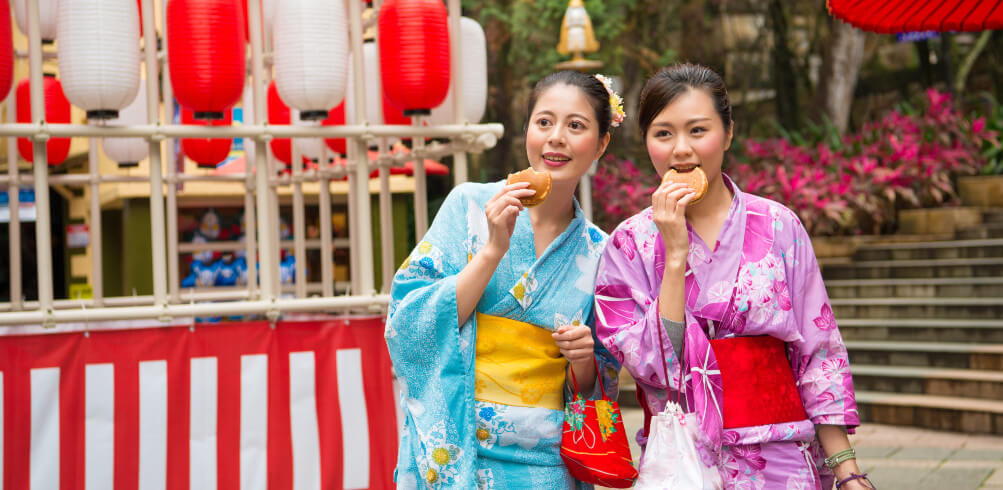
Know Before You Go: Japan
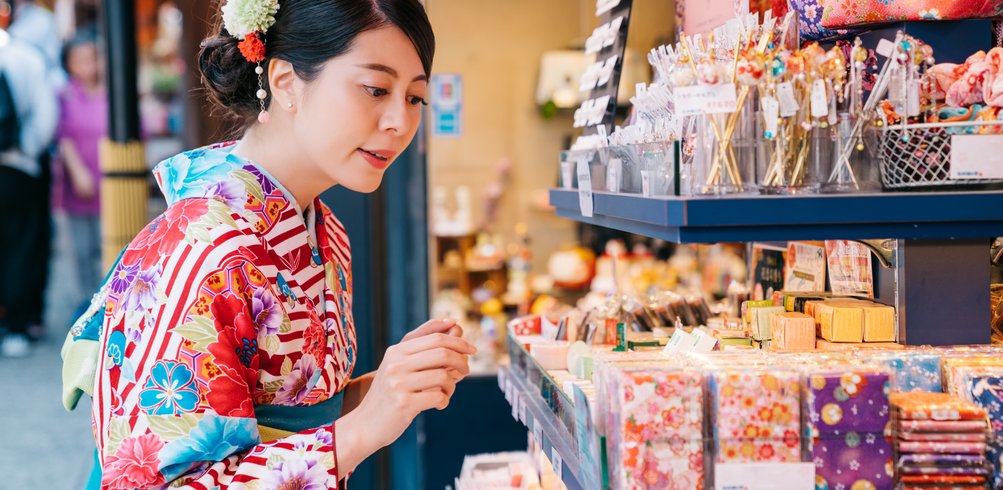
How to spend a free afternoon in Kyoto
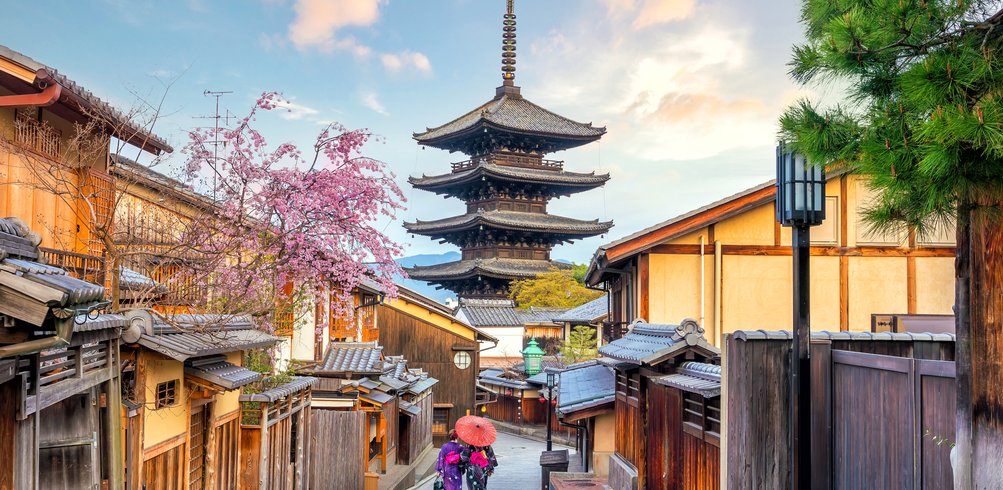
Staff On Tour: Japan

Customers On Tour: Unforgettable Japan
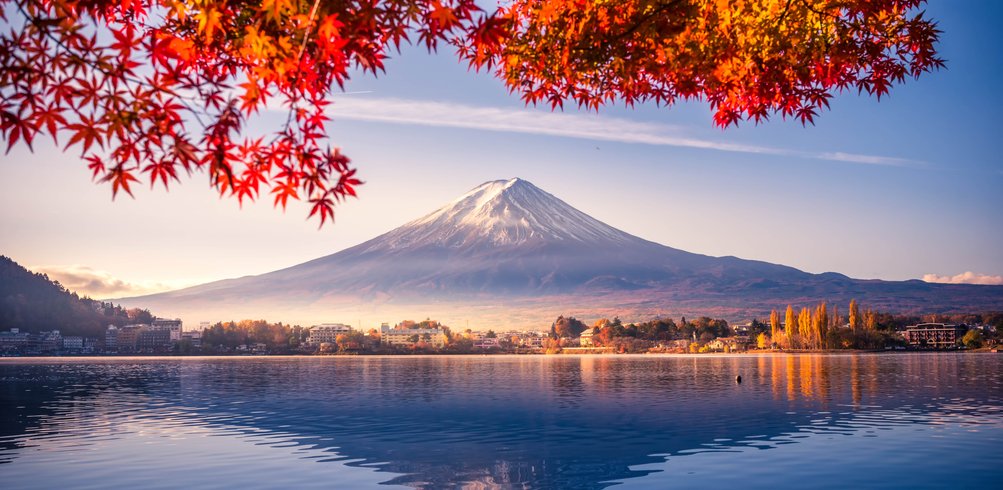
Best places to see Mount Fuji
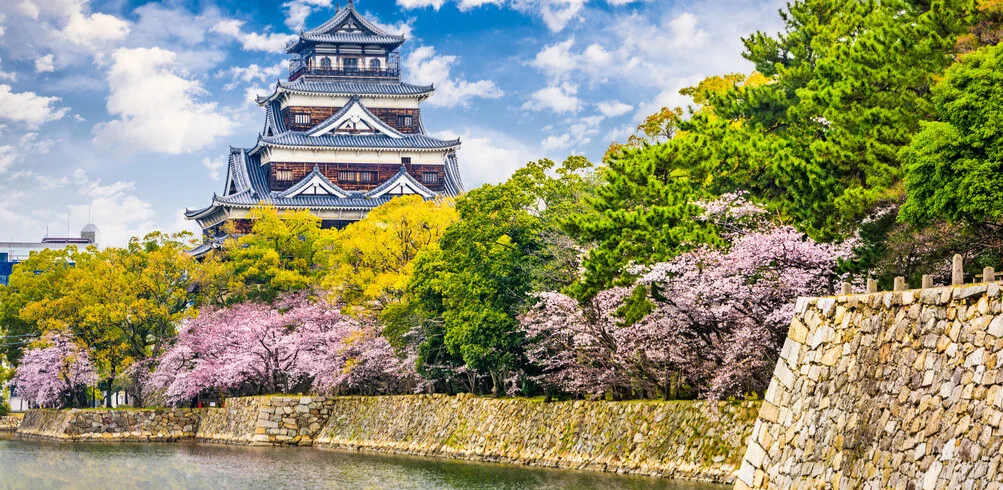
Snapshot: Hiroshima
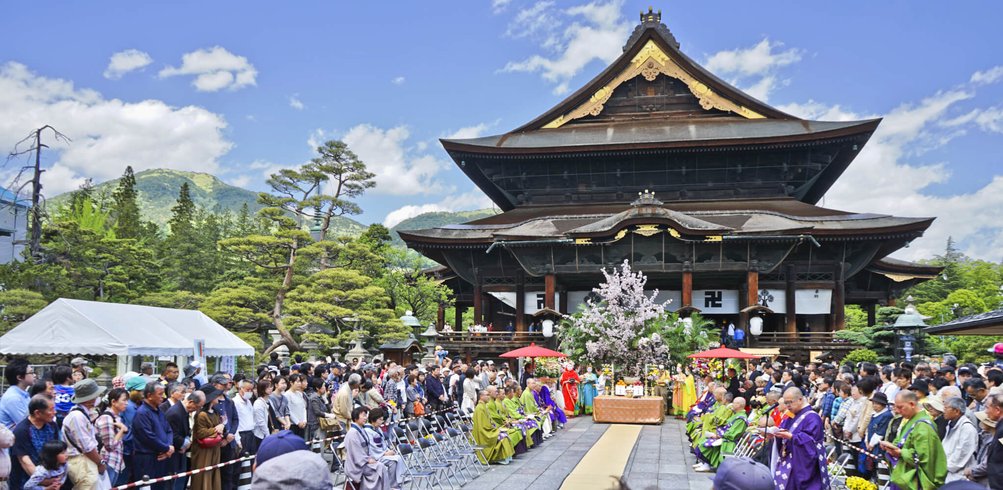
Snapshot: Nagano
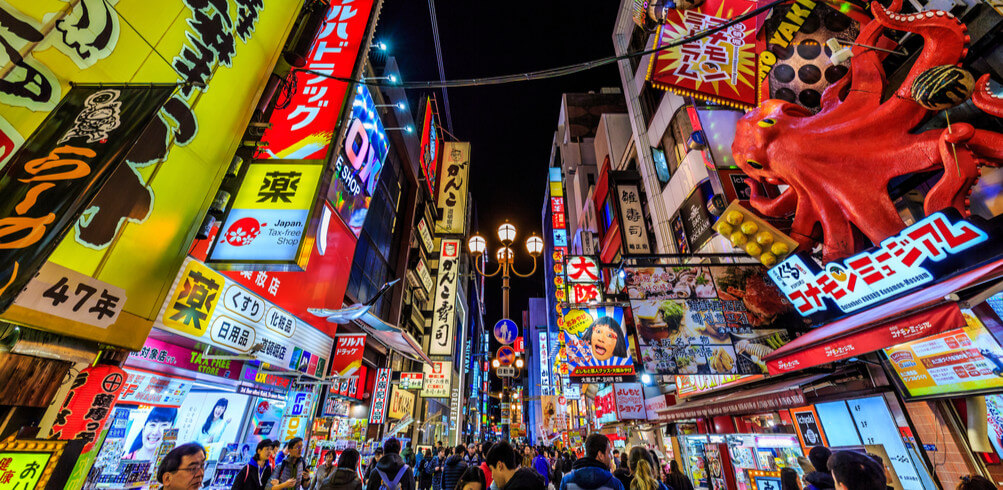
Snapshot: Osaka
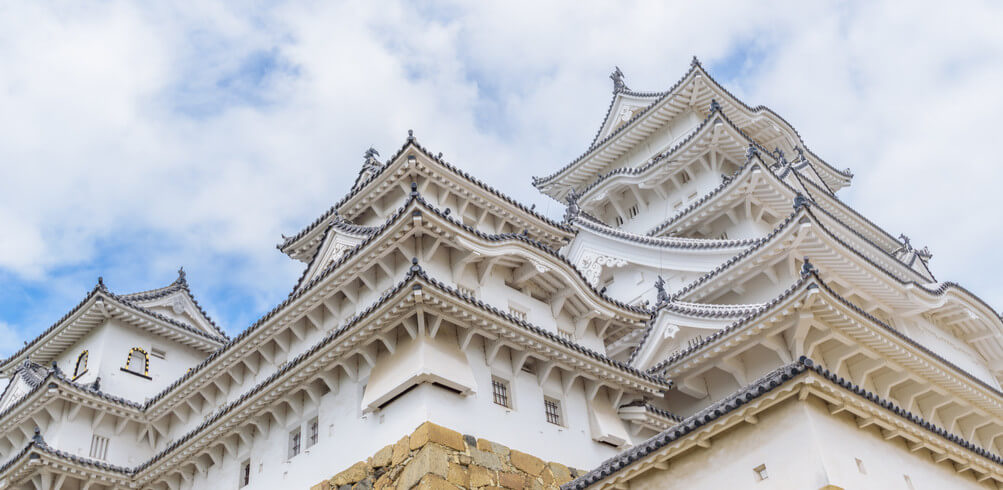
Snapshot: Himeji Castle
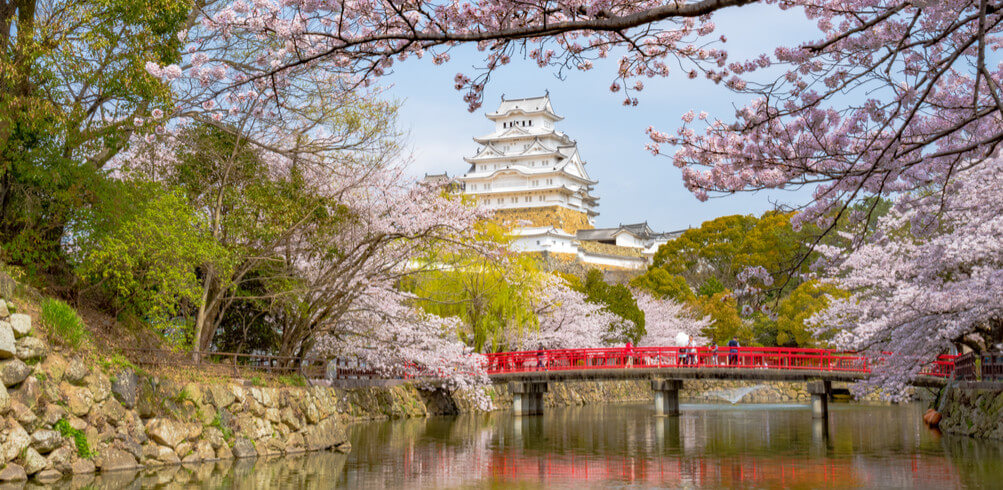
Five of the Best: Japanese castles

Snapshot: Kushiro
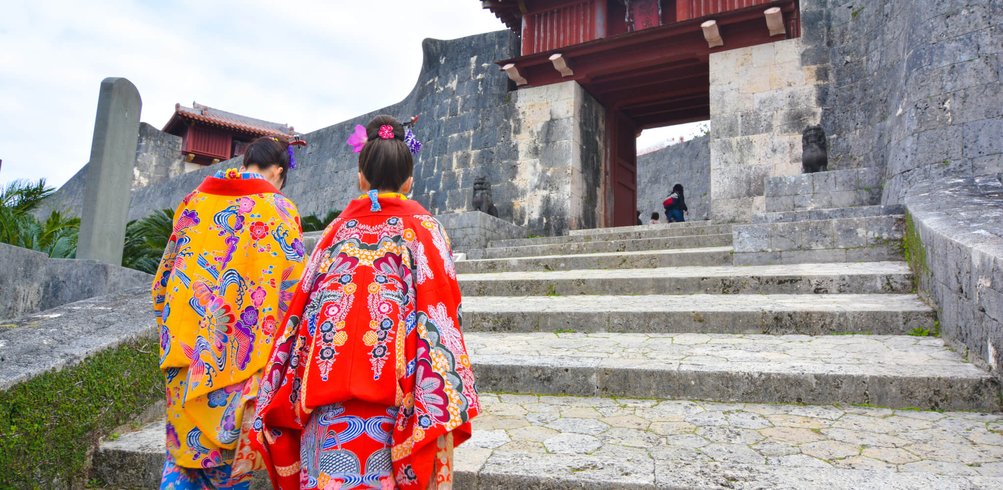
Snapshot: Okinawa Islands
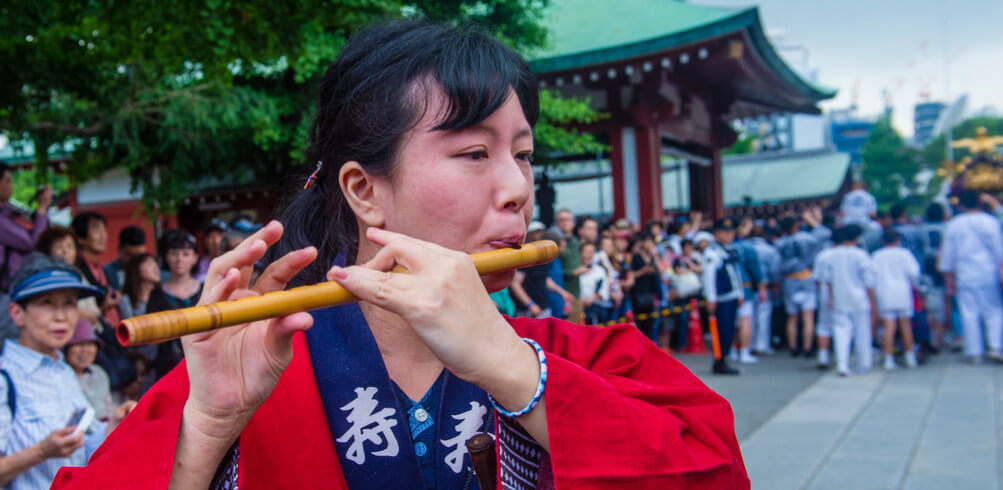
Snapshot: Kanda Matsuri
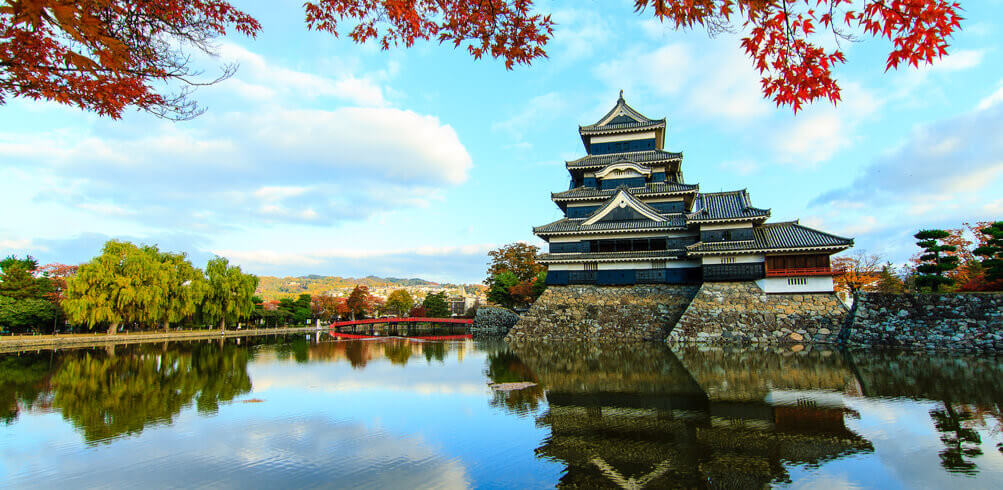
Snapshot: Scenic Central Honshu
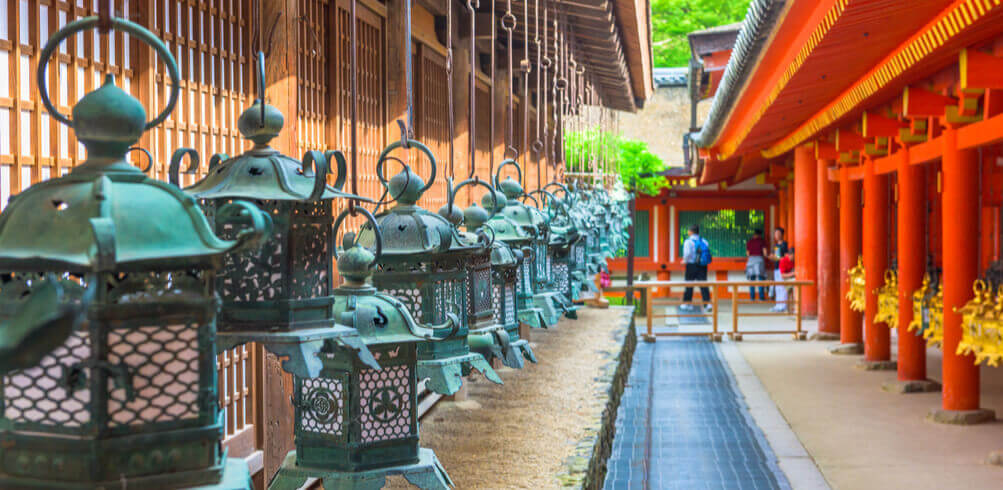
Snapshot: Nara
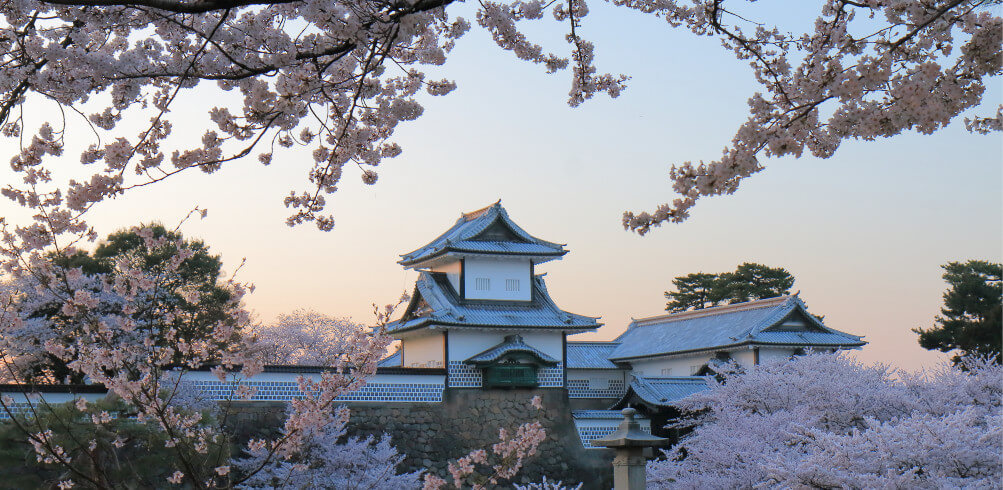
Snapshot: Kanazawa and Shirakawa-go

Snapshot: Fushimi Inari
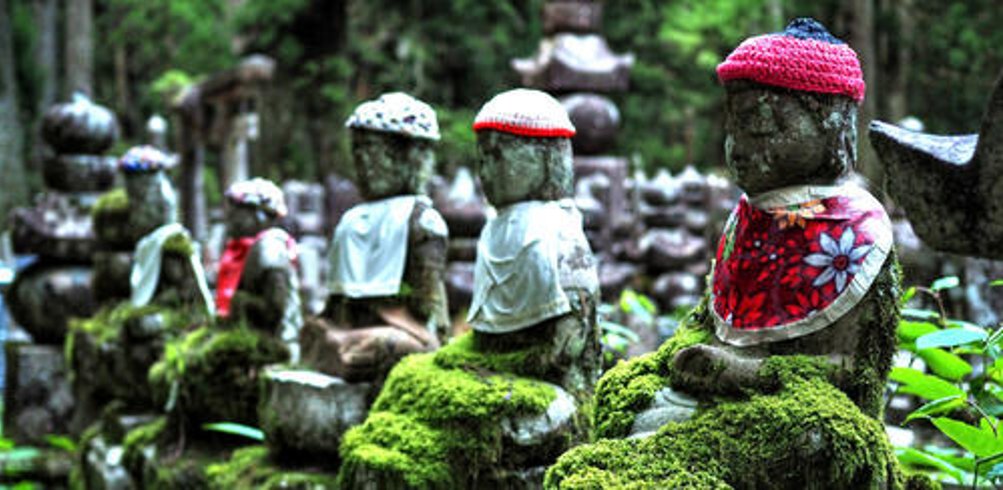
Snapshot: Mount Koya
Five of the best: japanese desserts.
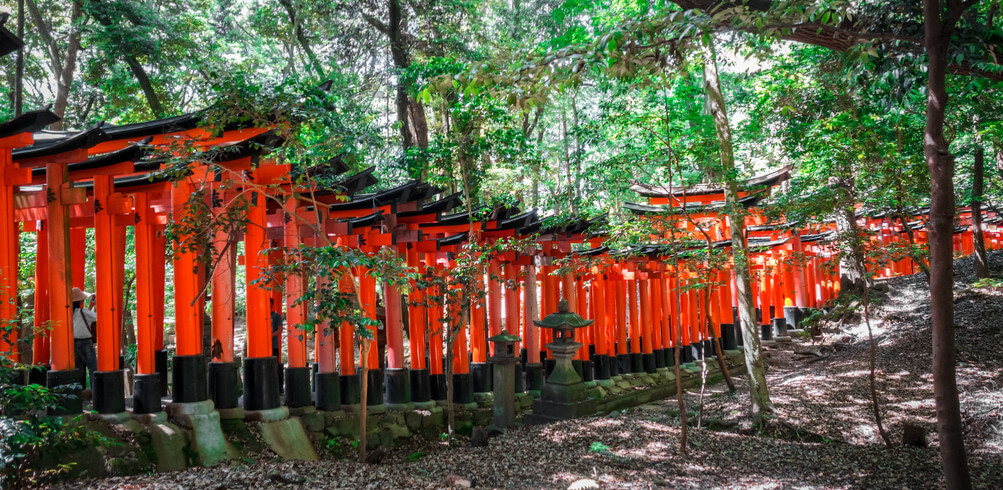
Snapshot: Kyoto

Five of the Best: Tokyo’s top sights
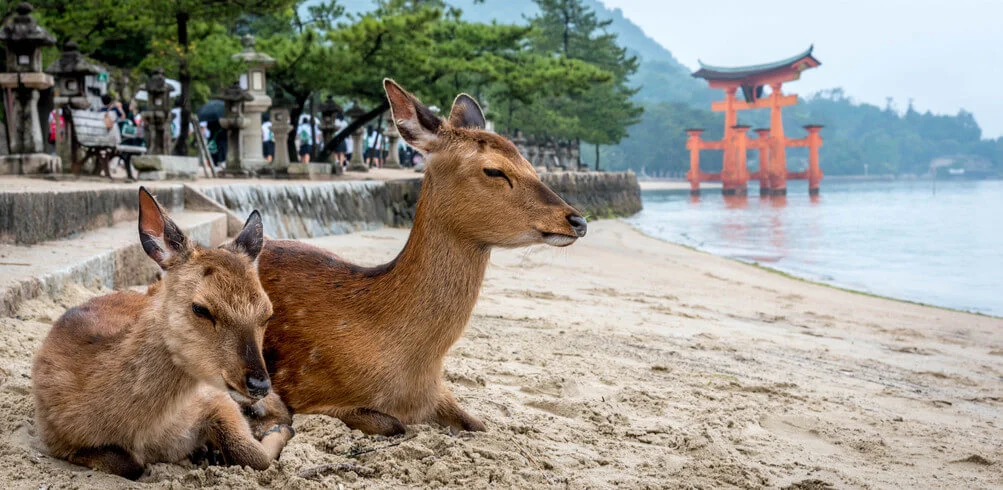
Snapshot: Miyajima Island

Snapshot: Tokyo

Snapshot: Nagasaki
Latest insights.
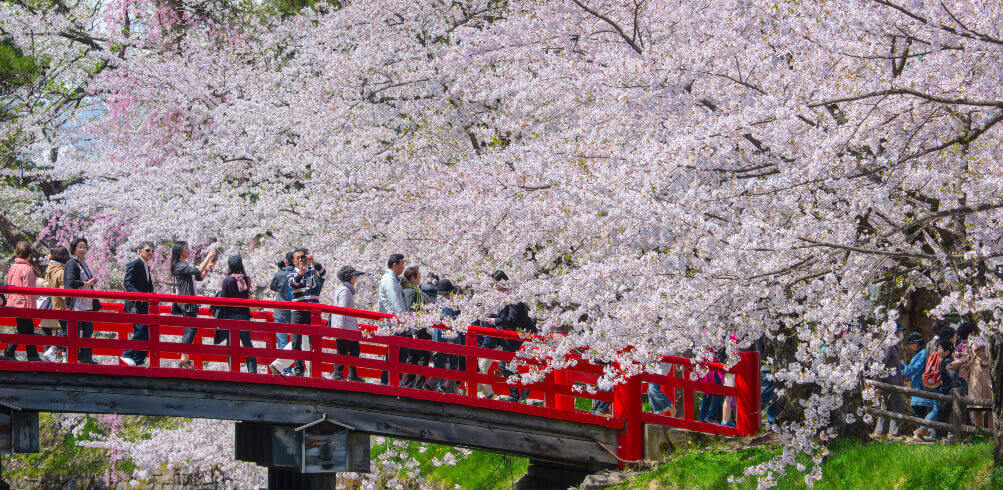
Everything you need to know about: Hanami
19 Mar 2024
The act of viewing flowers in bloom is a sacred Japanese past time that dates back centuries What is hanami? The term hanami is a combination of two words: hana meaning flowers and mi meaning viewing. While it sounds like a vague expression, the term has become synonymous with the annual flowering of cherry blossom t...

Guide to cherry blossom season in Japan
From March to April every year, millions head to Japan to see their famed cherry trees shower the landscape in pink and white petals The annual blooming of sakura (cherry blossom) trees in Japan is a sacred occurrence that has been celebrated for over 1,000 years. While its origins are somewhat disputed, with some so...

Blooming beauties: a seasonal guide to Japan’s flowers
From cherry blossoms to sunflowers and hydrangeas, Japan is a country in bloom The change of the seasons and the floral displays they bring are celebrated across Japan. From the keenly anticipated cherry and plum blossoms to the cheery sunflower, flowers hold a special place in Japanese society. There is even an anci...

15 places to see Japan's autumn leaves
17 Aug 2023
Where to experience the prettiest landscapes in Japan during the autumn foliage season Japan might be all about cherry blossom season, but once September hits, summer is farewelled and the focus shifts towards welcoming autumn and koyo zensen or tracking the progress of the leaves turning red. Much like the pink bloomi...
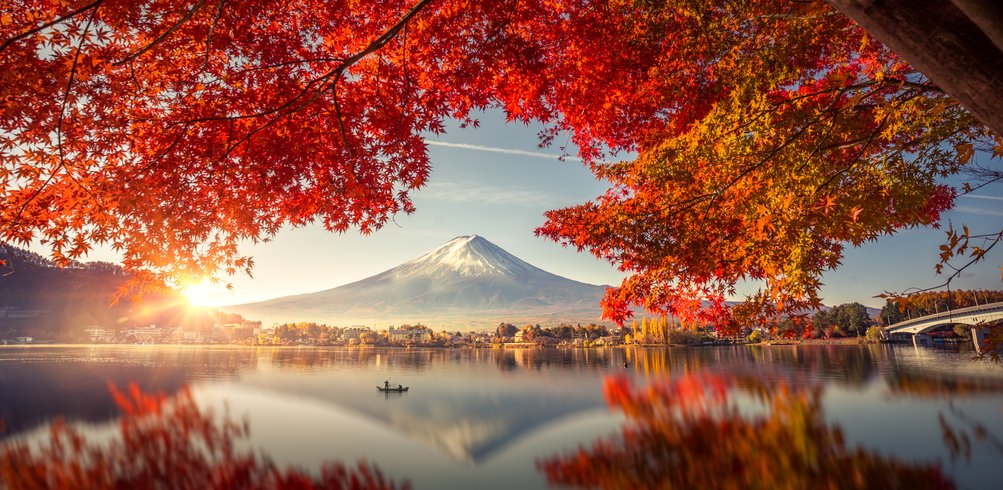
Fall in love with Japan in autumn
24 Feb 2023
From September to December every year, Japan's temples and ancient shrines are transformed by seas of crimson foliage After months of steamy weather, an epic transformation begins across Japan. Trees change seemingly overnight from green to red, orange and yellow, turning the landscape into an artist's palette of autum...
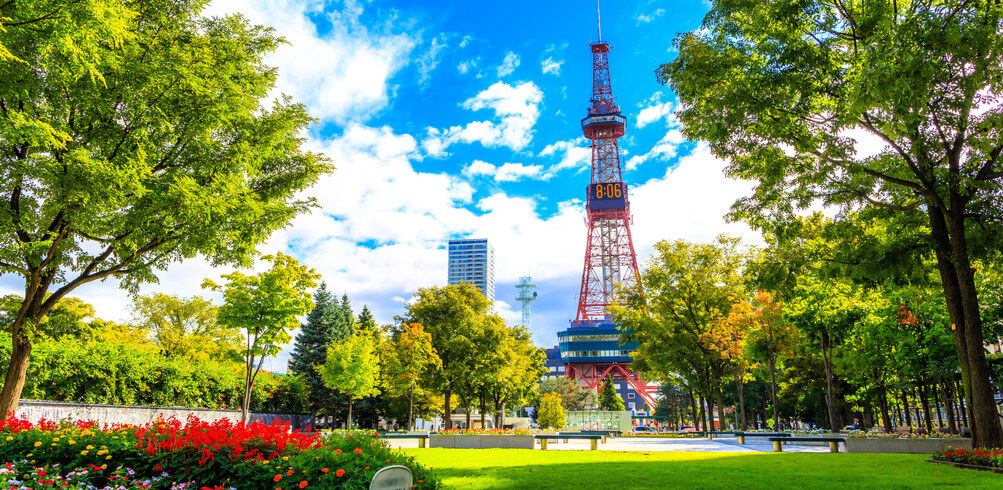
When is the best time to visit Japan
30 Jun 2021
Japan is one of East Asia's most beloved countries, with a cherished ancient culture and exquisite sights. But, when is the best time to go? Japan is an island country full of contrasts. From ultra-sleek modern cities, to soaring alps, traditional villages and ancient shrines. And with four distinct seasons that e...

Things to love about a Japanese winter
A country that charms in any season, you’ll find winter delights aplenty in this wonderland Japan really is a country for all seasons. Tourists have already cottoned onto the renowned beauty of sakura (cherry blossoms) in spring and the rich foliage of autumn, but winter brings a crisp, festive prettiness. Think snow-c...

Everything you need to know about: Sapporo Snow Festival
Deep into Japanese snow season, the northern city of Sapporo hosts the country’s largest winter festival Japan has long been considered a leading winter destination, thanks to its powdery slopes and heavy snowfall. From February 4-11, 2024, the Sapporo Yuki Matsuri (Snow Festival) turns the capital of Hokkaido into a f...
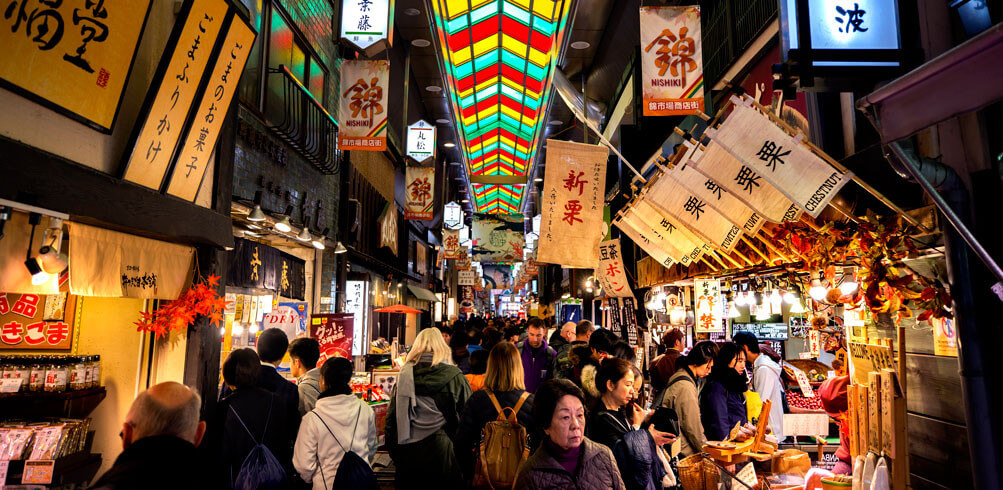
A first timer's guide to Japan
From sights to scenery and five-star fare, Japan is the ultimate Asian all-rounder Japan is undoubtedly one of the hottest destinations in the world right now, and for good reason. This geographically blessed country is spectacular year-round, easy to navigate and packed with ancient sights. In between attractions, d...
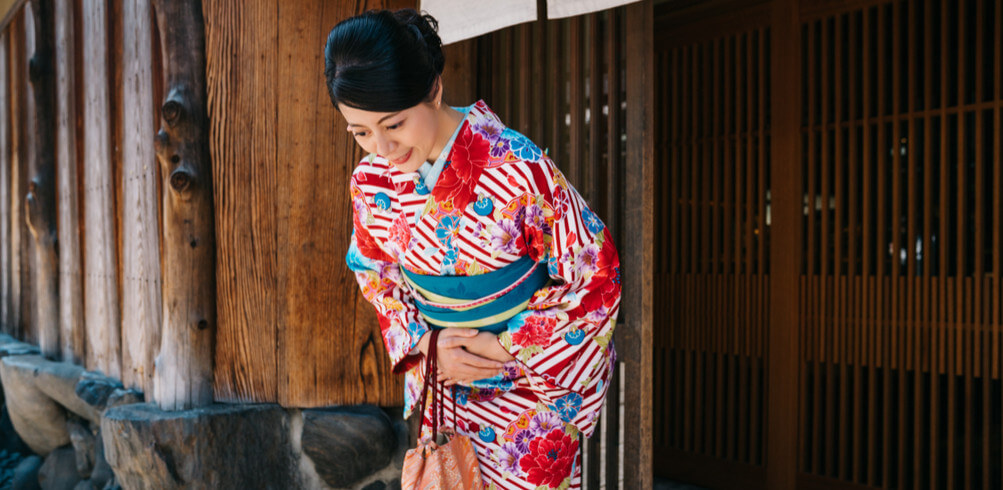
Japanese etiquette tips every visitor should know
Japan is a country with buckets of charm and ancient history, but its customs can be tricky to navigate There’s a lot to love about Japan. Its quirky streets, delicious cuisine and centuries-old castles attract millions of visitors each year, but while its culture intrigues, it also confuses. Manners and strict etiquet...

101 Things to do in Japan
From the delicious to the quirky, Japan is bursting with fun things to do If you're all templed-out or just have some time to kill while visiting Japan, here, 101 ideas to keep you busy. 1. Queue up for sushi at Daiwa Sushi in the Toyosu Market (Tokyo) Recently located to a new, larger location, the sprawling fish...
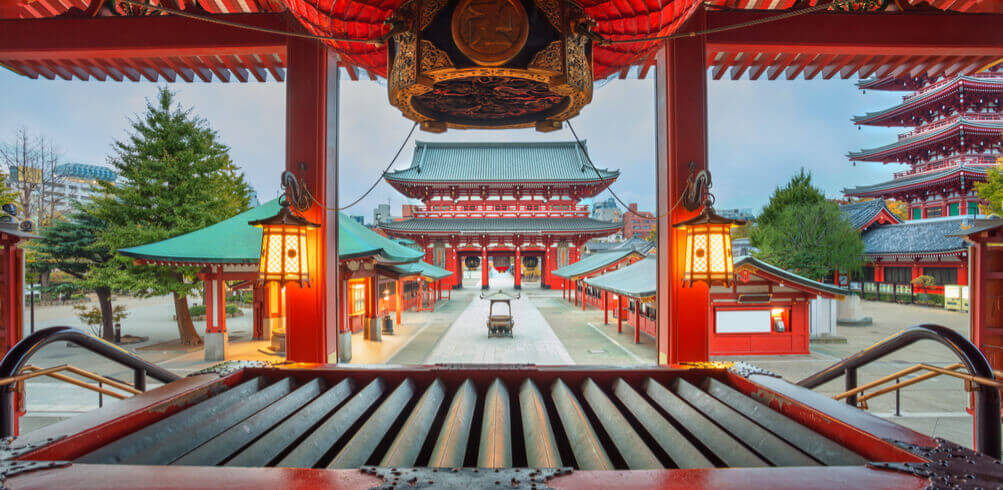
Tokyo in five ways, over five days
Discover five faces of Japan’s sprawling capital over as many days with a jaunt through these diverse areas Day 1 – Shinjuku and Harajuku Dive headlong into two of Tokyo’s most colourful neighbourhoods. Begin in youthful Harajuku, where edgy boutiques line Omotesando Avenue and Cat Street and all things cute reign on T...
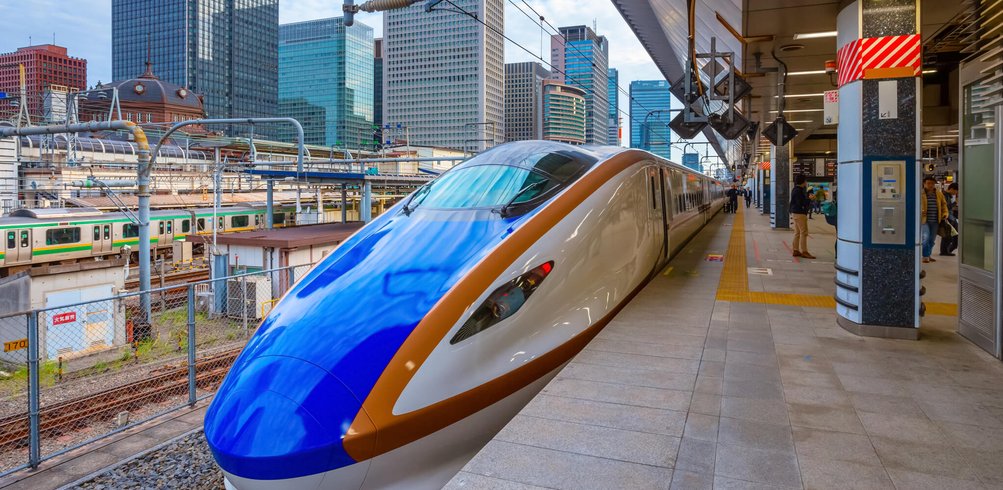
Everything you need to know about: bullet trains in Japan
Get familiar with the Japanese love of innovation through its impressive network of bullet trains A needle-nosed train speeds past the base of beloved Mount Fuji. It’s an image as synonymous with Japan as a geisha shuffling through the streets of Kyoto or a steaming bowl of ramen—and for good reason. The East Asian nat...
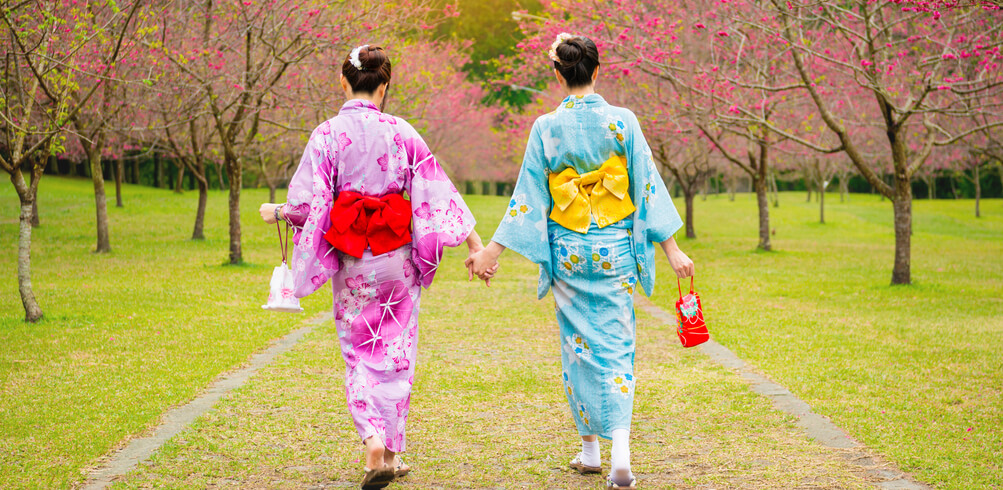
The four seasons: when should I travel to Japan?
Japan can be visited year-round, with each season showcasing its own special charm While its eclectic capital Tokyo exudes modernity and is one of the most technologically advanced cities in the world, there are many prefectures throughout Japan that resemble their traditional forms with wooden minka architecture and t...
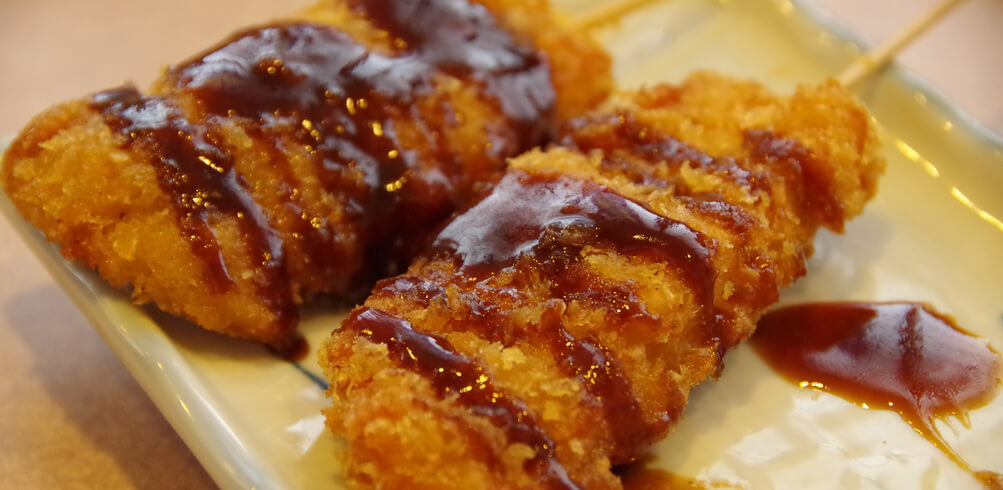
Eat like the Japanese: five must try regional dishes
Japanese food is treasured across the globe, but there’s much more to it than teriyaki chicken With such a vast array of flavours, dishes and regional specialties, it’s no surprise that Japan’s capital Tokyo, has been awarded the most Michelin Stars in the world, defeating culinary superpower Paris for 11 consecutive y...
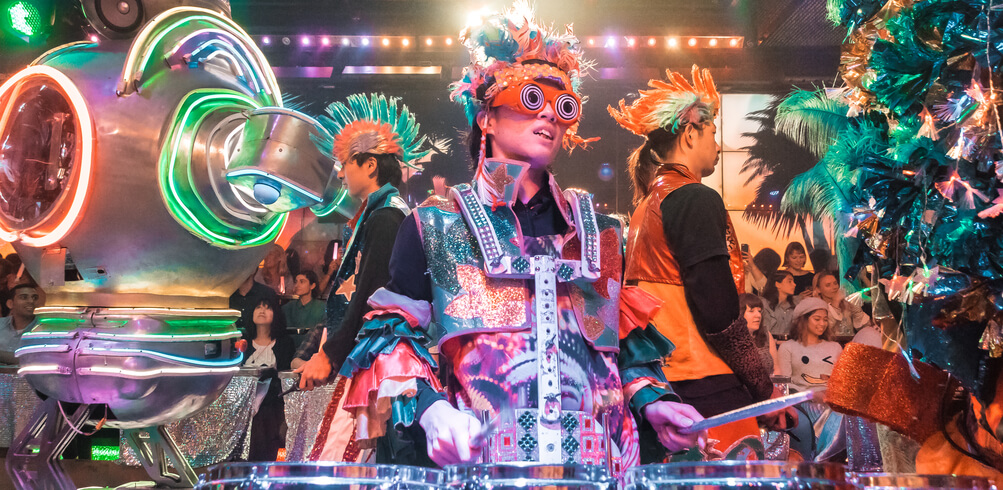
Five books to read before your trip to Japan
From modern classics to guides and memoirs, the many facets of Japan are best explored through literature These days, it seems like everything you need to know about a place can be found with a quick Google search. But sometimes, the best way to find out about the history or culture of a country is to turn to a good ol...
We see that you are based in but you are viewing that is meant for residents.
- No Search data
- Western turkey
- 1. [AF1] southern african circuit
- 2. [NL1] newfoundland & labrador
- 3. [CA3] the five stans
- 4. [MCSP] south pacific explorer
- 5. [MCUP] untouched pacific islands
- 6. [MCWA] a west african odyssey
- 7. [GY1] guyana, suriname & french guiana
- 8. [MCIO] indian ocean islands
- 9. [EG3] classic egypt
- 10. [GS8] the arab gulf states
- How We Travel
- Tour Styles
- Tour Leaders
- Our Partners
- Senior Tours
- e-Newsletter Archive
- Newsletter Subscribe
- Photo Contest
- Tour Safety
- Terms and Conditions
- Cancellation Policy
- Single Supplement Information
- Travel Insurance
- Frequently Asked Questions
- Passport and Visas
- Travel Tips
- Privacy Policy
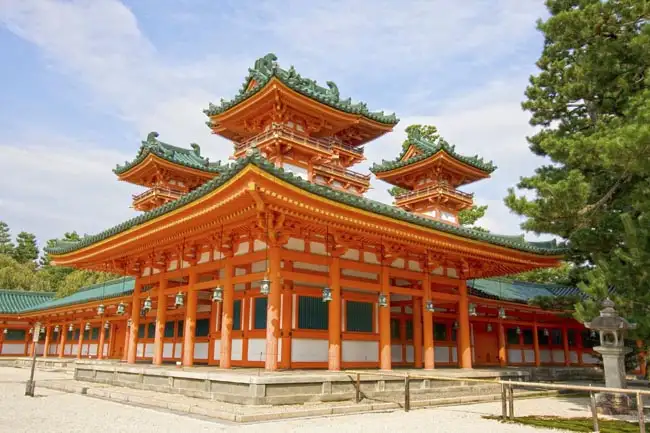
20 Day Japan Tour By Rail With Kyushu Island Extension TOURCODE: JP2
Duration: 20 Days
Activity Level: 2
When To Go: Apr, Oct
Countries Visited: 1
Arrive In / Depart From: Tokyo / Fukuoka
Max Group Size: 18
Tour Style: Cultural
Price From:
Discover the country's true culture with the help of experienced local guides.
- Small group sizes to help escape the beaten path.
- All-inclusive with top-rated restaurants and hotels.
On our Japan by Rail tour you will see why Japan is the quintessential study in contrast and contradiction.
Japanese culture stretches back millennia, yet has adopted (and created) some of the latest modern fashions and trends.
Its cities are as modern and high tech as anywhere else, but tumbledown wooden shacks can still be spotted next to glass fronted designer condominiums.
In the middle of a modern skyscraper you might discover a sliding wooden door that leads to a traditional chamber with tatami mats, calligraphy, and a tea ceremony.
Such juxtapositions are cause for many surprises and very little boredom for any visitor to Japan.
Prices below are per person , twin-sharing costs in Canadian Dollars (CAD) . Pricing does not include airfare to/from the tour and any applicable taxes. For single supplement rates and taxes (if any), please refer to below Prices & Dates table. For general information on flights to/from the tour, click here .
Select a date below to reserve your spot:
PLEASE NOTE: Due to logistical challenges and high costs in Japan, we offer customization services only for groups of minimum 10 participants plus a mandatory tour leader.
Optional Single Supplement: $1480 CAD (number of singles limited).
Day 1 Arrival in Tokyo Today we arrive in Tokyo and transfer to our hotel. Tokyo is Japan's capital and the country's largest city. Prior to 1868, Tokyo was known as Edo. A small castle town in the 16th century, Edo became Japan's political center in 1603 when Tokugawa Ieyasu established his feudal government there. A few decades later, Edo had grown into one of the world's most populous cities. PLEASE NOTE: Due to Japan Rail procedures related to your passes used for the tour, it is important that you arrive no later than "Day 1", the published start date of your tour. Overnight in Tokyo. Included Meal(s): Dinner
Day 2 Tokyo: City Touring Tokyo is a dazzling modern metropolis rich in history and tradition. While the pace and the glitz of the city can be overwhelming, we will do our best to also showcase the tranquil, traditional side of the world's most populous city. We have a private bus at our disposal today, though we may, during our time in the city, also make use of its legendarily efficient public transit system, an excellent way to observe the locals going about their daily lives in one of the world’s most vibrant cities. We’ll kick off our morning with a visit to one of Tokyo’s venerable department stores, the earliest of which were founded during the early 1900s. Their predecessors were kimono stores, which supplied various types of luxurious goods during the Edo and Meiji periods. Japanese department stores are famous for their unparalleled customer service; we’ll aim to be there just before it opens when we will see its employees lined up neatly, waiting to welcome customers. The moment the second hand of the clock hits the opening time, the doors punctually open and customers can make a grand entrance being flanked by bowing and greeting staff. We’ll take some time to stroll through the food halls, where you will see the amazing variety of beautifully-presented foods being sold at unbelievably high prices. Seeing where and how the Japanese shop, what they buy, for whom and for what occasion, offers instructive glimpses into a highly sophisticated social strata where conventions of human interaction and presentation are minutely-defined. Whether it be for a wedding, business meeting or returning from a trip, the culture of gift giving in Japan is one of the most prevalent in the world. However, unlike in some other cultures, in Japan the emphasis is more on the ritual of gift giving than the gift itself. This dates back to the Edo period when a lucky few would go on pilgrimages and bring back souvenirs for the villagers who weren’t able to go. You’ll have time here to pick up supplies for a picnic lunch at our next stop (a “bento box” is an excellent and convenient option). We then move on to the East Gardens of the Imperial Palace, part of the inner palace area. The Imperial Palace, or Kokyo, built on the site of the Edo-jo Castle, is an impregnable fortress that housed the Tokugawa Shogunate for 265 years until Emperor Meiji moved the court here in 1860's. Surrounded by moats, the original outer walls extended for over 16 km (10 miles) and were thick enough for a squad of samurai to walk six abreast on top. Even in its original state, it deceptively looked more like an administrative villa than a fortress. The buildings survived until they were all but obliterated by the fire bombings of WWII. You’ll have time to explore a bit, see the iconic bridge, and to enjoy your picnic lunch in a relatively peaceful setting. Our next stop is Meiji Shrine. Entry into the shrine grounds (a ten minute walk) is marked by a massive torii gate, after which the sights and sounds of the busy city are replaced by a tranquil forest. The approximately 100,000 trees that make up Meiji Jingu's forest were planted during the shrine's construction and were donated from regions across the entire country. At the middle of the forest, Meiji Jingu's buildings also have an air of tranquility distinct from the surrounding city. While in the vicinity of the shrine, time- and weather-permitting, we may be able to take a stroll down nearby Takeshita Street, possibly the busiest and definitely the most colourful pedestrianized shopping street in Tokyo. Our last stop is Ueno Park and the National Museum which, among other things, features the finest collection of Japanese art in the country. After our guided tour of the museum we will return to our hotel before our evening meal at a local restaurant. Overnight in Tokyo. Included Meal(s): Breakfast and Dinner
Day 3 Tokyo: Sushi Making Class This morning we take a fascinating dive into Japanese seafood cuisine during a 3-hour combination walking tour of a local fishmarket and cooking class, where we can learn to prepare traditional style 'washoku' food items like sushi and a Japanese omelette. We meet up with our guide in front of Tsukiji Honganji Temple, located just outside the market. Then we step inside this temple to all things seafood for an in-depth shopping session including plenty of time for photography and exploration. As you wander the aisles of this colourful and chaotic market, you’ll observe everything from giant tuna to sea urchins to octopus arranged for sale. We'll then proceed with our guide to the gourmet cooking studio of one of Asia's largest culinary schools, boasting more than 150 studios throughout the region. Following the instruction of an experienced cooking teacher, we'll learn to prepare two 'washoku' recipes, a style of Japanese cuisine emphasizing traditional and homemade techniques. This typically includes a sushi roll along with a Japanese style omelette called Tamagoyaki, plus side dishes. This will be an excellent and fun introduction to Japanese cuisine, definitely a highlight of any trip to Japan. We finish our session by digging into our tasty creations for lunch. We'll leave with full stomachs and a new-found appreciation for the wondrous world of Japanese cuisine and its top-notch ingredients. Because of our late/filling lunch and full day tomorrow, and because you may be planning an evening activity before we leave Tokyo, we will leave dinner on your own account tonight. Your Tour Leader can help you plan. Tomorrow our large luggage is transported to Hakone for us -- please pack an OVERNIGHT BAG for ONE NIGHT. Your larger bags (one per person) will be shipped ahead to Takayama, and you will need to pack an overnight bag to carry with you for the the one overnight in Hakone. Your Tour Leader will advise in advance re recommended items to have with you for the next two days. Overnight in Tokyo. Included Meal(s): Breakfast and Lunch
Day 4 Tokyo - Lake Ashi - Hakone This morning we take a short metro (train) ride* to Odawara Station where we connect with our private coach towards Lake Ashi near Hakone. Shortly after we leave the station, we'll make a brief stop to see Odawara Castle (exterior visit only). Wedged between Mt Fuji and the Izu Peninsula, Hakone is a large region encircled by several forested mountains with a beauty accented by deep glens and ravines. In the feudal era, Hakone was a very important checkpoint that safeguarded the security of Edo (now Tokyo) as the seat of the Shogunate. This onsen (hotspring) area has been popular since the 1500s, when Hideyoshi Toyotomi came here to relax in an open-air bath after the hard fought Battle of Odawara. From the castle town of Odawara we board a bus that takes us into the National Park. We then board a lake cruiser on Lake Ashi for scenic views of the surrounding mountains. Weather permitting, we can enjoy views of Mt Fuji. One of the highlights today will be our visit to the Hakone Outdoor Museum, or Chokoku-no-mori, a beautiful park filled with sculptures by renowned Japanese and international artists such as Rodin, Bourdelle, Moore, Zadkine, and Picasso. Tonight we will enjoy a Keiseki-type meal at our ryokan-style hotel. Originally this type of dining was to accompany tea ceremony and is a feast for both the eyes and the taste buds. You can feel free to wear your "yukata" (bathrobe - provided by the hotel) to the dining room as many of the Japanese do when they stay in ryokan, a perfectly wonderful place to relax after leaving busy Tokyo behind. Our rooms are traditional style with tatami flooring and futon beds. * PLEASE NOTE: We use the rail system quite extensively on this tour, YOU MUST BE ABLE TO MANAGE YOUR OWN BAGS ONTO/OFF TRAINS AND IN TRAIN STATIONS. Japanese stations can be large and crowded and may not have escalators or elevators. Packing lightly is essential. If you are unsure about your suitability for this type of trip, please refer to our website entry for this tour or speak to one of our sales agents for more information. Overnight in Hakone. Included Meal(s): Breakfast and Dinner
Day 5 Hakone - Train to Takayama Today we travel by Shinkansen (Bullet Train) to Takayama.* The region known as Hida, which surrounds Takayama, was cut off from the rest of Japan by almost impregnable encircling mountains. Hida lacked good farmland, which made taxpaying from an agricultural livelihood an impossible burden upon the people. Necessity caused them to diversify, so the craftsmen of Takayama honed their tools to a sharpness matched by their skills and became known as the finest woodworkers in the land. The mountains yielded the most coveted lumber in the empire, which Takayama's artisans fashioned into magnificent works worthy to adorn Japan's finest temples, shrines and palaces. During the Nara period, the central government, in lieu of taxes, required ten Takayama craftsmen to relocate to the capital, where their considerable talents were employed. During the Tokugawa era, the ancestral daimyo of Takayama was reassigned to the far north. Our train journey today takes us through the scenic Hida River Valley. We arrive in the late afternoon and will have time to wander through the lovely town of Takayama and the merchant quarter of San-machi with its historic wooden structures. * PLEASE NOTE: For our 2024 tour on which this day falls on 09 October, we will be in Takayama for the yearly Autumn Festival, which will impact the sightseeing program as published for today and tomorrow. Your Tour Leader will advise on our exact program prior to our arrival. The Takayama Autumn Festival is ranked as one of Japan's three most beautiful festivals and was registered as an UNESCO Intangible Cultural Heritage in late 2016. The festival has continued to be protected and cherished by the local people, who demonstrate their traditional folk arts during the event. Because it honours Hachiman Shrine in the old town, the festival is also known as Hachiman Festival. The festival is about giving thanks while also marking the beginning of preparations for winter. Perhaps more than anything else, the focal point and must-see attraction of the Takayama Festival is the beautiful festival floats, which are products of the fabulous craftsmanship of the Hida masters. With elaborate, artistic ornaments, masterfully designed marionettes who exhibit incredibly dexterous movements, and clever contraptions for manoeuvring them around town, the floats are really masterpieces in their own right! At nighttime, the floats are covered with lanterns, and the parade of these floats creates a beautiful fantasy world completely different from the daytime procession and is considered the festival's highlight by many visitors. Overnight in Takayama. Included Meal(s): Breakfast and Dinner
Day 6 Takayama: City Tour This morning we will visit the colourful early morning market before heading to the Hida Folk Village, consisting of over 30 unique houses which had been scattered in the Hida region.* The houses are attractively laid out around a small lake and display valuable articles showing the way of life and culture of the past. The style of architecture is called gassho-zukuri, or "praying hand" houses, because of the steep pitch of the roofs reminiscent of two clasped hands in prayer. This was to protect the occupants from the large amounts of snow that fall here over the winter months. Upon our return to the town centre we will visit the Yatai Kaikan, or Float Museum. Your afternoon is at leisure. Takayama is a small, interesting and manageable place for those who enjoy easy-going, on-foot exploration. * 10 October 2024: Please note that this day will operate differently for our Fall 2024 tour that coincides with the Takayama Autumn Festival. Overnight in Takayama. Included Meal(s): Breakfast and Dinner
Day 7 Takayama - Train to Kyoto Our journey continues back through the Hida Valley to connect with the Shinkansen train in Nagoya. Kyoto vibrates with creative energy. For 1,000 years, skilled craftsmen, wise masters, and the nation's most promising fine artists have been lured here. The deep impress of culture and the refinement is indelible; it's in the soul of the city. A long line of Japanese emperors was enthroned here, and the city retains this regal bearing through myriad festivals and commemorative customs preserved from feudal times. In diminutive home workshops along cobblestone alleyways no wider than a footpath, lacquerware, cloisonne, damascene, kimono fabrics, pottery, porcelain, fans, dolls, embroideries, and bamboo ware are still expertly turned out by hand. Kyoto attracts a sophisticated crowd to its vibrant Noh and Kabuki theatres, while the last geisha finishing schools are found in the lantern-lit side streets of the Pontocho and Gion sections of the city. Thankfully, Kyoto's treasures were spared from bombing during WW II, when American scholars persuaded the military to leave this masterpiece of a city alone. Though Kyoto is now a thoroughly modern city, much of its spirit is intact, with over 200 Shinto shrines; 1,600 temples, 30 of which administer to the major sects of Buddhism throughout Japan; three Imperial palaces, nine major museums, and countless classic gardens. We arrive in this fascinating city mid-afternoon. Tonight we will venture to the Pontocho District, one of the traditional geisha quarters of Kyoto and next door to its rival, Gion. Wandering down the narrow lanes with the Kama River flowing alongside gives a sense to what this city was like long ago. Overnight in Kyoto. Included Meal(s): Breakfast and Dinner
Day 8 Kyoto: City Tour Today we have a highlight-packed full day of sightseeing in this spectacular city. Please note that the actual order of sites visited may vary from what is listed below, depending on how your Tour Leader and local guide for the day determine what is the best way to deliver the program. We start with a quick stop at Nishi Honganji (West Honganji), a designated UNESCO world heritage site, built in 1591 by Toyotomi Hideyoshi. Nishi Honganji is the head temple of the Honganji faction of the Jodo-Shin sect with over 10,000 sub-temples across the country and 200 temples overseas. The two largest structures are the Goeido Hall, dedicated to Shinran, the sect's founder, and the Amidado Hall dedicated to the Amida Buddha, the most important Buddha in Jodo-Shin Buddhism. We then visit Heian Shrine, built in 1895 to commemorate the 1,100th anniversary of the founding of the capital. It is a replica to three-fifths of the size of the first imperial palace in the ancient capital Heiankyo. We also visit the beautiful "go-round" style garden with a total area of 30,000 sq metres, which is well-known for the beauty of its weeping cherry trees, Japanese iris, and waterlilies. At some point we will make a stop to acquire some picnic lunch items followed by a break, possibly combined with a walk on Philosopher's Path (Tetsugaku no michi), a pleasant route through the northern part of Kyoto's Higashiyama district. The path follows a canal which is lined by hundreds of cherry trees. We continue to Ginkakuji, the Silver Pavillion, and then proceed to Kinkakuji, the Golden Pavilion, one of Japan's most famous architectural and historical icons. We also visit Ryoan-ji, the famous raked gravel Zen Garden, for which the Zen Buddhists are renowned. The essential dichotomy and harmony of the universe, which lies at the heart of this belief system, is symbolized in these tranquil gardens. After a busy day, we’ll have a break before reconvening for our evening meal at a local restaurant. Overnight in Kyoto. Included Meal(s): Breakfast and Dinner
Day 9 Kyoto & Nara Today we travel by local train to Nara. The crest of every mountain, the slope of every hill, the mute testimony of every rock, the waterfall, rivulet, and the valley of Nara are infused with the intangible spiritual energy that accompanied the birth of the Japanese civilization. Nara, meaning "level land, " occupies the great basin of what was Yamoto, or the Land of Great Peace. Here was the centre of the half-real, half mythical kingdom of Japan before it became a nation. Jimmu Tenno, the first emperor of Japan, was purportedly buried at Nara, the Imperial Japan, the oldest existing dynasty in the world, established its first permanent court within the city in 710. Arts, culture, and literature also bloomed in this fertile valley. The earliest histories of the nation were compiled in Nara by noble court ladies in colloquial Japanese, and from the ancient city Buddhism spread throughout the land. In its glory days, Nara covered an expansive area linked by palaces, temples, shrines, public buildings, and nobles' villas. The temples were massive and extremely powerful, almost like independent city-states. Numerous fires, the ravages of time, war, and pestilence have reduced many of the ancient structures, but plenty remain in their original states, especially in the eastern sections of the city. Part of this legacy is the Great Buddha of Todai-ji Otera, the largest bronze statue in the world, tipping the scales at over 500 tonnes. Nara Koen, at over 500 ha (1235 acres), is Japan's largest park and is home to the sacred deer of nearby Kasuga Taisha. This shrine, moss-covered and illuminated by over 3000 stone lanterns, was first erected in 768 and is second in importance only to the Grand shrines of Ise. As we walk through this park dotted with temples and deer wandering about, you will be struck at how the sublime cultural richness of the quiet past lingers on. Overnight in Kyoto. Included Meal(s): Breakfast and Dinner
Day 10 Kyoto: Nijo Castle & Leisure time This morning we visit Nijo Castle, built in 1603 as the Kyoto residence of Tokugawa Ieyasu, the first shogun of the Edo Period (1603-1867). His grandson Iemitsu completed the castle's palace buildings 23 years later and further expanded the castle by adding a five story castle keep. After the Tokugawa Shogunate fell in 1867, Nijo Castle was used as an imperial palace for a while before being donated to the city and opened up to the public as a historic site. Its palace buildings are arguably the best surviving examples of castle palace architecture of Japan's feudal era, and the castle was designated a UNESCO world heritage site in 1994. The balance of the day is yours to explore Kyoto on your own. A good place to start may be the small Japanese garden named Shoseien, located another few street blocks east of Higashi Honganji. Your Tour Leader can help you plan your afternoon. Overnight in Kyoto. Included Meal(s): Breakfast and Dinner
Day 11 Kyoto - Train to Hiroshima Today we take the Shinkansen train to Hiroshima. Passing through Osaka and Kobe, just minutes from Kyoto on this fast train, we will arrive at our destination in just a couple of hours. Modern Hiroshima rose like a phoenix from its own ashes. Less than five decades since its obliteration, it is once again the most vital city of San-Yo with a population of one million and growing. Hiroshima is referred to as the "River City." In its confines, the Ota-gawa River fans out into six delta tributaries that flow into the immense and very busy bay. In the years just following the A-bomb blast, scientists doubted if Hiroshima could ever live again. Today the streets hum with activity, trees and flowers grow, and birds sing. Nature may not forget, but it does forgive! On the morning of August 6, 1945, the people of war-torn Japan hurried to begin the day. Then suddenly buildings melted, people evaporated, and humankind lost the first battle of the atomic age. Seventy thousand buildings were flattened and 200,000 people perished, the lucky ones quickly; the unlucky lingered. Hiroshima, fringed by mountains forming a natural amphitheatre, seethed and fumed. Our visit takes us to the Peace Memorial Park (Heiwa Kinen Koen). Here the Cenotaph, shaped like an ancient tomb, holds the names of the dead. The prayer, the hope, the Japanese reads "Repose ye in peace, for the error shall not be repeated." The skeleton of the Atomic Bomb Dome (Genbaku Domu) turns green with age against a blue sky. Until all nuclear arms are banned and destroyed, the Eternal Flame will flicker. We will visit the Peace Memorial Museum and walk to the A-Bomb Dome, passing the many monuments, memorials, and statues. Overnight Hiroshima. Included Meal(s): Breakfast and Dinner
Day 12 Hiroshima & Miyajima Today we travel by train and ferry to Miyajima where we spend the day. Since ancient times, Miyajima has been regarded as one of the "Three Most Beautiful Spots" of Japan and, as part of the Seto Inland Sea National Park, it has received several distinctions, such as a place of extraordinary scenic beauty, exceptional history, and a natural monument. The virgin forests neighbouring Mt. Misen are representative of the lush greenery and abundance of nature which still covers the entire island even now. A surprisingly large number of southwestern Japan native botanical specimens can still be found on Miyajima. The island is like a miniature model of Japan, showing the harmonious ecology of all living things from the ocean depth to the top of mountains. Our walking tour of the island will include a visit to the famous Itsukushima Shrine, which together with its large wooden tori, stands in the ocean during high tide.* You will also have some free time to admire this World Heritage Site before returning to Hiroshima. * Please be advised that the tori may be undergoing regular maintenance at the time of our visit. This occurs every 30 years and can, depending on its needs, take anywhere from 6 months to two years to complete. Please be prepared for the gate to be either partially or completely covered by scoffolding during this time. Overnight in Hiroshima. Included Meal(s): Breakfast and Dinner
Day 13 Hiroshima (Honshu Island) - Train to Kagoshima (Kyushu Island) & Sakurajima Island Today we say sayonara to Honshu Island as we cross the short distance to Kyushu Island via Shinkansen train. Our journey takes us along the eastern coast of Kyushu to Kagoshima. Kagoshima City is the capital of Kagoshima prefecture. The city originally prospered as the castle town of Lord Shimadzu, and was the first city to introduce western civilisation to Japan. Today, it is the largest City in Southern Kyushu with about 540,000 people. Kagoshima City nestled on the west shore of beautiful Kinko Bay with majestic Mt. Sakurajima (the symbol of Kagoshima) is referred to as the Naples of the Orient. One of Kagoshima's greatest contributions to modern Japan is it's role over the centuries as a gateway for trade and exchange between Japan and the world. Japan has traditionally been a closed culture and only recently pursued international ties. Kagoshima is the catalyst city credited for "opening Japan to the World". In 1543, a Portuguese vessel landed on Tanegashima one of the southern islands, bringing the first firearms to Japan. In 1549 The Spanish missionary Francisco Xavier landed in Kagoshima and introduced Christianity to Japan. During the 17th century, the shogunate had an "isolation policy" which prohibited contact with other nations; however, Satsuma (now Kagoshima) continued to trade with China, and sent students to England to study Western culture. Upon arrival we have an excursion by boat and bus to Sakurajima, one of Japan's most active volcanoes and the symbol of Kagoshima. The volcano smokes constantly, and minor eruptions often take place multiple times per day. Located in the middle of Kagoshima Bay, Sakurajima is the area's most prominent geographic feature, having an elevation of 1117 meters and a circumference of about 50 kilometers. Before a powerful eruption in 1914, Sakurajima used to be an island in the bay, but the massive lava flow from that eruption created the volcano's current land connection to the Osumi Peninsula in the east. We'll visit the Sakurjima Visitors' Centre, which has models, pictures, videos and information boards about Sakurajima. Overnight in Kagoshima. Included Meal(s): Breakfast and Dinner
Day 14 Kagoshima & Ibusuki Today we have a full-day tour of the Ibusuki region near Kagoshima. Ibusuki is located on the southeast tip of the Satsuma Peninsula and is a famous resort area. Blessed with great weather, hibiscus flowers blossom all throughout the area, yet Ibusuki is best known for its steam and baths, heated by natural subterranean geysers. We visit Chiran, a small town in the middle of the Satsuma Peninsula. Within the town there is a preserved samurai district with houses and gardens that date back about 250 years. Chiran's isolated location at the southern end of Kyushu has allowed the district to keep much of its historical character intact. The preserved Samurai District consists of a 700 meter long street within downtown Chiran that runs parallel to the main thoroughfare. The street itself is very attractive, with the rock walls and hedges of residences and the forested hillsides in the distance. Unlike some other samurai districts, it is also free of telephone poles and parked cars that would detract from the historic atmosphere. We stop at the Chiran Peace Museum For Kamikaze Pilots. This is a thought-provoking, and to many, a controversial museum dedicated to the lives and deaths of 1,036 suicide pilots or kamikaze (more commonly known as tokkoh-tai-in Japanese), who sacrificed themselves in the name of the Japanese Emperor in the latter stages of World War II. You'll also have a chance to experience a unique activity for which this region is renown. Blue-robed visitors come and lay in warm sand pits and are gradually covered with volcanic sand up to their necks. The weight and heat of the sand assists in the body's blood circulation and, after about 10 minutes, the whole body begins to perspire. It is a relaxing sensation both young and old alike enjoy. Overnight in Kagoshima. Included Meal(s): Breakfast and Dinner
Day 15 Kagoshima - Train to Nagasaki Still in Kagoshima, we visit Iso Ko-en Gardens, a wonderful garden with Mount Sakurajima as borrowed scenery in the background. The volcanic soil is extremely rich and the farmland at the base of this mountain is testament to its value. Later we travel by train to Nagasaki, arriving in time for dinner. Blessed with a temperate climate, a superb setting, and a history unlike that of any other prefecture in Japan, Nagasaki easily ranks as one of Japan's most rewarding and exotic destinations. Much of the prefecture's considerable charm can be traced to the unique role which the region played in Japanese history. From 1639 to 1859, while the rest of the country was secluded from foreign contact by governmental decree, the port of Nagasaki alone was allowed to conduct trade with Europe and the Asian mainland. This free-port status and the prolonged exposure to foreign cultures which it brought resulted in the creation of a sophisticated and liberal climate which no other part of Japan could hope to emulate. Both compact and cosmopolitan, it has a rich range of historic sights and wonderful restaurants. Overnight in Nagasaki. Included Meal(s): Breakfast and Dinner
Day 16 Nagasaki & Mt Unzen Today we visit the Nagasaki Peace Park, commemorating the atomic bombing of Nagasaki of August 9, 1945, which destroyed wide parts of the city and killed tens of thousands of inhabitants. The park is home to the massive Peace Statue as well as various other memorials. A monument around a black pillar marks the atomic explosion's epicenter in the nearby Hypocenter Park and stores the name list of bomb victims. We also stop at Shimabara Castle, a white-walled castle built during the early Edo Period as the seat of the local feudal lord. The castle was the extravagant centerpiece of the feudal domain and was far larger than those found in domains of similar status. We then head to Mount Unzen, which has had several major eruptions in recent history, the deadliest of which occurred during the late Edo Period and resulted in the deaths of 15,000 people. The volcano erupted most recently from 1990 to 1995, sending pyroclastic flows (superheated clouds of volcanic gas and ash) down toward the town below. While most people were safely evacuated, 43 journalists, scientists and their taxi drivers were killed. Much of the volcano's destruction was due to large mudflows of volcanic ash, known as 'lahars,' which flowed down the mountainside, burying several homes and buildings that lay in their path. We will visit a small collection of these Buried Houses at the Mizunashi Honjin Fukae Michi no Eki roadside park. A few of the houses are protected under a dome. Overnight in Nagasaki. Included Meal(s): Breakfast and Dinner
Day 17 Nagasaki: City Tour Nagasaki's attractions are as varied as they are plentiful: feudal castles, samurai houses, Meiji-era Western villas, smoking volcanoes, mineral-rich hot-spring baths, architecturally pleasing resorts, rugged islands, beautiful beaches, and a hospitable and friendly people are just a few of the rewards awaiting the traveller to this diverse and dynamic prefecture. This morning we will start with a trip to Glover Garden, named after Thomas Glover. This is a collection of European style houses which have been collected in to this park which cascades down the side of a hill. In addition to the houses which you can go through is the Museum of Traditional Performing Arts which contains beautifully decorated floats from the Kunchi Festivals. We will then ride the streetcar to the Nagasaki Dejima Museum. Dejima was an artificial island built in 1636 in Nagasaki Bay for foreign traders, as foreigners were banned from the country. This was a vital portal through which culture, money, goods, and ideas flowed in and out of Japan. This afternoon is free for you to enjoy this wonderful city. Nagasaki has an interesting Chinese Confucian Temple that you may like to visit on your own, as well as a vibrant Chinatown. And, of course, the compelling Nagasaki Atomic Bomb Museum commemorates the explosion of the atomic bomb that devastated Nagasaki at 11:02am on 9 August 1945. Overnight in Nagasaki. Included Meal(s): Breakfast and Dinner
Day 18 Nagasaki - Saga Prefecture - Fukuoka Today we travel by bus through Saga Prefecture, Japan's most important area for the production of traditional porcelain and pottery. Many of the kilns were established by potters who were taken to Japan from Korea after the war between Japan and Korea in the 1590s. Arita ware originated in the beginning of the 17th century when layers of kaolin, the main component of porcelain, was discovered and the first porcelain kiln was built in present day Arita town. Arita porcelains of the early days were typically made in the Chinese style of the period, with deep blue patterns on a white background, called "sometsuke." In the 1640s, a new style called "aka-e," characterised by bright colours and bold patterns principally in red, was invented. These two styles, sometsuke and aka-e, dominated Arita-Imari ware. These beautiful pieces of white earthenware from the Orient won tremendous acclaim in Europe and influenced the European porcelain industry. We’ll visit the Arita Ceramic Museum, which features a fascinating Shibata collection donated by a Japanese couple's personal collection in hopes that they will be preserved. Rooms are separated by age from modern to the 16th century; most signs and descriptions are also in English. Maps in exhibition room #4 show the flow of porcelain through Asia over the years. We continue toward Karatsu with a stop in Okawachiyama, known as the "Village of Secret Kilns." From 1675 to 1871, it was the official kiln of the Nabeshima family of the Saga Domain, and was a representative production centre of porcelain, producing high quality pottery for the Imperial Court, the shogunate and various lords. The Nabeshima clan of the Saga Domain moved their kiln from Arita to the steep terrain of Okawachiyama to preserve their secretive techniques, setting up a guard post at the entrance to strictly control the kiln. Even those who are not particularly interested in ceramics will find it a truly fascinating and quaint village set deep in the hills. Arriving at Karastu City, we’ll see the and the famous Karatsu Street (Alpino) and (time-permitting) see a local festival display of floats. Departing Karatsu, we’ll pass by Karatsu Castle (rebuilt in 1960s) before stopping at Nijino Matsubara Pine Tree Forest for a coffee break and walk to the beach. Our final destination is Fukuoka, Kyushu's largest and one of Japan's ten most populated cities. Because of its closeness to the Asian mainland (closer to Seoul than to Tokyo), Fukuoka has been an important harbour city for many centuries and was chosen by the Mongol invasion forces as their landing point in the 13th century. Today's Fukuoka is the product of the fusion of two cities in the year 1889, when the port city of Hakata and the former castle town of Fukuoka were merged into one city. Included Meal(s): Breakfast and Dinner
Day 19 Fukuoka: City Tour Fukuoka is a city blessed with a beautiful climate and a seaside location. Since ancient times the city has flourished as a crossroads of international exchange. It is said that the earliest Japanese state mentioned in historical records, Nakoku, was located in the area where the city is now located. Foreign culture first entered Japan through Fukuoka. The Gold Seal discovered across the bay from Fukuoka City on Shikanoshima Island symbolises the long history of the area. This seal, inscribed "King of the State of Na of Wa, or Japan, and Vassal of the Han Dynasty", dates back to AD 57. Today we embark on a half-day tour of Fukuoka, including Kanzeon-ji and Kaikan-in temples, where we will also visit the Dazaifu Tenmangu Shrine and Komyoji Temple, with its magnificent Zen gardens. This is the perfect place to pause and enjoy some silence, reflecting on the beauty of the surroundings and your time in Japan. Next we make our way to the Kyushu National Museum, only the fourth national museum in the country. The museum recognizes its host city's history by basing its exhibits on the concept of "Understanding Japanese culture from an Asian point of view". The museum has an impressive collection of artifacts that are presented in both a creative and informative fashion. We return to the city for some leisure time and independent exploration. Free time options include the Kabuki theatre, the Museum of Asian Art, Hakata Shonin (Folk Museum), and/or the nearby useum, Gion Shrine and its Float Exhibition. There are also many spa treatments available in and around the hotel – perfect preparation for your long journey home. If you have a break for lunch in mind, Hakata ramen is by far the most famous dish to come from Fukuoka. It's a soup noodle dish made with thin egg noodles and a rich, pork bone broth called tonkotsu. There are many different types of tonkotsu ramen, but Hakata ramen is possibly the most well-known. Overnight in Fukuoka. Included Meal(s): Breakfast and Dinner
Day 20 Departure Departure from Fukuoka.* * LAND ONLY PASSENGERS: If you are booking your own flights and are tempted to purchase a ticket in/out of Tokyo only, it is, in theory, possible to travel by train from Fukuoka back to Tokyo, but this is a rather long journey (8 hours) and can involve multiple train changes which, in Japan, can be daunting. Accordingly, if you need to return to Tokyo to fly from there, we recommend that you build in a flight from Fukuoka to Tokyo in order to make this connection. ITTE IRASSHAI!! Included Meal(s): Breakfast
Inclusions Hotel breakfast and most dinners (mostly at local restaurants) are included daily. All transport, accommodation, sightseeing and entrance fees for sites noted as 'visited' in the detailed itinerary. Gratuities for restaurant staff, porters (when available), drivers, local guides. Services of a full-time Adventures Abroad Tour Leader; local guides at various locations.
Exclusions International airfare to/from the tour. Tour Leader gratuities, lunches, drinks, personal items (phone, laundry, etc), international (if applicable) air taxes, and any excursions referenced as 'optional'. Optional trip cancellation insurance (please refer to "Resources" tab for more info). PLEASE NOTE that at variance with our common policy on airport transfers for most tour arrival points, we do NOT include or pre-book arrival airport transfers in Tokyo, regardless of whether or not you book your air with us. We provide detailed information on your various options as part of your pre-trip information package. We will, however, include departure transfers for "Land & Air" customers at the end of the tour (your Tour Leader will assist).
Seasonality and Weather Our April tours can expect cool-warm temperatures with moderate humidity. April dates can expect daytime high temperatures of about 18-23 C (66-72 F), with chilly mornings and evenings. May will be a bit warmer, with highs to 26-28C (77-82 F) depending on daily conditions and location. Our April date is also set to coincide with cherry blossom season (exact timing and location is reliant on weather conditions and can vary year to year). By May, the cherry blossoms give way to riotous azaleas that colourfully explode in hillsides, parks, gardens, and pretty much everywhere. Again, the timing of this can vary year to year, but the plant has a long blooming season so we should be able to enjoy in several places during this time. Our fall dates coincide with the beginning of the cooler and drier time of year and should coincide with autumn leaf colour in some locations, as well as chrysanthemum season, which can be quite festive in some locales. Rain showers can occur at any time, though their likelihood decreases the later we get into the fall which is a cooler/drier time of year. TAKAYAMA AUTUMN FESTIVAL 2024: Our 05 October 2024 date coincides with what is ranked as one of Japan's three most beautiful festivals, registered as an UNESCO Intangible Cultural Heritage in late 2016. The festival has continued to be protected and cherished by the local people, who demonstrate their traditional folk arts during the event. Because it honours Hachiman Shrine in the old town, the festival is also known as Hachiman Festival. The festival is about giving thanks while also marking the beginning of preparations for winter. Perhaps more than anything else, the focal point and must-see attraction of the Takayama Festival is the beautiful festival floats, which are products of the fabulous craftsmanship of the Hida masters. With elaborate, artistic ornaments, masterfully designed marionettes who exhibit incredibly dexterous movements, and clever contraptions for maneuvering them around town, the floats are really masterpieces in their own right! Refer to the full itinerary for more information.
Transport and Travel Conditions Our primary means of transportation throughout Japan is via the very efficient rail system, including the famous Shinkansen, or Bullet Train. Distances are not great and most journeys are only a few hours duration. A combination of buses and taxis will be used elsewhere as part of our local sightseeing program. The tour is physical in that it is busy and that YOU MUST BE ABLE TO MANAGE YOUR OWN BAGS ONTO/OFF TRAINS AND IN TRAIN STATIONS. Japanese stations can be large and crowded and may not have escalators or elevators.You must pack VERY lightly, preferably in wheeled soft-sided baggage plus a day-bag that you can fit into the overhead luggage compartments in the trains. You must also be steady on your feet and be able to endure some long days; we have numerous walking tours and visit several sites that are LARGE with steps and uneven surfaces. There is also a very strong culinary element to this trip. Breakfasts feature Asian as well as Western items, but our dinners out at local restaurants will feature a wide range of local specialties. Eating is very much a cultural experience in this part of the world, and this aspect of our program is an integral part of the overall experience. Though individual tastes and requirements will be taken into account by your leader who will be organizing our evening meals on-the-go, if you are strictly a meat-and-potatoes person, or a strict vegetarian/vegan/gluten-free etc, you may find your needs/preferences significantly challenged on this tour.
Am I suitable for this tour? Please refer to our self-assessment form .
Accommodation All hotels are centrally-located, air-conditioned, 3-4 star standard with private bath facilities. We spend one night at a traditional Ryokan (in Hakone), which features tatami rooms and futon bedding. Laundry service is available at most hotels (except Hakone) for a rather high price. All hotel rooms are well equipped and usually include coffee/tea making facilities. Most hotels have hairdryers and irons. Some hotels have indoor/outdoor swimming pools. Single rooms are limited and possibly smaller than twins. Porters are generally available (see 'Inclusions').
Staff and Support Tour Leader throughout, local guides at various locations.
Group Size Maximum 18 plus Tour Leader
Tour Extensions This tour is part of a series that can be upgraded to make for a longer trip. For more options, please refer to tour code/s:
Regions visited: Far East Countries visited: Japan
*The red tour trail on the map does not represent the actual travel path.
The following is a list of sample hotels at some locations included on this tour. The hotels shown here are meant to provide a general sense of the standard of hotel we usually aim for; they are not necessarily confirmed for your chosen departure.

Reservation Summary
Have Questions? Call us: 1-800-843-2678

The Ultimate Itinerary for a Trip to Japan: Unforgettable 7, 10 and 14 Day Journeys (Updated 2024)
Some destinations reward spontaneity – in Europe, cheap flights and rail passes give you the freedom to wake up in the morning and choose your next destination on a whim. Japan, on the other hand, rewards forward planning.
The country’s abundance of both natural and manmade attractions, combined with its high standard of living and general efficiency, make it a fairly pricey destination. The more you plan, the better you can mitigate the damage to your wallet, and get the most out your trip – no matter how long you plan to stay.
These itineraries are designed to inspire you to build your own trip. Based around a few key highlights that represent both modern and ancient, they’re crafted to give you a rich and satisfying experience of Japan in 7, 10 or 14 days. Let’s jump right in!
Psst: want more tips for planning a trip to Japan? Check our rail pass guide and cheap eating tips .
- 1 Getting Around
- 2 7 Day Itinerary: Tokyo and Mt Fuji (Fuji Five Lakes)
- 3 7 Day Itinerary: Osaka, Kyoto and Nara
- 4 10 Day Itinerary: Tokyo, Mt Fuji and Kyoto
- 5 10 Day Itinerary: Osaka, Kyoto, Nara and Hiroshima
- 6 14 Day Itinerary: Tokyo, Mt Fuji, Osaka, Kyoto, Nara, and Hiroshima
Getting Around
Before we get to the itineraries, there's one important piece of planning to keep in mind – whether or not to get a JR pass . A Japan Rail (JR) pass is exclusively available to tourists, and grants you unlimited travel on JR trains within Japan, including the world-famous bullet trains. Depending on your itinerary, this will save you time and money vs buying individual train tickets within Japan. But importantly, you must purchase the pass before you arrive in Japan . We recommend ordering from Klook for their low prices and 10-day global delivery.
We've marked the itineraries that we recommend the JR pass for below, but for a more in-depth guide, be sure to read our full guide The Japan Rail Pass: Is It Worth The Cost?
7 Day Itinerary: Tokyo and Mt Fuji (Fuji Five Lakes)
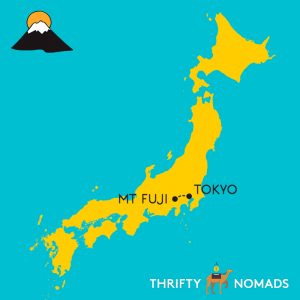
Get the essentials of urban and rural Japan with four days in the unforgettable capital, followed by three days of reflection and recovery under the shadow of Mt Fuji.
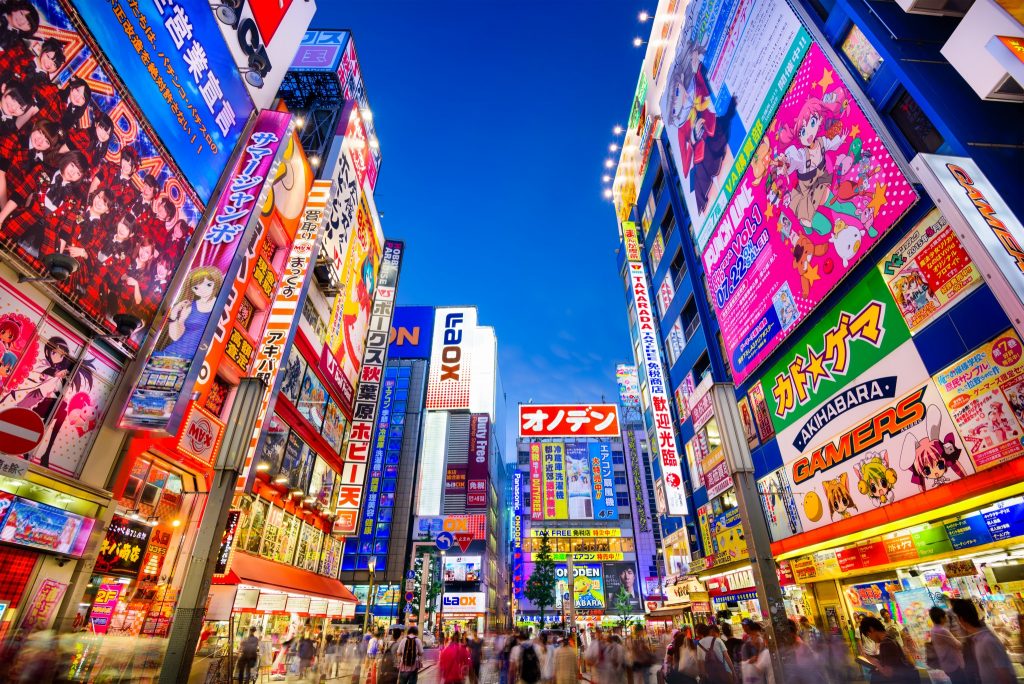
Tokyo: 4 Days
- Highlights: Go crazy in Japan’s frenetic, eclectic and incomparable capital. Live out a manga fantasy in Akihabara , drink shoulder to shoulder with locals in Roppongi , and see the world’s largest metropolis in 360 degrees from the top of the Tokyo Tower . And for an immersive digital art experience, check out the popular teamLab Planets TOKYO Museum .
- Where to stay: Public transport is comprehensive, so search far afield. Roppongi neighborhood if you like nightlife, Shinjuku to be close to the beating heart. Use TripAdvisor to compare hotel and hostel deals across all booking sites along with thousands of reviews.
- What to eat : Chains like Sushiro ($1 / plate train sushi) and the ubiquitous Gyudon houses like Yoshinoya can get you a delicious local meal for a budget price. Check out a Maid Cafe for an authentic (if risque) local experience!
Mt Fuji: 3 Days
Tip: If you don't have 3 days to spend in Fuji, you can book a full day tour from Tokyo .
- Highlights: See why this 3776 meter high mountain has inspired artists, writers and pilgrims for countless centuries. Soak up the volcanic waters in the Five Lakes District , a major tourist destination since the 1920s, it’s still possible to get away from the crowds and immerse yourself in nature.
- Where to stay: The Five Lakes Region contains a wealth of hotels and resorts. If you’re striking out, try a bit further away from (but still in plain view of) the mountain in Hakone district. Compare across booking sites with TripAdvisor's hotel search.
- What to eat: Try the regional speciality: udon noodles, often served cold in a delicate, flavorful sauce.

7 Day Itinerary: Osaka, Kyoto and Nara
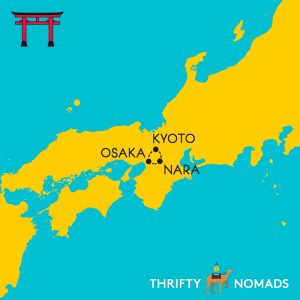
Osaka: 3 Days
- Highlights: Japan’s second biggest city is a microcosm of everything that magnetizes visitors to the country. Gaze in awe at giant plastic sea creatures and effusive street vendors in Dōtonbori , wander among the tuna merchants at the fish market, and connect with history at the 16th century Osaka Castle . Get to know Osaka like a local with a highly-rated walking tour .
- Where to stay: Try AirBNB and trust the train network if you find a good option a little outside of town. For hotels and hostels, compare across booking sites using TripAdvisor .
- What to eat : The same budget chains in Tokyo will serve you well here (I practically moved in to my nearest Sushiro!), but you really must try the street food on Dōtonbori .
Kyoto: 2 days
- Highlights: After the urban grunge of Osaka, it’s time to embrace the Japan’s spiritual side at the ancient seat of empire. It’s still possible to see Geisha in the historic Higashiyama District, which you can even explore by rickshaw , and the subtle beauty of temples like Kinkaku-ji is simply too much to put into words. Make sure you catch everything there is to see with a custom-made walking tour with a local . Go!
- Where to stay: Downtown Kyoto is the most convenient spot for sightseeing and will allow you to cover much of the historic town on foot. Try Airbnb or compare hotels and hostels across booking sites with TripAdvisor .
- What to eat : Restaurant prices can be steep so take a trick from the locals and stock up on tasty (and filling) instant meals at chain stores like the ubiquitous 7/11
Nara: 2 days
- Highlights: Stick with the theme of history but swap the Geisha for sacred deer in Nara , Japan’s capital from AD 710 to 794. In Nara park you can sip green tea in a traditional “Chaya” tea house and watch the deer frolic over 700 year old ground. Hire a local guide to make sure you catch it all!
- Where to stay. While it’s possible to day trip from Osaka, the town is well worth staying overnight – guest houses are abundant and there are even hotels in the historical park! You can compare all your options and find the best price using TripAdvisor .
- What to eat . Vegetarian food and pickled delicacies are the local specialities, due to the surrounding mountains and buddhist communities.

10 Day Itinerary: Tokyo, Mt Fuji and Kyoto
Got 10 days? Let’s do it right. Take a deep dive into the capital, cleanse yourself with nature in Mt Fuji and the surrounding 5 Lake District, and transport yourself back in time in Kyoto – a rich overview that will leave you feeling refreshed, satisfied and exhilarated.
For this itinerary, we recommend a JR pass . It will save you precious travel time on the bullet train, and save you money on train fares between, and within, Tokyo and Kyoto. Remember to order your pass BEFORE you enter Japan (we recommend Klook ). If you're still unsure, be sure to check out our in-depth guide on whether the JR pass is worth it .
- Highlights: Lose yourself among the neon lights of Shibuya and have a drink at the Monster Cafe . Watch locals transform themselves into Manga characters on an anime/gaming tour in Akihabara , drink hot sake with locals in Roppongi, and let digital art completely immerse your senses in Japan’s unforgettable capital.
- Where to stay: Public transport is comprehensive so search far afield. Roppongi neighborhood if you like nightlife, Shinjuku to be close to the beating heart.
- What to eat : Tokyo has unlimited dining options – if you’re on a budget, try Gyudon and brave the budget chains where it’s still possible to order with ancient vending machine located by the kitchen!

- Highlights: Make all your instagram followers jealous as you soak up the steamy volcanic waters under the shadow of Japan’s largest and most famous mountain.
- Where to stay: The Five Lakes Region near the mountain contains a wealth of hotels and resorts. If you’re striking out, try a bit further away from (but still in plain view of) the mountain in Hakone district.
Kyoto: 3 days
- Highlights: The twin temples Kinkaku-ji and Ginkaku-ji (gold pavilion and silver pavilion) have been carrying out an architectural and spiritual debate for centuries. It’s still possible to see Geisha in the historic Higashiyama District, which you can even explore by rickshaw . Make sure you catch everything there is to see with a custom-made walking tour with a local .
- Where to stay: Downtown Kyoto is the most convenient spot for sightseeing and will allow you to cover much of the historic town on foot.
- What to eat : Live out a warrior fantasy at the Samurai Restaurant . It’s a bit kitsch and definitely designed for the tourists, but so what – you’re on holiday!
10 Day Itinerary: Osaka, Kyoto, Nara and Hiroshima
Get the best of Japan today and yesterday in racey Osaka, tranquil Kyoto and serene Nara, before coming face to face with perhaps the darkest period of Japan’s history at Hiroshima.
For this itinerary, we recommend a JR pass . It will save you tons of travel time on the bullet train to Hiroshima, and save money on train fares within the Osaka/Kyoto/Nara area. You need to order your pass BEFORE you enter Japan (we recommend Klook ). If you're still unsure, be sure to check out our in-depth guide on whether the JR pass is worth it .
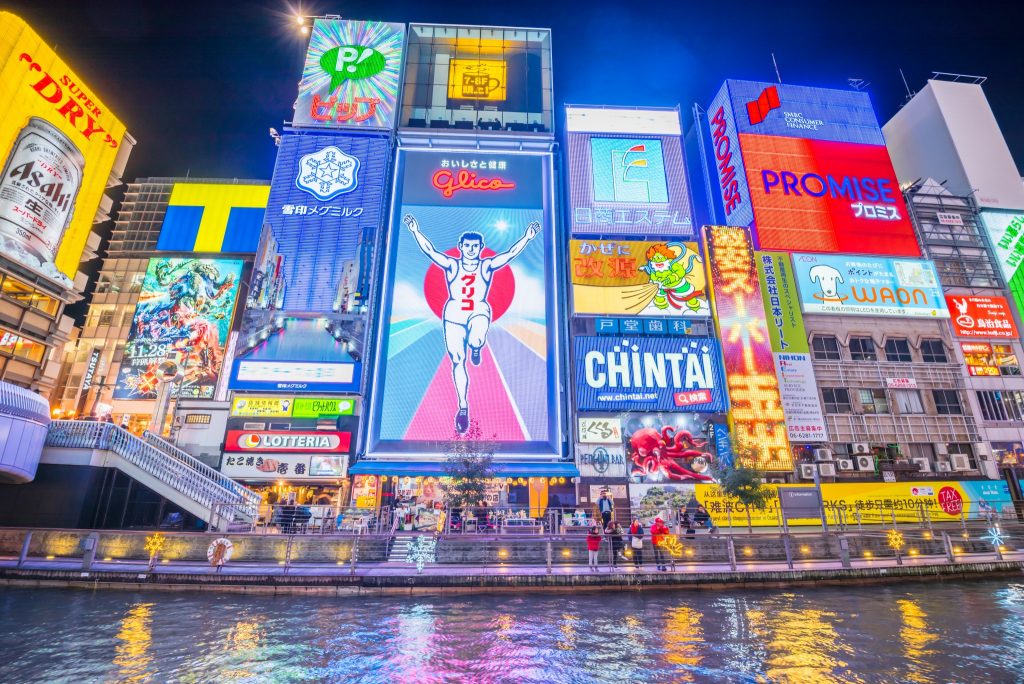
- Highlights: “Forget Tokyo,” I was told when I planned my first trip to Japan, “Go to Osaka!” While the capital is awesome, Japan’s second city more than holds its own. Here you can gaze in awe at giant plastic sea creatures and effusive street vendors in Dōtonbori, wander among the tuna merchants at the fish market, and connect with history at the 16th century Osaka Castle. Get to know Osaka like a local with a highly-rated walking tour .
- Where to stay: Try AirBNB and trust the train network if you find a good option a little outside of town.
- What to eat : Try the street food on Dōtonbori! A nightfood tour will help you find the best spots and eat where the locals eat!
- Highlights: Say goodbye to the furious pace of modern Japanese city life, and embrace the tranquil, spiritual and ancient in Kyoto. Believe it or not, but it's still possible to see Geisha in the historic Higashiyama District, even from a rickshaw . The gentle beauty of temples like Kinkaku-ji is simply too much to put into words. Make sure you catch everything there is to see with a custom-made walking tour with a local . Go!
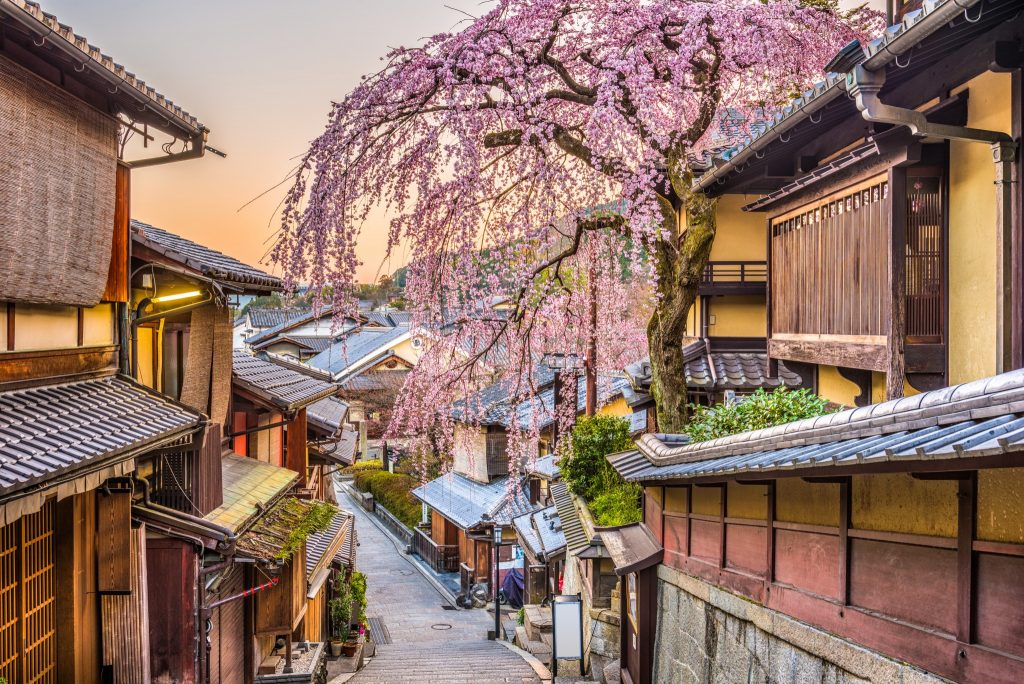
- Highlights: In Nara park you can sip green tea in a traditional “Chaya” tea house and watch the deer frolic over 700 year old ground. Hire a local guide to make sure you catch it all!
- Where to stay. While it’s possible to day trip from Osaka, the town is well worth staying overnight – guest houses are abundant and there are even hotels in the historical park!
- What to eat . Thank the Buddhist communities in the surrounding mountains for the abundance of local vegetarian food.
Hiroshima: 2 days
- Highlights : Infamous for its more recent history (which you can learn from a local on a cycling tour ), the rebirth of Hiroshima from ashes into a vibrant modern city is reason to visit in itself. In addition to haunting museums and poignant relics to the nuclear attacks, Hiroshima is the gateway to rural Chūgoku , a chance to tip your toes into Japan’s unspoiled wilderness.
- Where to stay : Hiroshima is drenched in hotels. Stay near the train station for convenient access to the city center and surrounding attractions.
- What to eat : Try the local okonomiyaki, a delicious, savory grilled pancake smothered in sauces and toppings.

14 Day Itinerary: Tokyo, Mt Fuji, Osaka, Kyoto, Nara, and Hiroshima
This is an itinerary for people who want it all! You’ve got two weeks, you’ve got your rail pass , and you’re going to jolly-well make the most out of your time. Well, if you’ve got the energy, then here’s how it could be done. It’s everything you see above, rolled into one epic itinerary for the bold and brave.
For this itinerary, we definitely recommend a JR pass . With the distance being covered from the east to the west of country, the amount of time and money this will save is a no-brainer. You must order your pass BEFORE you enter Japan (we recommend Klook ). But if you're still unsure, be sure to check out our in-depth guide on whether the JR pass is worth it .
- Highlights: Start with the blast of energy, neon, weirdness and glamour that is Japan’s capital. Opportunities for entertainment are virtually unlimited – feel the awe of the emperor at the imperial palace, indulge in a retail fantasy in Ginza, and finish the day with a well needed pint of Asahi in Roppongi.
- Where to stay: Public transport is comprehensive so search far afield. Roppongi neighborhood if you like nightlife, Shinjuku to be close to the beating heart. Use TripAdvisor to compare hotel and hostel deals across all booking sites along with thousands of reviews.
- What to eat : The real question is what NOT to eat. You could go to a different restaurant in Tokyo everyday for 20 years and still not run out of options. If you’re on a budget, look to the local fast food chains – if you’re on a tight budget, trust to the 7/11!
Mt Fuji: 2 Days
- Highlights: Hear a rumble? Fuji-san isn’t just a stunning, snow capped mountain, it’s still an active volcano! Soak up the volcanic waters and watch Fuji’s towering form from the Five Lakes District , a popular spot for locals and and travelers.
- Where to stay: The Five Lakes Region contains a wealth of hotels and resorts. If you’re striking out, try a bit further away from (but still in plain view of) the mountain in Hakone district. Compare across booking sites with TripAdvisor's hotel search.
- What to eat: Try the regional speciality: udon noodles, often served cold in a delicate, flavorful sauce.
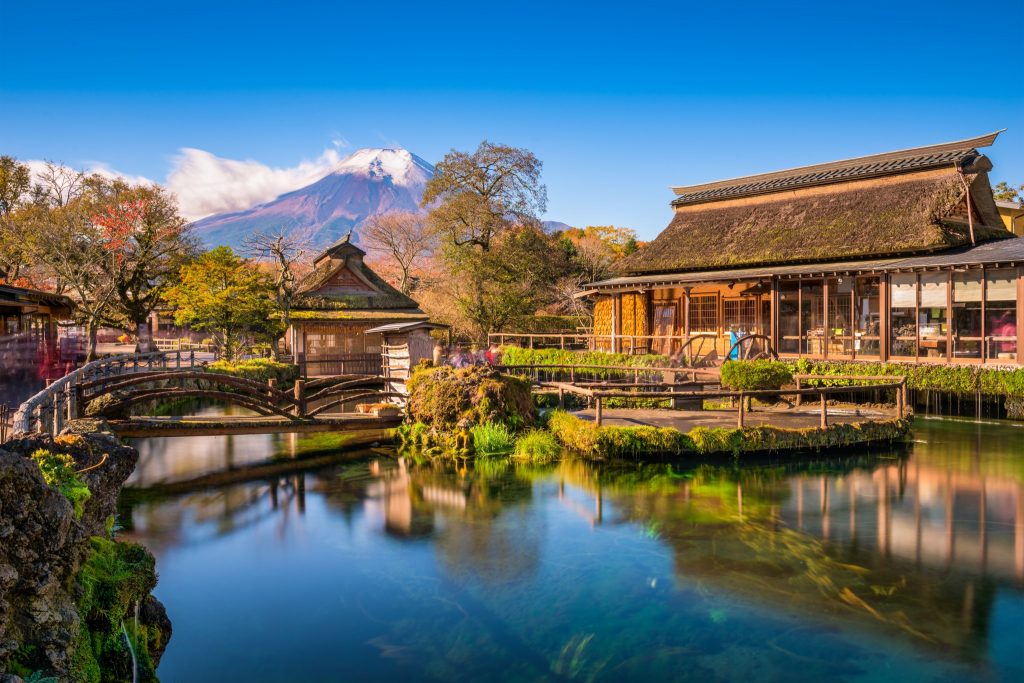
Osaka: 2 Days
- Highlights: Japan’s second biggest city is a microcosm of everything that magnetizes visitors to the country. Gaze in awe at giant plastic sea creatures and effusive street vendors in Dōtonbori , wander among the tuna merchants at the fish market, and connect with history at the 16th century Osaka Castle .Get to know Osaka like a local with a highly-rated walking tour .
- Where to stay: Try AirBNB or TripAdvisor and trust the train network if you find a good option a little outside of town.
- What to eat : The same budget chains in Tokyo will serve you well here (I practically moved in to my nearest Sushiro!) but you really must try the street food on Dōtonbori .
- Where to stay: Downtown Kyoto is the most convenient spot for sightseeing and will allow you to cover much of the historic town on foot. Try Airbnb or compare hotels and hostels across booking sites with TripAdvisor .

- Where to stay. While it’s possible to day trip from Osaka, the town is well worth staying overnight – guest houses are abundant and there are even hotels in the historical park! You can compare all your options and find the best price using TripAdvisor .
- Where to stay : Hiroshima is drenched in hotels. Stay near the train station for convenient access to the city center and surrounding attractions. Check both Airbnb and TripAdvisor for the best prices.
With the abundance of incredible places to visit in Japan, the only trouble you'll have with planning a trip here is which itinerary to follow. Tell us, what are your must-visit's on a trip to Japan?
- Itineraries
- Tours and Activities
- Travel Guides
- Best of Japan
JRailPass.com » Japan Travel Blog » Japan in 21 days: The ultimate travel itinerary
Japan in 21 days: The ultimate travel itinerary
July 3, 2020

Three weeks in Japan might seem like enough time to see the island without even having to rush anywhere. At least this is what most travelers would think.
Unfortunately, (or not), Japan is not that kind of place – filled with picturesque views, breathtaking shrines and castles, endless nature and spiritual exploring opportunities as well as colorful and vivid street life. However, we did our best to summarize the ultimate Japanese experience and add some alternative suggestions off the beaten path.
Many travelers feel rushed and unable to enjoy Japan at their own pace. In this post we are not going to use numbers nor try to indicate the days you are supposed to stay or spend in a particular location. You, our readers, have the freedom to create your personal itinerary . Let’s begin:
Tokyo (Week 1)
For some classic Tokyo routes and to-do lists, please refer to our well-researched guides:
- Japan in 7 days
- Japan in 14 days
- Three days in Tokyo
Following are some of our favorite places, albeit not the most famous ones for the general public.
The Advertising Museum of Tokyo
A very unusual museum where the curious story of Japanese advertising and design is selected and gathered in one place. This museum will not only take you through the advertising history of Japan (since the Edo period, seventeenth century) but also through the Japanese cultural evolution.
You will be able to gain an insight like never before of how the Japanese buy and why they prefer some products to others. It is a story of their likes and dislikes, of their preferences and desires through the years, and a genuinely fascinating one. The selection is of Japanese advertising only, but information is available in English.
Location: Minato-ku, Higashi-Shimbashi 1-8-2, Caretta Shiodome Website: http://www.admt.jp/en/index.html
National Science Museum
Highly recommended to all natural science and animal lovers , the National Science Museum is in Ueno Park. If you happen to stay there on the National Museum Day (18th of May, however, do consult the museum’s website), the entrance will be free of charge.
The museum is divided into two main sections:
- The Japanese Gallery: focusing on the history of the Japanese islands and the evolution of people and nature.
- The Global Gallery: focusing on animal evolution, the science and technology progress. It also offers exhibitions of ancient to modern-day animals, 360-degree cinema and computer screens with live streaming.
Location: 7-20 Uenokoen, Taito, Tokyo 110-8718 Website: http://www.kahaku.go.jp/english/
Akihabara Electric Town
A central Tokyo district, famous for its numerous electronics shops . A place for all the devoted fans of the technologically advanced Japanese culture, who will jump for joy once they discover the variety of gadgets this district has to offer. Softmap and Laox are just two of the major electronic shops you will find there.
A unique attraction for anime lovers – the Tokyo Anime Center (4th floor of the UDX building) has to offer anime-related exhibitions, events, and shops.
Location : Akihabara Station (Keihin-Tohoku Line, Yamanote Line, Chūō-Sōbu Line).
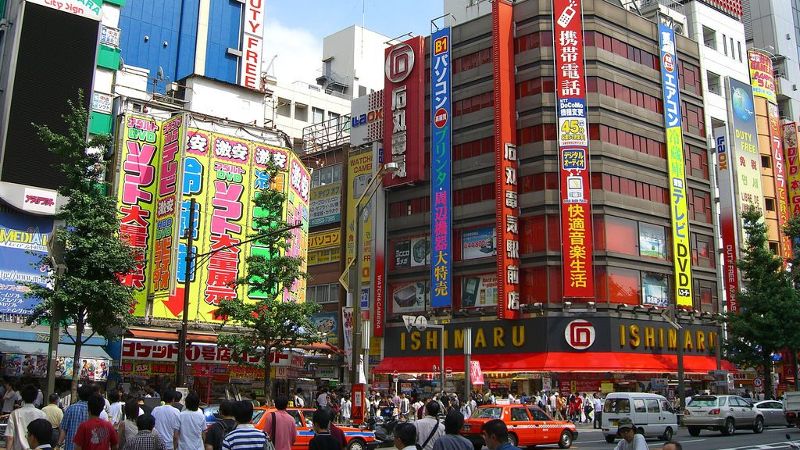
Tokyo Disneyland
Just 15 minutes away (by JR train) from the central Tokyo railway station is located one of the greatest attractions for children and parents ! Disneyland will take you to a dream kingdom you could never have imagined, with a little bit of Japanese magical dust spread around the fields of joyful shouts and eagerness to hop on all the attractions.
It is important to remember – probably there will be a lot of visitors. However, everyone working for Tokyo Disneyland tries to make it as easy as possible for everyone to enjoy their time there.
Location : 1-1 Maihama, Urayasu, Chiba Prefecture 279-0031 Website : http://www.tokyodisneyresort.jp/en/tdl/
Origami Workshops
Have you ever wondered how to make a plane or a beautiful flower out of a piece of paper? Have you ever thought this was impossible, and only Japanese elders were allowed to gain such knowledge? Joking aside, this is indeed a beautiful art that can help you change your entire home!
Visit the Origami Kaikan workshops and factories and learn it yourself ! You will not have to pay anything; this workshop is free of charge. On the 2nd and 3rd floors of the building, you will be able to observe the process of traditional Japanese origami making and decorating.
Location : 1-7-14 Yushima, Bunkyō 113-0034.

Attend a Weekly Festival
Festivals happen literary every week! It is said New York is the city that never sleeps. However, Tokyo is the city that never sleeps, never stops, never rests! A rather long description, still an entirely honest one. In July, for example, you can enjoy some exciting local festivals such as:
- Lantern floating event
- Summer festivals
- Koganei Awaodori Dance Competition
- Local Goldfish festival
And last but not least, the most spectacular, the Sumida River Fireworks Festival. The best thing about them all is that none will cost you a penny. However, each event will leave you breathless with the desire to start planning your next trip to Tokyo.
Location: Tokyo city and surroundings
Give the technology of tomorrow a try
Japan is a paradise on earth for the IT addicted. The giants: Sony (showroom located in Ginza) and Toyota (Odaiba entertainment and shopping district) offer the general public free showrooms, where everyone can learn more about and play with the latest gadgets and technology from the two companies.
Cup Ice Cream Museum
If you have an exotic taste for ice cream, and you have always wondered what shrimp or garlic with mint ice cream would taste like – this is the place that will answer all your questions.
The Cup Ice Cream Museum does have a rather unusual approach to their ice cream flavor selection, however, with over 400 different choices; you are guaranteed to find the perfect match.
Location: 3-1-2 Higashi-Ikebukuro, Toshima-Ku
Watch a Sumo morning training session
Sumo tournaments are considered a must-see by many international visitors (not to mention the Japanese, they are just crazy about this sport). However, what very few think about is the curious preparation routine that stands behind these traditional Japanese fights. Watch how sumo practitioners get ready for a tournament by taking a closer look at their not so famous sumo practice.
The Arashio Stable offers anyone, willing to wake up early, to gain a curious insight into this unknown to most of us type of art. Typically, practices take place in the morning from 7:30 and 10 am.
Location: 2-47-2 Hama-chō, Nihombashi Chūō-ku

Takayama (Week 1-2)
Takayama, also referred to as Hida-Takayama, is a small, very well preserved mountain town, situated in the Hida region (Gifu Prefecture).
The old town
One of the few places in Japan where a whole region is so beautifully preserved. For those who appreciate the essence of the Japanese culture, its purity and respect for nature – this will be the perfect destination.
Just as if still living in the past centuries, the old town will take you on a journey through time and share with you what it meant to live in Japan during the Edo Period (1600-1868).

Higashiyama walking course
After visiting the Old Town, take a stroll through the Higashiyama Walking Course and discover more than a dozen hidden temples and shrines , as well as the ruins of Takayama’s former castle.
The walk will take you high up the hills of Shiroyama Park, where you will enjoy beautiful mountain views. The walk is 3,5 kilometers long and will take you away from crowds straight into the wild.
Matsuri no Mori
Matsuri no Mori (in translation: Festival Forest ) is a museum, dedicated to the main facts of the Takayama Festival . It is considered to be one of the three most impressive and beautiful festivals of Japan, together with Gion Matsuri of Kyoto and the Chichibu Yomatsuri – a night festival close to Tokyo (90 minutes by car).
The very entrance of this mystical underground museum will offer visitors to play the giant Taiko drums, placed by the door. Once inside the cave-like museum, travelers will see large screens depicting the magical floats from famous festivals around Japan. Witness a genuinely genius craftsmanship and a mystical experience.
Location : 5 Chome-1 Tenmanmachi, Takayama, Gifu Prefecture 506-0025.
Sanmachi Suji
Amid the northern Alps is set the great former castle town of Hida Takayama, which is currently one of the best-preserved castles in Japan. The center of Hida Takayama is called Sanmachi Suji – a central historical region that consists of three main streets – Ichino-machi, Nino-machi, and Sanno-machi.
Along those old streets, you will find small shops selling traditional crafts, Japanese merchant houses, hot springs and many temples. The area is called “Little Kyoto” by the locals for its natural waters and well-preserved shrines and temples.
Hida Folk Village
Known in Japanese as Hida-no-Sato, this model of a folk village has over 30 buildings, recreating Hida’s historical look and including National Cultural Treasures.
Life and culture of mountain farming villages are recreated, with displays of traditional crafts and a beautiful central lake.

Kenrokuen Garden
Famous for being one of Japan’s three most beautiful gardens , Kenrokuen attracts many visitors who seek to soak up as much from Japan’s nature as possible.
The park fascinates with its clean waters, flowering gardens, stones, and hidden nooks. All of this and more is available to the general public for free. It is needless to say that in the spring the cherry blossoming would leave breathless any visitor – foreign or not.
Kenrokuen Garden also disposes of lovely little tea houses, which offer traditional Japanese green tea and sweets. A treat that everyone can enjoy during their visit.
Location: 1 Kenrokumachi, Kanazawa, Ishikawa Prefecture 920-0936
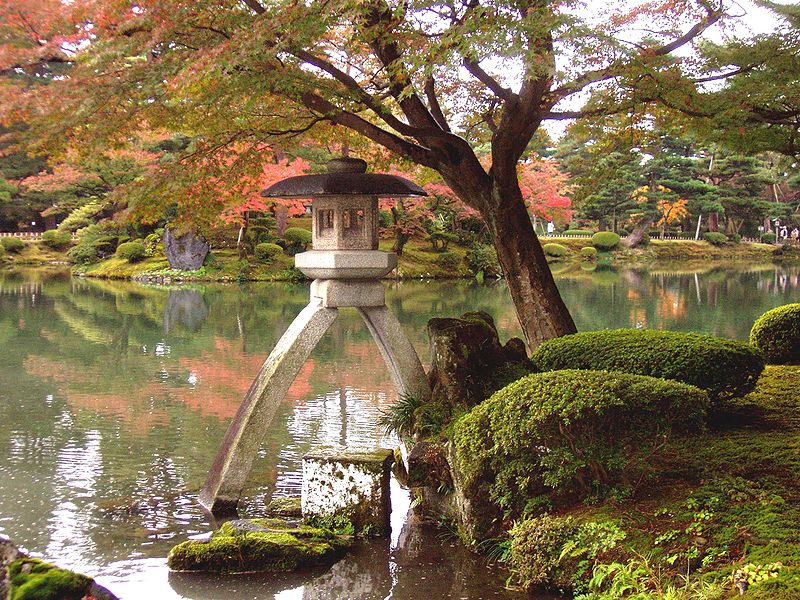
D.T. Suzuki Museum
Visit this unique Zen temple , built and dedicated to Daisetsu Teitaro Suzuki, the paramount of Zen Buddhism, the person who introduced the spiritual culture Zen to the West. The D.T. Suzuki Museum takes the form of a brilliantly built concrete complex, which incorporates the Zen art in its every inch.
Location: 3 Chome-4-20 Hondamachi, Kanazawa, Ishikawa Prefecture 920-0964
Omicho Market
With over 170 stores of literally all kinds: from fresh fish and drinks all the way to clothes, the Omicho Market has much to offer to both residents and international tourists.
Enjoy the taste of fresh seafood , caught just a while ago, and explore the tastes of different Japanese vegetables, fruits, and refreshing drinks.
Location: 〒920-0905 Ishikawa Prefecture
Kanazawa Castle
Visit the magnificent seat of the mighty lord of Kaga, one of the richest and wealthiest federal domains of Japan, during the Edo period in the sixteenth century. The castle’s territory will take you back to the year of 1657 when the great Meireki fire burned the Kanazawa castle down to the ground.
The current standing reconstruction is an exact copy of what this great building once was, apart from the castle’s central keep, which burned down in another fire in 1602 and was never rebuilt.
Location: 〒920-0937 Ishikawa Prefecture, Kanazawa, Marunouchi, 1−1

Kyoto (Week 1-2)
The thousand year capital, the center of Japan’s sublime gardens, ancient temples, and vibrant shrines, Kyoto is where even the Japanese go to learn and soak up more of their culture.
Kyoto is among the most culturally-rich cities in the world , taking its rightful spot right between Paris, Rome, and London. A must-see destination that should be included in the bucket list of every traveler.
For the traditional itinerary format on what to see and do in Kyoto, read our Japan in 7 days: Travel itinerary article, as well as Japan in 14 days: Travel plan .
Following is our carefully selected list of Kyoto’s latest must-see and do :
Kabuki Theater
Kabuki is a traditional Japanese dance-drama , famous for its outstanding performances, as well as the performers’ costumes and makeup. Kyoto’s famous Minamiza Kabuki Theatre is an extraordinary location, where spectators can enjoy the traditional form of Japanese stage drama.
Location: 198 Nakano-cho, Shijo-dori, Yamato-oji nishiiru, Higashiyama-ku.
Attend a tea ceremony
Matcha (powdered green tea) ceremonies have been an essential part of the Japanese culture for centuries. Such gatherings take place for both formal and informal meetings with friends or business partners.
As always – describing a ritual cannot compare to living it. Since you are already keen on Japanese culture – attending a tea ceremony should be a must on your list. For detailed information, you can always ask the concierge at your hotel regarding some great local advice.

Kyoto International Manga Museum
Another must-see for all anime and manga lovers – one of Japan’s specialties – is the International Manga Museum. Not only that – it is the best manga Museum of Japan. Any comics fan will be more than thrilled to visit this place, as it holds up to the high standards expected from the Japanese, including:
The museum has to offer anything manga-lovers can want:
- An endless amount of original comics that you can take a read during your visit
- A detailed timeline of the history and evolution of manga
- Tutorials on how to draw Japanese comics and occasional live storytelling performances
All of this and more only in the Kyoto International Manga Museum – the best of its kind.
Make sure not to step on anyone while at the museum, since visitors are free to take any manga comics and read it, usually lying on the floors.
Location: 〒604-0846 Nakagyo Ward (Kyoto Prefecture)
Gion (Geisha District)
The most famous district in Kyoto, the only geisha place left in the country where traditional wooden architecture meets lovely tea houses – this is Gion.
The Japanese love their traditions, which is why even nowadays people still gather in the old tea rooms and organize gatherings that include live music performances, dances or just passionate discussions.
Visitors from all over the world can enjoy such events. You will be surprised by the number of Japanese tourists who come from other parts of the country willing to catch a glimpse of it with their cameras.
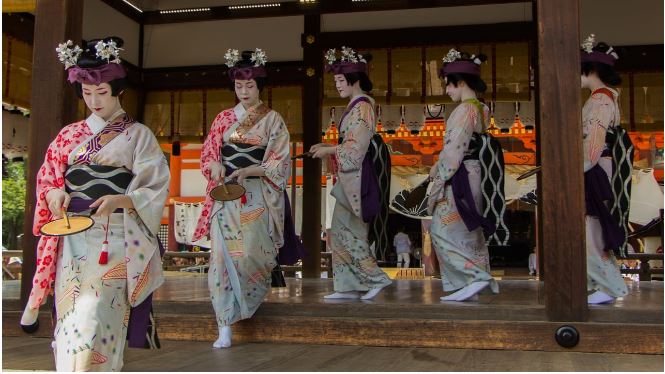
WAK Japan – Women’s Association of Kyoto
WAK Association started over 12 years ago with the aim of promoting and giving international visitors access to the traditional, spiritual and cultural experience rooted in the Japanese culture. Just to name a few examples:
- Tea ceremonies
- Calligraphy classes
- Sushi making
- Sake tasting
- Flower arrangement
- Kimono try-on
Learn about 400-year old rituals, understand how to appreciate tea and get the most out of its herbs, while trying on a traditional kimono and feeling the art of Japanese elegance.
Location : 761 Tenshucho, Takakura-dori, Nijo-agaru, Nakagyo-ku Website : http://wakjapan.com
The Philosopher’s Walk
This beautiful pedestrian path that follows a cherry-tree stream was named Philosopher’s walk over a hundred year ago. It is a well-known fact that the famous at the time Professor Nishida Kitaro of the University of Kyoto used to walk here every day and use the time to contemplate.
The serenity, peace, and quiet of this 30-minute walk (approximately 2 km long) might just inspire you to take up daily relaxing walks and integrate such activity in your everyday life.
The river bank includes some magnificent temples, gardens, and shrines. Furthermore, if you decide to visit the place during spring, you will see the explosion of colors and the mesmerizing effect of the famous cherry blossoming.
Location: Sakyo Ward, Kyoto, Kyoto Prefecture 606-8406.

Osaka (Week 2)
Formerly known as Naniwa, the ever-busy Osaka was the first ever officially recognized capital of Japan. It is currently the third largest city area in Japan after Tokyo, with a greater population than any European and American city (apart from New York). Pretty impressive, considering the actual size of Japan and the fact that it doesn’t even get close to the top 30 largest countries in the world.
If you wish to learn even more about Osaka, take a look at our Japan in 7 days and Japan in 14 days articles.
[banner-en]
Shitennoji Temple
If you are an admirer of the Japanese culture, this is the place you need to visit. Shitennoji was the first Buddhist temple ever to be constructed in Japan by the state. Similar to many wooden constructions, the temple has burned down more than once or twice throughout the years. However, its reconstruction has never been a question. What is more, after each fire the temple was built in respect of the original 6th-century design.
Location: 1-11-18 Shitennoji, Tennoji Ward, Osaka, Osaka Prefecture 543-0051 (JR Tennoji Station).
Abeno Harukas
An inspiring view from above is never a bad idea. Visiting the highest skyscraper in Japan is an even better one! The building is located just by the JR Tennoji Station , which makes it perfect for all Japan Rail Pass holders.
A mesmerizing view from above is not the only thing Abeno Harukas has to offer! Apart from the observation deck, you can enjoy an Art Museum , located on the 16th story, the Abeno Harukas Kintetsu Department Store , which happens to be the biggest one in Japan and even a hotel with… do we need to say it? With a fantastic view!
Location: 1-1-43 Abenosuji, Abeno Ward, Osaka (JR Tennoji Station). Website : http://www.abenoharukas-300.jp/en/ .
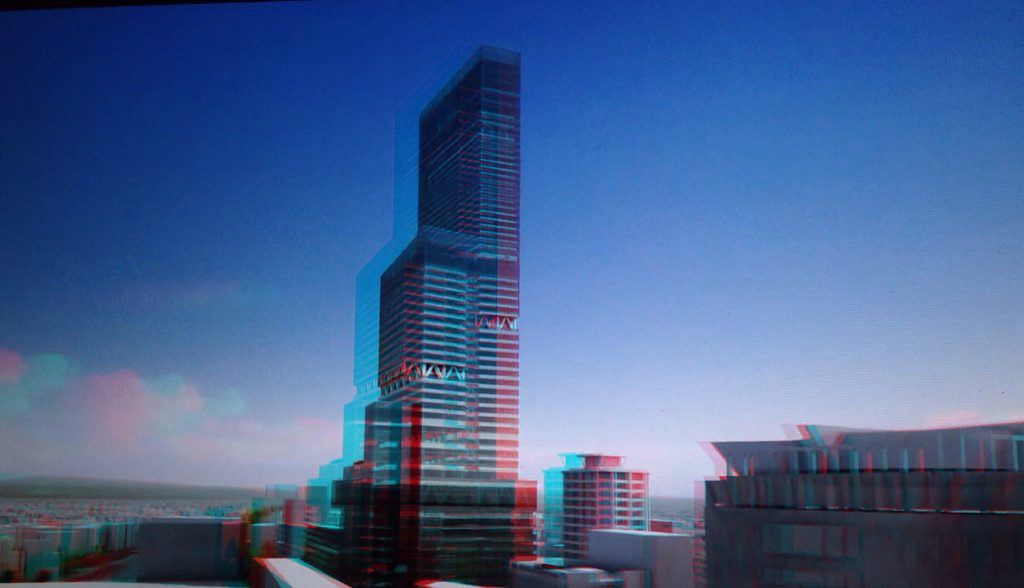
Nipponbashi (Den Den Town)
Most commonly known as Den Den Town (Japanese slang for electronics – denshikiki ), this is the most famous neighborhood in Osaka for electronic gadgets and otaku (obsession with a hobby that changes your lifestyle) items.
Before and during the World Wars the area used to focus on books, appliances, and furniture. Nowadays it has turned into a manga and anime-related shopping district, quite similar to Akihabara in Tokyo.
This is one of the very few places in Japan where you can bargain the price of the item you wish to buy. However, always be careful as the locals have become specialists on a world-class level when it comes to haggling.
Location: Nipponbashi, Naniwa Ward, 556-0005 (15-minute walk from JR Namba Station).
If you have always wanted to ride a massive red Ferris wheel on the top of a skyscraper in Japan – this is the place for you.
Apart from an adventurous experience, Hep Five is a 10-story high shopping mall and entertainment center. You will find restaurants, European and Japanese fashion stores, including game centers (7th floor) where many of the local visitors love to gather and play.
To top it all after a long and tiring walk, go to the last floor and take a ride on the big red Ferris wheel – a romantic experience, preferred by many couples after sundown.
Location: 5-15 Kakudacho, Kita Ward, 530-0017 (Osaka central station).

Osaka Museum of Housing and Living
One of the most visual and captivating museums of Osaka. By focusing on the housing and living changes and Japanese social evolution in the last 400 years, this museum tells the story of the ordinary people – how they lived, what they did, gives occupation examples, and whole recreational scenes and villages.
Additionally, it also provides a clear view of the contrast between day and night life and how the city changes. This museum just the place for all history lovers and for those who are simply in love with the Japan.
Location: 〒530-0041 Osaka Prefecture, Osaka, Kita Ward, Tenjinbashi, 6丁目4−20 (JR Temma station).
Namba Yasaka Shrine
This is a different type of shrine, located in the mouth of a 12-meter tall lion . The exact year of its construction is unclear, although it is believed to have been built during the 11th century. It is thought the lion’s broad and seemingly vicious mouth would swallow all malicious spirits and bring good luck to its visitors. Therefore, many students visit the shrine before important exams or even employers, who wish for the successful development of their business.
Location: 2 Chome-9-19 Motomachi, Naniwa Ward, Osaka, Osaka Prefecture 556-0016 (JR Namba station).

Nara (Week 2)
The most famous spot in Nara is the Todai-ji temple, which houses the large (16 -meter) Buddha. You can read more about it in our Japan 7-day itinerary (Nara) . But there is so much more to enjoy:
Kasuga-Taisha Shrine
Kasuga-Taisha is one of the most special shrines in Japan as not only the temple itself but the mountain just behind are both considered holy and are worshiped by the locals.
What is more, it is the greatest Shinto shrine on the territory of Nara. Do not be fooled by the beauty of this holy place as you mustn’t forget to take a stroll along the mysterious paths, surrounding it. It is an experience from a whole new world, surprising, considering the millennial history of the shrine.

Yakushiji Temple
Nara is famous for its Seven Great Temples and Yakushiji is one of them. The temple has a rather interesting history – it was constructed in the seventh century for the recovery of Emperor Tenmu’s sick wife.
Similar to many majestic wooden temples, fire also destroyed this one. However, its greatness was never compromised. Within this temple, you will find a three stories tall pagoda, which is home to a Great Buddha – both of which are now national treasures.
Location: 457 Nishinokyocho, Nara, Nara Prefecture 630-8563
Gangoji Temple
Similar to the temple mentioned above, Gangoji is one of the Seven Great Temples of Nara as well as a world-heritage site . Having been moved to Nara from Asuka in 718, it is one of the oldest temples in Japan, preserving within its halls the spirit of history.
Location: 11 Chuincho, Nara, Nara Prefecture 630-8392
Okayama (Week 3)
Kurashiki canal area.
The Kurashiki Canal area was built in the early Edo period. It was mainly used as rice distribution center and therefore one of the keys of Okayama prefecture. The literal translation of Kurashiki is “town of storehouses” , indicating its original purpose. The warehouses have been transformed into welcoming cafes, museums, and small shops.
The well-preserved area and beautiful canal make it very attractive to international visitors.
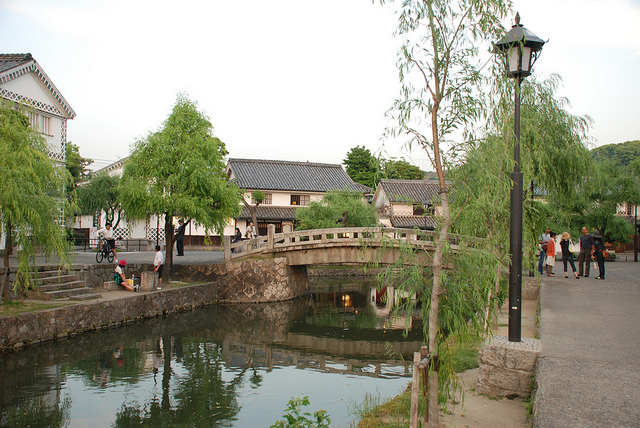
Okayama Castle (Okayama-jo)
Okayama Castle, known as Crow Castle for its black exterior, is an excellent Japanese construction, six stories high. Its dark walls and finely engraved adornments will make you want to take a look inside, as it is equally fascinating.
In the 17th century, the castle was called Golden Crow Castle, as the central keep featured golden gilded roof tiles. Now only part of the castle’s roof remains gilded in gold. Just across the river from Korakuen Garden (one of the most beautiful gardens in Japan), this fortress makes for a perfect visit after a busy day.
Location: 2-3-1 Marunouchi, Kita Ward, Okayama Prefecture 700-0823
Korakuen Garden
Korakuen forms part of Japan’s three most beautiful gardens ( together with Kenrokuen in Kanazawa and Kairakuen in Mito ). Each garden represents vivid examples of the essence of Japan’s spiritual culture.
Kokaku-en in translation means “ Garden of pleasure after” – a reference to the Confucius saying that a ruler must first attend to the needs of the ordinary people, and only then should he consider his own.
By having this in mind, you can better understand why this garden is regarded as one of Japan’s best . Its colors are completely different with every season, and the surprises behind each corner are countless.
Location: 1-5 Korakuen, Kita Ward, Okayama Prefecture 703-8257 Website : http://www.okayama-korakuen.jp/english/

Yumeji Art Museum
Located nearby the Korakuen Garden, the Yumeji Art Museum is the perfect final destination. It is famous for the art of the great Japanese master Takehisa Yumjei, who is known as the Japanese Toulouse-Lautrec .
His depiction of beautiful women in kimonos and smooth S-shaped lines has become a signature of his own artistic style, called Bijin-ga . The museum is one of the main local atractions and is included in the Michelin Green Guide , with one star.
Location: 2-1-32 Hama, Naka Ward, Okayama Prefecture 703-8256
Hiroshima (Week 3)
For more information about what to see in Hiroshima, refer to our Japan in 14 days article.
Hondori – Downtown Hiroshima
Hondori is one of the main city streets of Hiroshima. However, it is not the typical central street. The whole place is undercover, which makes it the perfect place to go on a rainy day or an escape from the summer heat. Moreover, the street is also closed to traffic so that visitors are not disturbed by the city noise.
Home to various department stores, cafes and restaurants, Hondori offers all visitors the opportunity to try some of Japan’s traditional meals, have a coffee with your friends or just take a stroll downtown.

The Electric Railways
Even though this may not be the most efficient way to move around, hopping on one of the Hiroshima tramways will bring you an entirely new experience. The city atmosphere completely changes when you see the inside of the city from the tram mirrors.
One of the great things about it is the flat fare – no matter how far you go, you always pay the same amount. So hop on and take in as much from this authentic Hiroshima atmosphere as possible.
Shukkeien Garden
Although it is not included in Japan’s list of top three most beautiful gardens, Shukkeien stands on the ground of so much history, events and art that it can be easily qualified as National Treasure.
The garden was originally built in 1620 by Ueda Soko as a private villa garden for the feudal lords of Hiroshima. In the early 1940s, the doors of the garden opened to the general public and made it famous quite quickly throughout Japan.

Miyajima (Week 3)
For more “What to do in Miyajima” suggestions, see our Japan in 14 days article.
Mount Minsen
If you have already visited the gorgeous Itsukushima Shrine and are looking for nature and unforgettable views – go straight up Mount Minsen. Located at 500 meters above sea level, this is the highest peak of Miyajima, offering breathtaking views that spread all the way to Hiroshima.
But if you wish to climb by foot – go ahead! For those who not so eager to walk, a ropeway will take you up the mountain, straight from the town. However, note that to reach the peak you will have to walk 1 km before getting to the highest point.
Sambashimae Park
This park is a place where wild deer run free and people go to take relaxing walks and enjoy nature. If you wish to escape the crowds and enjoy a quiet park with beautiful temples and various shops, this is the place for you. Our recommendation: breathe in the fresh air of Sambashimae with your family and friends.
Please, do pay attention to the signs and do not feed the deer, as these are wild animals.
Daisho-in Temple
Daisho-in is a spiritual place, where visitors can experience a live prayer session, accompanied by a taiko drum performance. Take your time and enjoy all the hidden gems this temple and its surroundings have to offer. The peace and serenity of the place will keep you protected from tourist noise, as it is located at the foot of the Minsen mountain and far from any shopping boots. An excellent end for any trip!

Other destinations
Finally, for further information about other possible destinations like Nikko, Kamakura, Takayama, Kanazawa, Hakone or Mount Fuji, please check our other guides:
- Japan in 14 days travel itinerary
- Tokyo to Mount Fuji with the JR Pass
Related posts
Related tours & activities.
hello, I am travelling to Japan in April and would like to know whether I will be able to buy JR pass in japan. I read that till end of march it is possible to buy directly after I arrive to country. will it also be possible in april? thank you.
Hi Ivan! The JR Pass can be purchased online or through specialized agents, like this website . However the pass is also sold at selected stations inside Japan, at an increased cost. While you are now able to purchase the JR Pass in Japan, please keep in mind that it is only sold in particular stations, at a higher price and you are required to pay in Yens, as no other currency will be accepted. Happy travels!
Hi there, going to japan for 21 days end of March 2019. We’re flying in to Tokyo and departing out of Osaka. Would you recommend to buy the 21 days pass or pay as we go from Tokyo to Osaka since we’d like to stop over various cities in between?
The JR Pass gives you unlimited access to all Japan Rail National trains, JR bus services, ferry services, and airport transfers. A 7-day JR Pass only costs ¥29.110 which is actually cheaper than a return ticket from Tokyo to Kyoto on a Shinkansen bullet train . This means that if you make just one long-distance trip you can already save money. If you make multiple trips then you start saving thousands of yen. In addition, when you start factoring in the money you would spend on the metro, buses, transfers, and ferries, then the savings become a must. A return transfer from Narita Airport is over ¥2.600 and a one-day metro and bus pass in Tokyo costs around ¥1.590.
We recommend you to check which are the individual costs of your itinerary and compare them to the cost of the Japan Rail Pass to assess if it’s the ticket that best fits your trip.
Happy travels!
We are planning a 21 days trip to Japan in April 2019. Ideally we would like to stay in Tokyo and Kyoto and use these cities as a base for day trips (by train) to other cities in Japan. We will spend 3 or 4 days visiting these 2 cities but we are looking at ways to explore other area of Japan that can be reached easily.
Since we do not want to carry our luggage during the day trip we are looking at day trips that can be done by leaving in the morning and returning to Tokyo / Kyoto at night.
Also we are looking at day trips that can be done by foot from the train station at destination.
Can you indicate cities were this can be done using a JR Pass. (a short bus ride at destination could be acceptable if it is not too complex) Thanks so much
Our best advice can be found at our articles below:
Best 5 day trips from Tokyo by train Best day trips from Kyoto by train
We hope you enjoy your stay!
we are travelling to Japan next year arriving 26 April in Tokyo and departing 16 May, so almost 3 weeks. Your itinerary looks really interesting. We would really like to see the Japanese Alps as well. How would you suggest we work this in, and can the JR pass be used to get there? Where would you suggest we base ourselves in this region? Also we don’t want to be changing hotels every couple of days, so if we were to base ourselves in a couple of places where would you suggest?
Hi Rayne! Takayama is easy to access using your Japan Rail Pass . If traveling from Tokyo to Takayama, first take the JR Tokaido Shinkansen to Nagoya. If traveling from Kyoto or Osaka to Takayama, from either Shin-Osaka Station or Kyoto Station, take the Hikari or Kodama trains on the Tokaido Line to Nagoya. Once in Nagoya, take the JR Hida Limited Express to Takayama. Happy travels!
Hello, Thank you for all this information. My question: I arrive in Tokyo Narita on May 8, 2018 at 1650 hours. I would like to get to Kyoto that night. Is there a timetable for trains from Tokyo to Kyoto?
A standard Tokyo to Kyoto trip with the JR Pass takes close to 2 hours and 40 minutes, taking the Hikari Shinkansen. Hyperdia offers detailed timetables, platform information, trip duration and exact distance, which will help you greatly in organizing your trips in Japan. We strongly recommend you to check it to better plan your trip.
We hope you enjoy your stay in Japan!
Hello! This blog is very useful however I stil have a lot of questions in mind regarding the 14 day JR rail pass. We are planning to travel from kumamoto to fukuoka, hiroshima, nara, kyoto, osaka, nagoya, shizuoka, tokyo, gunma, niigata, fukushima, sendai, miyagi and sapporo. Would this be possible with the 14 day JR rail pass without any additional charges? Id be very glad if you would have suggestions on out itinerary. Thank you very much.
Kumamoto and Fukuoka are connected thorugh the Kyushu Shinkansen. This bullet train allows rapid travel between these cities and is included in the Japan Rail Pass. Then you can easily reach Hiroshima in the the Sakura train on the Sanyo Shinkansen line. Hiroshima is two hours from Fukuoka. This train is also covered by the JR Pass. From Hiroshima you will be able to easily reach Kyoto traveling on the Sanyo Shinkansen until Shin-Osaka Station and them transfering to the Hikari bullet train to Kyoto Station .
To get from Kyoto to Nara , begin at Kyoto Station. Take the Miyakoji Rapid Train, on the JR Nara line to JR Nara Station. After that you will be able to easily reach Osaka in the Yamatoji Rapid Train from JR Nara Station to JR Osaka Station . To go to Nagoya from Osaka, begin your journey at Shin-Osaka Station. Take the JR Tokaido Shinkansen Kodama or Hikari trains to Nagoya Station. Shizuoka is a stop located at the halfway point between Nagoya and Tokyo. From Nagoya Station, Shizuoka is about a one hour ride on the Hikari train or one hour and 20 minutes on the Kodama train of the JR Tokaido Shinkansen Line. From Shizuoka you can easily reach Tokyo taking the JR Limited Express Odoriko.
Since Gunma, Niigata, Fukushima are prefactures it is very difficult to guide your itinerary at this point since it will depend on where you aim to go but most well known places are also accessible in transportation included in the JR Pass. Just a quick note: JR buses , included in the Japan Rail Pass, operate locally in Gunma, Niigata and Fukushima!
Sendai is easiest accessible from Tokyo: from Tokyo Station , take the JR Tohoku Shinkansen line to Sendai Station. When using the Komachi, Hayate, or Hayabusa trains, the trip takes just over an hour and a half. On the Yamabiko train, expect a journey of two hours. The entire trip is covered by the JR Pass. Finally, travel to Sapporo by train is fully covered by the Japan Rail Pass. From Tokyo Station, take the JR Tohoku / Hokkaido Shinkansen to Shin-Hakodate Station. This is the halfway mark of the nearly eight-hour journey.From Shin-Hakodate Station, you will take the Hokuto limited express or Super Hokuto trains to Sapporo Station.
We hope you have an amazing trip!
Hello! Thank you for this itinerary, it has been very helpful for our 18 day trip around Japan. We are going in January and spending a day in Kanazawa. We wanted to visit the UNESCO village of Shirakawago at night from Kanazawa Station, is this possible? How do we get there and what is covered/not covered by the JR Pass? Thank you very much
It is perfectly doable to embark on a day trip to Shirakawa-go during your stay in Takayama. There are no train services to Shirakawa-go, but the Nohi Bus is available from Takayama. The trip lasts approximately one hour and is not covered by the Japan Rail Pass.
Have a nice trip!
We are looking to plan a trip to Japan in 2018, arriving May 10th and leaving June 2nd. So far my plan is: Kyoto (5n) – Fukuoka (2) – Hiroshima (2n) – Koyasan (1n) – Osaka (4n) – Numazu (4n) – Tokyo (5n). I would of course plan some day trips (to Nara and Miyajima for example).
– Is this a well-balanced itinerary? – Can we use a 21 days pass for most of the trip? – Can we get around Tokyo for 2 days without a pass or should we consider switching our stays in Tokyo and Numazu?
Thanks, Leen
Yes – the Japan Rail Pass will cover the main trips between the mentioned cities.
– To go from Kyoto to Fukuoka you will need to make one change of line, which will presumably be at Shin-Osaka to change from the Hikari bullet train that runs on the Tokaido line to the Sakura train on the Sanyo Shinkansen line, departing from Shin-Osaka Station and arriving at Hakata Station. This trip entails about two hours and forty minutes of travel time. – To get to Hiroshima from Fukuoka, you might want to take the same Sakura train on the Sanyo Shinkansen line and get off at Hiroshima Station. – To arrive to Mount Koya with your Japan Rail Pass take the JR Kuroshio train from Shin-Osaka to reach Wakayama station. Once there, take the JR Wakayama line for 19 stops, until you reach Hashimoto station. From Hashimoto station take the Nankai-Koya line and ride for 9 stops, until Gokurakubashi station. From there, take the Nankai Koyasan Cable car for a short 5-minute ride. Get off at Koyasan station. This same line will take you back to Osaka for the next stage of your trip! – While in Osaka, you will be entitled to use the Osaka Loop line at no additional cost. Please note that not all transports within the city are included in the Japan Rail Pass. – To get from Osaka to Numazu, you will have to ride the Shinkansen Hikari from Shin-Osaka to Shizuoka Station. Once there you will have to transfer to JR Tokaido Line (for ATAMI) and get off at Numazu Station. – Once in Tokyo you will be entitled to use the Yamanote line at no additional cost, as well as the Keihin-Tohoku Line, the Rapid Chuo Line, the local Chuo-Sobu line and other metropolitan lines that circulate on the outskirts of the city such as the JR Keiyo, Musashi, Nambu and Yokohama lines. Please note that the rest of lines are not included in the Japan Rail Pass and thus it could be interesting to get arount Tokyo the last days without the Japan Rail Pass. – Nara can be easily reached from any of the main cities using your Japan Rail Pass, we recommend to read our Nara guide for further information. – Miyajima can be easily reached from Hiroshima by taking a tram to the Miyajimaguchi ferry port. The good news is thatou can use your Japan Rail Pass to access the JR ferry for free. The ferry ride takes only about ten minutes.
Very happy travels!
Comments are closed.
APRIL SALE: Discover and book at up to 60% off!
Fully Guided Tours & Trips in Japan
Find the right fully guided tour for you in Japan. There are 284 trips to choose from, that range from 5 days in length, up to 28 days. The month with the most departures is October, making it the most popular time to visit Japan.
Filters applied
250+ fully guided tour packages in japan with 4,268 reviews.
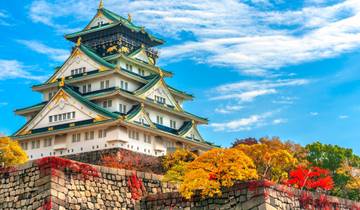
- In-depth Cultural
- Train & Rail
- Christmas & New Year
Japan Express: Osaka to Tokyo
We had a wonderful trip and LOVED the other travelers in our group! (We are just amazed and relieved that we managed to avoid the big typhoon that came through just two days after we left...). Our leader Fuji was great. We had difficulty understanding his accent--especially at first--but we grew to really appreciate his quirky sense of humor and amazing navigation skills! Aside from the language difficulty, our only critique of him was that he readily admitted he did not know very much about some of the temples and shrines that we visited, so we did not gain as deep of an understanding as we might have with a different guide. There were times when the itinerary felt a bit rushed, but we are so glad to have had so many amazing adventures along the way, and in hindsight I wouldn't have skipped anything. We were also in Hiroshima on the anniversary of the bombing, which made the visit a bit more crowded, but also more meaningful. I will highly recommend this trip to all of my friends!
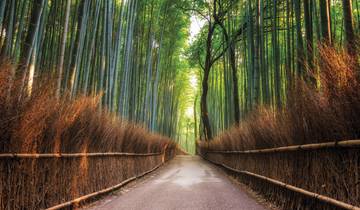
- Coach / Bus
Contrasts of Japan
Loved our guides, José and David. Very informative. Good locations visited, nice hotels and bus transportation. And the food was great also ????
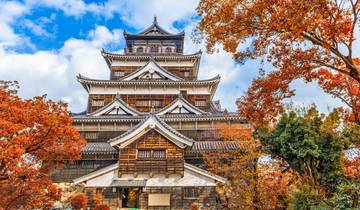
Epic Japan: Speed Trains & Street Food
The tour was great but with out van ratha it wouldn’t be the same he made my holiday he was on hand 24/7 great guy hope to travel with him in 2019
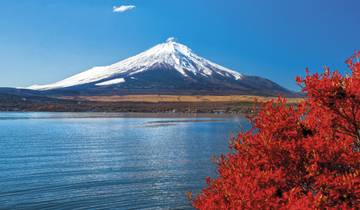
Contrasts of Japan end Tokyo
Pablo was “amazing”, best tour guide ever Dinner meals need improvement Itinerary should say “a lot of walking involved” There’s also only too many shrines and temples on the itinerary as I’m sure everyone was over seeing them by the end Disappointed that Pablo had to speak in Spanish and English to the group but thankfully it was only for half a day for us but for those that went on I’m sure it would have got very annoying as we found it extremely annoying for the short time we had to put up with it Overall........good tour that needs some improvement

Japan Express
A good intro to Japan. Short daily orientation and tours leaving most afternoons and evenings (if one so desired) to one’s own devices. Good hotels most nights, w some authentic or western (mixed options) lodgings w onsen. Most transport needs were accommodated in trains (the best), and some city buses where more effective. I added extra days, both front and back for extra exploration. Japan is surprisingly clean, safe, orderly, polite (to a fault) and relatively cheap (I found). Our guide did very well, and her English good and improved as we went along.
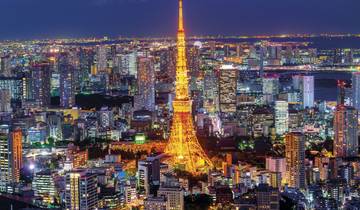
Tokyo, Kyoto and Hiroshima end Tokyo
I highly recommend this tour for anyone who has never visited Japan or who wants to know more about the rich history and culture of this dynamic country. We saw and learned a whole lot more than we could have on our own. There was a lot of variety in the places we went and always a lot to see. It was nice to have everything set up for us every day, but still had time to explore on our own at least once a day. The tour guides were very informative and, at times, funny. The accommodations were decent with the last hotel being very nice! The only complaint I might have is that one or two of the restaurants where the tour set up meals was just so-so, but most of the meals were good to very good! I find that the Japanese pallete may not appeal to many people, however there was some western food available at many of the venues.
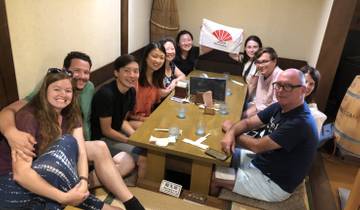
Stunning Japan with Shirakawa-go (private 3 star hotel rooms)
The tour was good in : 1.coverage of many different cities in the 9 days 2. Visited many popular places of interest 3. Philip, our tour guide was nice but the driver, Uchimura-san was really topnotch. His driving was very smooth and very safe,. even when the roads were wet with snow. The tour was not so good in: 1. The Osaka Castle Hotel was abit rundown, and it was very noisy in the early morning. It sounded like someone was doing some construction work. The airconditioning was not working and it was warm. 2. The itinerary states that we would visit Arashiyama in Kyoto but we were asked to join and pay for a Kyoto tour. 3. In the Mt Fuji area, itinerary stated that we would go for a cruise on Lake Ashi but we were taken on a cruise on Lake Kawaguchi. 4. In Suwa, the Sun Route Inn had 2 blocks. I don't understand why we were put in the block where the bus can't access., and we had to lug our luggage across the road. 4. The hotel in Tokyo was situated in Ariake. While it is pretty new. Ariake is quite far to go to various places in Tokyo. Overall, I would give this tour a 4/5

Japan: Tokyo Nights & Kyoto Temples
An awesome experience with a great group of people and a lovely guide. It was nice to have all the locations and transport organised but still have the freedom to do what you wished in each place.
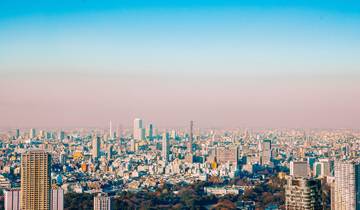
- Food & Culinary
Japan Real Food Adventure
Some more time in Osaka and visiting Koyasan at a less busier time would be good. The visit to the tea farm was great! Special Thanks to our guide, Morry the magician. He led us to some places that weren't included in the included activities.
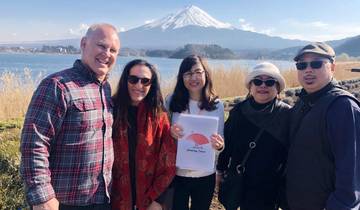
Japan Delight with Hiroshima(private 3 star hotel rooms)
The tour itself was good and enjoyable. Aoki the tour guide was great at explaining the history of different sites and keeping everyone moving and on time. Our only complaint was about some of the hotels…some of them control the heat centrally and do not give you the option to lower the heat. Our room in Osaka was unbearably hot and we had to fight with the hotel staff who finally changed our setting to just fan. Otherwise no issues.
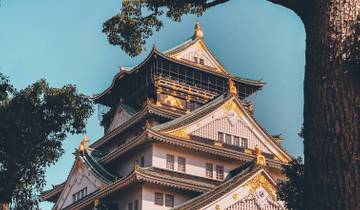
Epic 13-Day Japan Budget Tour: Odyssey Across the Land of the Rising Sun
I had a great time! The trip was great! I would just suggest better planning with food schedules/recommendations as we were often rushed into getting something quick from 7-11 for lunch and 30 mins later were told we had free time, where we could’ve had lunch more calmly.
- 5% deposit on some dates Some departure dates offer you the chance to book this tour with a lower deposit.
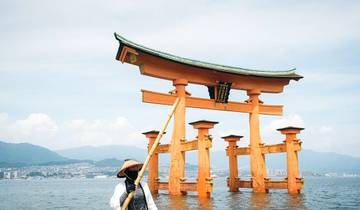
Premium Japan
We had an amazing holiday. Japan was all we had hoped for. The group worked so well, we all got on and became good friends. Shingo, our guide was totally great. He was so pleasant and helpful. His English not brilliant but he did a great job. We felt maybe a little more information on places and sights might have been good. He was constantly helping us all and looking after us. He made great suggestions for meals and always checked up on us all, even when we split into smaller groups for the evening. He went way beyond what he could have done and made everyone feel safe and well looked after. He even helped booking all our onward travel and ensured we were all ok on the day. Wonderful man!! The hotels were nice, if a little small with almost no storage in most of them! Breakfasts were generally very good. We saw and did so much. In fact, we felt sometimes it was a little too much to fit into each day, and either missed some things out or were too rushed, missing stopping and looking at leisure at things and shops etc. Shingo was so patient, even when we caused him to run a little late! Due to distances covered we spent a lot of time travelling which was an interesting experience. Just meant time at destinations was a little short. As Most of us were older we all felt very tired at the end of each day and struggled especially when we had to carry back packs whilst waiting to be reunited with luggage. Dont know what the answer is, if extra days added, then expense goes up. If itinerary cut back, then Interesting sights missed out! Overall, a truly great trip. We enjoyed it all!
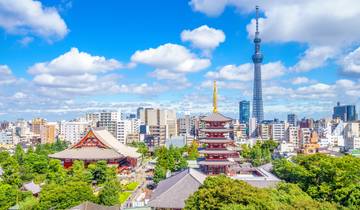
All Inclusive Japan Classics- 9 days
We had the most amazing time, cannot recommend this company enough! We will treasure the memories of this trip always
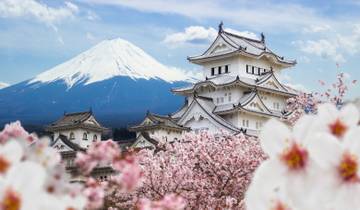
9 Days Splendid Japan Deluxe with Nagoya(4 star hotels)
Enjoyed trip . Guide was good. Nice combination of historical sites, modern Japan, food and onsen experience was excellent .
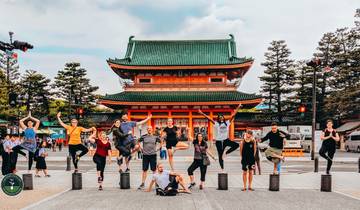
Japan One Life Adventures - 14 Days
This is a backpackers value for money tour. The success of Tour mostly depend on Tour guide and Dale has done a wonderful job both professionally and personally. Coordinating with 22 persons from different parts of the world, taking them through public transport, arranging stay in multi sharing hostels and included dinners at various places is a Herculean task. I enjoyed the trip.
What people love about Fully Guided Tours in Japan
The guide was the best
Good tour - maybe too many temples
Japan was so fun! A looooooot of free time so do you researches about what to do and visit in every city. Would have love more ''organised'' activities (like a dinner every night with the group,...). Compared to other G Adventures tour I did in the past, I felt that this group was less stick together since there was only a few group activities.

Regions in Japan
- Southern Japan (245)
- Central Japan (241)
- Honshu (237)
- Northern Japan (14)
- Mount Fuji (12)
- Kansai (10)
- Hokkaido (8)
- Shikoku (7)
Travel Styles
- Fully Guided
- Japan Travel Guide | All You Need to Know
- 2 Week (14 Days) Japan Travel Itineraries & Cost 2024/2025
- 1 Week (7 Day) Japan Travel Itineraries 2024/2025
- Best 3 Week (21 Days) Japan Travel Itineraries 2024/2025
- Discover the Best Japan Vacation Packages 2024/2025
- What is the best time to visit Japan in 2024/2025?
- Weather in Japan in 2024/2025

A Detailed 21-day Japan Itinerary
W hen travel is concerned, I firmly believe that you should always, always stay in a place at least as long as it took to get there—especially when that place is halfway across the world. You’ve got to make it worth your while! With that in mind and with 19 hours of transit ahead of me, I set out to put together my three-week Japan itinerary which, as a first timer in the land of the rising sun, would take me to all the main sights.
From Edo-era castles to metropolises, from shogun villages to iconic volcanoes, and from tranquil temples to surprising wildlife, here’s what I did in the space of three weeks.
TOKYO // 4 days
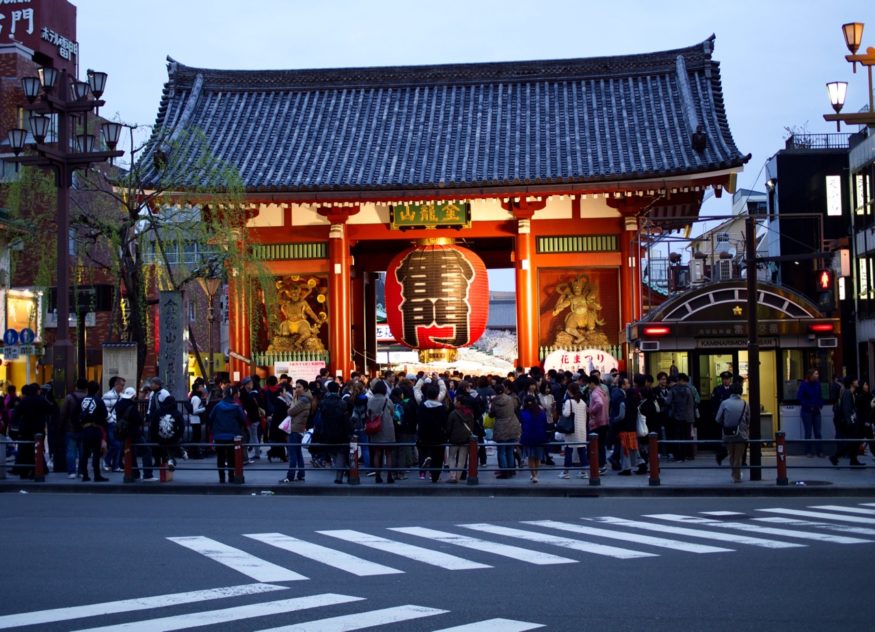
With most flights landing into Narita airport, it only made sense to spend a little time in the Japanese capital; plus, it’s the kind of mega city you’ve just got to be in to fully grasp its tremendous size and significance. Nevertheless, I was hesitant about spending too much time in Tokyo, however fascinating it may be, as I wanted to cover as much ground as possible.
Regardless of how much or how little time I was in Tokyo for, I simply would not forego drinks at New York Bar atop the iconic Park Hyatt: totally worth the expense, the best possible way to conclude (or begin!) this epic Japanese odyssey. This is where they filmed Lost in Translation .
Useful tip: if you’re budget-strapped, skip the prohibitively expensive observation deck fees and go to Sky Tree East Tower instead where you get can to the 31st floor free of charge; not quite as high, but still impressive (see city view photo above).
Where I stayed in Tokyo
- Millennium Mitsui Garden Hotel Tokyo
Tokyo guided tours & day trips:
- Old and nostalgic Tokyo: Yanaka walking tour
- Samurai experience
- Geisha experience + Kaiseki course dinner
- Tsukiji fish market tour with sushi making experience
+ japan travel tips
Everything you need to know about the japan rail pass, nikko // 1 day.
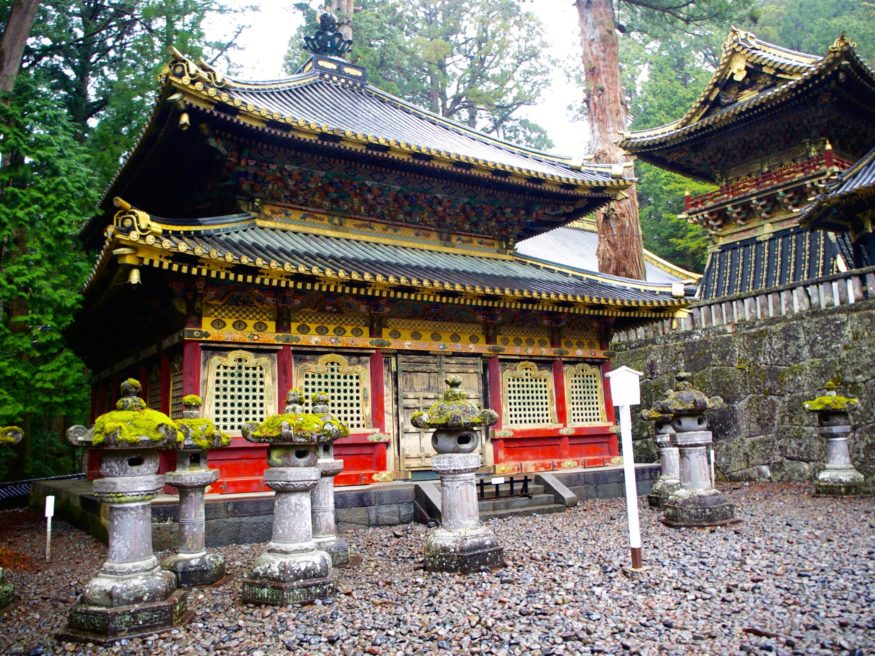
The small city of Nikko is located in a mountainous area north of Tokyo called the Tochigi Prefecture, and is home to some of the most famous and esteemed shrines in the country: UNESCO World Heritage Site of Toshogu Shrine, erected in 1617 to commemorate the founding ruler of the Tokugawa shogunate and ultimate feudal military government, Tokugawa Ieyasu. It’s a stretch on any typical Japan Itinerary but it’s well worth the trip.
Here, you will find luxuriant woodlands with rows and rows of stone lanterns, occasionally dotted with vermillion gates. A truly spiritual and grandiose place and one of the most popular day trips from Tokyo, although it is possible to stay overnight.
Where I stayed in Nikko
- Okunoin Hotel Tokugawa
Day trips to Nikko
- Morning hike and birdwatching around Nikko Toshogu Shrine
+ Japan travel tips
First time in japan: 11 things that surprised me, mount fuji // 1 day.
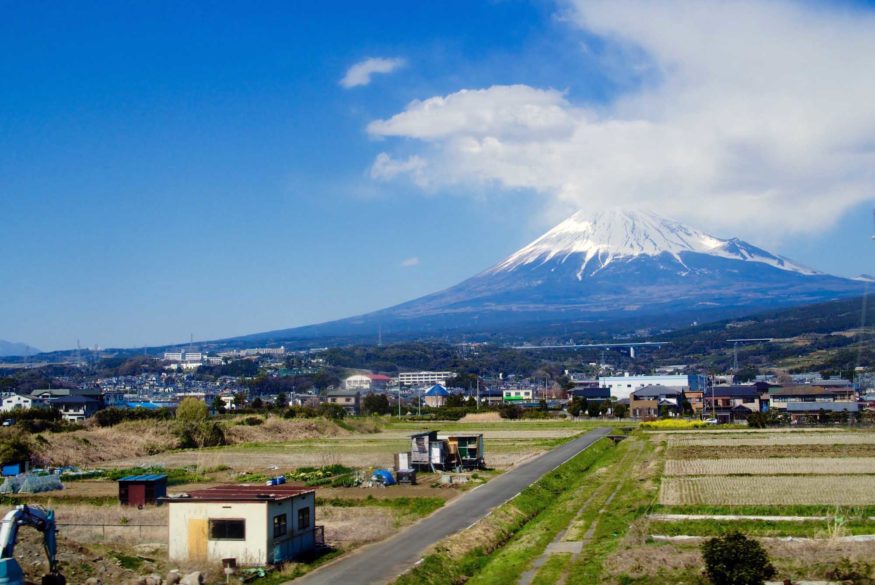
Located right outside Tokyo, the majestic mountain is one of the most popular day trip destinations in the area. Rightfully so; the stratovolcano is Japan’s highest peak at 12,389 feet tall as well as both a Special Place of Scenic Beauty (a great page to bookmark if you want to hit Japan’s prettiest sights, by the way) and a UNESCO World Heritage Site.
The easiest and most cost-efficient way to admire Fujisan is by sitting on the right-hand side of the shinkansen travelling between Tokyo and Kyoto. The mountain majestically soars into the picture about 45 minutes into the journey.
Day trips to Mount Fuji
Many tour operators offer day trips to the sacred mountain; should you wish to travel to Mount Fuji independently , note that hiking trails are only officially open in July and August. You can also book this VIP experience in Mount Fuji with local priests .
+ kyoto travel tips
Things to do in kyoto: highlights for first-time visitors, kyoto // 5 days.
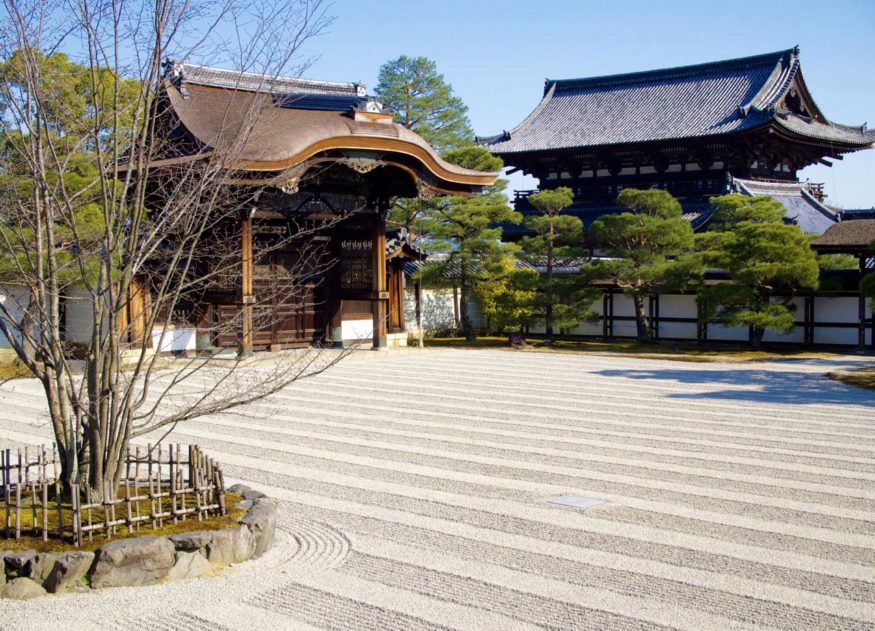
Not only does Kyoto hold an impressive quantity of temples and castles, it is strategically located on the Tokaido Shinkansen line for easy side trips and has plenty of mouth-watering restaurants to keep your appetite satisfied. Speaking of which, most of the noteworthy temples are located in the same area north-west of the main train station, making it easy to visit all of them on a single day: I’m specifically thinking of Kinkakuji (the Golden Temple), Ryoanji and Toji-in temples.
Other fun things to do in Kyoto? Arashiyama (bamboo grove, monkey park, splendid hiking opportunities), Ginkakuji (the Silver Pavilion), Toji Temple (believe it or not, it’s an entirely different temple), Philosopher’s Walk and Higashiyama historic district.
Handy tip: if you’re planning on wearing sandals or go commando in your shoes, bring a pair of socks with you; this being Japan, you won’t be authorised to enter temples with your shoes on or barefoot.
Also, a side note about maikos and geishas in Gion: whatever you do, remember to be respectful to geishas you encounter. If you want to take a picture of them, just ask – a lot of geishas have complained in recent years that tourists act like ruthless paparazzi. Please don’t be that person!
Where I stayed in Kyoto
- Hotel Granvia Kyoto
Kyoto guided tours & day trips:
- Kyoto full-day sightseeing tour
- Kyoto Imperial Palace, Golden Pavilion and Nijo Castle
- Samurai school
- Arashiyama & Sagano bamboo private tour with nationally-licensed guide
- Nighttime all-inclusive local eats and streets, Gion and beyond
- Fushimi Inari hidden hiking tour
- Traditional tea ceremony wearing a kimono in Kyoto
- Izakaya-style cooking class
- Japanese archery experience in Kyoto
Fushimi Inari shrine in Kyoto – in photos
Nara // 1 day.
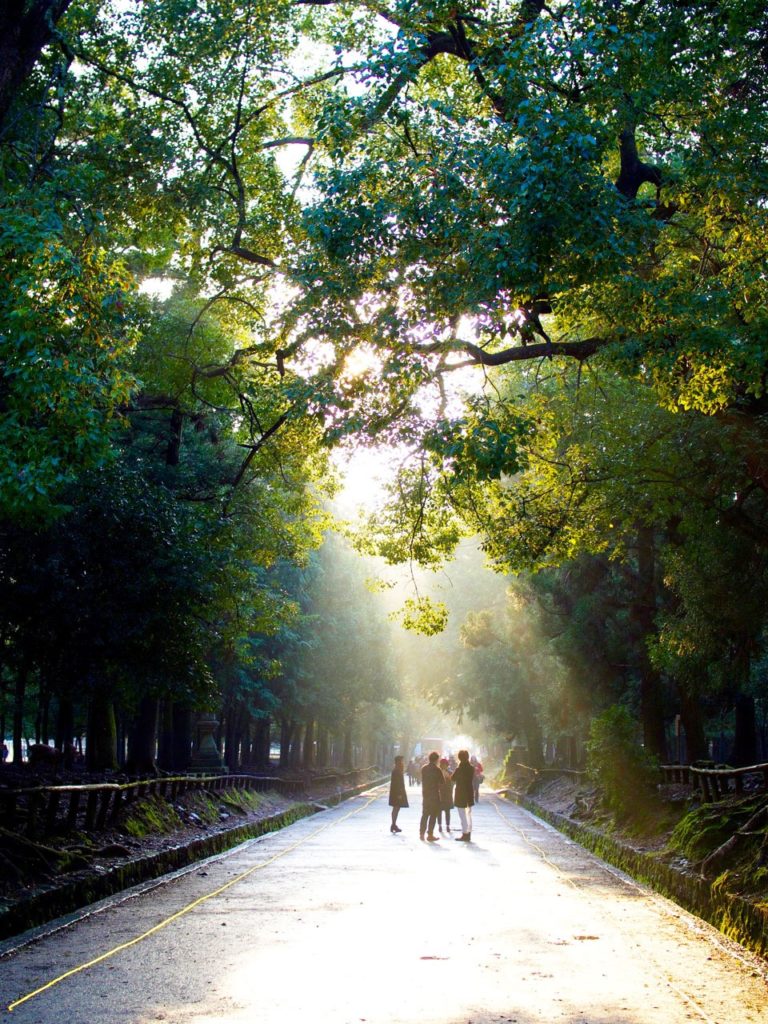
It just ticked all the boxes of things you expect to find in a place like Japan: cute animals, wareshinobu -clad maikos, immense Buddhist temples, and mystical forests. I found all that here, in this small city just outside Kyoto. Although a destination in its own right (there are a few hotels near the train station), Nara is a worthwhile day trip from the ancient capital. It was Japan’s first permanent capital in the year 710; as such, it is home to over eight UNESCO World Heritage Sites, second only to Kyoto as a directory of Japan’s cultural heritage.
Things to do in Nara
- Tōdai-ji : the largest wooden building in the world, which, astonishingly enough, is actually a mere two-thirds of its estimated original size. It contains the Great Buddha (not an understatement, at 16 metres high and 437 tonnes of bronze) is housed inside.
- Horyuji Temple
- Nara Park and its equal parts tame, hungry, and adorable deer
Day trips to Nara from Kyoto
- Highlights of Nara by bike
- Nara craft beer and sake walking tour
HIMEJI // 1 day
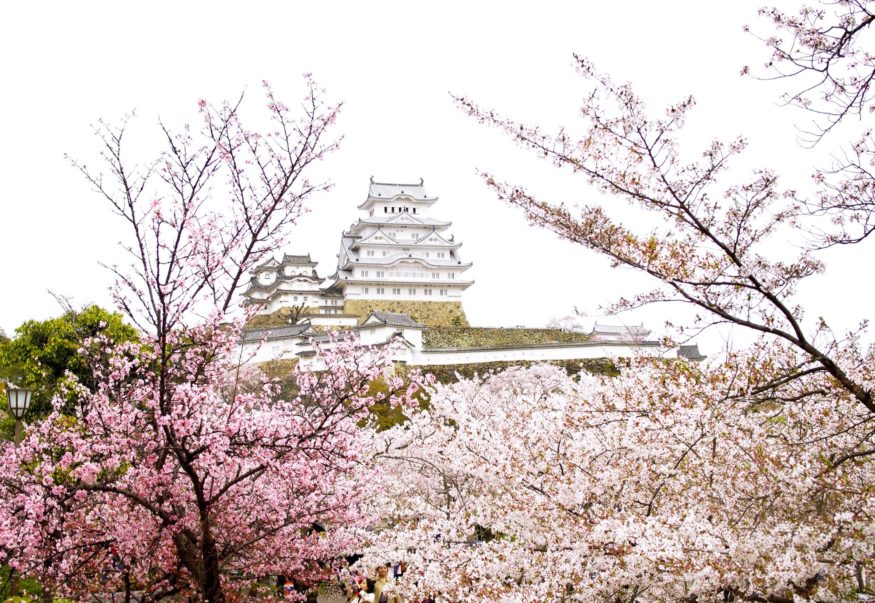
Confession time: I didn’t actually go inside Himeji Castle . I unknowingly turned up two days after the castle had reopened following massive renovations, and frankly I wasn’t too keen on the three-hour long queue. I decided to stick to the flowery gardens instead, knowing that another fabulous castle was on my itinerary later in the week.
Where I stayed in Himeji
- Daiwa Roynet Hotel Himeji
Day trips to Himeji
- Himeji full-day private tour with nationally-licensed guide
+ himeji travel tips
Why you should visit japan during cherry blossom season, hiroshima // 1 day.

You simply can’t travel along the southern coast of Honshu Island — or plan any Japan Itinerary — and not spend some time in Hiroshima. Even though Hiroshima was largely obliterated by an atomic bomb —ironically named Little Boy— during World War II, the city is now thriving and well. Hiroshima Castle and Shukkeien Garden, two major monuments pertaining to Hiroshima’s historical heritage, were destroyed during the bombing and were later on reconstructed; they can be visited today.
The UNESCO A-Bomb Dome acts as a stark symbol of Hiroshima’s newfound peace, as only the skeleton of what once was Hiroshima Prefectural Industrial Promotion Hall building remains. Nearby is the lush and leafy Peace Memorial Park, built over the former business district, which commemorates people who lost their lives on that fateful day in 1945.
Hiroshima guided tours & day trips:
- Hiroshima half-day private custom tour with licensed guide
- Hiroshima cycling peace tour with local guide
- Okonomiyaki cooking class
- Hiroshima bar-hopping food tour
MIYAJIMA // 1 day

Almost right across the bay from Hiroshima is the quaint island of Miyajima , home to the iconic Itsukushima Temple. Its claim to fame is undoubtedly the bold Itsukushima Shrine , which dramatically soars 16 metres high out of the water; it’s often referred to as a “floating torii gate” in popular culture. Interestingly, it’s possible to walk right up to the shrine at low tide—which is why I highly recommend spending a full day on Miyajima.
Aside from the shrine, there are plenty of exciting hiking trails in Miyajima , most specifically around Mount Misen . For great views with zero physical effort, try Shishiiwa Observatory which is only accessible by cable car .
Miyajima guided tours & day trips:
- Authentic tea ceremony experience while wearing Kimono in Miyajima
- Visit World Heritage site Itsukushima Shrine by sea
- Oyster harvest with local oyster farmers
KANAZAWA // 1 day
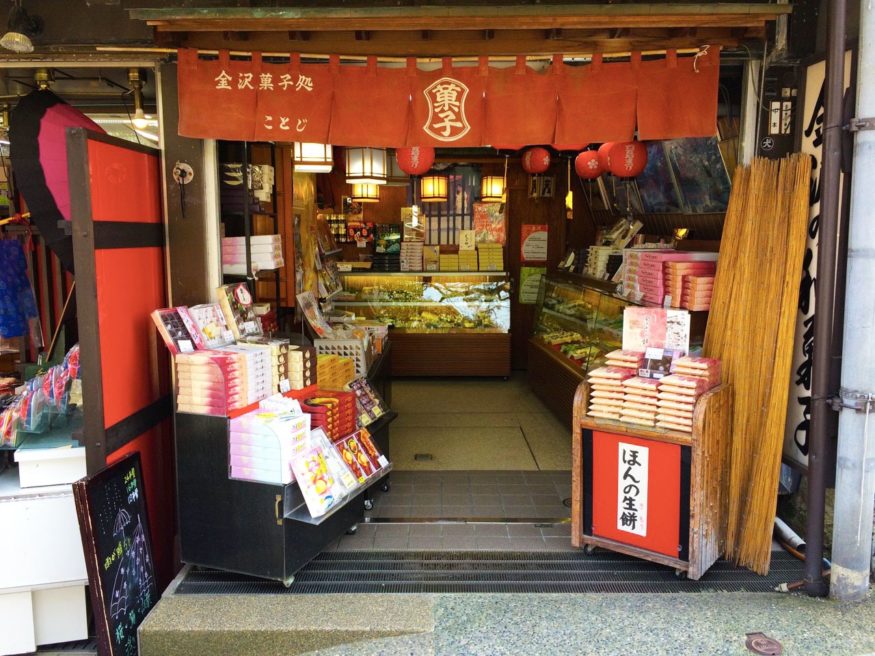
I wanted to visit Kanazawa because of its famously well-preserved heritage from the Edo Period when it served as the seat of the powerful Maeda feudal Clan. It was one of the wealthiest clans in terms of fief sizes and rice production, but with great power come equally great threats. The Maeda clan, therefore, employed several samurais and offered them property at the foot of Kanazawa Castle in Nagamachi District , which can still be visited today.
Japan’s most celebrated landscape garden, Kenrokuen , as well as Higashi Chaya District , filled with ancient wooden teahouses where geishas work and perform, are both well worth a few hours.
Hotels in Kanazawa
The Square Hotel KANAZAWA
+ nagano travel tips
Where i stayed in nagano: yamanouchi ryokan, japanese alps // 2 days.
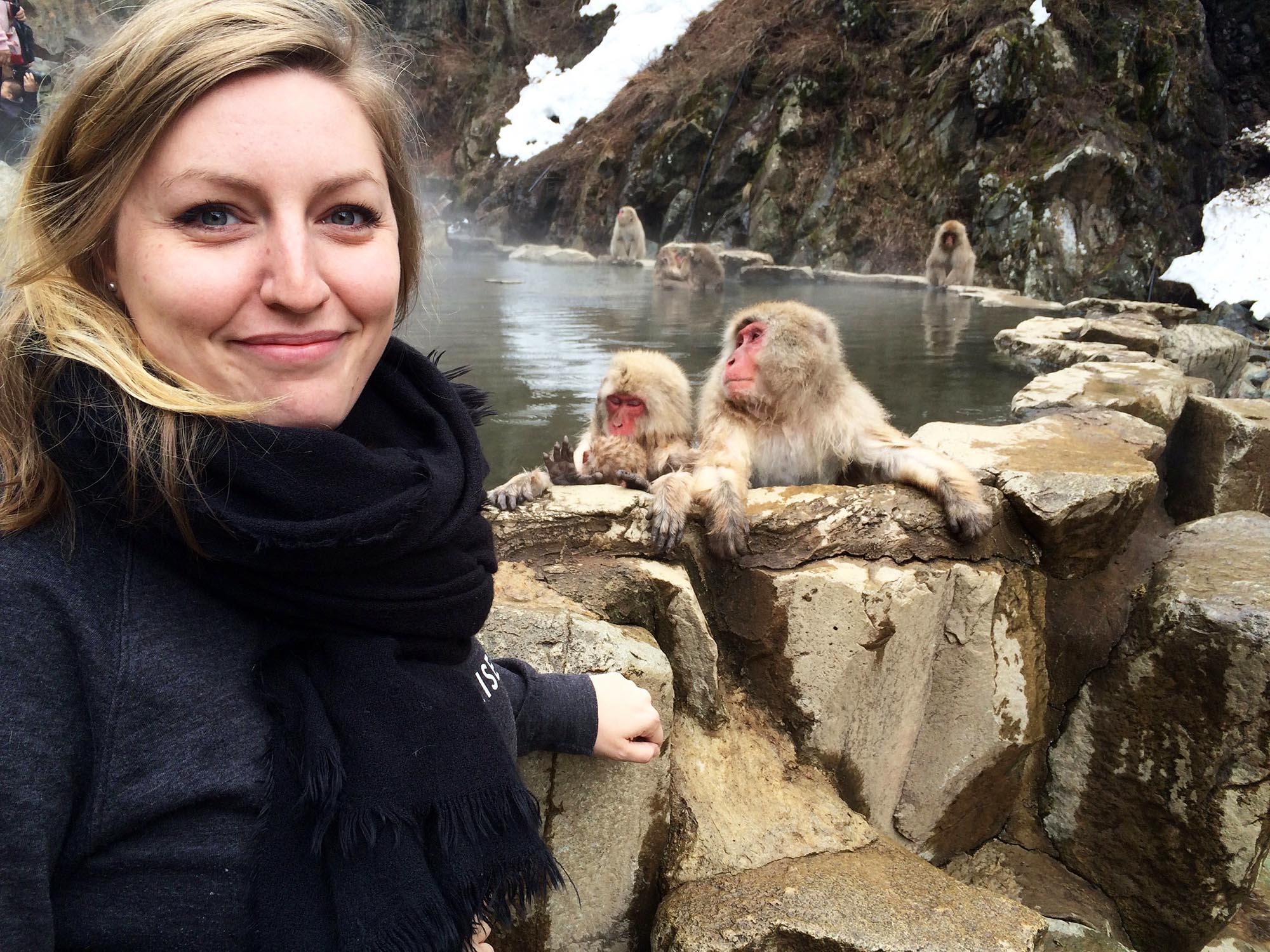
Moving on to the Japanese Alps for the last few days of this Japan itinerary, where I had planned on hanging out with snow monkeys and experience a ryokan with an onsen and a traditional dinner.
It was absolutely perfect and even though I was terrified of committing a cultural faux-pas I managed to make it out unscathed, and infinitely more appreciative of my time in the Nagano prefecture.
Janapese Alps guided tours & day trips:
- Full-day tour of snow monkeys, Zenko-ji Temple and sake in Nagano
- Explore Jigokudani snow monkey park with local guide
- Nagano private 2-day tour with guid and overnight at ryokan
Hiking to Jigokudani and meeting monkeys in Japan
Matsumoto // 1 day.
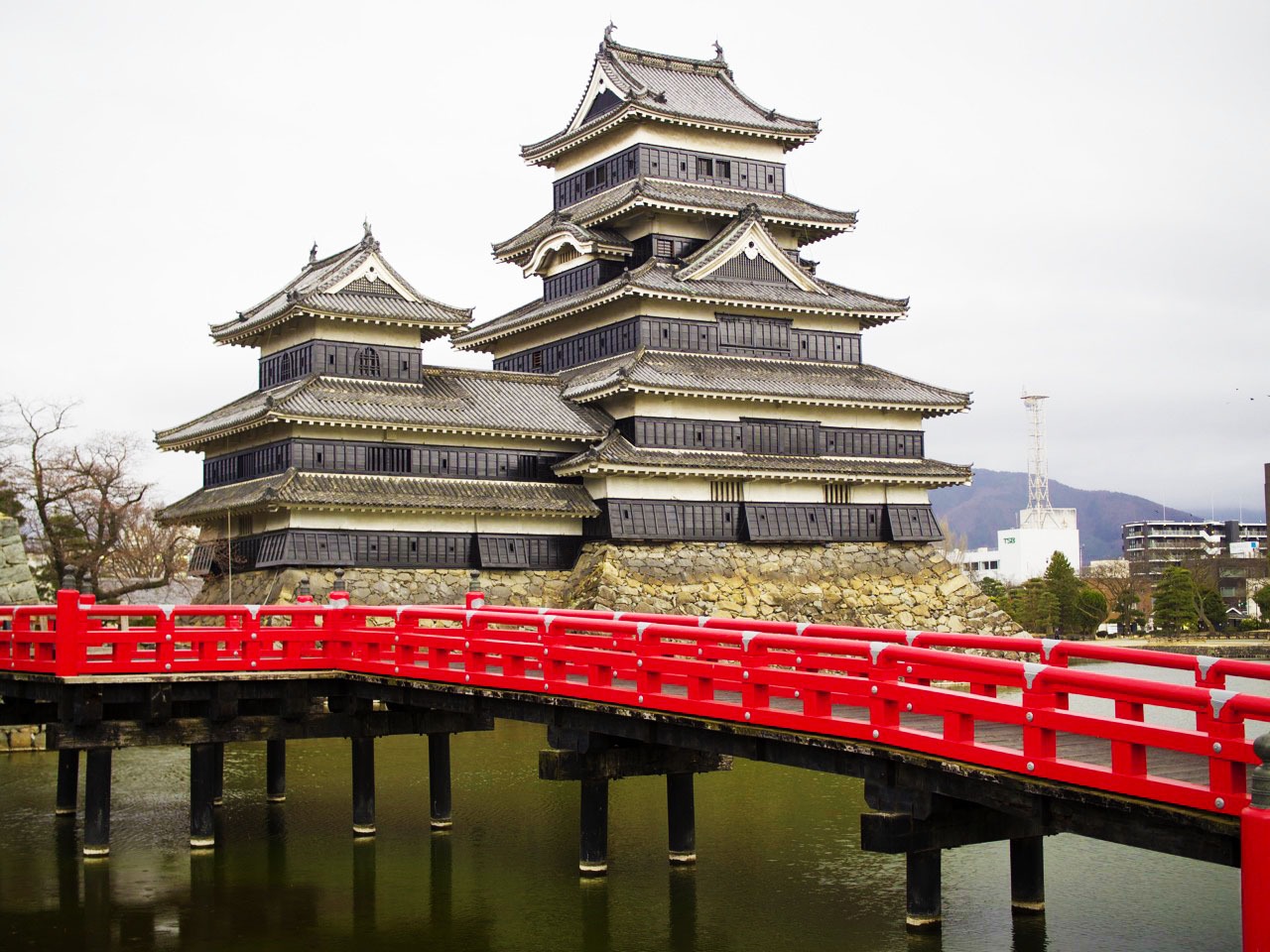
The detour on this Japan Itinerary by this somewhat underrated portion of Honshu Island was mainly to visit Matsumoto Castle , one of Japan’s premier historic castles and a splendid work of art. Its value is simply inestimable, as it still contains original wooden interiors and external stonework. It really was a fascinating journey into the history of the military in Japan; the castle is awash with secret passageways, tricky steep stairs, and other secrets that only samurais were privy to. I think I ended up having a much better and more informative time at Matsumoto than I would have at Himeji, which was way too crowded.
Hotels in Matsumoto
Matsumoto Hotel Kagetsu
Matsumoto day trips and guided tours
- Matsumoto half-day private tour
- Matsumoto castle, sake, food & craft beer walking tour
- Matsumoto castle tour & samurai experience
- Japanese Alps Kamikochi day hike from Matsumoto
Marie-Eve is a native Montrealer trying to balance a deep love for her hometown and an unquenchable thirst for travel and discovery. She has been to more than 36 countries, lived abroad in both France and the U.K., and is always on the lookout for authentic experiences wherever she travels -- especially if it involves wine.
Similar Posts
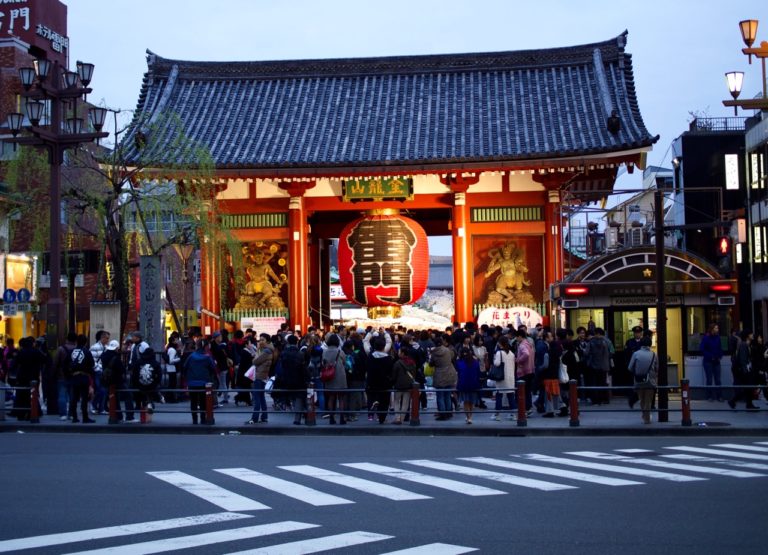
I admittedly knew very little about Japan before I stumbled upon extremely cheap tickets to Tokyo last year and impulsively…
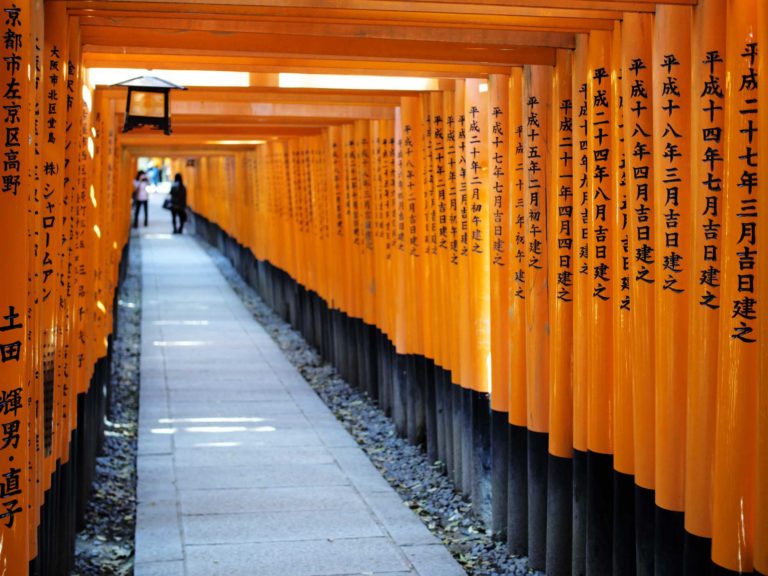
5 useful tips for visiting Fushimi Inari shrine in Kyoto
I woke up to the best intentions that day; get ready in five minutes and head straight to the Fushimi…
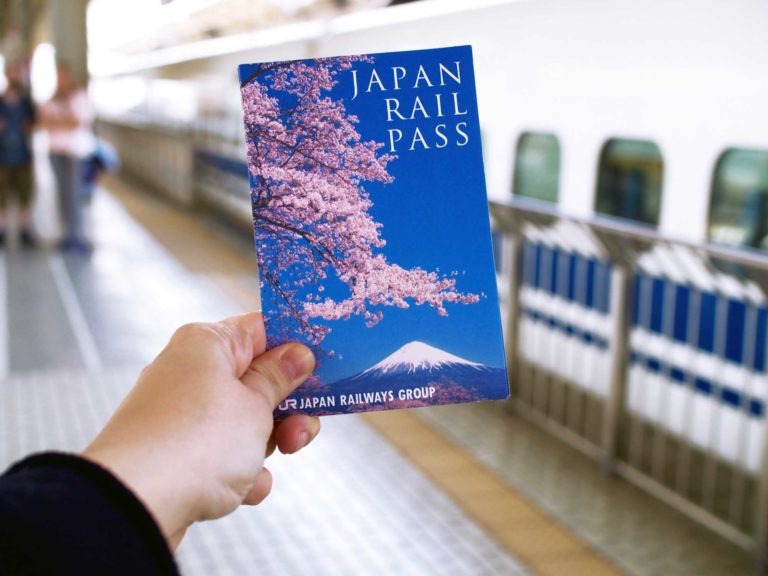
When you think of transportation in Japan, obviously the Japan Rail Pass comes to mind. Experiencing the world-famous bullet trains…
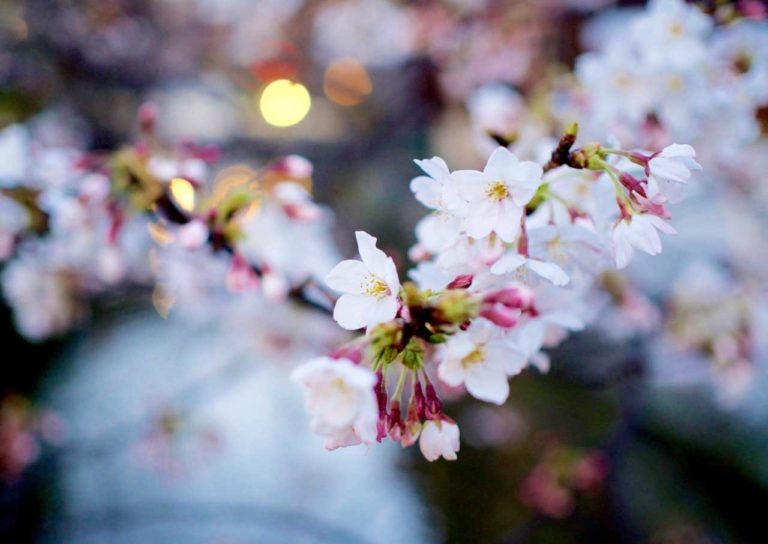
Where and when to see cherry blossom in Japan
Did you know that cherry blossom in Japan is a WHOLE THING? Not only does the Japanese meteorological office dedicates…
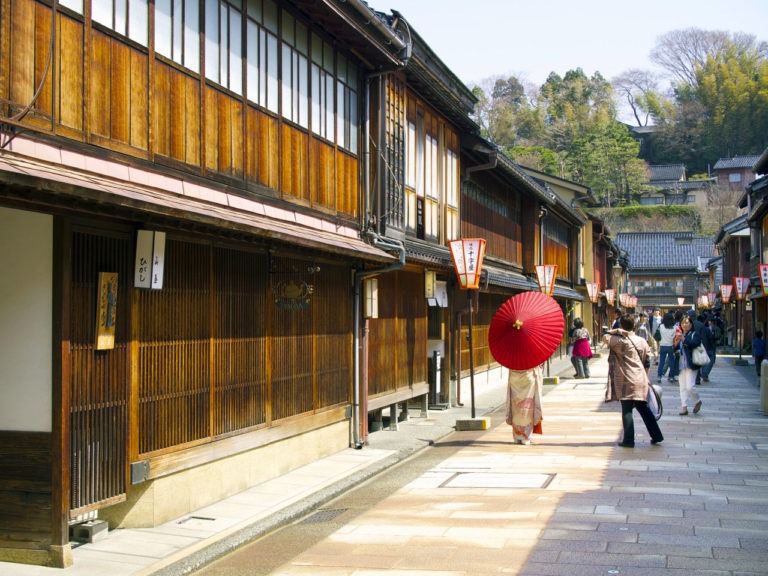
Things To Do in Kyoto: Highlights For First-Time Visitors
Travelling to Japan for the first time, but unsure where to start? The land of the rising sun, still deeply…
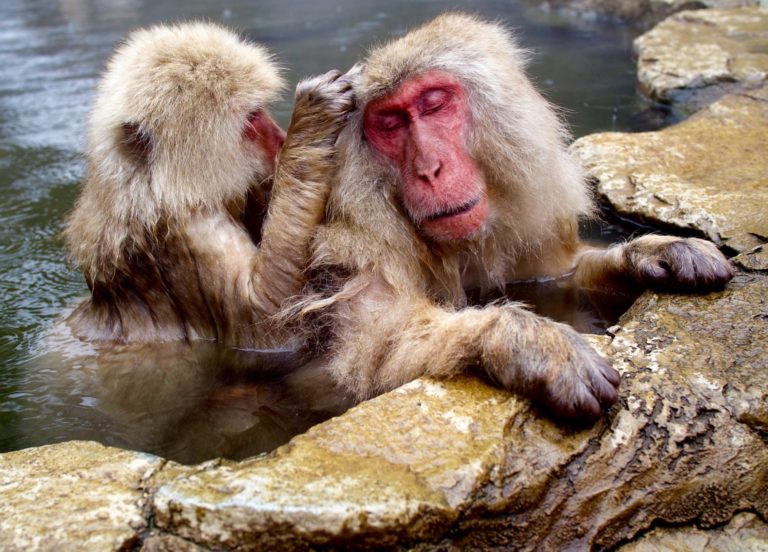
It was misty and bitingly humid that morning in the Japanese Alps, much like what I had anticipated. As I…

- Escorted Tours by Itinerary
- Escorted Tours by Date
Add-On Tours
- Escorted Tours FAQs
- Escorted Tours Terms and Conditions
- Self Guided Packages
- Self Guided FAQs
- Self Guided Tours Terms and Conditions
- Specialty Tours
- Private Tour Groups
- Pre and Post Cruise Tours
- How to Register and Booking Process
- Tour Discounts
- Staying In Ryokans
- Japanese Etiquette
- Food in Japan
- Preparing For Your Trip
- Baggage Transfers
- Smart Traveler Enrollment Program
- Weather in Japan
- Pocket WiFi Rental
- SUICA and ICOCA Cards
- Why Choose Samurai Tours?
- Meet Our Staff
- Frequently Asked Questions
- DIY vs Samurai Tours
- Ten Tour Commitments
- Gaijin on Getas Blog
- Travel Agents
Best of Japan in 22 Days
If you don’t want to miss anything in Japan, the Best of Japan in 22 Days tour is for you. From Sapporo to Nagasaki, you will enjoy the best Japan has to offer including some of Japan’s best onsens, gardens, castles, natural scenic areas, historical districts, temples and shrines, cultural activities and much, much more in a tour that will create travel memories to last a lifetime.
Proceed Booking
Already a member.
Forget Password?
Don't have an account? Create one.
Or continue as guest, adding item to wishlist requires an account, tour factors, cultural immersion, physical activity, got a question.
Don’t hesitate to contact us. We are an expert team and we are happy to talk to you.
1.866.316.7268
[email protected]
Tour Details
You’ll stay overnight at a mountaintop Buddhist temple where Buddhist monks will serve you meals of shojin ryori (the traditional Buddhist vegetarian cuisine) and attend prayer services at the temple early the next morning, climb to the top of a samurai castle, stroll through farmer’s markets, meet a “maiko” (geisha-in-training) face-to-face, see where the geisha live and work, stay overnight on beautiful and quiet Miyajima Island, soak in the thermally-heated mineral waters at some of Japan’s best onsens and admire sacred Mt. Fuji (weather permitting), the icon of Japan.
You’ll enjoy Tokyo where the sheer energy level will sweep you away, and Sapporo, host to the 1972 Winter Olympics with its many, fine restaurants, explore the morning market of Hakodate, where you can have the local specialties of crab, sea urchin or squid prepared for you for breakfast. You will enjoy Matsushima, considered to be one of three most scenic places in Japan, visit the sobering testament to peace of Hiroshima and the ostentatious over-the-top shrines and temples of Nikko. The rural, mountainous island of Shikoku will charm you with its natural beauty, and the island of Kyushu with the history-filled city of Nagasaki will surprise you with its diversity.
Tour Highlights
- Travel from northern-most tip of Japan to the southern-most tip of Japan
- Overnight at Buddhist temple and morning prayer service
- “Meet a Maiko” session (a Maiko is a Geisha in training)
- Overnight on Miyajima Island
- Overnight at several Onsen with naturally heated mineral waters
- Three “Kaiseki” style dinners
- 3 Shojin-ryori meals (Buddhist vegetarian)
- Nine separate rides on a Shinkansen (bullet train)
- Five overnights at a Japanese-style ryokan
Tour Inclusions
- Travel Guard Gold Policy (for American tour members only)
- 21 Day JR Rail Pass
- Meeting service at the arrival airport
- Sending service to the appropriate train station
- Baggage transfer from city to city
- Electronic version of Tour Handbook and Japanese History
- Domestic airfare from Nagasaki to Sapporo during the tour
Tour Exclusions
- International airfare is NOT included.
- A printed itinerary is not included
- Alcoholic beverages, soft drinks and desserts are NOT included
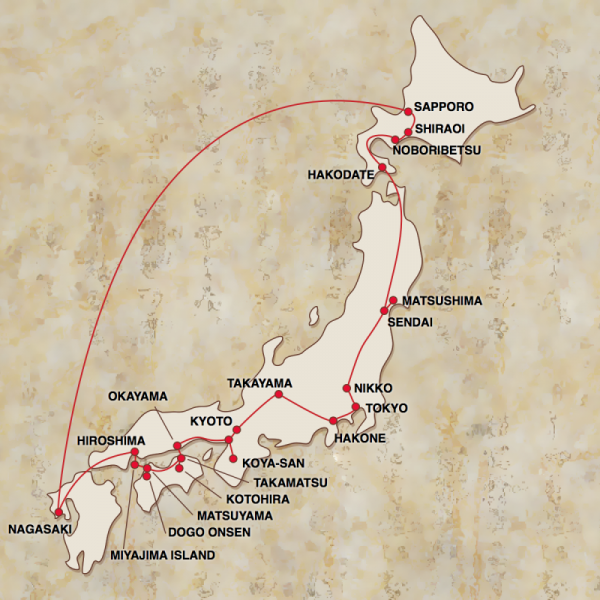
Tour Destinations
- Miyajima Island
- Noboribetsu Onsen
Day 1 Arrive in Tokyo
After clearing customs and immigration, you will be met at Tokyo’s Narita Airport by a Samurai Tours meeting staff member. They will then purchase a limousine bus ticket for you and help you board the bus to the hotel. After checking in, the evening is free. No meals are included.
Travel: 1-1/2 Hours; Walking: Light
Day 2 Tokyo – Tokyo Skytree, Ginza, Asakusa
After breakfast, you will start the day with a Welcome/Orientation meeting. Next, the licensed, English-speaking guide will escort you to the Tokyo Skytree for a birds-eye view of Tokyo. Next we will travel to the nearby Asakusa area. Here we will tour the Nakamise-dori, Senso-ji Buddhist Temple and the Asakusa Shrine where you will learn about Buddhist and Shinto Japanese religious practices. Afterwards, we will travel to the famous Ginza district. The Ginza is recognized by many as one of the most luxurious shopping districts in the world, attracting visitors and regulars alike from across the globe. We will return to the accommodations, where we will go through the train tickets for the rest of the tour. Breakfast at the accommodations and lunch at a local restaurant included. Optional Tour – Yakatabune Dinner Cruise
Optional Tour – Yakatabune Dinner Cruise
¥ 19,318 (You must pre-register before arriving in Japan.) Tour the Tokyo bay while relaxing with dinner and drinks! Sites include Rainbow Bridge, Odaiba and Tokyo Skyline from Tokyo Bay all lit up at night. Dinner includes sashimi and tempura or vegetarian kaiseki dinner with all-you-can-drink beer, sake, shochu, plum wine, whiskey, white wine, red wine, coffee, tea, and soft drinks. We will provide an escort to the port. but you will travel from the port on your own with our guidance, no guide included.
Day 3 Travel to Hakone; Tour Hakone; Overnight Hakone Yumoto Onsen
Before leaving for the morning, you will prepare your luggage to be transferred to Takayama and will be traveling to Hakone and Takayama with an overnight bag only. You should prepare your overnight bag with enough items for 2 days and 1 night. You will travel to Hakone Yumoto Onsen, where we will stay overnight. Here you can enjoy the thermally-heated mineral baths at the ryokan. In the afternoon, you will tour Hakone. we will tour Hakone. Hakone is famous for its natural beauty and the view of nearby Mt. Fuji (weather permitting). We will be taking many different forms of transportation (electric train, funicular, gondola and bus) around Hakone including the Hakone Sightseeing Boats on Lake Ashi. In good weather, a fine view of Mount Fuji, and enjoy Hakone’s rich scenery reflected on the lake’s calm surface. Breakfast and dinner at the hotel included.
(PLEASE NOTE: High winds and/or heavy rain can, and will often cause cessation of services on the Sightseeing Boat cruise. Should this occur, we will not be able to operate the itinerary as listed above, and will replace it with the best possible alternative given the weather conditions. Also, in the case of bad weather, even if the boats are still operating, we may alter the itinerary for your comfort and safety as Mt. Fuji will not be visible anyway.)
Travel: 1 1/2 Hours; Walking: Heavy
Day 4 Travel to Takayama
After checking out of the ryokan, we will travel to Takayama. Takayama, in the middle of the Japan Alps, with its traditional inns, shops, and sake breweries, has managed to retain its traditional charm. Breakfast at the ryokan included.
Travel: 5 Hours; Walking: Light
Day 5 Takayama – Miyagawa Morning Market, Jinyamae Morning Market, Takayama Jinya, San-machi-suji District, Free Afternoon
This morning we stroll through the farmer’s market, sampling the numerous options from vegetable stands and stalls selling herbs, pickles, and souvenirs. After that, we tour the Takayama-jinya, the governing office of Takayama and the surrounding area since the early 17th century. After lunch, the guide will escort you to the San-machi-suji district, consisting of merchant homes dating back to the 16th century. From here the rest of the day is free to roam and explore Takayama including the San-machi-suji. Visit the many temples, shrines and museums, rummage through antique shops, or relax at one of the sake breweries. The evening is free to enjoy one of the many nearby Hida Beef restaurants. (Hida Beef is the same thing as the more famous Kobe Beef.) Breakfast at the ryokan and lunch at a local restaurant is included.
Optional Tour – Takayama
¥ 11,591 (Or 10,000 Yen in Japan.) After finishing the scheduled tour of Takayama at the Takayama Jinya, the guide will take you on a tour of the San-machi-suji District. Lined with merchant homes, sake breweries and craftsmen’s workshops, it was the center of the old town and today it still retains its quaint atmosphere. After enjoying lunch, we will continue to Sakurayama Hachimangu Shrine and Yatai Kaikan. Sakurayama Hachiman is the oldest shrine in Takayama and is beautifully constructed in unpainted wood design. Sakurayama Hachiman also sponsors the popular Takayama Festival. On our next stop to Yatai Kaikan, you will get to take an up-close look at the traditional and spectacular hand-carved floats that are displayed during the Takayama Festival.
Travel: N/A; Walking: Medium
Day 6 Travel to Kyoto; Kyoto - Nijo Castle, Kinkakuji (Golden Pavilion)
Before leaving Takayama, you will prepare your luggage to be transferred to Kyoto, and will be traveling with an overnight bag only. You should prepare your overnight bag with enough items for 2 days and 1 night. In the morning, we will travel by express train and Shinkansen (bullet train) to Kyoto. For many, just the name of Kyoto conjures up the classic images of Japan: streets of traditional wooden houses, the click-clack of geta (wooden sandals) on the paving stones, geisha in a flourish of brightly colored silks, and a tea master deliberately warming water and making tea. Steeped in history and tradition, Kyoto has in many ways been the cradle of Japanese culture. A stroll through Kyoto today is a walk through 11 centuries of Japanese history. After lunch we will visit Nijo Castle. Built in 1603, it was the Kyoto home of Tokugawa Ieayasu, the first Tokugawa Shogun. The ostentatious style of construction was intended as a demonstration of Ieyasu’s prestige, and to signal the demise of the emperor’s power. The finest artists of the day filled the castle with delicate transom woodcarvings and paintings by the Kano School on sliding doors. One of the castle’s most intriguing features is the so-called “nightingale” floors. To protect the Shogun from real or imagined enemies, these floorboards creak when stepped on. Finally, we will visit Kinkaku-ji. Kinkaku-ji, also known as the Golden Pavilion, is one of Kyoto’s, as well as Japan’s, most recognizable attractions. The gleaming building covered in gold leaf seems to float on the aptly named Mirror Pond, especially on a sunny day. Breakfast at the ryokan and lunch at a local restaurant is included.
Travel: 3 1/2 Hours; Walking: Medium
Day 7 Fushimi - Fushimi Inari Shrine; Kyoto - Higashiyama District, Yasaka Shrine, Gion Geisha District, Meet a Maiko Session
After breakfast, we are off by train to the nearby city of Fushimi, one of the largest sake producing regions of Japan. Here we will visit the Fushimi Inari shrine. This Shinto Shrine, established in the 8th century, is famous for the long tunnels of vermilion torii gates straddling a network of trails leading to the top of the heavily forested Mt. Inari. We will then travel to the Higashiyama District. This area of narrow, cobblestone alleys with its temples, shrines, numerous shops and restaurants is truly enjoyable and relaxing. We will stop for lunch in the Higashiyama District. We will then visit the Yasaka Shrine, also known as the Gion Shrine. This shrine, built over 1350 years ago, is one of the most famous shrines in Kyoto. Next, we will walk to the famous Gion Geisha District. Here, you will see where the Geiko (in Kyoto they call themselves Geiko, not Geisha) and Maiko live and work. We will have the opportunity to meet a Maiko (a Maiko is a Geiko in training), and eat dinner at a local restaurant. Breakfast at the ryokan and lunch and dinner at a local Japanese restaurant are included.
Day 8 Travel to Koya-san; Koya-san - Okunoin Cemetery and Temple, Garan Temple Complex, Overnight at a Buddhist Temple
Before leaving Kyoto, you will prepare your luggage to be transferred to Takamatsu, and will be traveling with an overnight bag only. You should prepare your overnight bag with enough items for 2 days and 1 night. We will board an express train to Osaka, and then continue to Koya-san by train and funicular. Koya-san, the world headquarters of the Shingon School of Esoteric Buddhism, was established in the year 816 by Kobo Daishi, considered by many to be the most influential religious person in Japanese history. After dropping off the luggage at the temple, we will enjoy a vegetarian lunch. After lunch, we will wander through the huge cemetery leading up to the Okuno-in temple. Kobo Daishi is buried at this temple, and many Japanese still believe that he is not dead, but merely in a very advanced state of meditation, waiting to awaken at the appropriate time. After touring the Garan Temple complex and checking into our shukubo (Buddhist temple lodging), you are free to roam and visit one of the 110 temples in the area or just rest in the garden at the shukubo. Your dinner of shojin-ryori (traditional Buddhist vegetarian cuisine – no meat, fish, onions or garlic) will be served by the Buddhist Monks from the temple. Breakfast at the ryokan, Shojin-ryori (Buddhist vegetarian cuisine) lunch at a local restaurant and Shojin-ryori dinner at the temple is included.
Travel: 3 Hours; Walking: Heavy
Day 9 Koya-san – Morning Prayer Service, Travel to Himeji; Himeji - Himeji Castle; Travel to Takamatsu
Early in the morning, we will attend a Buddhist prayer service held at the temple. After a vegetarian breakfast, we will travel back to Osaka, and continue by Shinkansen to Himeji where we will tour Himeji Castle. Built about 400 years ago, it is only one of four castles in Japan that has been designated as a national treasure and has also been designated as a UNESCO World Heritage Site. After touring the castle, we will continue to Takamatsu by Shinkansen and express train. The sprawling city of Takamatsu is located on the northern shore of Shikoku, the smallest, islands of Japan. Despite a relaxed atmosphere, Takamatsu hums with an urban energy. Walking down the city’s wide, sunlit boulevards or numerous covered shopping arcades you will find funky shops, artsy cafes and exciting nightlife. Shojin-ryori breakfast at the temple, lunch and dinner at local restaurants are included.
Travel: 4 Hours; Walking: Medium
Day 10 Takamatsu - Ritsurin Garden; Travel to Kotohira; Kotohira - Konpira Shrine, Kanamaruza Kabuki Theater
Before leaving for the day you will prepare your luggage to be transferred to Matsuyama, and will be traveling with an overnight bag only. You should prepare your overnight bag with enough items for 2 days and 1 night. We will start the day at Ritsurin Garden, thought by many to be one of best gardens in Japan. This garden was designed by the local feudal lord family and took over 100 years to create. The more than 1,400 twisted and contorted pines set this garden apart from other gardens. We will also stop for tea and sweets in a tea house overlooking a beautiful koi-filled pond. Next we travel by street car to the nearby city of Kotohira, where we will visit Kompira Shrine. Kompira Shrine is the main shrine of multiple Kompira shrines found around Japan that are dedicated to sailors and seafaring. Located on the wooded slope of Mount Zozu in Kotohira, the approach to Kompirasan is an arduous series of 785 stone steps. Before returning to Takamatsu, we will tour the Kanamaruza Kabuki Theater. Built in 1835, the Kanamaruza Theater is Japan’s oldest surviving, complete kabuki theater. Breakfast at the hotel and lunch at a local restaurant included.
Travel: 1 Hour; Walking: Heavy
Day 11 Travel to Matsuyama; Matsuyama - Matsuyama Castle, Dogo Onsen
In the morning, we will travel by express train to the city of Matsuyama. We will start the afternoon at Matsuyama Castle. Matsuyama Castle is one of Japan’s most beautiful original castles. It is located on Mt. Katsu, a steep hill in the city center providing visitors to the castle with a bird’s eye view of Matsuyama and the Seto Inland Sea. The castle was constructed between 1602 and 1628. The current three storied castle tower was constructed in 1820 after the original five storied one was destroyed by lightning. In the evening, you will visit the famous Dogo Onsen. It is thought this was the first onsen in Japan, and the history of the onsen goes back 1,000 years. The current main onsen building was built in 1894, and includes a bath reserved exclusively for visiting Emperors. Breakfast at the hotel is included.
Travel: 3 Hours; Walking: Medium
Day 12 Matsuyama - Ishiteji Temple; Travel by ferries to Miyajima Island; Overnight on Miyajima Island
Before leaving the hotel in the morning, we will transfer the luggage to Nagasaki. You will need enough items for three days/two nights. In the morning, we will tour the nearby temple of Ishiteji. This temple is one of the 88 temples (#51) on the Shikoku Pilgrimage. Ishiteji is known for its Niomon Gate, a designated national treasure. The main hall and pagoda are also designated important cultural properties, and all of the structures exhibit the typical architecture style of the Kamakura Period (1192-1333). In the afternoon, we will travel by high-speed ferries to Miyajima Island. The Japanese proclaim Miyajima Island to be one of the top three scenic sights in Japan. The evening is free to enjoy the solitude and ambiance of the island after all of the day-trippers head back to the mainland. Breakfast at the hotel and Kaiseki-style dinner at the ryokan is included.
Day 13 Miyajima Island – Free Day
The entire day is free to enjoy and relax in the beauty and ambiance of Miyajima Island: ride the cable car to the top of the mountain on Miyajima Island, or visit the Itsukushima-jinja shrine which was built in its present form in 1168. Or just stroll around the island while enjoying grilled oysters and momiji manju (a popular Japanese confection), the island’s specialty. Breakfast and kaiseki dinner at the ryokan included.
Travel: TBD; Walking: TBD
Day 14 Travel to Hiroshima; Hiroshima – Peace Park and Museum; Travel to Nagasaki
We will travel by ferry and train to the city of Hiroshima. Here we will visit the Hiroshima Peace Park and Museum, both sobering monuments to the tragic event on August 6, 1945. Late in the afternoon, we will travel to Nagasaki on the island of Kyushu. Breakfast at the ryokan included.
Travel: 6 1/2 Hours; Walking: Heavy
Day 15 Nagasaki - Dejima, Glover Garden, Free Afternoon
We will start the day by visiting Dejima. Dejima was a man-made island in the port of Nagasaki constructed in 1636. A few years later, the Dutch trading factory was moved to Dejima. The Dutch workers, the only remaining Westerners allowed in the country, were restricted to Dejima during Japan’s two centuries of isolation. Today, Dejima is no longer an island, as the surrounding area has been reclaimed during the 20th century. However, a number of Dejima’s historical structures have been reconstructed, including various residences, warehouses, walls and gates. There are many displays in these buildings documenting the daily life of the Dutch residents. Next, we will tour Glover Garden. Glover Garden is an open air museum, exhibiting mansions of former western residents of Nagasaki. It is located on the hill where western merchants settled down after the end of Japan’s era of seclusion in the second half of the 19th century. You can also enjoy a panorama of the city from the garden. The rest of the day will be free. Breakfast at the ryokan and lunch at a local restaurant included.
Travel: 1 Hours; Walking: TBD
Day 16 Travel to Sapporo; Sapporo - Sapporo Beer Garden
Before leaving Nagasaki we will transfer our luggage to Hakodate. You will need enough items for three days/two nights. The entire day is a travel day. We will be traveling by air to Sapporo, Hokkaido’s largest city and host of the 1972 Winter Olympics. In the evening, we will enjoy dinner at the Sapporo Beer Garden, located in the original Sapporo Beer Brewery, where you can try the local specialty of grilled lamb, cooked yourself at the table. Breakfast at the hotel and dinner at a local restaurant included.
Travel: 8 Hours; Walking: Light
Day 17 Sapporo - Upopoy Ainu Museum and Village; Travel to Noboribetsu Onsen
After breakfast, we will travel to Shiraoi wehere we will visit the nearby Upopoy National Ainu Museum where we will learn more about and experience Ainu culture. In the afternoon we will travel to Noboribetsu Onsen, one of the most popular and famous hot spring resorts in Japan. Breakfast at the hotel and dinner at the ryokan included.
Day 18 Noboribetsu Onsen - Free morning; Travel to Hakodate
The morning is free to explore Noboribetsu Onsen, including the Jigoku-dani (Hell Valley) and the other geothermal activity in the area. In the afternoon, we will travel to the city of Hakodate. Hakodate was one of the first cities open to the west after the Meiji Restoration. Breakfast at the ryokan is included.
Travel: 3 Hours; Walking: Light
Day 19 Hakodate - Hakodate Morning Market; Travel to Sendai
Before leaving, we will transfer our luggage to Tokyo. (You will need enough items for three days/two nights.) Early in the morning, we will visit the Hakodate Morning Market, where the sellers can prepare the specialties of Hakodate (crab, sea urchin and squid) fresh from their stalls for breakfast. In the afternoon, we will travel to Sendai. Breakfast at the hotel is included.
Day 20 Travel to Matsushima; Matsushima - Matsushima Bay Cruise, Entsuin Temple, Zuiganji Temple; Travel to Sendai
Today we will tour Matsushima. Matsushima, near Sendai, is known as one of Japan’s three most scenic areas, and has been visited by numerous dignitaries over the years including the famous haiku poet Basho who wrote a very famous poem about Matsuhsima published in the late 17th century. First, we will take a sightseeing boat that will navigate between the 260 small islands sculpted by the waves and covered with pine trees. During the cruise, you will see how Matsushima got its name (Matsu means pine and shima means island). After the cruise, we will visit the Entsuin Temple and the temple’s beautiful gardens. This temple was built in 1646 to house the mausoleum of Date Mitsumune. Of the two gardens that are near the main hall, the first is a Japanese style moss and maple garden with a heart shaped pond, while the second is a Western-style rose garden that was influenced by painting from inside the mausoleum. After completing a tour of Entsuin Temple and gardens we will continue on with a visit to Zuiganji Temple. Originally founded by the Tendai Buddhism sect in 828, the current buildings were built by the Date feudal lord family in 1606. Here, along the entrance to the temple, we will find the numerous Buddha statues carved by hand into the rocky-cliff face by buddhist monks to show their dedication. Breakfast at the hotel and lunch at a local restaurant are included.
Travel: 1 1/2 Hours; Walking: Medium
Day 21 Travel to Nikko; Nikko - Rinno-ji, Toshogu Shrine, Taiyuan; Travel to Tokyo
We board a Shinkansen (bullet train) and local train to Nikko, where the Tosho-gu Shrine is located. This shrine, built by Tokugawa Iemitsu, is a dedication to his grandfather, Shogun Tokugawa Ieyasu. (James Clavell’s fictional Shogun in his novel Shogun was based on this person.) One of the most elaborate monuments in Japan, no expense was spared in this shrine’s construction. After touring Nikko, we will travel by local train and Shinkansen to Tokyo. In the evening, we will enjoy our Sayonara dinner. Breakfast at the hotel and lunch and dinner at a local restaurant is included.
Travel: 5 Hours; Walking: Heavy
Day 22 Return Home
You will travel to the airport by express train to catch your flight home. Breakfast at the hotel is included.
Travel: 1 1/2 Hours; Walking: Light
Walking level descriptions: Light – 0 to 2 miles on level ground Medium – 2 to 4 miles on level ground or 0 to 2 miles on hilly ground Heavy – 4 to 6 miles on level ground or 2 to 4 miles on hilly ground
Dates & Pricing
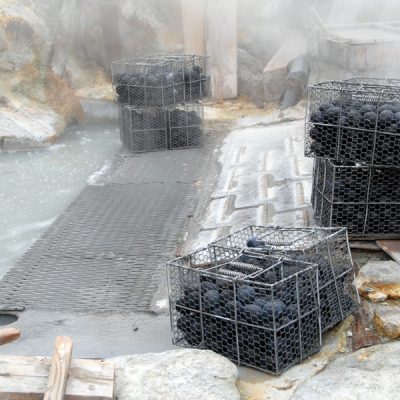
Our tours and tour itineraries are the best, but as the saying goes, “you can’t make everyone happy all of the time”. There may a specific destination or a specific experience you may want to include in your visit to Japan that may not be included your tour. Choose from our Add On tours to include your interests and make your Japan tour even better.
Click HERE to view all of the Add-On Tours.
Or, use the arrows to scroll though the recommended list of Add-On Tours for this tour.
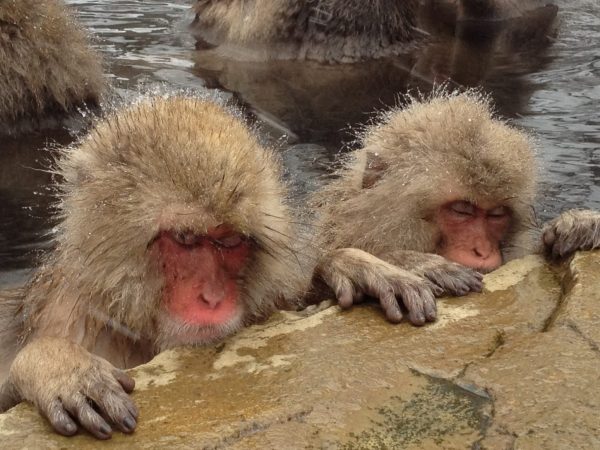
- Local, licensed, English-speaking, Japanese guides
- For residents of the following states please click here for your available plan. FL, KS, MN, MO, MT, NY, and WA
- For all other states and the District of Columbia click here
- Up to 69 – $0
- 70-74 – $200
- 75-79 – $400
- 80-84 – $700
- 85+ – $1125
- Travel Insurance Opt-Out: If you would prefer to opt out of the travel insurance, please note this at the time of registration. You will receive a $100 credit per person, which will be reflected on your invoice. In the event that you would need to cancel your tour, cancellation penalties may apply. See the Terms and Conditions page for the Cancellation Fees Schedule.
- The meeting service will meet you at the airport and provide you a transfer to the ryokan in Tokyo
- Meeting service can only be provided between 6am and 9pm. If you arrive at a time outside of these hours, we will need to provide alternative directions for you to get to the ryokan on your own.
- The sending service will escort you to the train station and make sure you board the correct train. The sending service will not accompany you to the airport.
For those requiring meeting or sending services on other than the scheduled arrival/departure dates, there will be a $100 fee for the meeting service from the airport into Tokyo or the sending service to the Tokyo train station.
- Lodging for 21 nights in Japanese-style ryokans or western-style hotels
- Japanese-style or Western-style breakfast every morning (Please Note: Some ryokans offer Japanese breakfasts only.)
- 10 Japanese-style or western-style lunches
- 9 Japanese-style or western-style dinners (including 2 gourmet kaiseki dinners, a Shojin-Ryori (traditional Buddhist vegetarian cuisine) dinner at the Buddhist temple and All-You-Can-Eat Grilled Lamb Dinner at the Sapporo Beer Garden)
- Reserved seat train tickets (where applicable)
- Use of audio tour guide system (must provide own headphones)
- An electronic version of the itinerary
- The appropriate amount of free time to allow you to explore and discover your own personal Japan.
- All transportation costs when traveling with the group. (Transportation costs during scheduled free times are the tour member’s responsibility.)
- Admission fees to the destinations and activities listed in the Tour Highlights column on the right. (Itinerary specifics subject to change.)
- Sayonara dinner at the end of the tour
- Baggage transfer from Tokyo to Takayama (one bag only)
- Baggage transfer from Takayama to Kyoto (one bag only)
- Baggage transfer from Kyoto to Takamatsu (one bag only)
- Baggage transfer from Takamatsu to Matsuyama (one bag only)
- Baggage transfer from Matsuyama to Nagasaki (one bag only)
- Baggage transfer from Nagasaki to Hakodate (one bag only)
- Baggage transfer from Hakodate to Tokyo (one bag only)
Each tour member receives an electronic copy of our tour handbook. This handbook is full of tips and suggestions taken from our Japan travel experiences that allow you to better plan and prepare for your trip, and therefore enjoy your trip even more. The tips and suggestions included cover everything from how to save while exchanging money, what to pack, some basic Japanese-language tips, general etiquette dos-and-don’ts, ryokan customs, etc.
- Airfare to and from Japan is NOT included
- A printed itinerary is NOT included
Michelle Friedrich
I loved this tour. I am already considering going on another in a few years. I did a lot more than I ever imagined.
William Jacobs
Dale and Kay Rhoney
We have highly recommended you to friends and I think Teri and Paul Graham from Lake Oswego, OR (good friends of +35 years!) are taking our 22 day tour with you in ?April/May? We didn’t remember about the 5% discount for them but know they will enjoy the great overview of Japan with you…. like we did!!
Excellent trip with diverse cuisine, scenery. I like the new system of payment, Suica card, a big Japan Rail pass card. The best of the very best tour guides.
__________________________________
Thank you so much for your high ratings and positive comments about our tours! We appreciate them very much, and agree with you that our guides are the very best in the business. We are so glad you had a great time on your tour, and we hope to travel with you again sometime!
~ Samurai Tours Staff
Related Tours
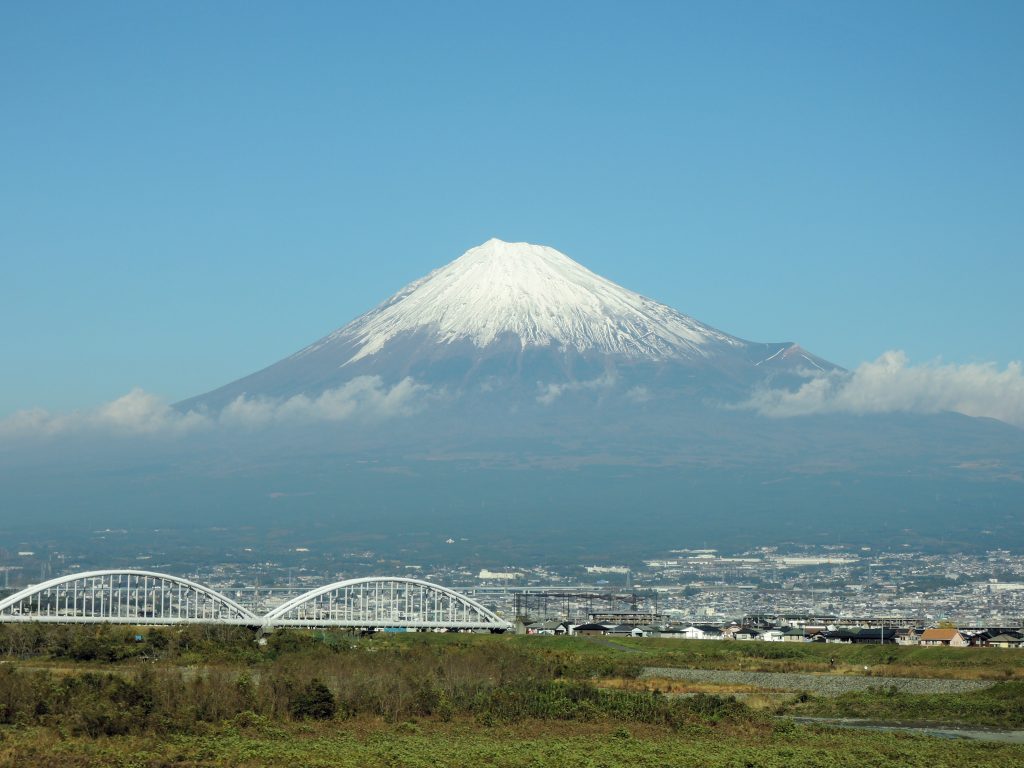
Golden Route
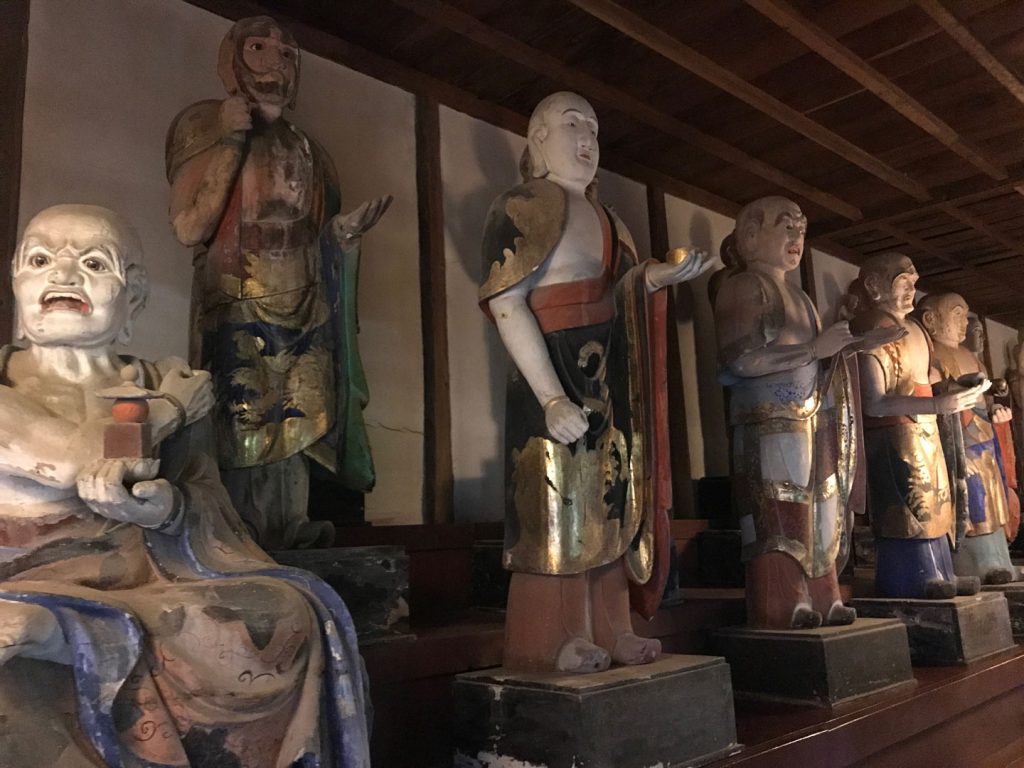
Shikoku 88 Temple Pilgrimage – Part 2
- Japan Tourism
- Japan Hotels
- Japan Bed and Breakfast
- Japan Vacation Rentals
- Flights to Japan
- Japan Restaurants
- Things to Do in Japan
- Japan Travel Forum
- Japan Photos
- All Japan Hotels
- Japan Hotel Deals
- Last Minute Hotels in Japan
- Things to Do
- Restaurants
- Vacation Rentals
- Travel Stories
- Rental Cars
- Add a Place
- Travel Forum
- Travelers' Choice
- Help Center
Itinerary advice - 20 days - Japan Forum
- Asia
- Japan
Itinerary advice - 20 days
- United States Forums
- Europe Forums
- Canada Forums
- Asia Forums
- Central America Forums
- Africa Forums
- Caribbean Forums
- Mexico Forums
- South Pacific Forums
- South America Forums
- Middle East Forums
- Honeymoons and Romance
- Business Travel
- Train Travel
- Traveling With Disabilities
- Tripadvisor Support
- Solo Travel
- Bargain Travel
- Timeshares / Vacation Rentals
- Asia forums
- Japan forum

We're flying on the 22nd of April, and back on the 13th of May. That gives us 20 days to use!
After buying the flights I noticed that the middle week of our trip falls on the Golden Week, so I'm trying to find a way to not be in Tokyo or Kyoto for part of that time.
Cities/places we'd want to visit are:
- Lake Kawaguchi
- Hiroshima
I've made up 4 different itineraries:
https://imgur.com/Y0JmJyh
But trying to avoid Tokyo and Kyoto in Golden week seems hard lol. I'm leaning towards Itinerary 3, although I know train travels are annoying. Like Lake Kawaguchi to Kanazawa (goes via Tokyo), and Kanazawa to Hiroshima (goes via Kyoto).
The problem with that is that between Tokyo and Kyoto there's 7 days of not having the big luggage with us. If I was travelling alone, that wouldn't be a problem, but two of us, not sure.
What do you think about it? Any suggestion is welcome. It's our first time in Japan, and since we have 3 weeks, we want to see more than the main cities, but not rush these either. I'm specially wary about Golden Week, and expect there will be a lot of people everywhere, but I've seen that Kyoto specially seems to get a lot of Japanese tourists and is better avoided.
Any pointers, suggestions, etc is welcome!
2 replies to this topic

Don’t let the crowds scare you. I was almost warned off of seeing Kyoto and the rest of Japan , during cherry blossom season, because of the crowds, and I am so glad I did not listen to people!
The crowds are easily avoided. If you are flying from the west, you will naturally wake very early. This is when you want to get out and see things – we would wake wide eyed and excited at 6:30 AM, believe it or not, and then go to the beautiful serene, quiet, Temple or shrine walk through the lovely empty streets and be back having breakfast before the 10 o’clock shut off time when most people were just getting out with their selfie cameras. During the busy time of day, we would have a tea ceremony scheduled or something like this. ( don’t miss these important activities to get the feel of Japan’s culture).
I have to ask, why do you have big luggage? We have traveled three weeks with carry-on bag and a large Personal bag. Now we have one medium size checked luggage bag between us. That comes to five items for the two of us to manage, which is no problem on a train. Plan to wash along the way if you have to even do it in a sink. It is miserable to have to manage too much luggage even in Japan, where their luggage service is great. Take 4-5 shirts, 2 pairs of pants, wearing one of them! And an extra pair of shoes. Carry a foldable bag to bring things back but shop toward the end of the trip.
It is good that you do not plan to rush – the beauty of Japan is in its serenity, it’s quiet, and it’s beauty. And, of course, it’s such polite people. If you miss the tea ceremonies, the onsen, the music, and the gardens, then you miss Japan.
Day 1… Kyoto , sleep Kyoto 6 nighta
Day 2 See Kyoto… etc…
- Miyajima a day trip report 3:04 pm
- Help with train ticket options please 2:51 pm
- Bunraku experience? 2:22 pm
- Better Hotel For Older American 1st Timers to Japan 1:51 pm
- Kyoto live trip report 1:41 pm
- JRPass 1:32 pm
- esim phone locked? 1:17 pm
- Hotel and activity recommendations Takamatsu 1:14 pm
- Help me stop agonizing over hotels 1:01 pm
- Small group guided tour recommendations 12:28 pm
- staying 2 nights miyajima 12:21 pm
- tentative itinerary for 28 days in october 12:19 pm
- Yutoku Inari Shrine or Dazaifu Tenmangu Shrine 12:16 pm
- Late april Cherry blossoms around Tokyo 12:09 pm
- 'semi double' rooms 5 replies
- Pocket WiFi Rental Experience? 315 replies
- kyoto-takayama JR or Lmtd express??? 6 replies
- Best Japan travel guide book? 29 replies
- Best/cheapest time of year to visit?? 3 replies
- Radiation danger in Tokyo? 37 replies
- Best Skiing in Japan? And When? 3 replies
- Japan in 10 days 3 replies
- How far is Nara from Kyoto 8 replies
- how to get to Hokkaido from Tokyo? confused..pls HELP. 5 replies
- 2024 public holiday chart in East Asian countries
- Where can I find more onsen in Japan?
- Driving Information
- Catholic mass in English and other languages
- How can we access tourist attraction from cruise port?
- Pocket WiFi Rental Experience?
- Halal Information
- Tokyo trip report here
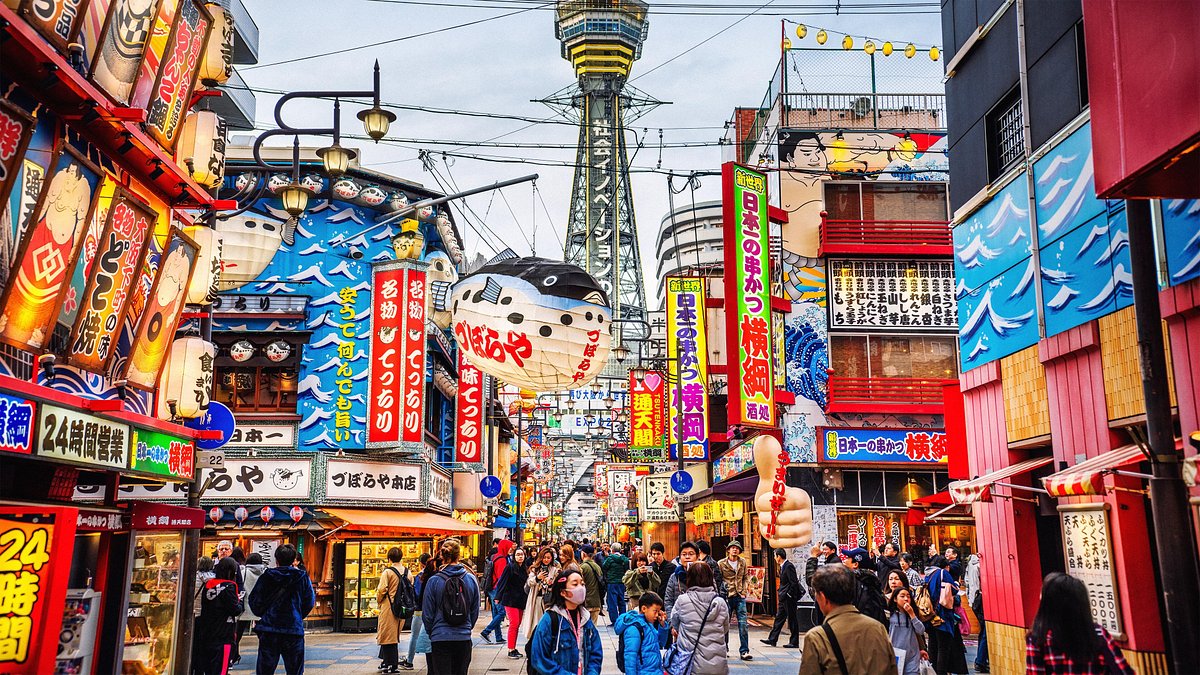
Nomadic Matt's Travel Site
Travel Better, Cheaper, Longer
The Perfect 7-Day Japan Itinerary for First-Time Visitors

Japan captured my heart from the moment I firs visited. The delicious food, the rich culture, breathtaking landscapes, vibrant history, and the very friendly and polite people – it all blew my mind.
But Japan often feels impenetrable, especially to first-time visitors. While I think Japan deserves a minimum of 10 days, I get that some people might only have a week, so I wanted to write this, my ideal seven-day itinerary for Japan for a first-time visitor.
With only a week, there’s not much you can see unless you really rush it. And I don’t think you should do that.
So this itinerary only focuses on Tokyo and Kyoto (the most popular destinations) as well as some day trips from each. If you wanted to rush things a little, you could add in Osaka (more on that at the end).
(Note: If you purchased a Japan Rail Pass , activate it on arrival. That way, you can take advantage of the free JR trains throughout the city.)
Table of Contents
Japan Itinerary Day 1: Tokyo
Japan itinerary day 2: tokyo, japan itinerary day 3: tokyo, japan itinerary day 4: kyoto, japan itinerary day 5: kyoto, japan itinerary day 6: nara, japan itinerary day 7: tokyo, an alternative itinerary.

Tsukiji and Toyosu Fish Markets Cure your jet lag with some food! In 2018, Tokyo’s main fish market moved to Toyosu. It is now twice the size of Tsukiji (the old one), making it the largest such market in the world. Here you can eat fresh sushi for breakfast, just a few feet from where it was hauled in from the sea, while marveling at the chaotic atmosphere.
You can still head to the old market in Tsukiji to eat, shop, and wander as well. I like it a lot, because there are more food options! Food and drink tours of the Tsukiji Outer Market are available for around 15,000 JPY.
Toyosu Fish Market is open Monday-Saturday 5am-5pm, though most shops don’t open until 7am. Admission is free, but you have to pick up a visitor’s pass when you enter. Tsukiji Fish Market’s hours vary by shop (usually 5am-2pm). Admission is free.
teamLab Planets This digital art installation is a multi-sensory and immersive experience in which you become part of the artwork, walking barefoot through the four exhibition spaces and gardens as you interact with the installations’ elements in unique ways. It’s really fun! TeamLab is generally sells out in advance, so I recommend getting your tickets online ahead of time .
Take a walking tour Walking tours are a great way to get the lay of the land while connecting with a local guide. I always go on one or two when I arrive somewhere. Tokyo Localized offers many free tours, including a classic overview and ones of both the famed Harajuku and Shinjuku neighborhoods. Its Imperial Palace tour would be the most convenient one after teamLab.
The Imperial Palace Formerly Edo Castle, the Imperial Palace was built in the 15th century, and some of the walls and moats from that time are still in use to this day. When the emperor moved from Kyoto to Tokyo in 1869, he took Edo for his new palace and renamed it. While you can’t go inside, it is surrounded by beautiful grounds, a moat, and a park worth wandering through. You can also see the changing-of-the-guard ceremony (though it’s relatively low-key and unassuming). Admission to the grounds is free.
Shinjuku Gyoen National Garden This park is over 144 acres and home to some 20,000 trees. Most of the original park was destroyed in World War II but was rebuilt and reopened in 1949. During spring, it is one of the best places to see cherry blossoms. My favorite area is the landscape garden, which has several ponds with bridges and islands. It’s a peaceful oasis away from the urban hustle and bustle.
Depending on how you feel relative to your jetlag, you could fit a few more activities before you end your day. Check out this post for suggestions .

- Senso-ji – This is Tokyo’s most popular and famous temple. Beautifully painted, it sits in a scenic spot near a pagoda and the lovely Kaminari Gate. There’s a huge statue of Kannon, the goddess of mercy, inside the main hall. It’s very busy during the day, so maybe check out the grounds in the evening.
- Asakusa Shrine – This nearby Shinto shrine is much more peaceful, with fewer visitors, but with people praying, meditating, or performing traditional rituals. It was built during the Edo period (1603–1868) and survived the air raids of World War II.
Afterward, head to Ueno Park . Spanning over 133 acres, Ueno Park was established in 1873 on land formerly owned by a 17th-century Buddhist temple. It gets super busy in cherry blossom season, as there are over a thousand trees here. Throughout, you’ll find various stalls and vendors selling snacks, drinks, and souvenirs. On weekends, there are usually cultural events or festivals showcasing traditional arts, music, and dance. Four of Tokyo’s main museums are here:
- Tokyo National Museum – Established in 1872 on the north end, this massive building is the oldest and largest art museum in Japan. It houses one of the world’s largest collections of art and artifacts from Asia, particularly Japan.
- Tokyo Metropolitan Art Museum – This museum showcases rotating exhibitions of contemporary and traditional Japanese art.
- National Museum of Nature and Science – This museum features a wide range of permanent and temporary exhibitions covering natural science and history.
- Tosho-gu Shrine – This beautiful 17th-century Shinto shrine has carved gold doors and other ornate carvings. It’s worth seeing up close!
Afterward, walk down to Akihabara to explore the video game parlors, arcades, and anime shops. This very buzzy area is ground zero for all things electronic, and it’s fun to play many of the games. This is where you’ll find the famous maid cafés, where servers dress up as maids and serve you food and drinks. These range from big touristy ones to holes-in-the-wall (the girls on the street are promoting the latter, which are a lot more culturally fun). They aren’t cheap, though, as you have to buy drink packages and pay a fee, but they’re kitschy and fun.
In the evening, visit Shinjuku and then drink in Golden Gai . In Shinjuku, you’ll find a plethora of cool bars, bright lights, and tiny hole-in-the-wall eateries. Be sure to wander down Memory Lane (aka Piss Alley) for tiny izakaya joints and bars. Afterward, head over to Golden Gai, a warren of narrow alleyways with a bit of a red-light-district feel, flanked by diminutive backstreet bars. It’s quite touristy but also a lot of fun. I’ve had some wild nights here!
With Arigato Tours , you’ll learn about the neighborhood while stopping to sample Japanese classics like sushi, yakitori, and ramen. The 23,900 JPY cost includes a drink and dishes at four stops.

Kamakura Here you can see a 13-meter (43-foot) bronze statue of Buddha that was built in 1252. It was initially constructed within Kotoku-in Temple, but that has since been washed away by several storms, so it now sits in the open air. Admission to enter the temple grounds is 300 JPY, while it’s 20 JPY to go inside the statue. The journey there — around an hour — is free with a Japan Rail Pass .
Tokyo Disneyland I’m a sucker for Disney. You’ll find many of the same classic rides from Disney World here, like Splash Mountain, Big Thunder Mountain, The Haunted Mansion, and everyone’s favorite teacup ride, The Mad Tea Party. But there are several unique attractions as well, like Pooh’s Hunny Hunt and Journey to the Center of the Earth.
Ticket prices vary depending on the day and time, but full-day admission begins at 7,900 JPY for adults and 4,400-6,200 JPY for children. It’s best to book in advance .
Mount Fuji Mount Fuji is located an hour outside of Tokyo. An active stratovolcano (which last erupted in 1708) and covered in snow for almost half of the year, it stands an impressive 3,776 meters (12,389 feet) and provides one of the most iconic views in the country. One of the Three Holy Mountains of Japan, Mount Fuji is both a Special Place of Scenic Beauty and a UNESCO Cultural Site. In the summer, the mountain is open to hikers, who take 5-12 hours to reach the summit (traditionally, they depart at night to arrive at the top for the sunrise).
If you don’t want to hike, you can simply visit on a day trip. There are buses that can take you partway up, where you’ll be offered sweeping vistas of the surrounding area. Guided day tours from the city cost around 12,000 JPY.

Wander the Bamboo Forest For a relaxing break, head to Arashiyama and let the dense and towering stands of bamboo envelop you. Located near the famous Tenryu-ji temple, it’s one of the most beautiful places in the entire country. It’s not that big, but there are some hidden areas to explore. Just make sure to arrive early if you want to enjoy it without the crowds (it fills up fast after sunrise).
While there, I would also recommend visiting the Okochi Sanso Garden, which (along with the home) belonged to the famous Japanese actor Denjir? ?k?chi (1898–1962). It’s not free (it’s 1,000 JPY), but it’s really nice and has some wonderful views.
Visit the Golden Pavilion Originally built in the late 14th century as a retirement villa for the shogun (military governor), this iconic structure was later converted into a Zen Buddhist temple. The present-day edifice dates only to the 1950s, however, when a monk attempting to kill himself burned the historic original to the ground. The rebuilt temple is covered in brilliant gold leaf, symbolizing purity and enlightenment. Each of the three stories exhibits a different architectural style. Completing the scene are the serene reflecting pool and traditional Japanese gardens that contain lush foliage, manicured trees, and scenic walking paths.
1 Kinkakuji-cho, Kita-ku, Kyoto-shi, Kyoto, +81 075-461-0013, shokoku-ji.jp. Open daily 9am-5pm. Admission is 500 JPY.
Admire Ryoan-ji Temple This is my favorite temple in Kyoto. Originally established in 1450 as a residence for a high-ranking samurai, it was soon converted into a Zen temple and is now a UNESCO World Heritage Site, with a mausoleum that houses the remains of seven emperors. Its traditional rock and sand garden is considered one of the best in the country. There’s also a teahouse where you can experience the traditional Japanese tea ceremony ( chanoyu ) as you overlook the Kyoyochi reflecting pool.
There are other temples in the area to check out as well:
- Daitoku-ji Temple – This massive complex dating back to 1315 covers almost 60 acres. It contains several dozen temples and is a good place to see a variety of Zen gardens and architectural styles. It’s also deeply linked to the Japanese tea ceremony, as several of the country’s most noteworthy masters studied here.
- Toji Temple – This is home to Japan’s tallest pagoda (five stories high). Founded in 796, just after Kyoto became the capital, it was one of only three Buddhist temples allowed in the city.
Go on a sake brewery tour Kyoto has a sake (rice wine) brewing tradition going back 400 years and is known for some of the best in the world, due to using the area’s pure natural spring water in the brewing process. Arigato Tours offers an excellent three-hour tour of Fushimi (the brewing district) for 23,320 JPY, including stops at several breweries, a guided tour of the Gekkeikan Okura Sake Museum, and tastings.

See the Fushimi Inari Shrine This mountainside Shinto shrine, dating back to 711, is dedicated to Inari, the god of rice and prosperity. It’s known for its thousands of vibrant orange torii gates that form a network of trails leading up Mount Inari. You can hike the trails on your own while enjoying panoramic views of Kyoto below or join a guided hiking tour , on which you’ll get off the paved paths and into hidden bamboo groves. Get here as early as possible to avoid the crowds.
68 Fukakusa Yabunouchicho, +81756417331, inari.jp. Open 24/7. Admission is free.
Walk around Higashiyama Spend an afternoon walking along the narrow streets of one of the oldest and best preserved districts on your own or on a walking tour . The traditional machiya buildings (traditional wooden townhouses) are filled with small shops selling local specialties and handicrafts, as well as restaurants and teahouses. It’s a popular area in which to participate in a tea ceremony . Another nice place to stroll in this neighborhood is the Philosopher’s Path, which follows a cherry-tree-lined canal that’s beautiful and meditative even when the blossoms aren’t in season.
Visit Kiyomizu-dera One of a number of UNESCO sites in ancient Kyoto, Kiyomizu-dera (meaning “pure water temple”) is located in the foothills of Mount Otowa in the eastern part of the city. It’s one of the most famous temples in all of Japan. It was established in 778, but most of the existing buildings date to the 17th century. There’s not a single nail used in the construction, which becomes all the more impressive once you see how large the temple is, which is best known for its wooden terrace that juts out over the hillside. The temple’s name comes from the nearby waterfall whose waters (from which you can still drink today) are said to have wish-granting and healing powers.
1 Chome-294 Kiyomizu, +81 75-551-1234, kiyomizudera.or.jp. Open daily 6am-6pm. Admission is 400 JPY.
Explore Shorin-ji Temple This small temple dates back to the 16th century. What makes it worth visiting is its meditation classes. You’ll get to tour the temple and then be instructed in zazen , the Japanese style of meditation. It’s a very unique experience and something that I think will add a lot of depth and nuance to your visit (especially if you’ve seen a lot of temples). Just make sure to dress comfortably.
15 Chome-795 Honmachi, +81 75-561-4311, shourin-ji.org. Open daily 10am-4pm. Admission is 800 JPY.
Wander the Nishiki Market Nishiki Ichiba is now one of the biggest indoor markets in town. Known as “Kyoto’s Kitchen” and spanning over five blocks, it is full of vendors selling traditional dishes from the region, classic Kyoto souvenirs, and really just about anything else. There are over a hundred stalls here, many of which have been in the same family for generations. Opening hours depend on the shop but are typically from 9am to 6pm.
To dive deeper into Japanese food culture, you can take a food tour of the market . It’s the best way to learn about all the food you’ll see, as well as the market’s history.
Explore Gion Gion, the historic geisha district, is renowned as being one of the most iconic and atmospheric areas of town. It’s known for its traditional wooden machiya houses, narrow alleyways, cobblestone streets, and preservation of geisha (known locally as geiko) culture. Lining the main street are ochayas (teahouses where geishas entertain), small shops, and many restaurants, ranging from upscale kaiseki restaurants serving traditional Kyoto cuisine to casual eateries.
To really learn more about this amazing party of town and its past, take a walking tour of Gion . You’ll learn a ton and get a lot of context. They cost around 1,800 JPY.
At night, go to the Pontocho Row , a narrow street lined with restaurants, hole-in-the-wall bars, and jazz clubs. It’s one of the more lively areas in Kyoto.

Nara was the capital of Japan in the eighth century, so there are lots of buildings and temples here that are upwards of a thousand years old (which is rare in Japan, due to the prevalence of fires and earthquakes, as well as World War II). Some things to do:
- Frolic with deer – The real draw in Nara are the deer. Since the 17th century, those in and around the city have been considered sacred. You can buy crackers to feed them or just watch them stroll around carefree.
- See the Buddha – Don’t miss a visit to Todai-ji, the world’s largest wooden building, home to a 16-meter (52-foot) Buddha statue. It was built in 738 and is now a UNESCO World Heritage Site.
- Take a walking tour – This guided half-day walking tour for 11,500 JPY includes all of Nara’s highlights as well as a traditional lunch.

Ryogoku Kokugikan, Japan’s most famous sumo wrestling arena, hosts tournaments three times each year, in January, May, and September. Tickets sell out quickly, so book online in advance. Prices vary but start around 3,200 JPY for arena seats. You can book a ticket online here (you’ll be accompanied by a guide too, so you can learn more about the tradition as it unfolds before your eyes).
To learn more about the sport in in the off-season, book a tour of a sumo stable .

So, if you want to add another city to this itinerary you can follow this breakdown:
- Days 1 & 2: Tokyo
- Days 3 & 4: Kyoto
- Day 5: Nara
- Days 6 & 7: Osaka
Tokyo, Kyoto, and Nara are all covered above. As for Osaka, some of my favorite things to see and do:
Take a food tour Known as “the Kitchen of Japan,” Osaka boasts a diverse culinary scene. Mouthwatering sushi and sashimi, Kobe beef and Japanese BBQ, and flavorful ramen can all be found here in abundance. Plus, there are local specialties like okonomiyaki (a savory pancake with egg and vegetables) and kushikatsu (kebab skewers). You can take a food tour for around 13,000 JPY, a ramen and gyoza cooking class for 9,500 JPY, or just wander and eat.
Osaka Castle One of the most famous landmarks in the country, the castle was originally built in the late 16th century by Toyotomi Hideyoshi and played a pivotal role in the unification of Japan during the Sengoku period (1467-1615). Over the centuries, it has been destroyed and rebuilt multiple times due to wars, fires, and natural disasters. The current version dates to 1931. The castle is situated amid sprawling grounds and surrounded by a moat. It’s also home to a small but insightful museum and an observation deck that offers some picturesque urban views.
Dotonbori This is arguably Osaka’s most iconic district, known for its vibrant nightlife (bars, clubs, theaters, and music venues), colorful signage, and delicious food. It’s best seen at night due to the plethora of huge neon lights and signs lining both the canal and streets, which have become symbols of Osaka’s nightlife. A guided walking tour that includes Dotonbori as well adjacent neighborhoods is 6,500 JPY.
Shitennoji Temple This temple is one of the oldest Buddhist temples in Japan, founded in 593. The architecture is a blend of traditional Japanese and East Asian styles, featuring impressive pagodas, gates, and shrines set amid serene gardens. Stroll through the tranquil grounds, admire the beautiful architecture, and learn about the temple’s historical and cultural significance at the museum. The temple is 300 JPY to enter, the garden is 300 JPY, and the museum is 500 JPY.
Japan is one of my favorite countries. While it’s relatively small, it offers an amazing array of things to see and do (as well as some of the best food in the world). With seven days, you can easily see a good number of the main highlights and get a taste for the incredible history and culture. It will be a busy week, but this itinerary ensures you’ll still have some time to slow down, relax, and take in the local pace of life.
Just make sure you get a Japan Rail Pass before you go. While it’s not as cheap as it used to be, it will likely save you time and money!
Book Your Trip to Japan: Logistical Tips and Tricks
Book Your Flight Find a cheap flight by using Skyscanner . They are my two favorite search engines, because they search websites and airlines around the globe, so you always know no stone is being left unturned!
Book Your Accommodation You can book your hostel with Hostelworld as they have the most comprehensive inventory so they are best for booking a hostel. If you want to stay in a hotel or guesthouse in Japan, use Booking.com as it consistently returns the cheapest rates for guesthouses and hotels.
Don’t Forget Travel Insurance Travel insurance will protect you against illness, injury, theft, and cancelations. It’s comprehensive protection in case anything goes wrong. I never go on a trip without it, as I’ve had to use it many times in the past. My favorite companies that offer the best service and value are:
- Safety Wing (best for everyone)
- Insure My Trip (for those over 70)
- Medjet (for additional evacuation coverage)
Looking for the Best Companies to Save Money With? Check out my resource page for the best companies to use when you travel! I list all the ones I use to save money when I travel — and I think they will help you too!
Be sure to check out the Japan Rail Pass if you’ll be traveling around the country. It comes in 7-, 14-, and 21-day passes and can save you a ton of money!
Looking for More Travel Tips for Japan? Check out my in-depth Japan travel guide for more ways to save money, information on costs, tips on what to see and do, suggested itineraries and reading and packing lists, and much, much more!
Got a comment on this article? Join the conversation on Facebook , Instagram , or Twitter and share your thoughts!
Disclosure: Please note that some of the links above may be affiliate links, and at no additional cost to you, I earn a commission if you make a purchase. I recommend only products and companies I use and the income goes to keeping the site community supported and ad free.
Related Posts

Get my best stuff sent straight to you!
Pin it on pinterest.
- Destinations
- Travel Tips
- Travel With Us
- Paid Travel Internship
- TTIFridays (Community Events)
- SG Travel Insider (Telegram Grp)

30D Backpacking in Japan Itinerary: 12 Cities Under S$3.1k for the Adventurous with the JR Pass — Sapporo, Tokyo, Osaka, Kyoto & Kyushu
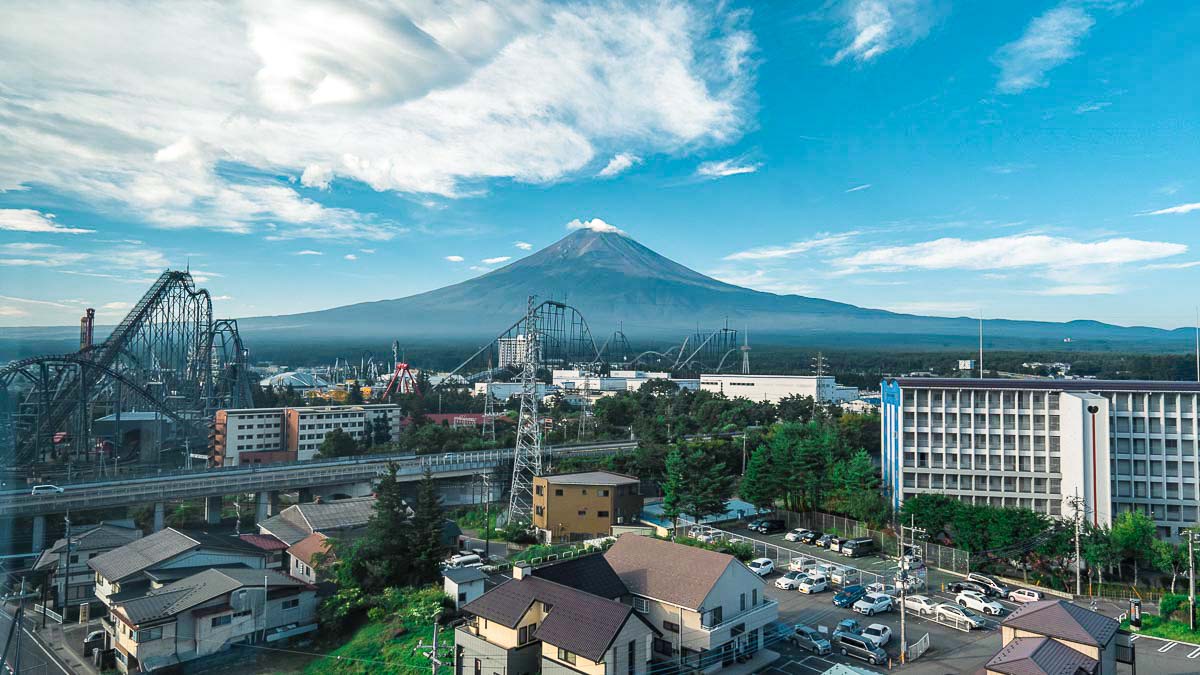
Experience the heart-pounding adrenaline rush at Universal Studios Japan, conquer the summit of Mount Fuji, satiate your inner child at DisneySea and taste the freshest omakase you’ll ever have — all for under S$3.1k.
Backpacking around Japan can be easily summed up with the Chinese saying, “说长不长, 说短不短” (“it’s neither too long nor too short”). 30 days might sound like an eternity, but you’d actually wish you had more time (and money) than you can afford. Alas, the heart wants what the wallet can’t have, but completing this budget backpacking itinerary for under S$3.1k (excluding flights) is certainly not impossible!
Start from the tip of Japan in Hokkaido and journey down south to Kyushu. This 30-day itinerary will include everything to look for in a backpacking experience, particularly for those looking to do a grad trip. From adrenaline-pumping activities and scenic road trips to mouth-watering food, there’s just so much to do! With this itinerary, save over S$300 using the 21-Day Whole JR Pass and ride the bullet train to 12 cities in under a month.
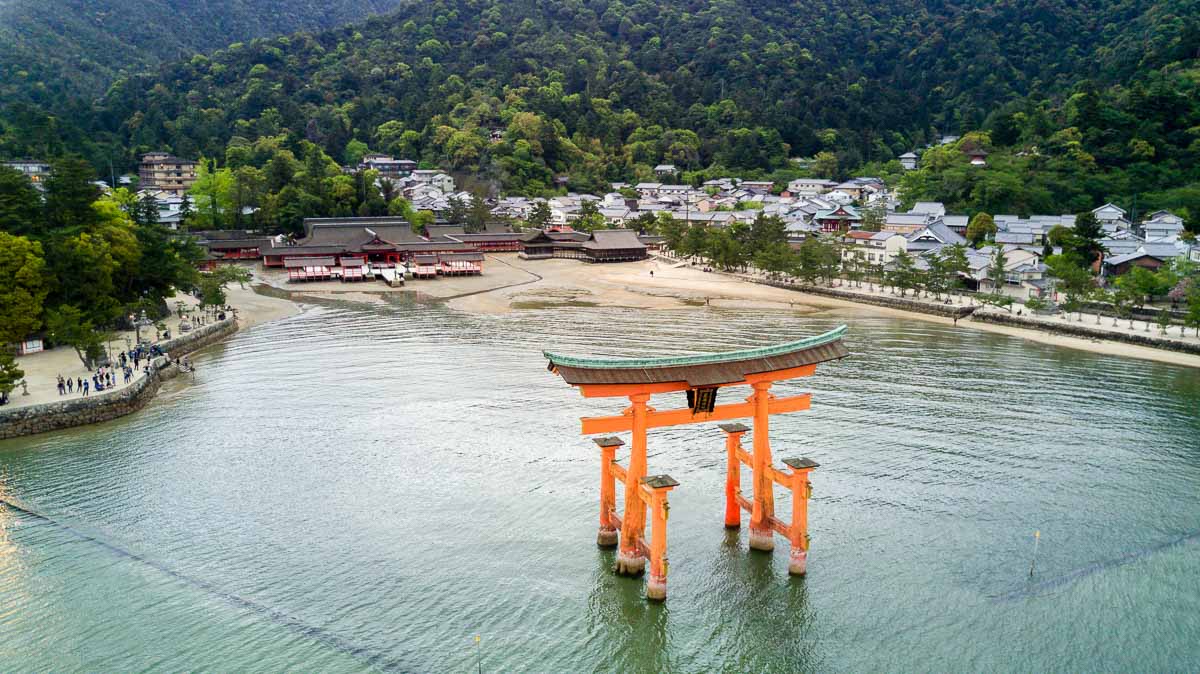
Pre-trip Essentials
Connectivity: 4G WiFi device for ~S$4/day (connects up to 5 devices). JR Pass: 21-Day Whole Japan Rail Pass . Refer to this JR Pass guide for more information. Receive a S$30 Klook Voucher with every Whole Japan JR Pass purchased before 31st December 2019!
Transportation: Use the JR Pass for long rides between cities. For public transport within cities, use IC cards like Suica (Tokyo), Icoca (Osaka) or the Kitaca card (Hokkaido) — you only need one of these as they can be used throughout Japan and are rechargable.
Car rental: ~S$70/day for Hokkaido , excluding collision damage insurance (¥648/day), the Hokkaido Expressway Pass (HEP) and ETC card rental (¥324). In Kawaguchiko (Mount Fuji), ~S$28/day including insurance.
Flights: This itinerary flies in to Sapporo’s New Chitose Airport and departs from Fukuoka Airport in Kyushu. Flights are not included in the budget as the costs vary depending on the month of travel. You can score Japan flight deals and promos from Skyscanner , but sometimes it may be cheaper for you to land in Tokyo and pay for a shinkansen to Hokkaido.
Budget Breakdown
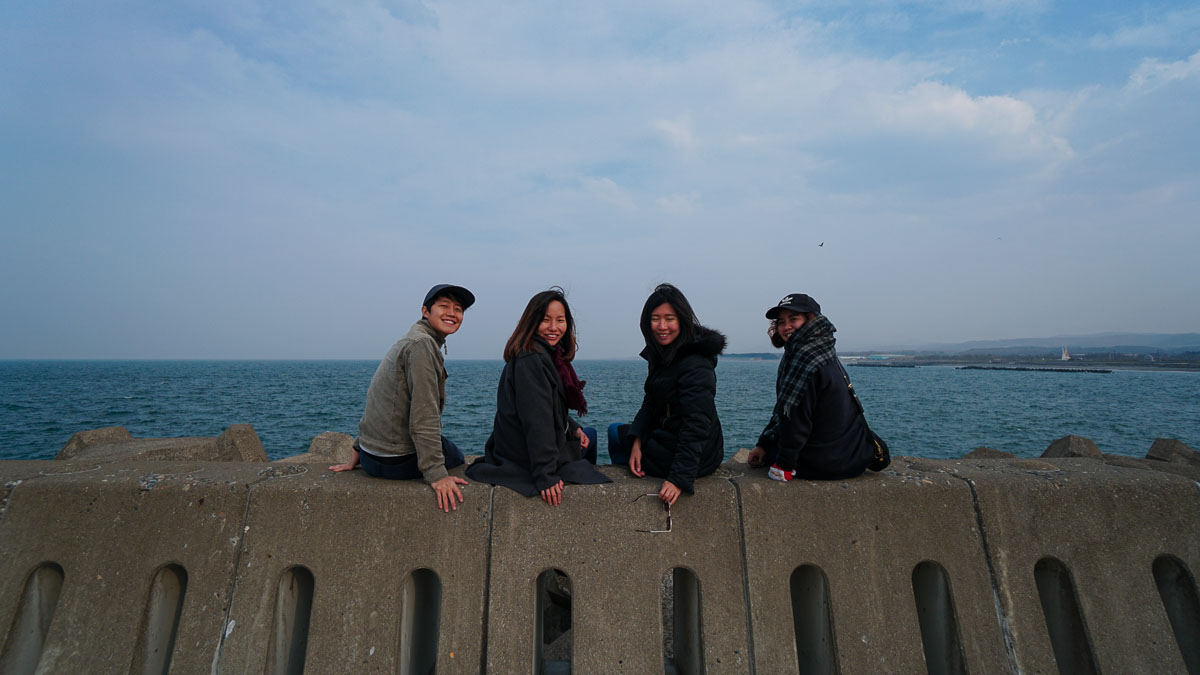
Accommodation: S$807 Food: S$510 Activities: S$742 Transport: S$1,038 (including 21-Day Whole JR Pass )
TOTAL: S$3,097
Check Flight Prices to Japan
Day 1–5: hokkaido.
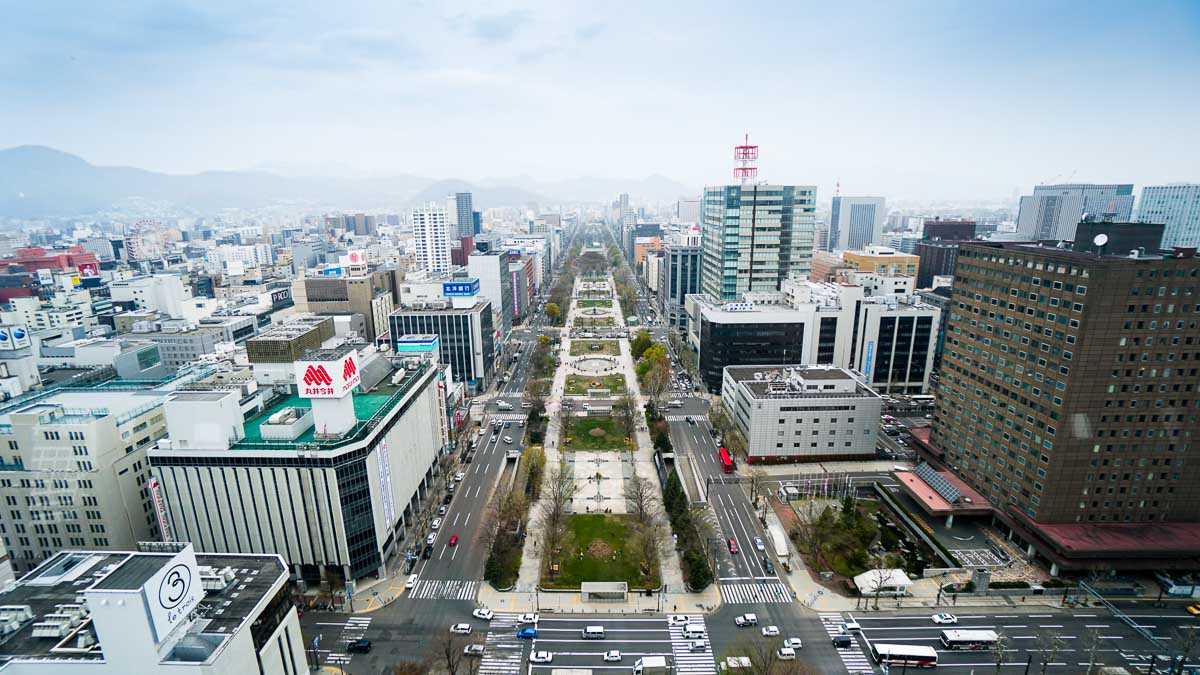
Sapporo City (2D) & Road Trip Around Hokkaido (3D)
Dive in to the largest city on Hokkaido island, reminiscent of its neon-lit siblings Tokyo and Osaka with its own host of iconic quirks. It’s a destination famous for its white winters, but Sapporo has a great deal to offer even when it’s not covered in a blanket of white.
*Pro-tip: Get 5% off accommodation at Hakodate Kokkusai Hotel and Hotel Sonia Otaru by using < TTI5 > under promo code!
Getting from New Chitose Airport to Sapporo — Take airport limousine bus 14 to Nakajima (¥1,030). The bus leaves once an hour and the ride is about 1hr 9mins. Alternatively, the JR Airport Rail leaves about thrice hourly and only takes 37 mins (¥1,070 without reservation).
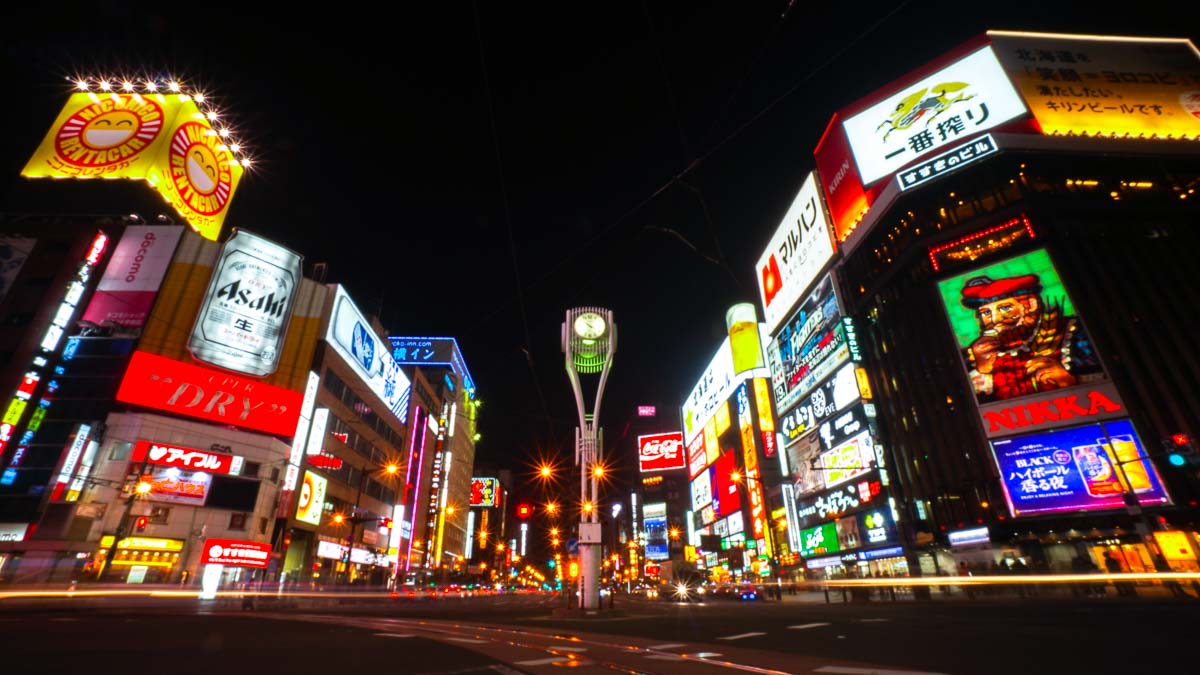
Getting around in Sapporo: Kitaca is the prepaid IC card by JR Hokkaido . It can also be used on Sapporo’s subways, buses, trams and JR trains. Though you can use this same IC card for transport in Tokyo and Osaka, you can only get card refunds from the city you got it from (i.e. Sapporo), so you’re better off getting a separate IC card after the Hokkaido leg.
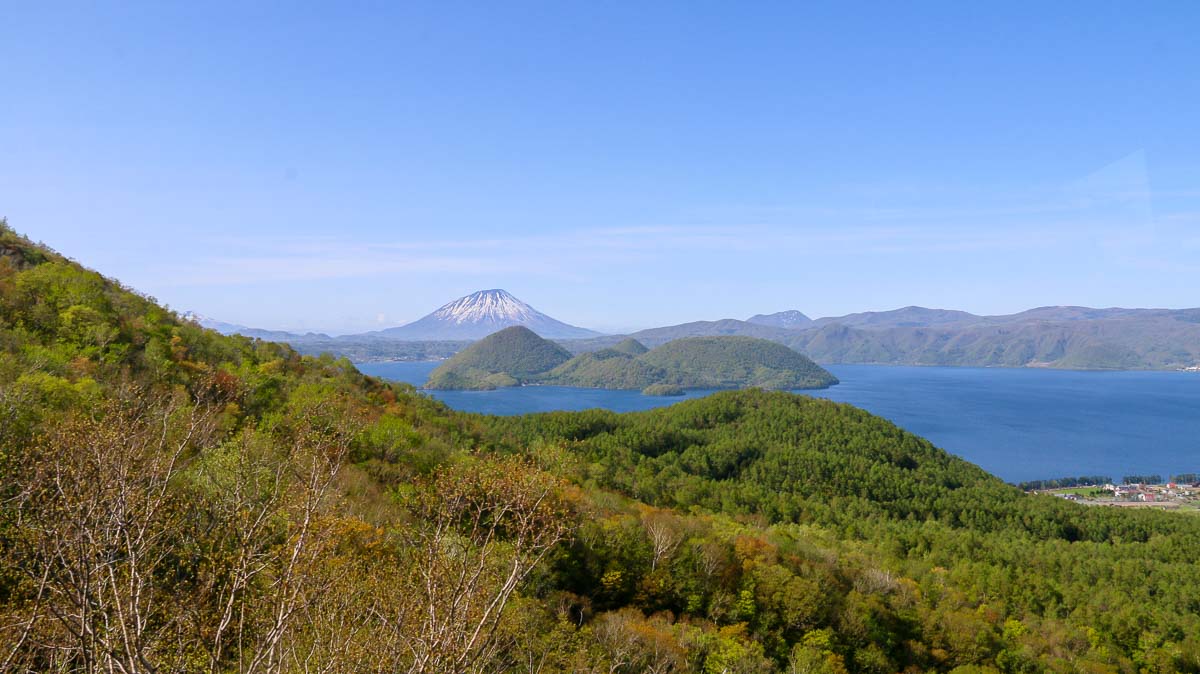
Road trip: While you can explore the outskirts of the city with the 3D JR Hokkaido Pass (S$200), it’s cheaper to rent a car when travelling in a group — for four pax, it’s ~S$140/pax including petrol and add-ons like insurance.
Read also: Budget Hokkaido Itinerary: 8D Spring Road Trip Under S$1k incld. Accommodation
Highlights: Sapporo TV Tower — Get a stunning bird’s eye view of the city on top of the Sapporo TV Tower ( ~S$8 ) pictured above.
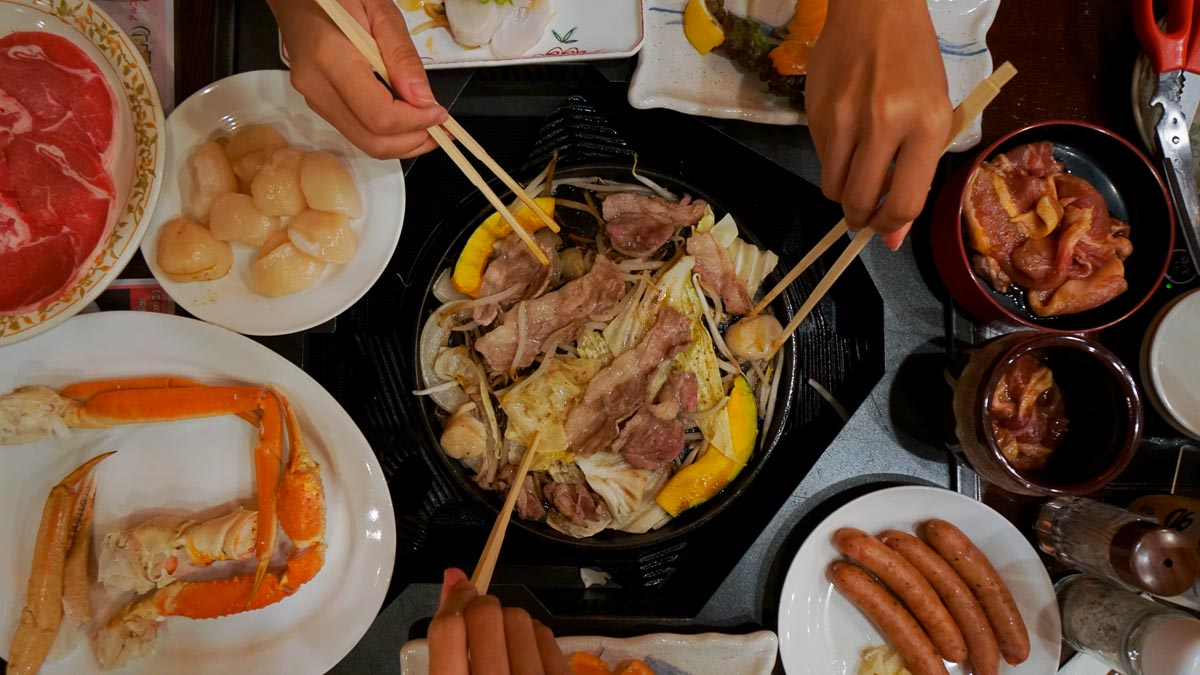
Sapporo Bier Garten — Pamper yourself with a 100-minute all-you-can-eat buffet ( ~S$85 ) at the Bier Garten (Beer Garden) just beside the Sapporo Beer Museum, with free flow beer to boot!
For other exciting things to do in Sapporo, check out our Sapporo City Guide .
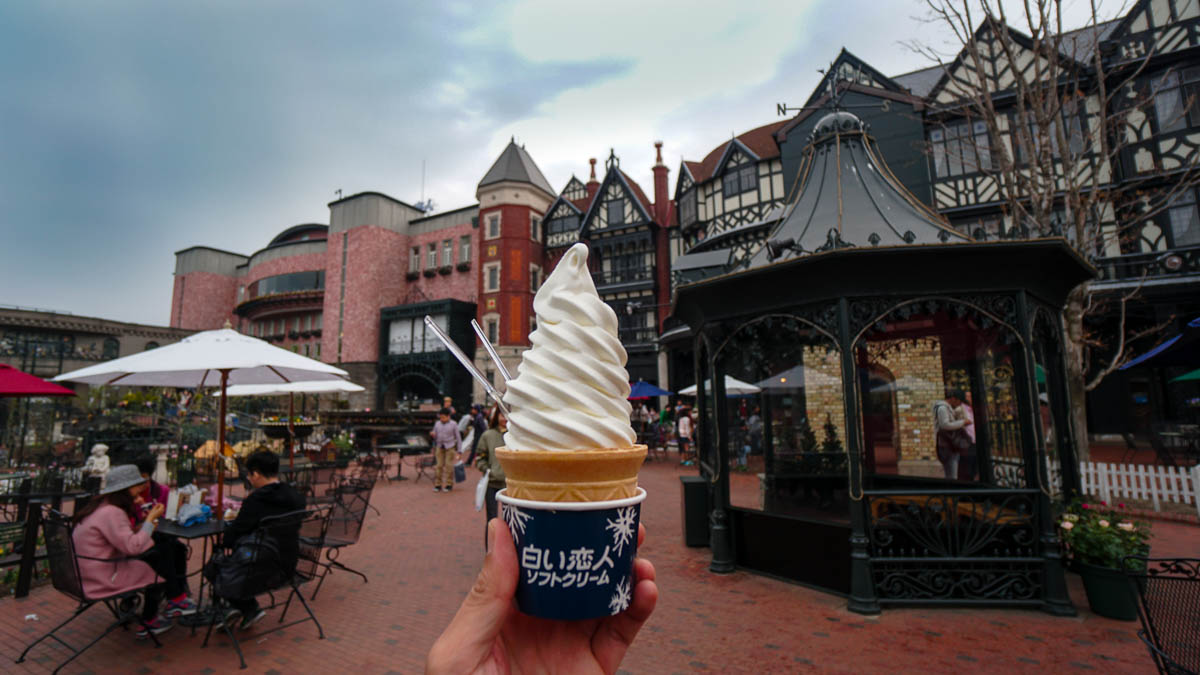
Shiroi Koibito Park (White Lover Park) — Yes, it is the legendary Japanese biscuit sandwich your friends always buy home as souvenirs! After more than a year, Japan’s most famous white chocolate sandwich cookie 白い恋人 (Shiroi Koibito) is re-opening its factory on 12 July 2019. Witness the making of the iconic biscuit sandwich and try a variety of premium chocolate sweets by Shiroi Koibito .
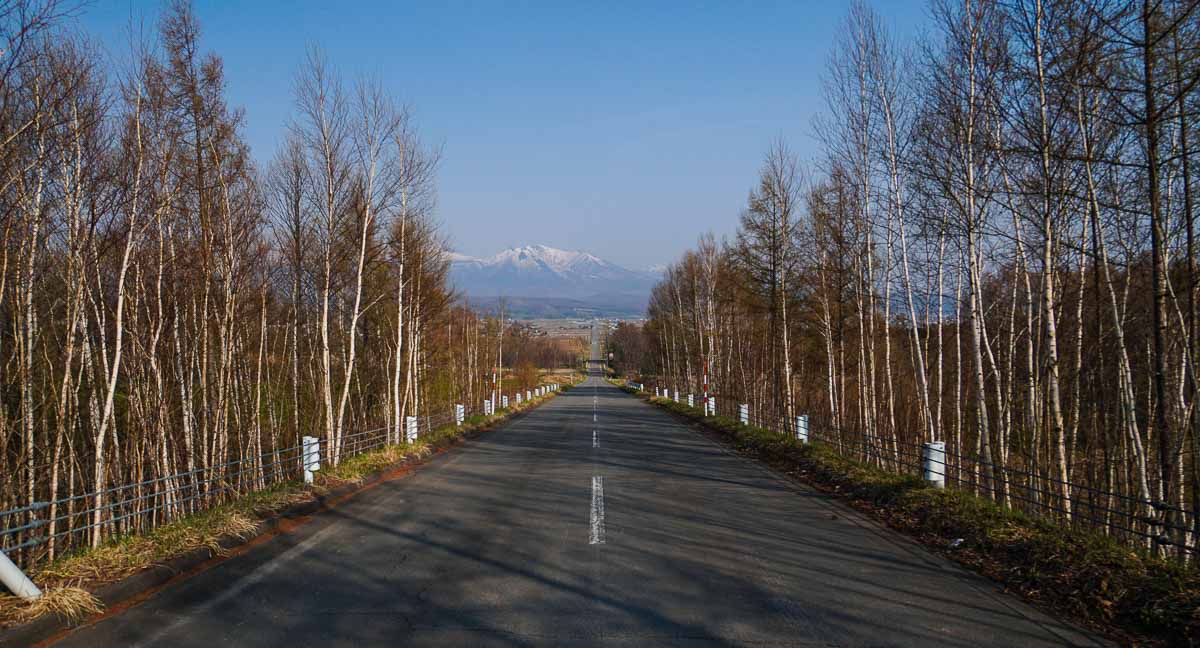
*Pro-tip: For getting around with the in-car GPS, just key in the Map Code or phone number (found on google maps).
After returning the car, activate your JR Pass and get ready for Tokyo !
Day 6–8: Tokyo
When to use the JR Pass: – Sapporo Station (Super Hokuto towards Hakodate) – Shin-Hakodate-Hokuto Station – Shin-Hakodate-Hokuto Station (Tohoku-Hokkaido Shinkansen towards Tokyo) – Tokyo Station
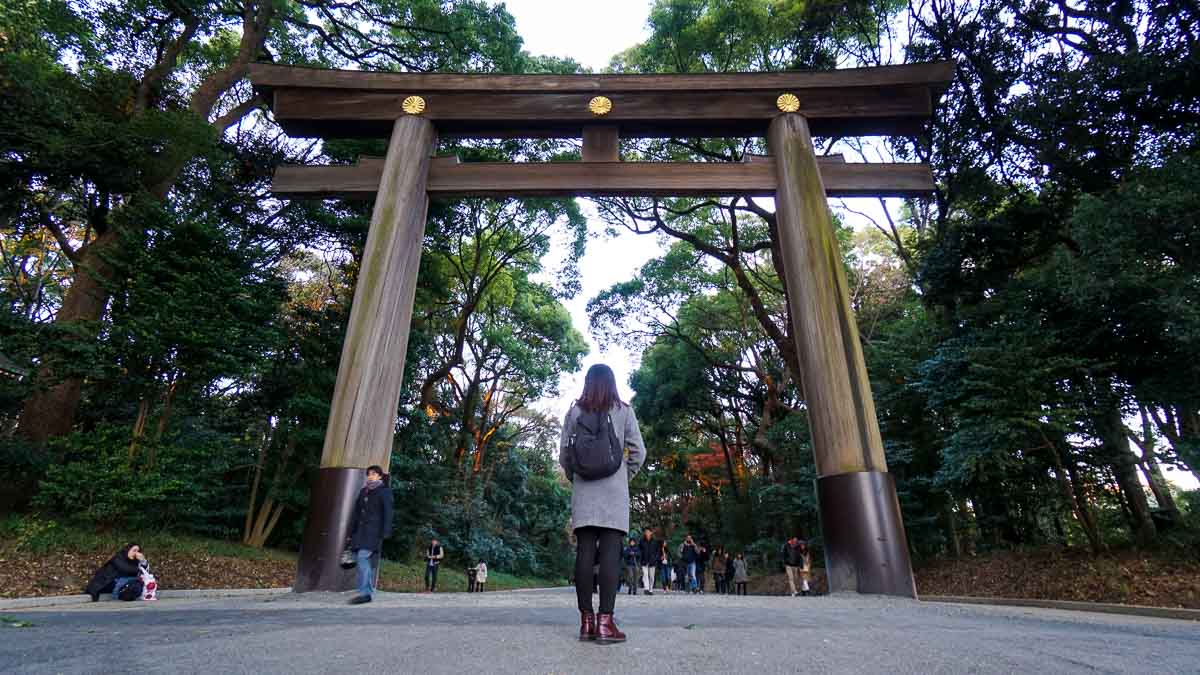
Tokyo is home to the busiest seafood market (formerly Tsukiji, now known as Toyosu Market) and train station (Shinjuku Station which has over 200 exits) in the world. It is also the most visited city in all of Japan. From the strikingly unique fashion streets of Harajuku to the insane number of people at the Shibuya traffic crossing, Tokyo will charm you in ways you wouldn’t expect — I never imagined that I’d pay for a cup of coffee at Starbucks just to watch people cross the road, for one.
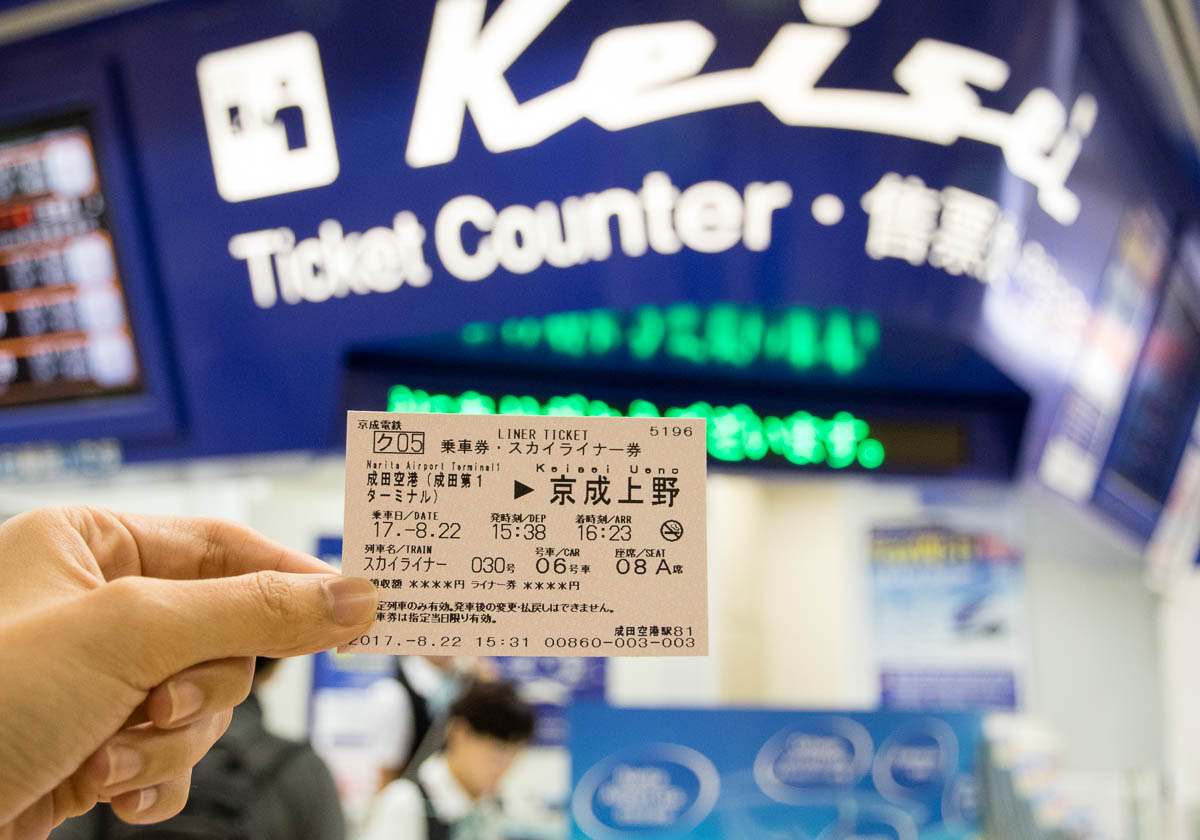
Getting around in Tokyo: Tokyo Subway Ticket (72 hours) — Purchase online and collect from the Harajuku Tourist Information Centre. Alternatively, reload your Kitaca card from Sapporo.
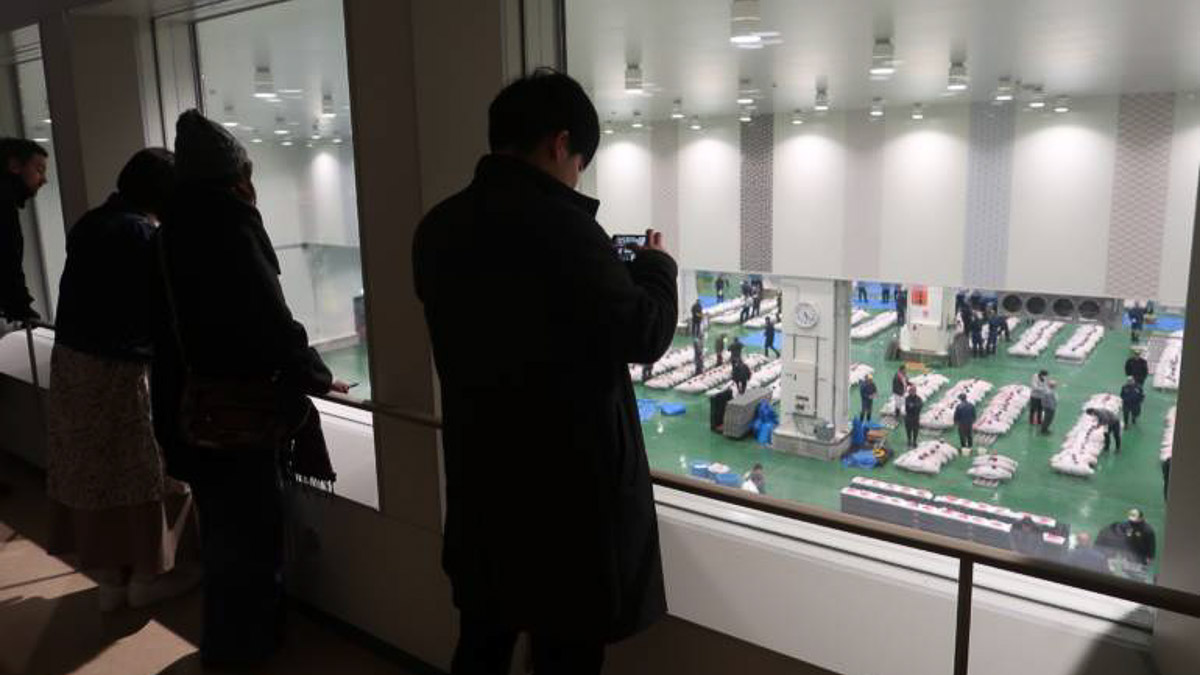
Highlights:
Toyosu Market Tuna Auction — Still an extremely popular tourist activity, the auction has been relocated from the former Tsukiji to the new Toyosu Fish Market as of October 2018.
Remember to make reservations in advance to catch the auction up close (ground floor observation deck). Alternatively, view the auction from the observation windows on the upper-floor (no reservation required).
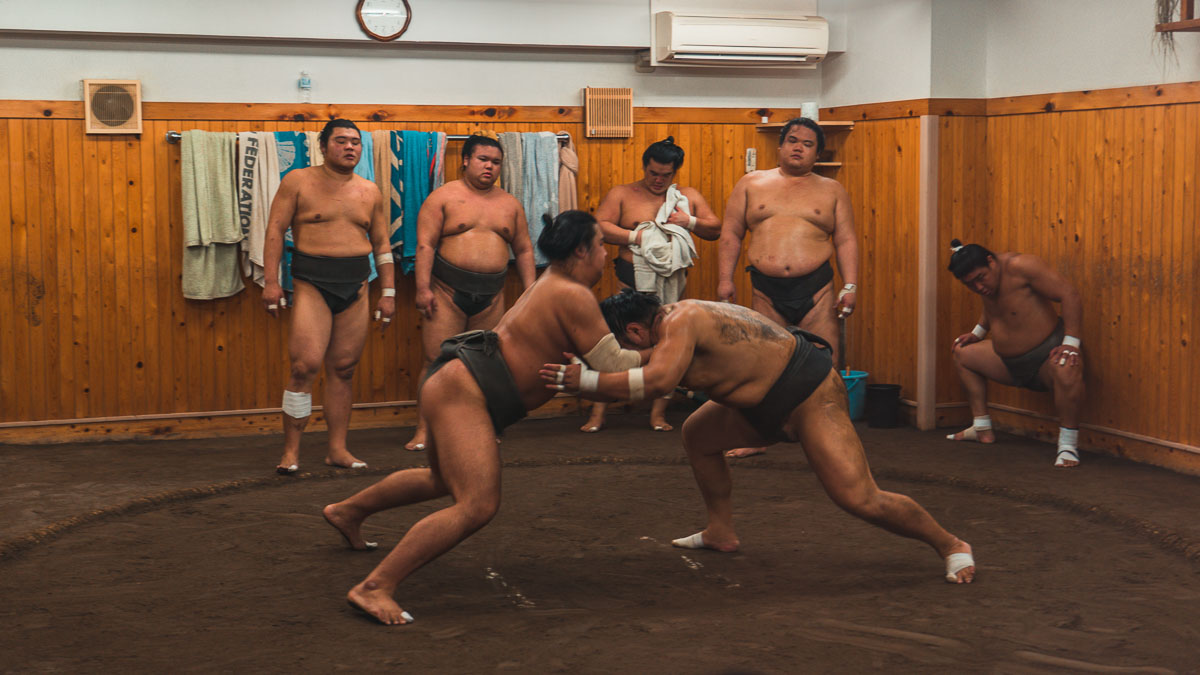
Watch sumos in action — The Japanese experience doesn’t get any more authentic than catching real life sumos in action at the Arashio-Beya Sumo Stable .
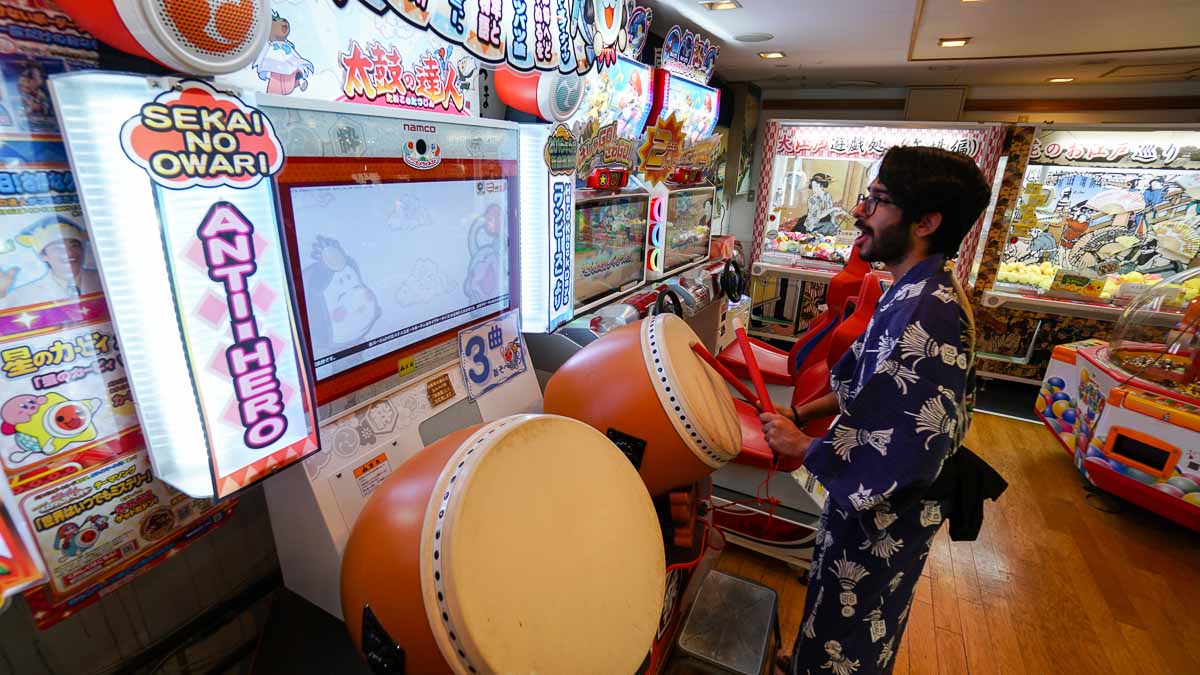
Oedo-Onsen Monogatari in Odaiba — Built on an artificial island in Tokyo Bay, Odaiba is just 30 minutes from Tokyo Station. And while onsens are aplenty in Japan, this one has over 13 different types of natural hot springs to choose from, an in-house eatery, a shopping arcade, and free yukatas to stroll about in!
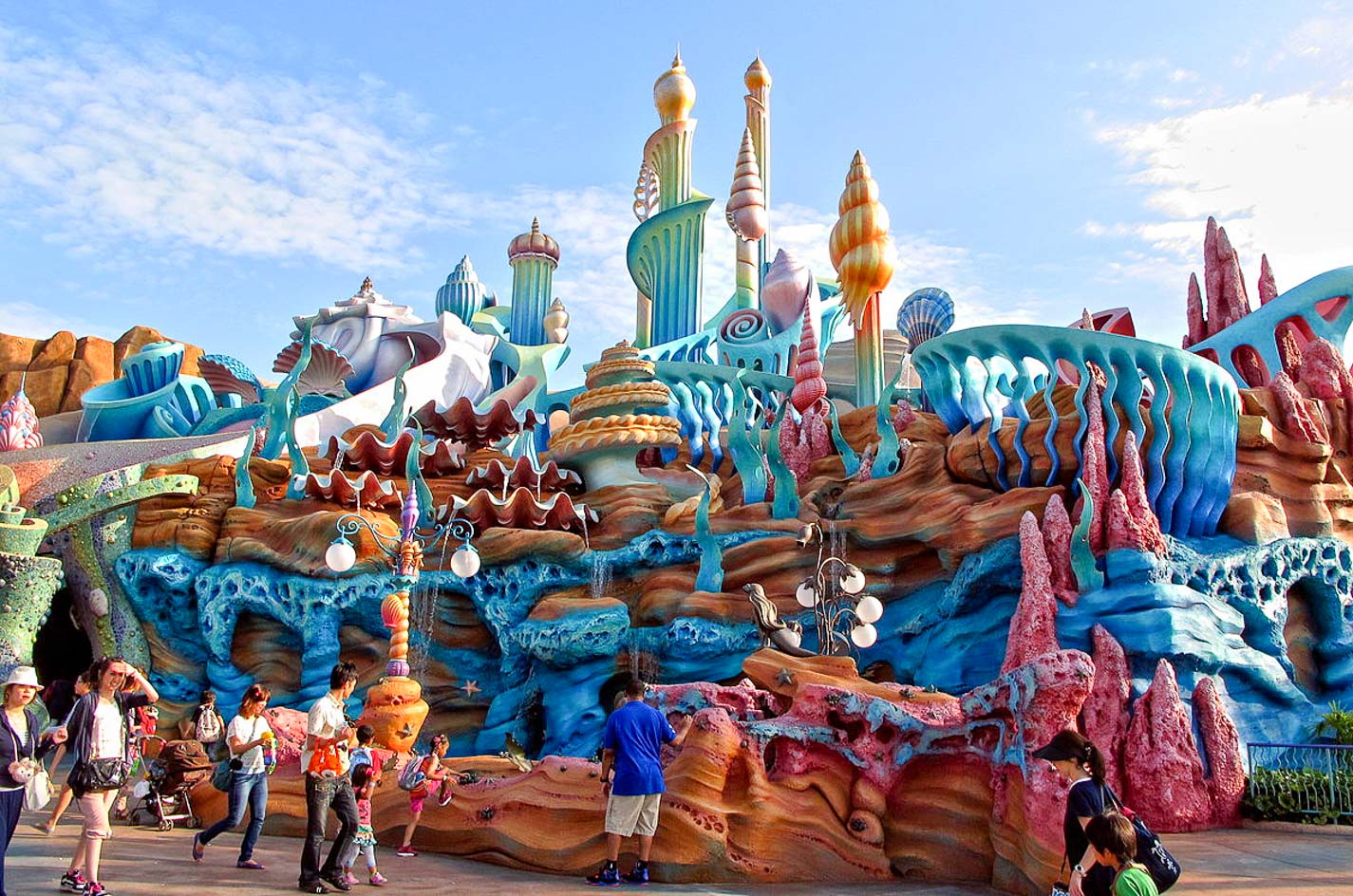
Tokyo DisneySea — Who says Disney is only for kids? Get wowed and taken back in time in this lively entertainment complex. Check out our Tokyo Disneyland and DisneySea guide for tips and tricks on how to have the best experience.
If you’re more of a foodie, eat your way around Tokyo with our Tokyo Food Guide!
Day 9–10: Hakone
When to use the JR Pass: – Odawara Station (Tokaido Line towards Atami ) – Atami Station – Atami Station (Tokaido Line towards Hamamatsu ) – Fuji Station
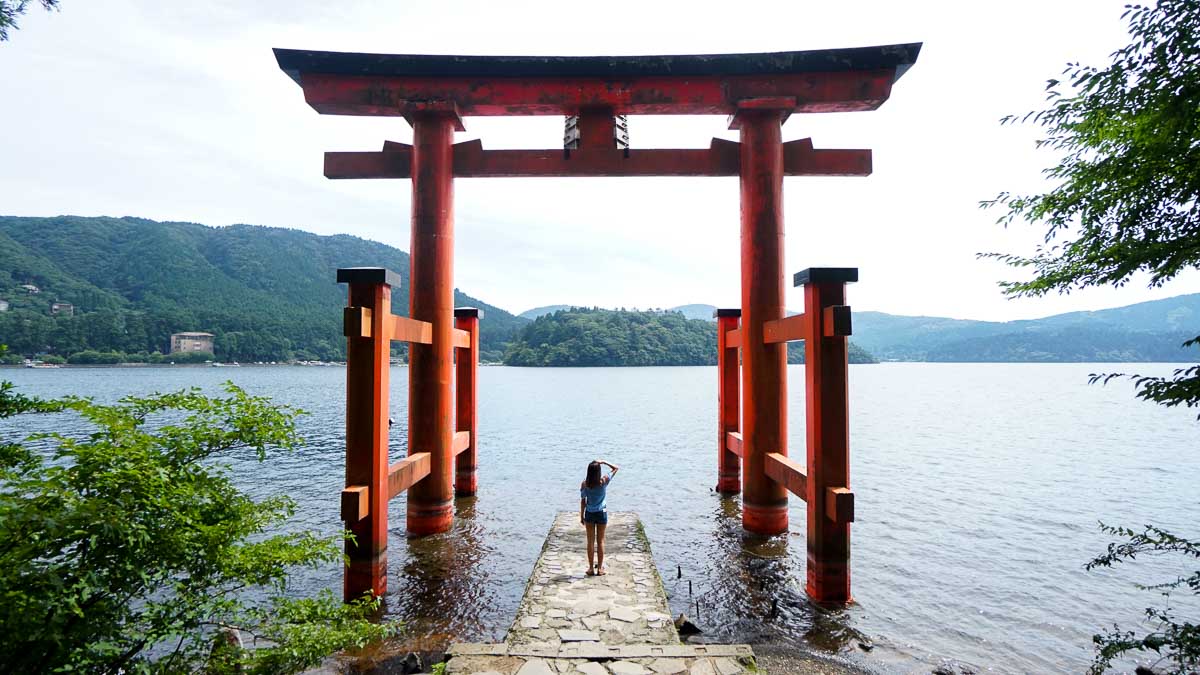
A famous onsen destination and the perfect spot to cruise around for mesmerising views of Mount Fuji, Hakone is also within the borders of a volcanically active park – yikes! But that’s precisely what makes it the ideal destination for hot springs.
People typically visit Hakone as a day trip, but we find spreading it across two days much more relaxing. Check out what are the top 10 places to visit in Hakone !
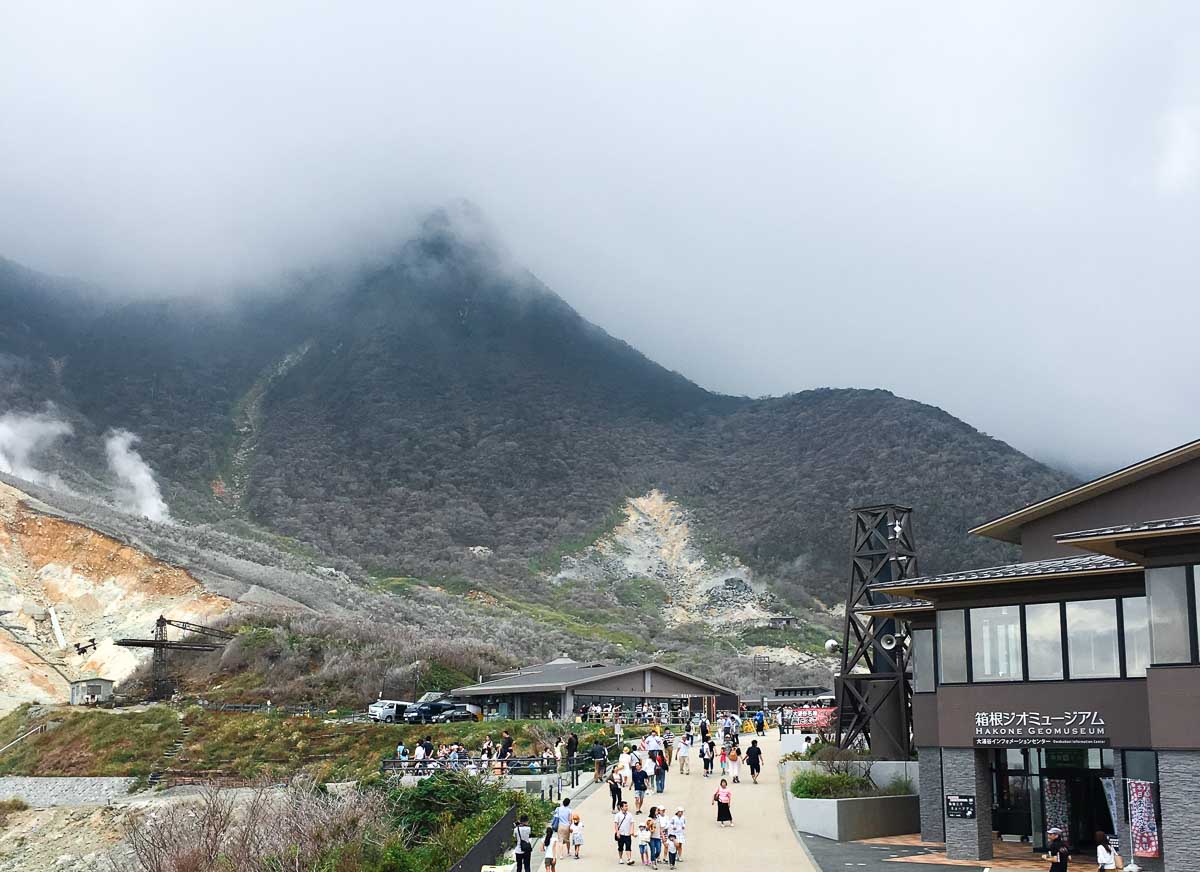
Getting around in Hakone: Get your 2-Day Hakone Free Pass(~S$62) to enjoy unlimited rides on all the main transportation in Hakone.
Everything you need to know about planning your visit can be found in our Hakone Travel Guide — The Most Scenic Day Trip From Tokyo .
Day 11–15: Mount Fuji
When to use the JR Pass: – Fuji Station (Tokaido Line towards Shizuoka) – Shizuoka Station – Shizuoka Station (Tokaido-Sanyo Shinkansen towards Shin-Osaka) – Kyoto Station
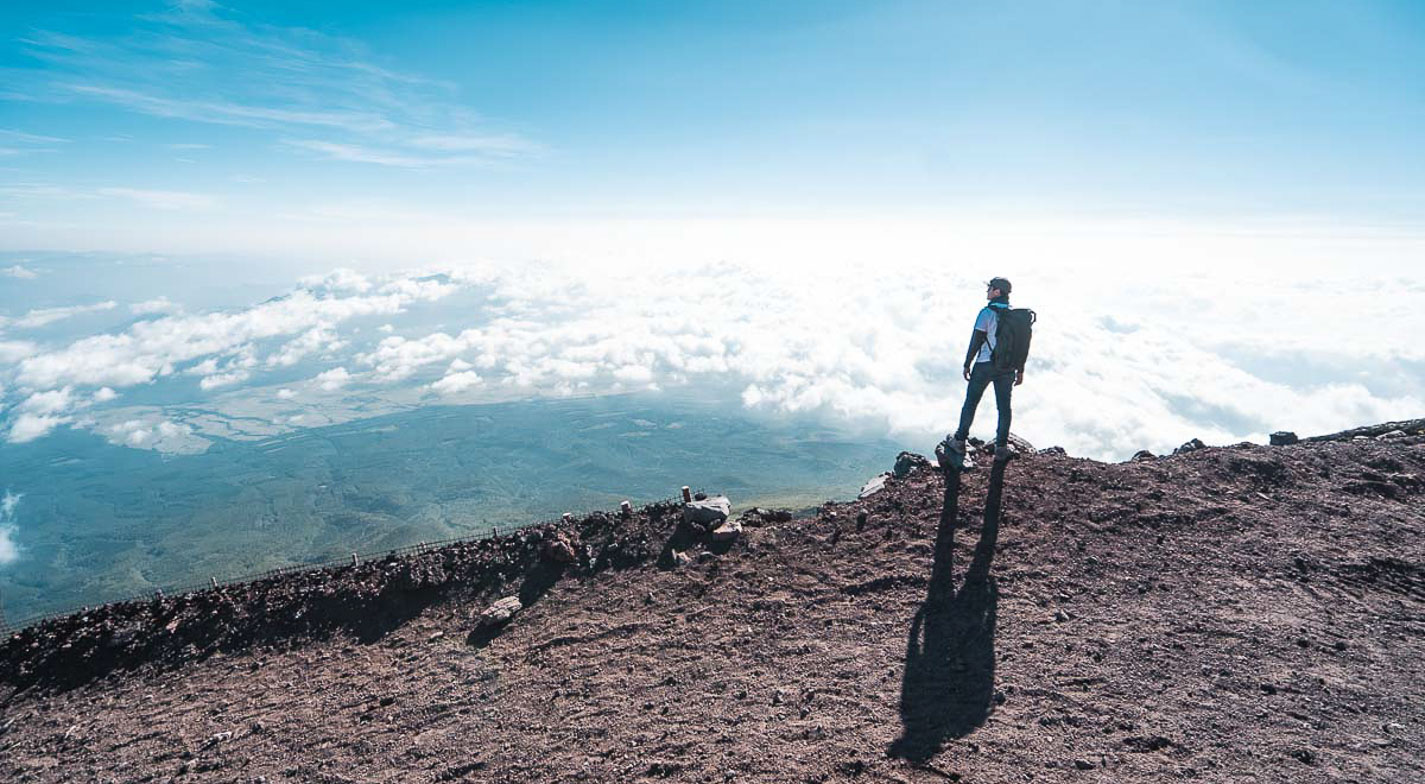
Mount Fuji is one of the most iconic symbols of Japan. Despite being open to the public just two months in a year, Mount Fuji sees some 300,000 climbers each year making it the most climbed mountain in the world! And now that you know how climbable it is, it’s time for your big ascent!
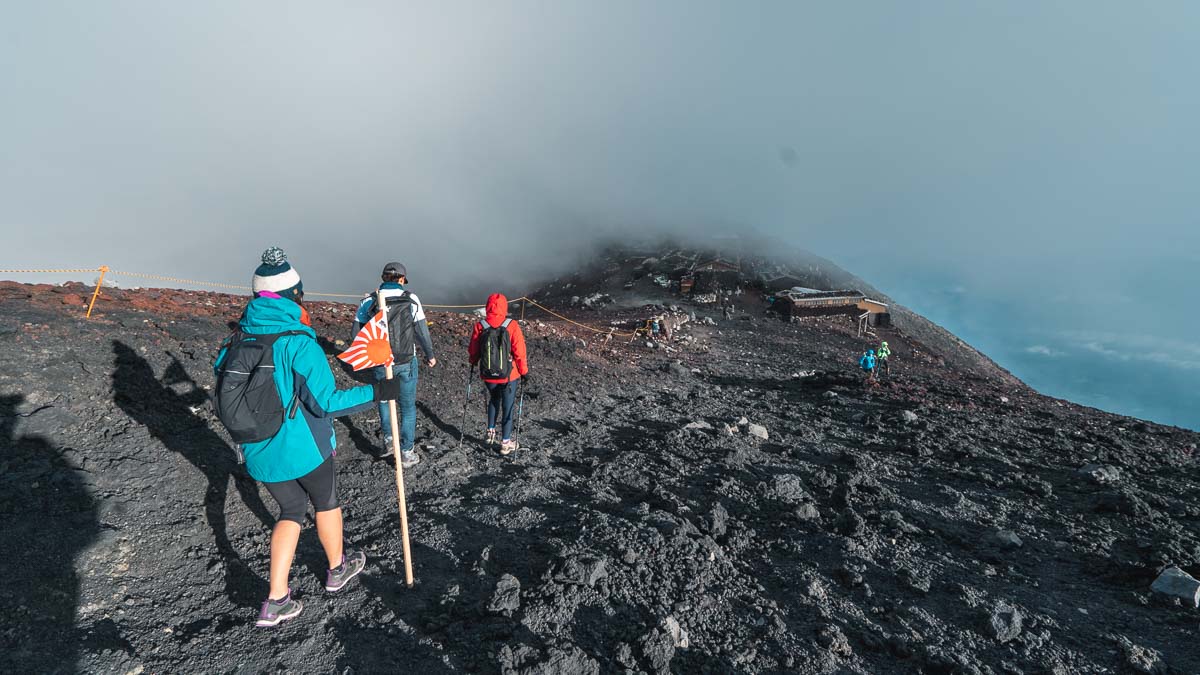
Highlights: Climb Mount Fuji — Not only will you get to check this off your bucket list, you’ll also get to burn off all the calories you would’ve packed on in the past 10 days of the trip. Find out when the climbing season is along with other tips and tricks in our Guide to Climbing Mount Fuji !
How to get there: Take the Subaru Line from Kawaguchiko Station to Fuji Subaru 5th Station .
*Pro-tip: If you’re staying at Kawaguchiko Inn (opposite Kawaguchiko Station), leave your bulky non-essentials there before your hike.
Fuji-Q Highland — If Disneyland/DisneySea isn’t your cup of tea, here’s a fun alternative — Fuji-Q Highland ! Unlike regular amusement parks, entrance to Fuji-Q is free and you pay per ride. Thankfully, there’s the Fuji-Q 1 Day Free Pass (~S$64.15) that gives you unlimited rides in the park! Find out how to best utilise this day pass in our Fuji-Q Highland Guide.
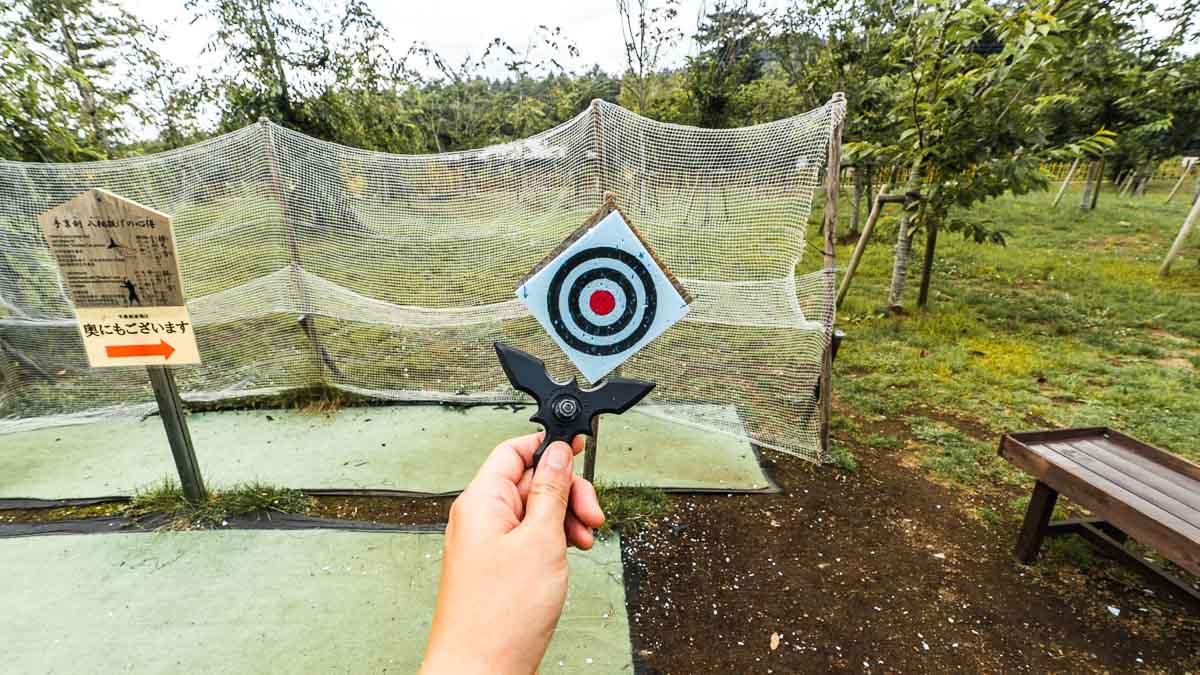
Road trip around Fuji — Exploring Kawaguchiko and Mount Fuji is easier with a car. With 24 hours left in Fuji, we rented a vehicle from Toyota Rent A Car for ¥2,295/pax for the four of us including insurance. Alternatively, there’s always public transport !
Day 16–18: Kyoto
When to use the JR Pass: – Fuji Station (Tokaido Line towards Toyohashi ) – Shizuoka Station – Shizuoka Station (Tokaido-Sanyo Shinkansen towards Shin-Osaka ) – Kyoto Station
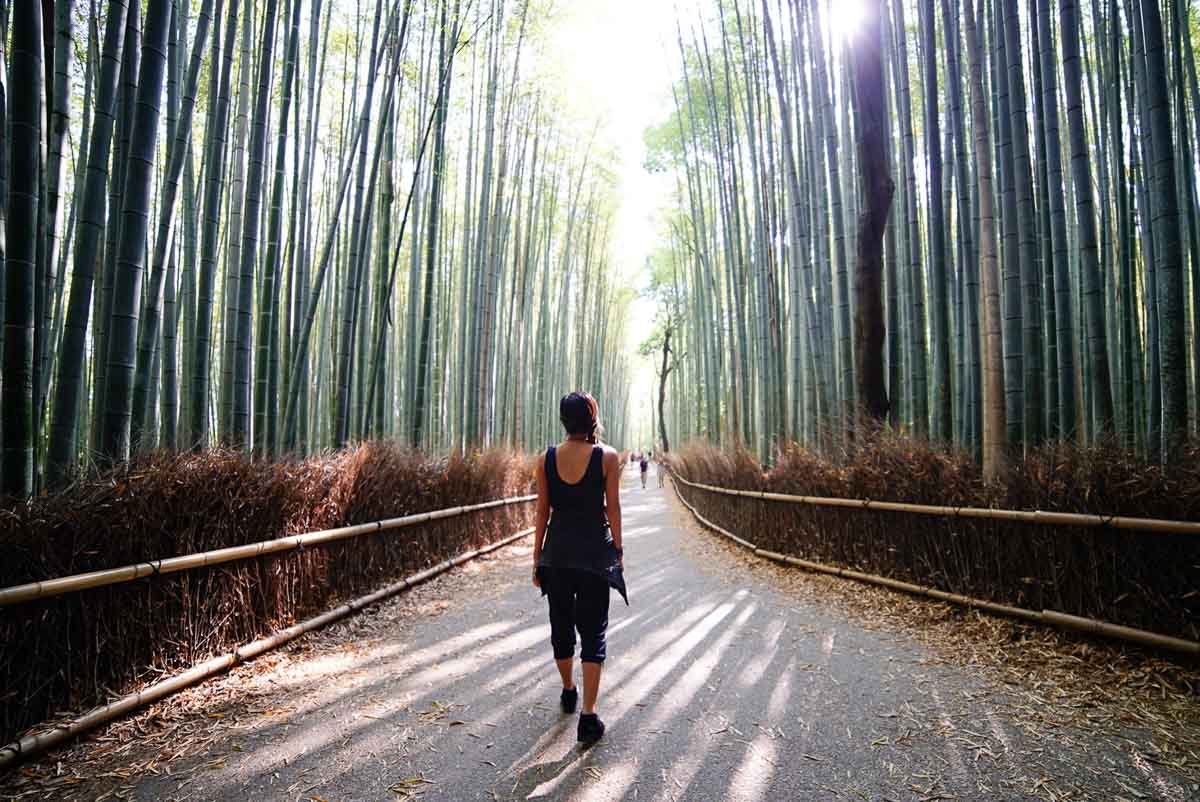
The mother of all shrines that’s also home to the famous Arashiyama Bamboo Forest, the former capital of Japan is best known for its quaint heritage sites.
Getting around in Kyoto: Rent a bicycle from Ekirin Kun (free when you show your JR Pass) and cycle around the city!
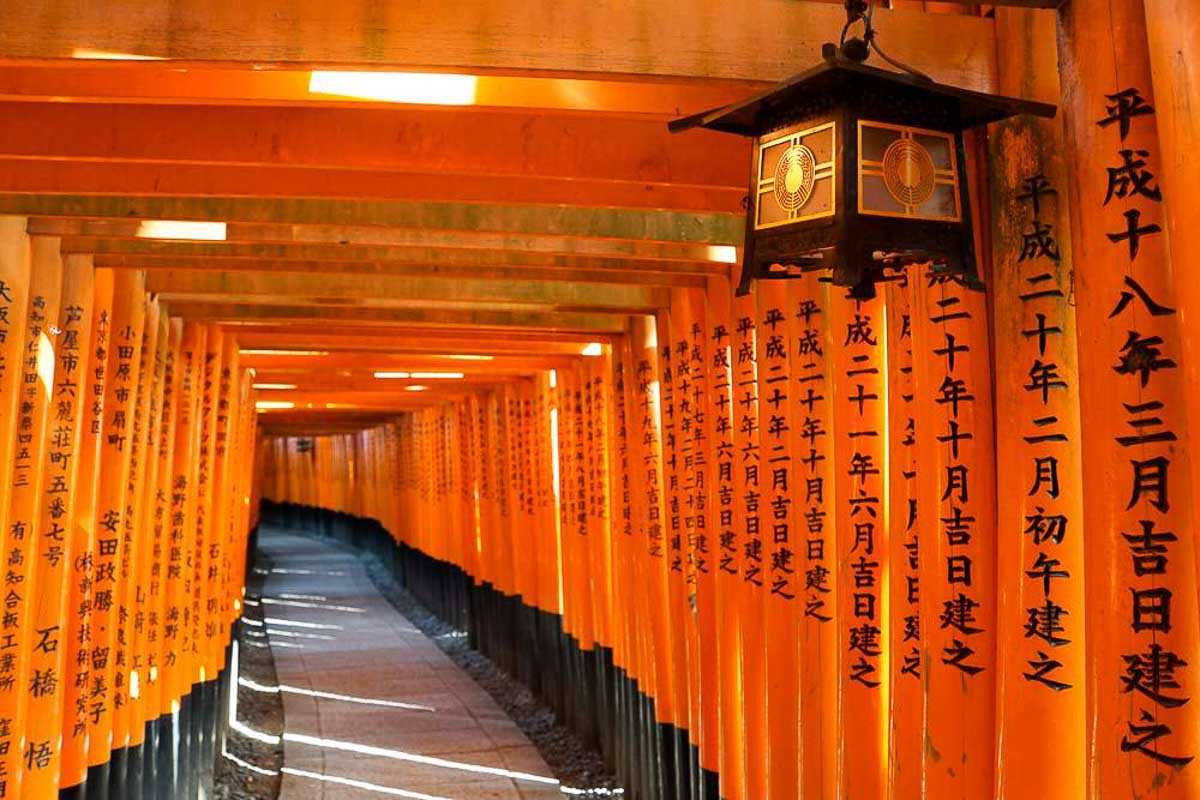
Highlights: Temple hop around Kyoto by bike — Discover world-renowned historic sites around while whizzing through the city. Fun fact: each of the torii gates at the Fushimi Inari Shrine were donations by people and companies around the world! The smaller gates start from a whopping ¥400,000 (that’s close to S$5,000!).
Read also: Kyoto Budget Guide for more things to see, do and eat.
Day 19: Kyoto — Nara — Osaka
When to use the JR Pass: – Kyoto Station (Nara Line towards Nara) – Nara Station – Nara Station (Yamatoji Line towards Osaka ) – Osaka Station
Getting around in Nara: Leave your luggage in storage lockers at the station and grab a free Ekirin bike with your JR Pass.
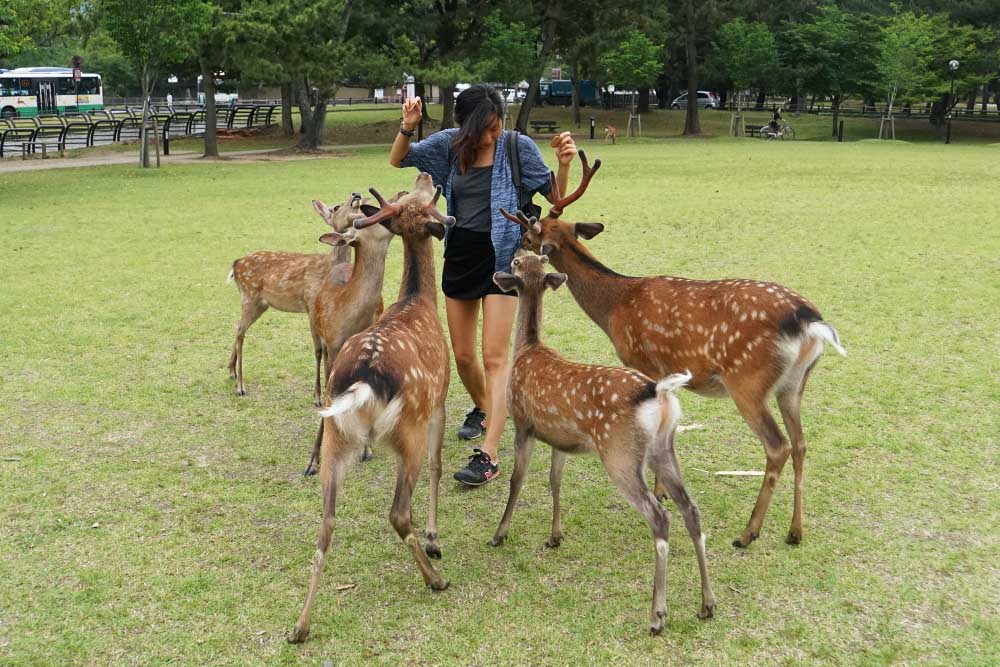
Yup, it’s the one place everyone goes to feed deer. And apparently, you don’t have to specially make a visit to the deer park — they roam the grounds freely! Grab a pack of biscuits from vendors around the park (¥150) to feed the deer with. Read our Nara Budget Guide for other things to do in Nara.
Retrieve your bags and head to Osaka for the night!
Day 20–21: Osaka
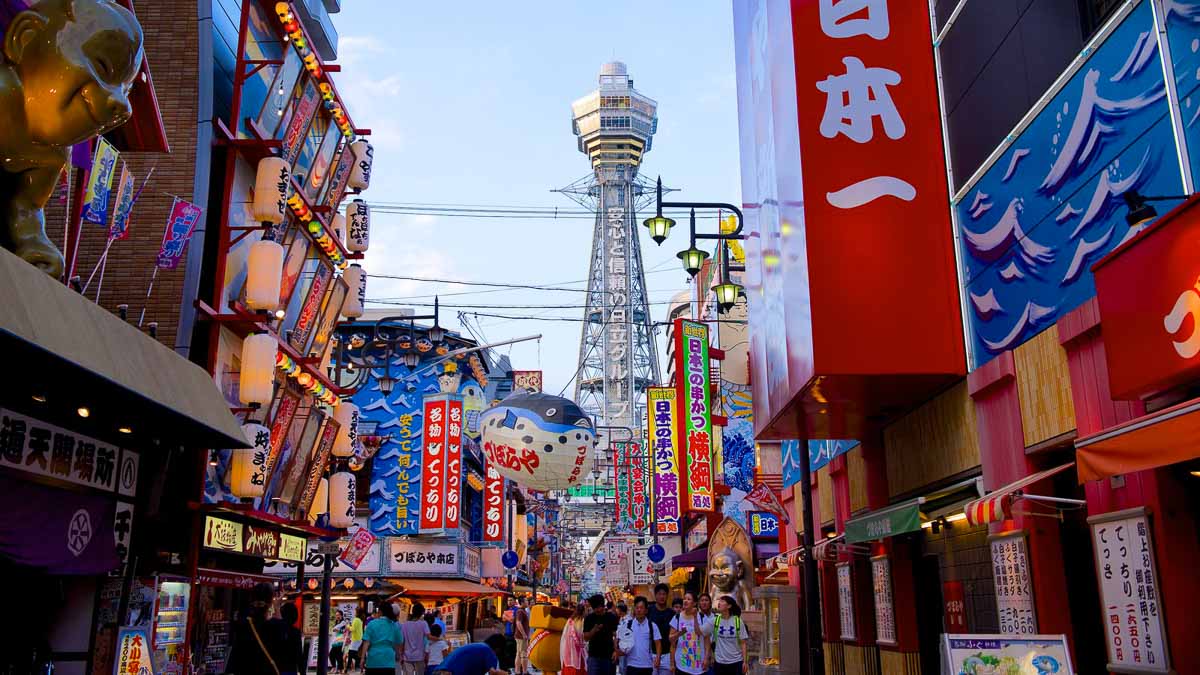
Osaka isn’t just known for its food — hello, takoyaki and okonomiyaki — but also its warm, friendly people that many like to contrast with the Tokyo crowd. And of course, when in Osaka, you can’t miss Universal Studios Japan!
Getting around in Osaka: Enjoy unlimited rides on buses and local trains (except JR trains) with the Osaka Amazing Pass (S$30.35) .
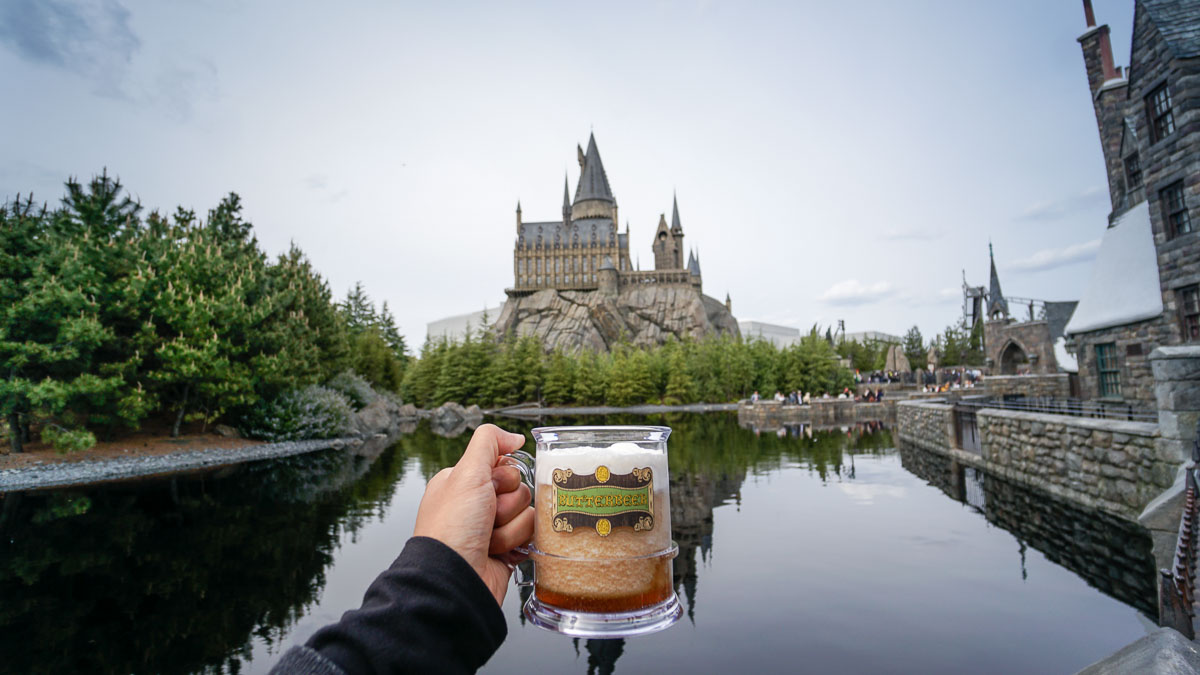
Universal Studios Japan — Skip the queues and buy your USJ tickets online so you can head straight to the park when it opens.
Find out other ways to save your time and money with our ultimate USJ guide to planning a magical experience !
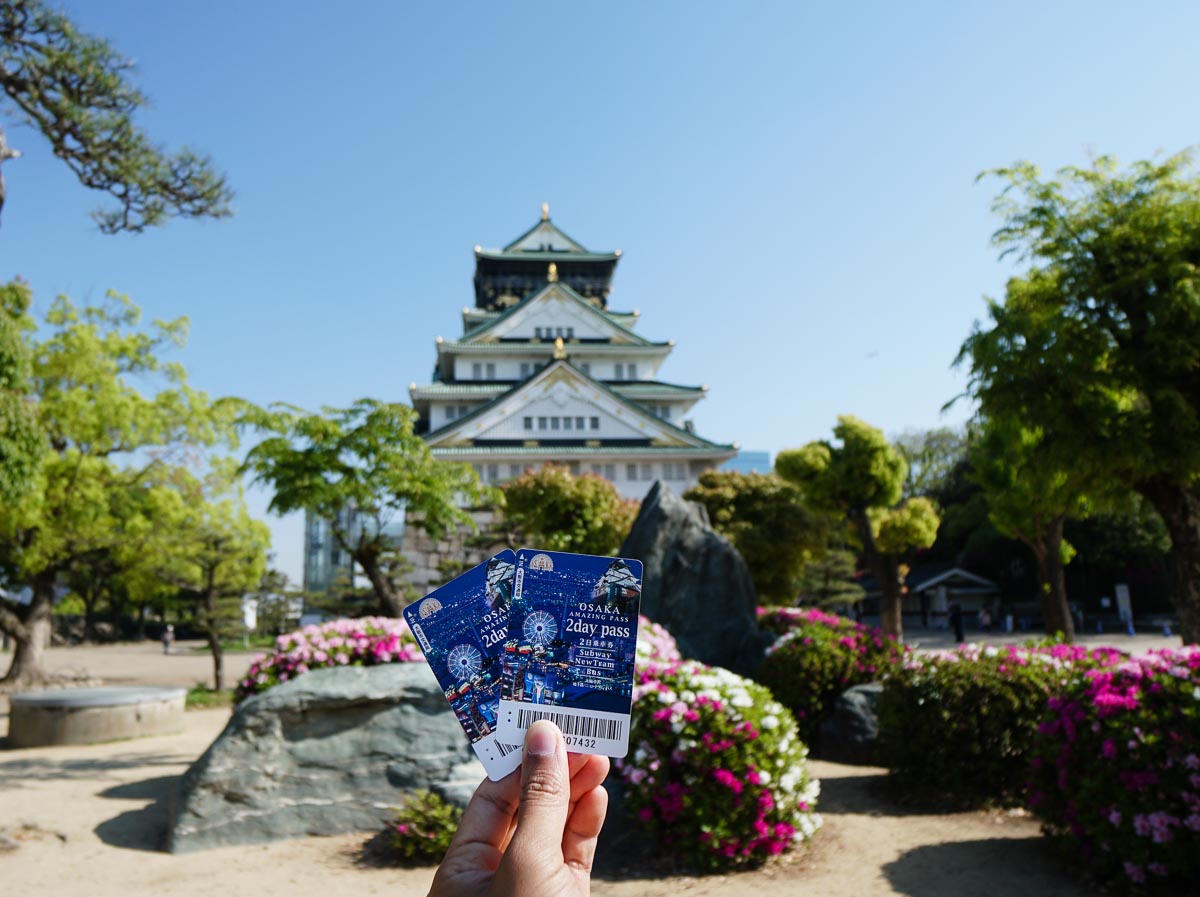
Sightsee with the Osaka Amazing Pass — The Osaka Amazing Pass (S$30.35) gives you free entry to 33 attractions, discounts at restaurants and shops, as well as free rides on all buses and local trains (except JR lines). Redeem your pass at the OCAT building in JR Namba station (Information Center of Japan Holiday).
Psst, visiting just the Osaka Castle, Osaka-jo Gozabune Boat and Tempozan Giant Ferris Wheel (total ~S$33) would already make the pass worth the money!
*Pro-tip: Pick a weekday to activate the pass as some free admissions are not applicable on weekends.
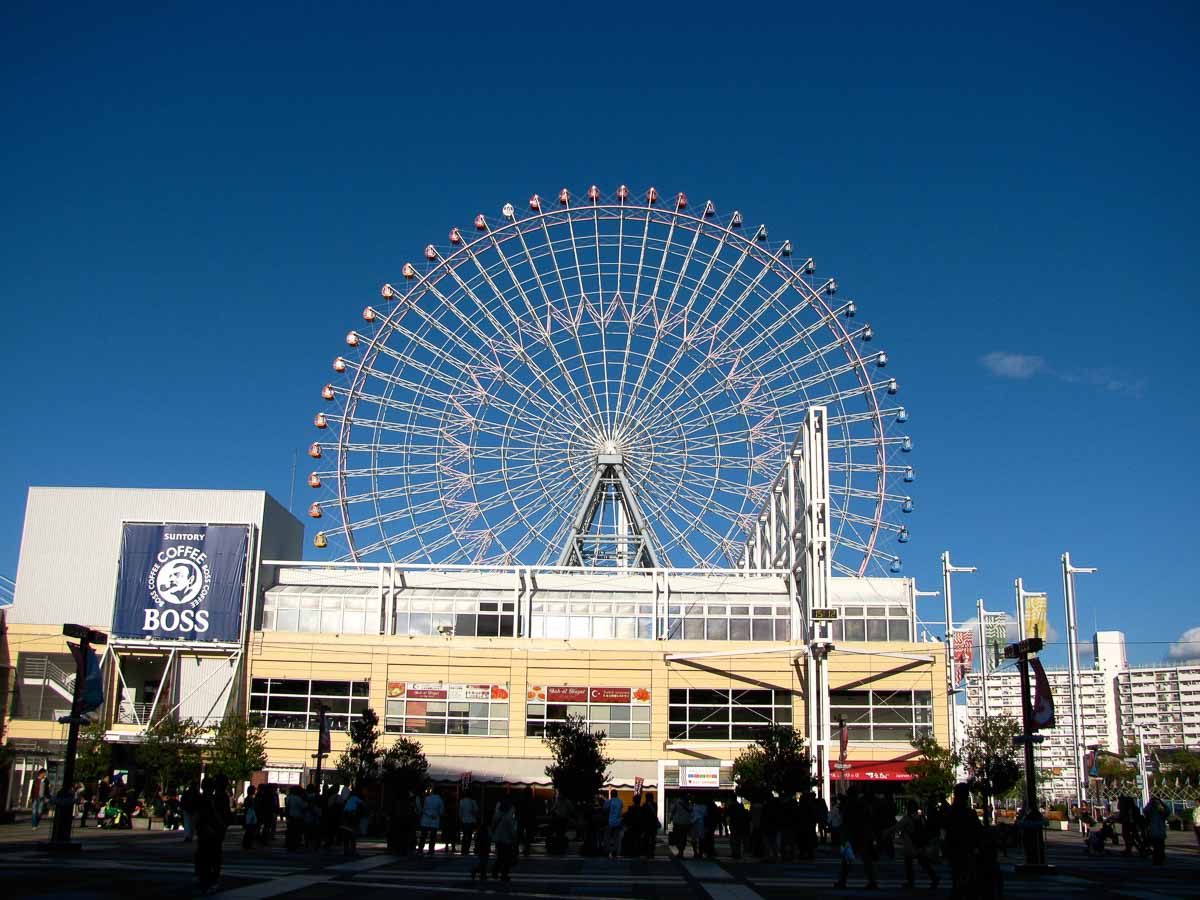
Check out our Osaka Budget Guide for food options and other things to do in Osaka!
Day 22: Hiroshima — Naoshima — Hiroshima
When to use the JR Pass: – Osaka Station (Tokaido-Sanyo Line towards Kyoto ) – Shin-Osaka Station – Shin-Osaka Station (Tokaido-Sanyo Shinkansen towards Kagoshimachuo ) – Okayama Station – Okayama Station (Uno Line towards Uno) — Uno Station (Naoshima) – Uno Station (Uno Line towards Okayama) – Okayama Station – Okayama Station (Tokaido-Sanyo Shinkansen towards Kagoshimachuo) – Hiroshima Station
Ferry not covered by JR Pass: – Uno Station (Shikoku Ferry) — Naoshima (¥520 round trip)
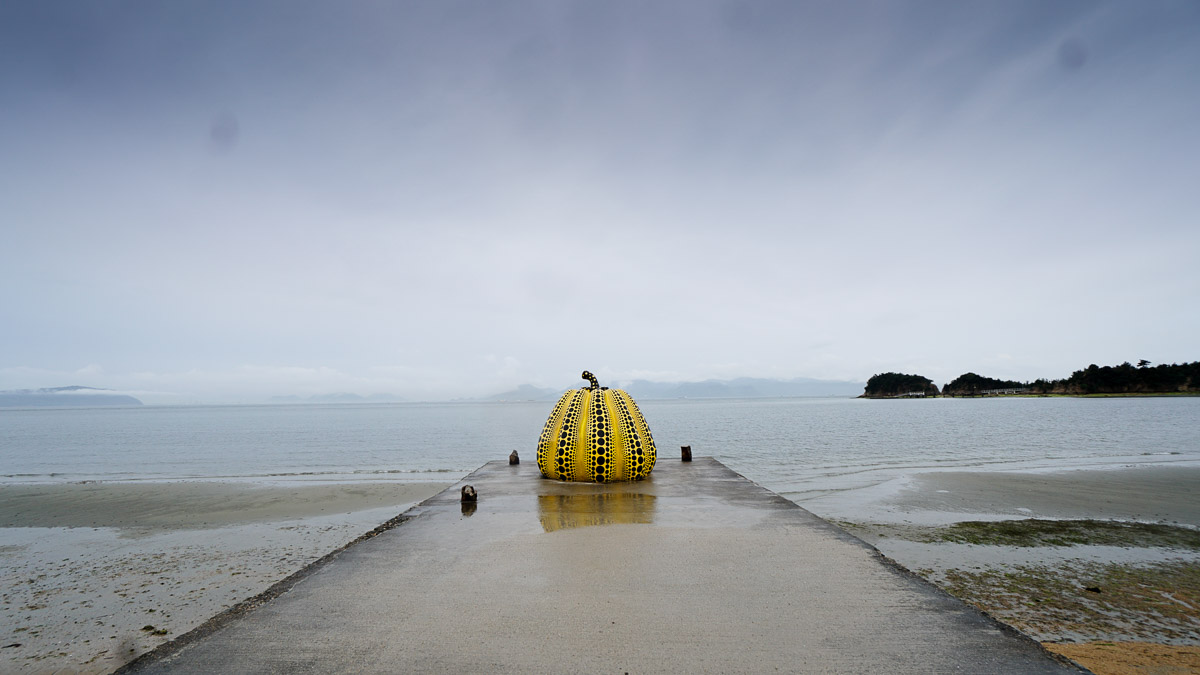
Deposit your luggage at the lockers in Uno Station before hopping on the ferry. Naoshima is famous for its contemporary art displays that are spread throughout the island, like this photogenic piece by the legendary Yayoi Kusama. Spend a relaxing day walking or biking around the island museum.
Day 23: Hiroshima – Okunoshima – Hiroshima
When to use the JR Pass: – Hiroshima Station (Tokaido-Sanyo Shinkasen towards Tokyo) – Mihara Station – Mihara Station (Kure-Line towards Hiroshima) – Tadanoumi Station (Bunny Island!) – Uno Station (Uno Line towards Okayama) – Okayama Station – Okayama Station (Tokaido-Sanyo Shinkansen towards Kagoshimachuo) – Hiroshima Station
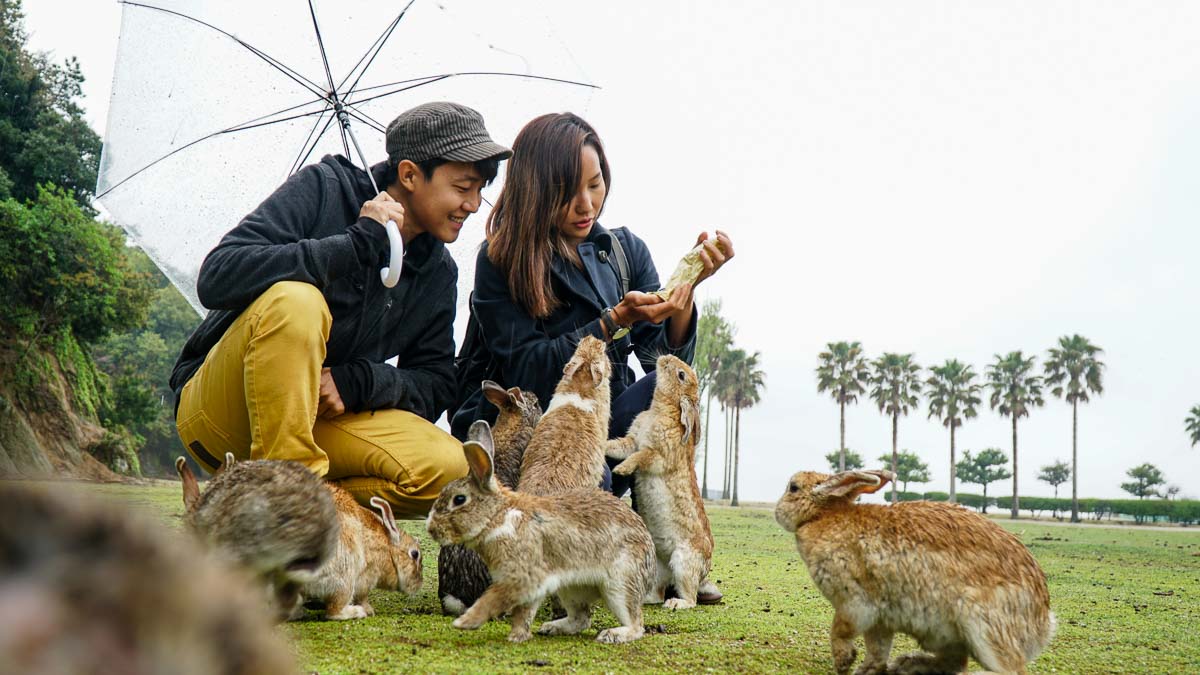
Just an hour away from Hiroshima, a day trip out to bunny island ( okunoshima ) will surely tug at your heartstrings. Our 8-Day Kansai Itinerary contains all the deets for your Hiroshima leg!
Day 24: Hiroshima – Miyajima
When to use the JR Pass: – Hiroshima Station (San-yo Line towards Iwakuni) — Miyajimaguchi Station – JR Miyajima Ferry — Miyajima Island – Miyajimaguchi (San-yo Line towards Itozaki) — Hiroshima Station
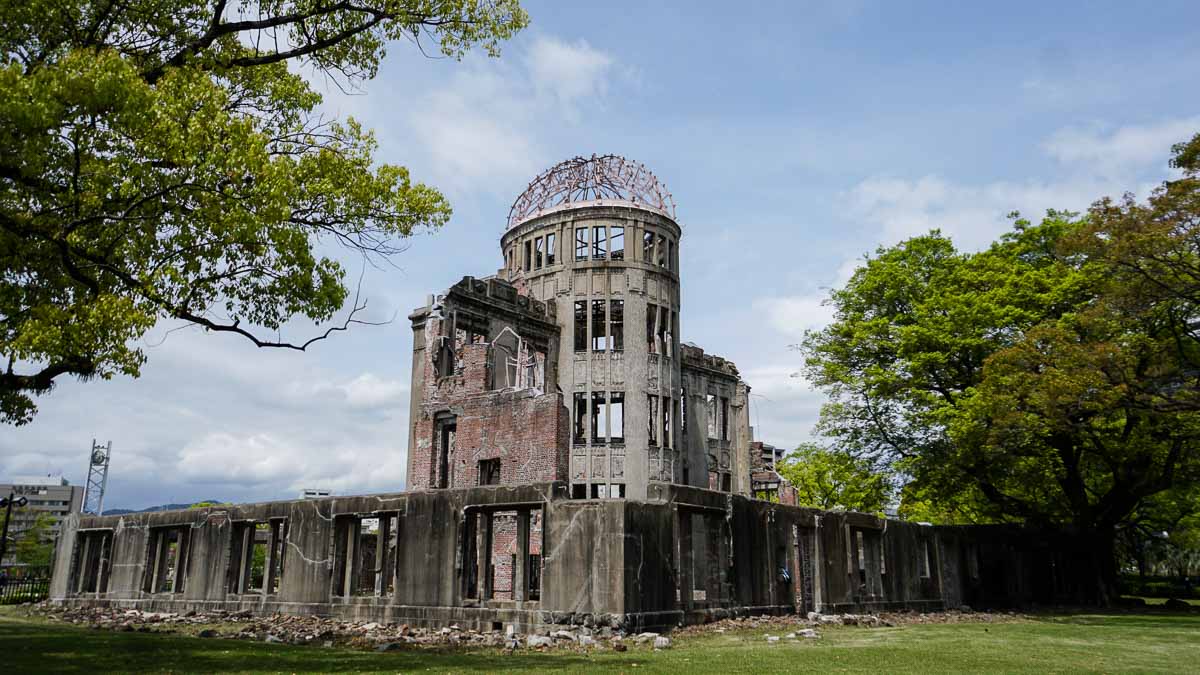
Getting around Hiroshima: Rent an Ekirin bicycle in Hiroshima to explore the city’s sights.
Highlights: Peace Memorial Museum (¥200) — As the first city in the world to be attacked by a nuclear bomb back in 1945, the city’s dark past has been the main draw for visitors from around the world.
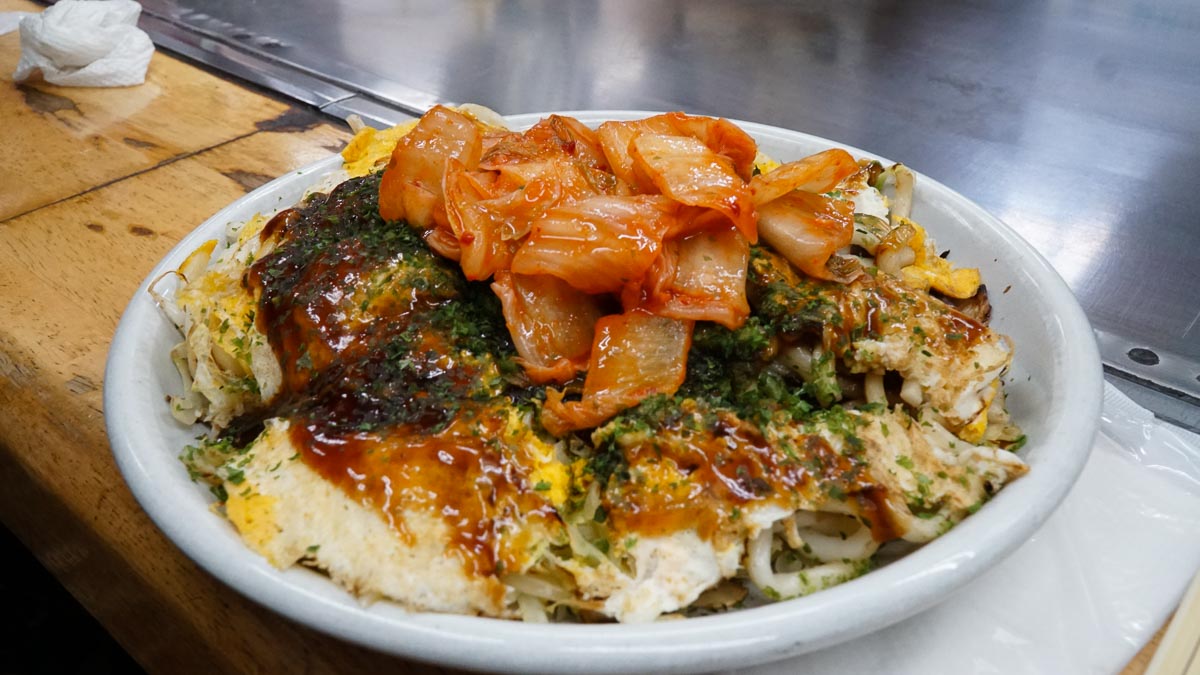
Okonomi-mura (¥810) — Hiroshima is also known to have some of the best okonomiyaki . Does Osaka or Hiroshima do it better? Let us know!
Day 25–30: Kyushu
When to use the JR Pass: – Hiroshima Station (Tokaido-Sanyo Shinkansen towards Hakata) – Kokura Station – Kokura Station (Sonic-Nichirin towards Miyazaki-Airport) – Beppu Station – Beppu Station (Sonic-Nichirin towards Hakata) – Kokura Station – Kokura Station (Kagoshima Line towards Omuta) – Hakata Station
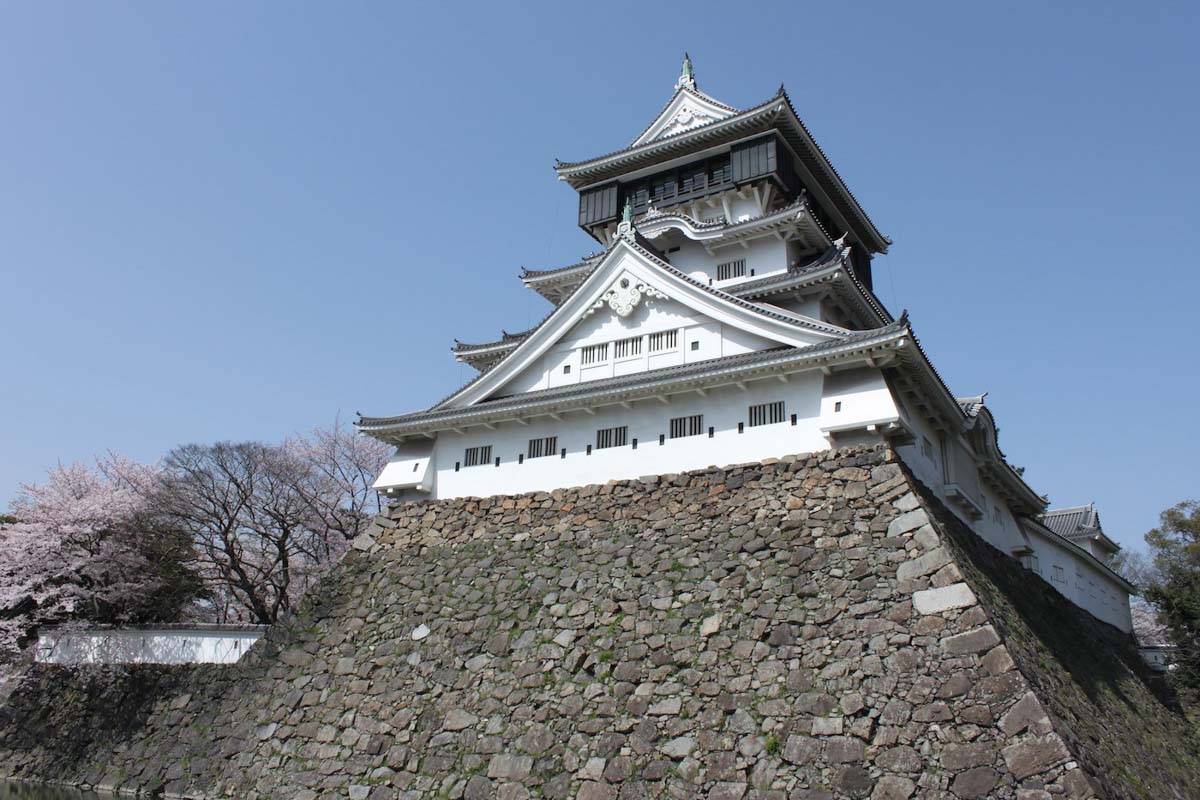
The southernmost of the four principal Japanese islands, Kyushu is widely regarded for its hot springs and sand baths in Beppu, said to promote blood circulation.
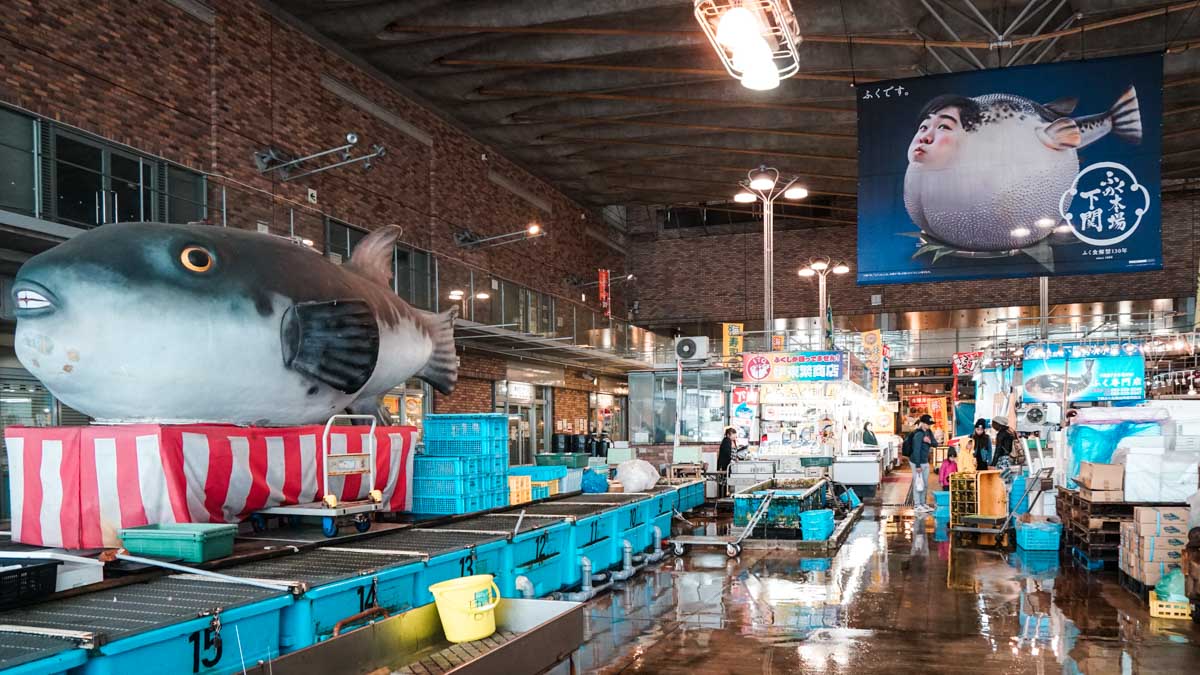
Kokura Highlights:
Shimonoseki — the port city best known for its export of the notoriously poisonous pufferfish delicacy, fugu .
Kokura Castle (¥300) — the last standing castle in Fukuoka (pictured above).
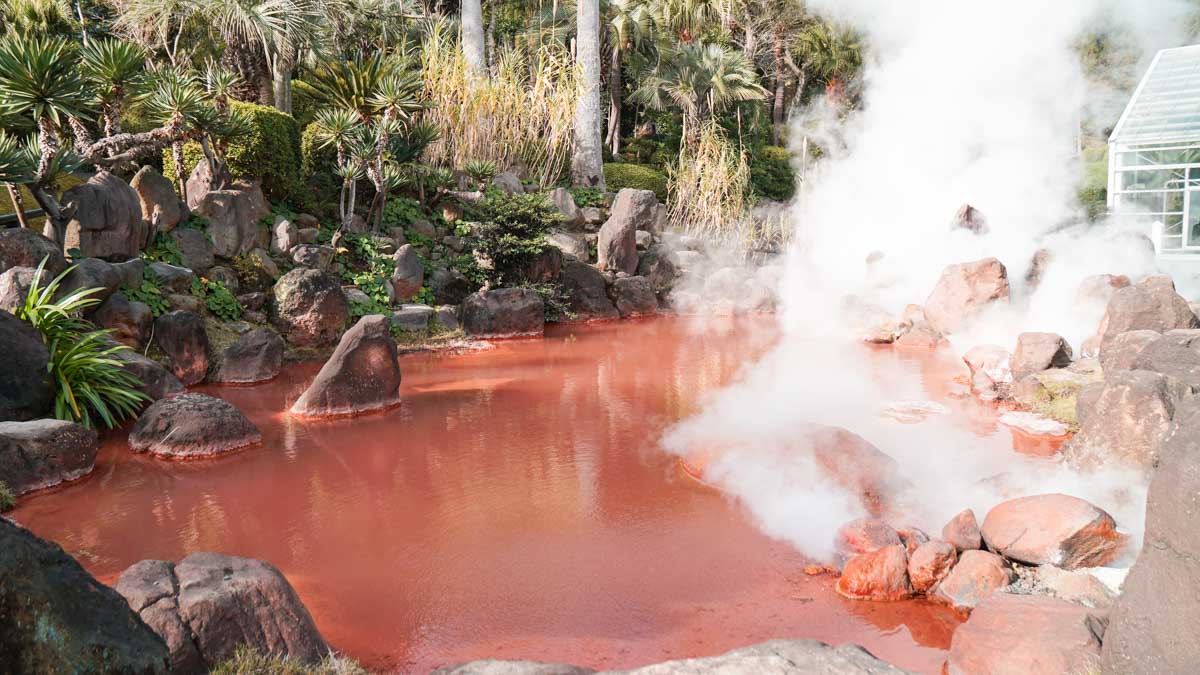
Beppu Highlights:
Hells of Beppu — Made up of natural hot springs found around the Kanawa and Shibaseki districts, the Hells of Beppu (above) is the most famous attraction here.
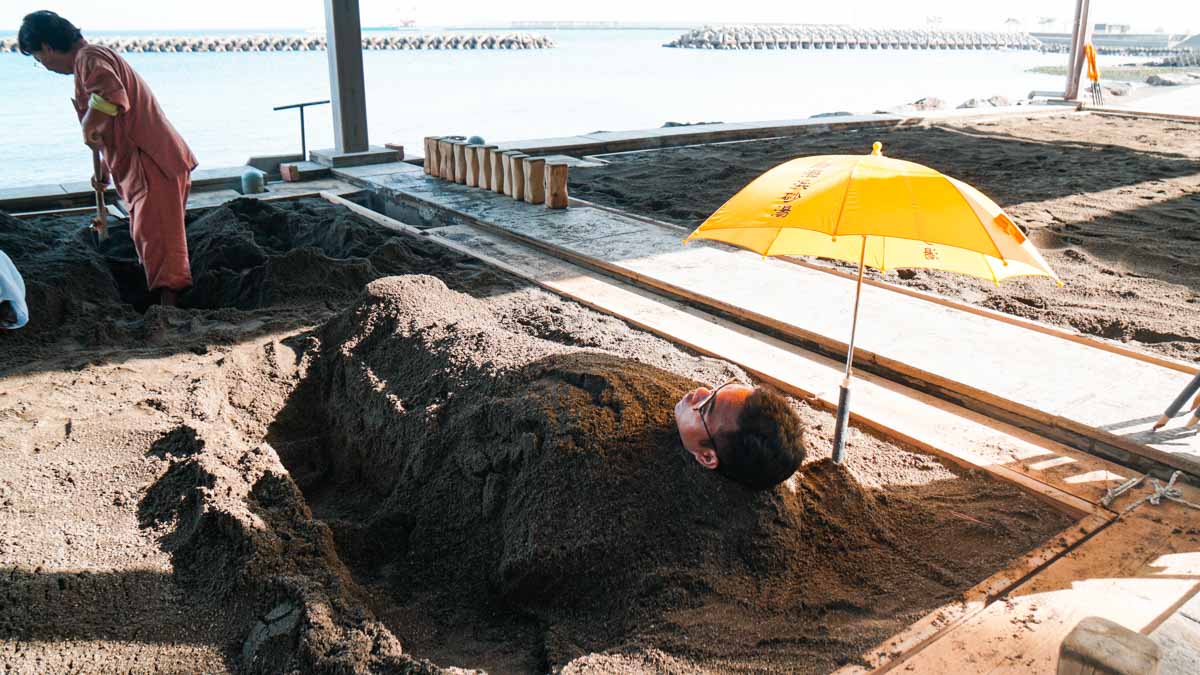
Beppu Sand Baths (¥1,030) — While it looks like your typical weekend hanging out at East Coast Beach, the heat from the volcanic sand is said to relieve body aches and help stimulate blood circulation.
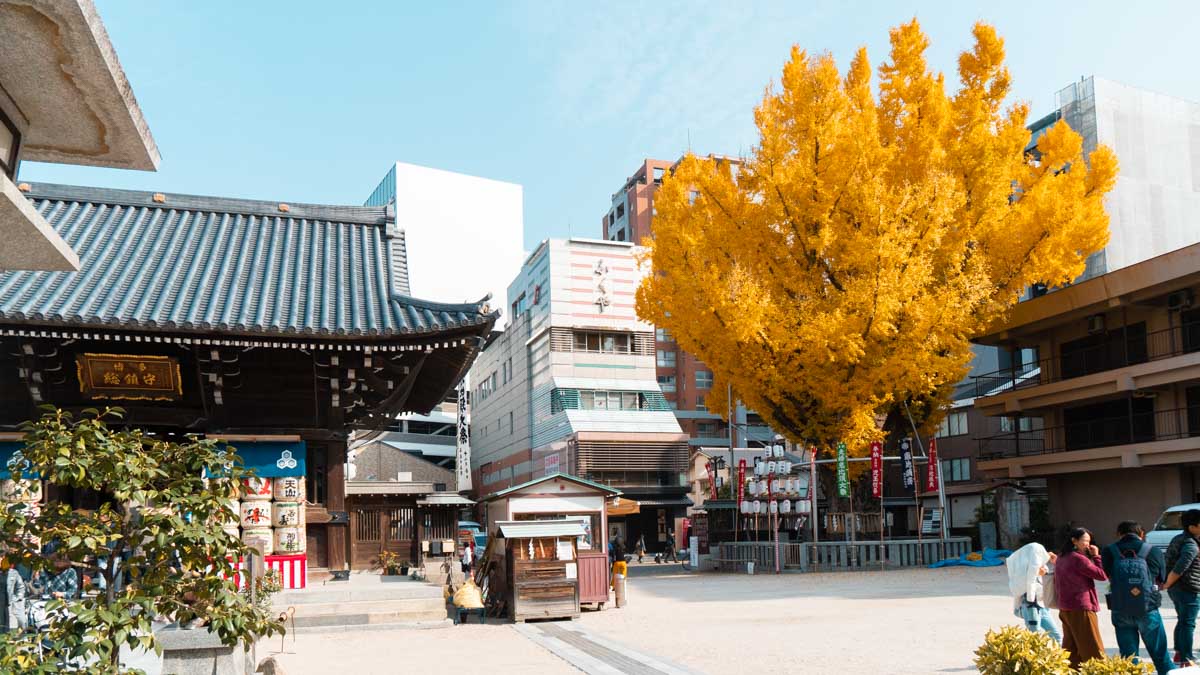
Fukuoka Highlights: Kushida Shrine — the oldest and most important shrine in Fukuoka. In the autumn, an impressive sight awaits: a millennia-old Gingko tree symbolising longevity turns a vibrant yellow!
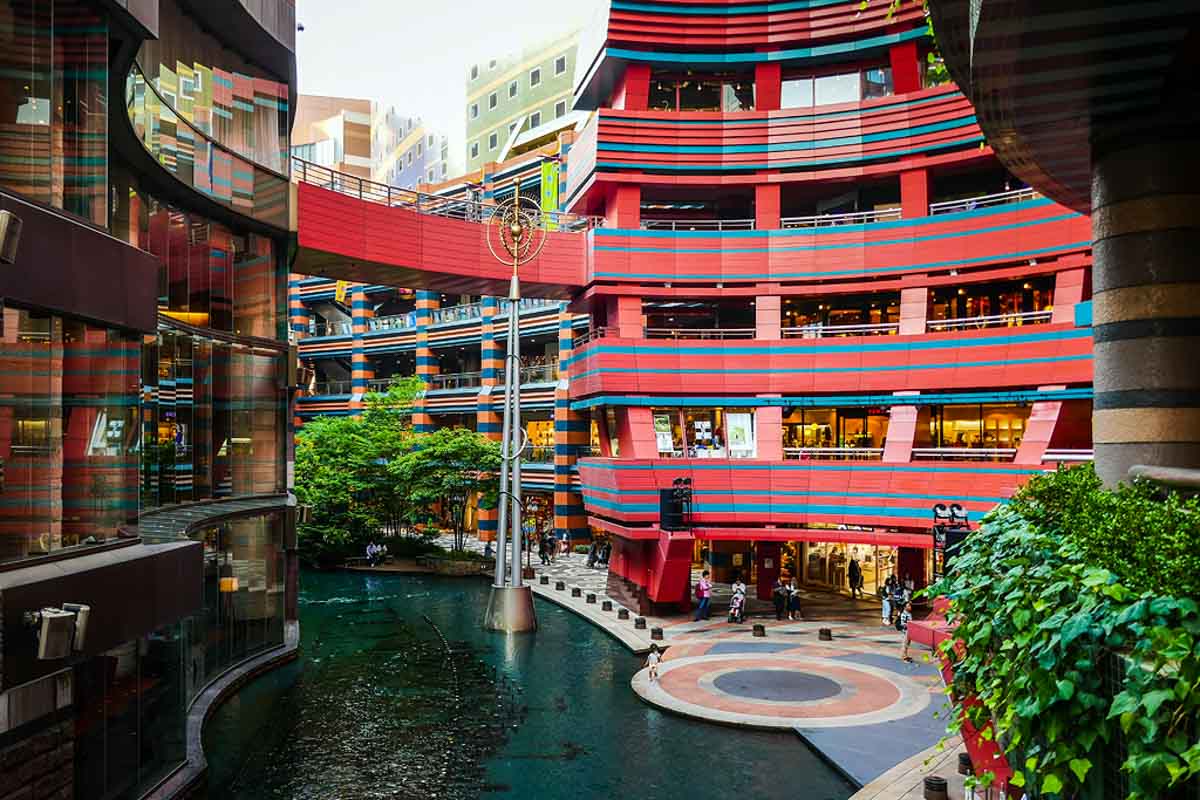
Canal City Hakata — Built around an artificial canal, Canal City has so many shops (over 250 shops and dining spaces) that it has earned the title of being a “city within a city”. It’s truly a one-stop-shop for every tourist’s needs!
Where to Stay for 30 Days in Japan
Sapporo 2 Nights – Yasube (~S$30) / Sappolodge (~S$32) 1 Night – Hakodate Kokusai (~S$33) 1 Night – Hotel Sonia Otaru (~S$34)
Tokyo 4 Nights – Asakusa Smile (from S$19.40) / Grids Tokyo (from S$25.70) 1 Night – Hakone Tent (~S$42.44)
Mount Fuji 1 Night – Kawaguchiko Station Inn (~S$28.30) 1 Night – Fujiichikan Hut (~S$81.30) 3 Nights – K’s House Fuji View (from S$31.53)
Kyoto 4 Nights – Guesthouse YULULU (~S$24.25)
Osaka 3 Nights – J-Hoppers Osaka (~S$27)
Hiroshima 2 Nights – J-Hoppers Hiroshima Hostel (~S$27)
Kitakyushu 2 Nights – Ark Blue Hotel (~S$30)
Fukuoka 4 Nights – The Gate Hostel (~S$24)
Save up to ~S$368 with the JR Pass
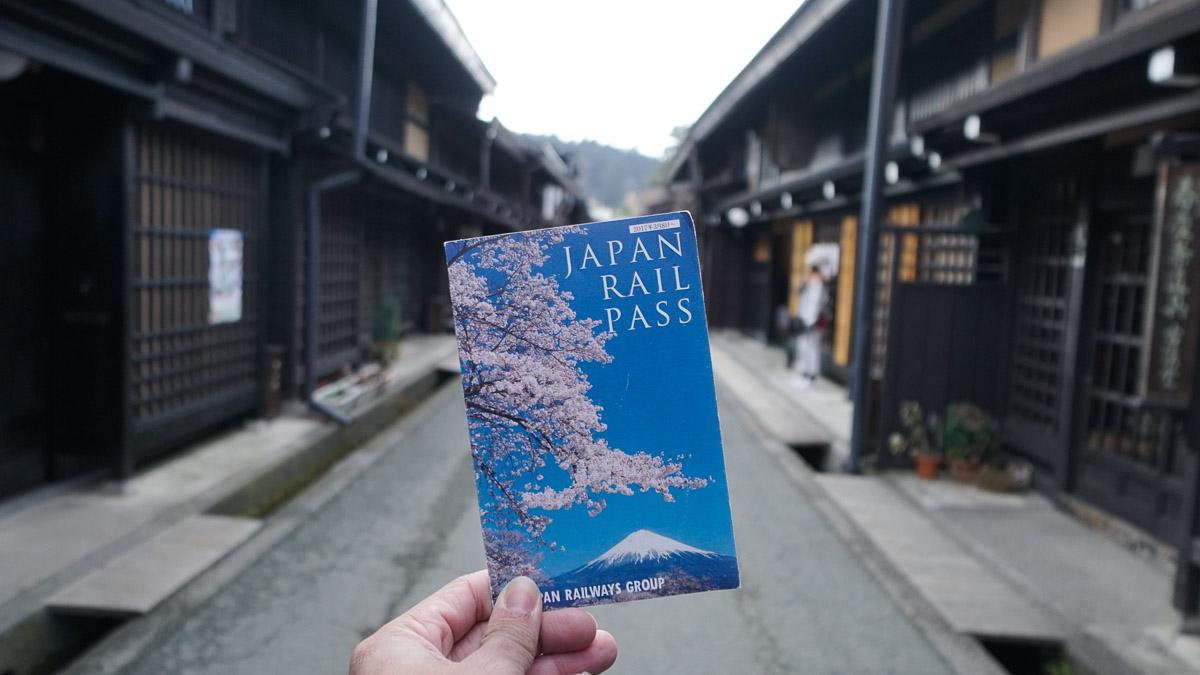
With this itinerary, travelling from Sapporo to Kyushu via individual train rides will easily cost you up to a whopping ¥88,880 (~S$1,087) including reservations. Compared to regional JR passes and single trip tickets, you can reserve seats at no charge with the Whole Japan Rail Pass . This comes in exceptionally handy on long-distance trains (e.g. 7.5 hours from Sapporo to Tokyo), where you’d want to sit with the people you’re travelling with. They also happen to be the most expensive journeys, allowing you to save more with the pass.
With the 21-day JR pass going for S$706 on Klook, your total savings amount to ~S$381 . That’s almost enough to book you a night at the Four Seasons ! Oh, and don’t forget the extra perks like free Ekirin bicycle rentals around Japan. Check out our JR Pass Guide to discover all the benefits with this pass.
Purchase Your JR Pass in Singapore
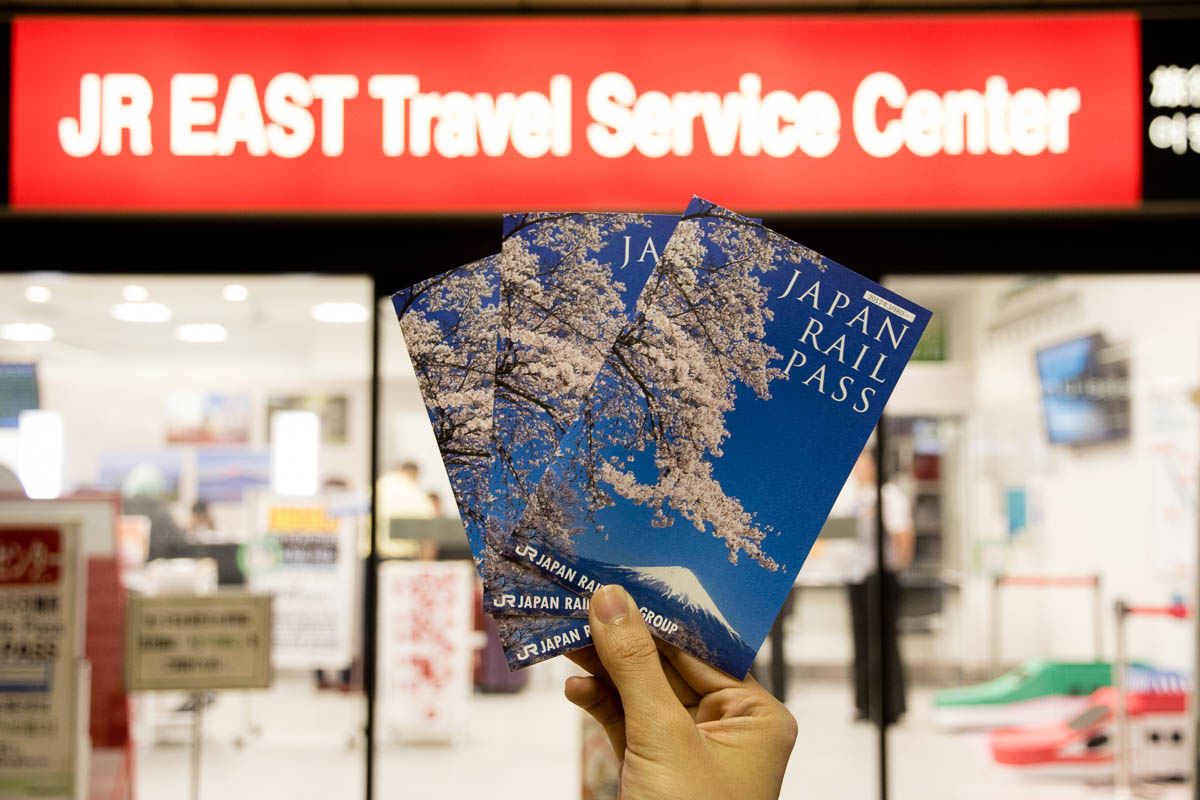
Pre-order your passes online via Klook for cheaper tickets — they’re the cheapest in Singapore and definitely cheaper than getting from Japan. The exchange voucher will be delivered to your doorstep via registered mail within 7 working days.
Once you arrive in Japan, prepare your passport and exchange voucher before heading to the nearest JR Travel Service Centre . There’s usually one at the airport but also major stations like Tokyo and Shin-Osaka station. You’ll be asked when you’d like to activate the pass, so you can collect it first and have it start later in the trip.
PROMO: Receive a S$30 Klook Voucher when you purchase any Whole Japan JR Pass (7, 14 or 21 days) before 31st December 2019
General Budget Tips
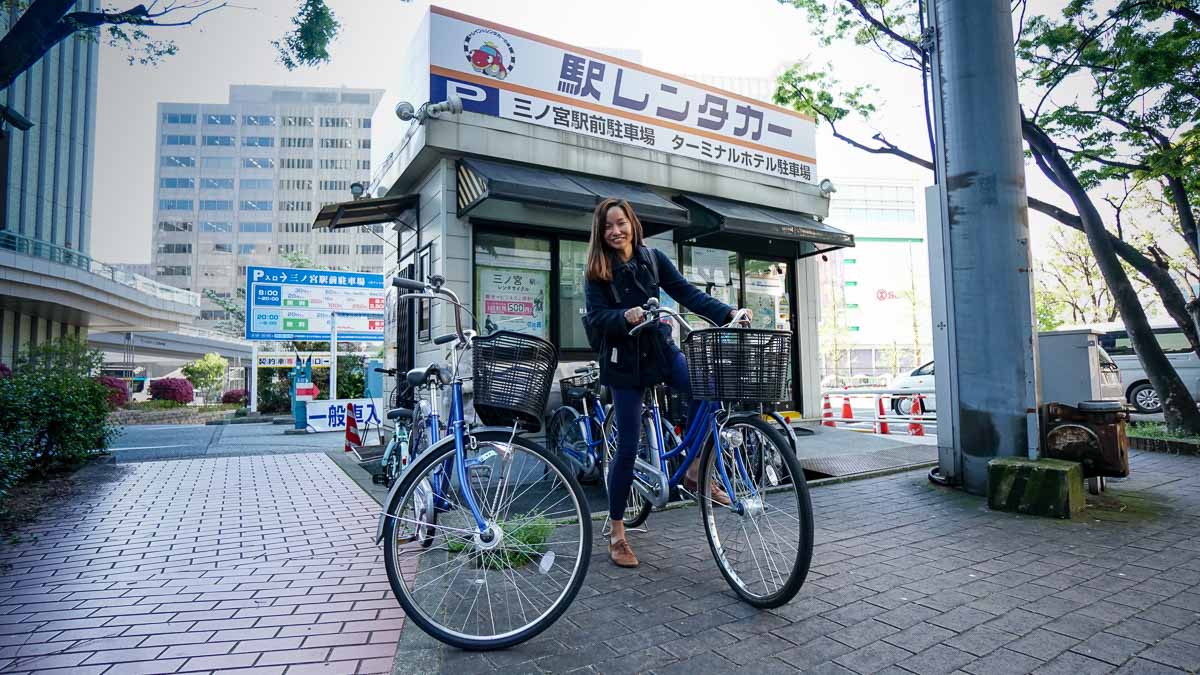
With the exception of the blazing hot weather in Singapore, I’m a pretty huge advocate for walking as a mode of transport. Especially when you’re wandering through a foreign city, it’s the best way to take in the sights and simply be present. This is where storage lockers at train stations come in handy, particularly if you haven’t checked in to your next accommodation.
To get around a little quicker, cycling around the city is pretty common as well. That being said, I wouldn’t spend days getting from Osaka to Tokyo on a bike — they’ve got bullet trains for that. Instead of purchasing tickets for each bullet train, opt for the multi-day nation-wide JR pass (7, 14 or 21 days) .
This pass grants you unlimited rides on almost all JR trains and shinkansen (excluding “Nozomi” and “Mizuho” trains). That can potentially save you a good sum as previously mentioned!
Accommodation
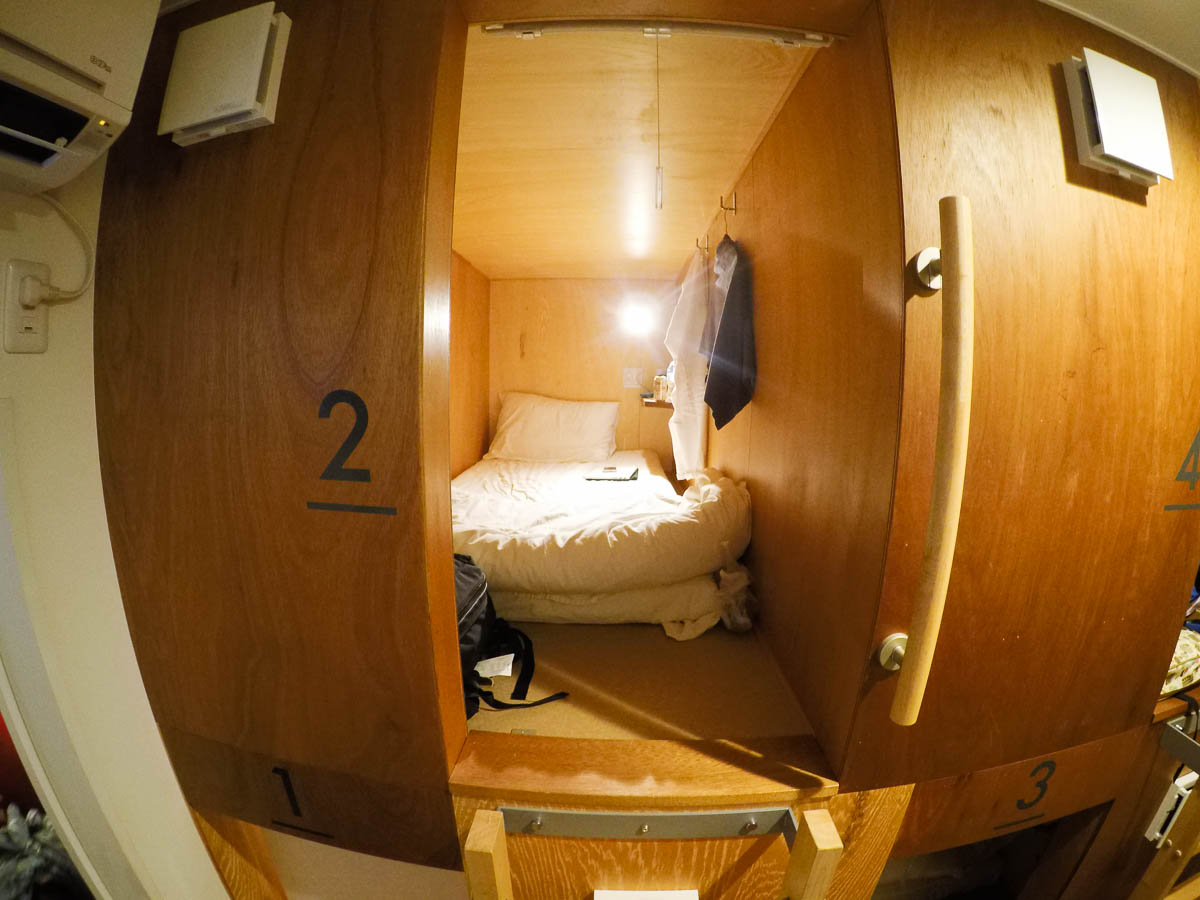
Like every other backpacker, you’re constantly on the move. While it’s a luxury to have a room with a view of Mount Fuji, you don’t actually spend that much time awake in your accommodation. Most of the time, all we need is a place to sleep.
Hostels in Japan aren’t the cheapest around, but they’re definitely the more affordable option averaging S$30/night. Look out for those offering free breakfast! It might not be a fantastic spread, but hey, beggars can’t be choosers. And now you can spend a little extra on a dinner upgrade without bursting your budget (too much)!
Book your travel essentials via Klook for a peace of mind. From SIM Cards/Wifi Devices, to City Passes and Entrance Tickets , it’s cheaper and more convenient to book ahead of time.
What’s your favourite city in Japan? Let us know in the comments!
This post was brought to you by Klook .
Like what you see? Follow us on Facebook , Instagram , and YouTube for more travel updates!
https://www.instagram.com/p/BuOT5TqBtIT/?utm_source=ig_web_button_share_sheet
RELATED ARTICLES MORE FROM AUTHOR
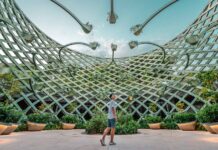
31 New Deals and Attractions in Singapore this April 2024
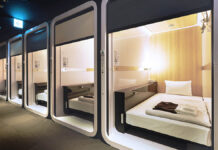
Top 11 Stunning Yet Budget-Friendly Tokyo Capsule Hotels (from ~S$40/night)
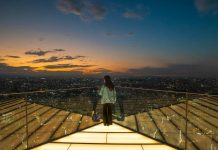
Tokyo Vs Osaka: Why Are These Two Popular Japanese Cities so Different — Cultures Explained
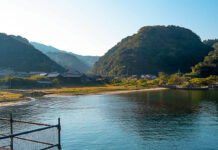
Hiroshima and San’in Guide — Going Beyond Tokyo/Osaka to Find Japan’s Best Hidden Gems

Tokyo Disneyland and DisneySea Guide (2024) — Maximise your Tokyo Disney Day with these 12 Tips and Tricks
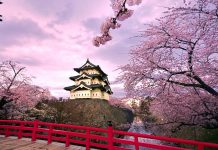
Ultimate 2024 Cherry Blossom Japan Guide — Everything You Need to Know
Leave a reply cancel reply.
Save my name, email, and website in this browser for the next time I comment.

11 Things to do in Clark, Philippines — A Quiet Adventure...

20 Things to Eat-See-Do in Sabah’s Capital Besides Climbing Mount Kinabalu

Experience Macao Singapore Roadshow: Get Exclusive Deals, Experience the Macau Grand...

Ultimate 6-Day Adelaide Itinerary — The Best of South Australia’s Underrated...

- Terms Of Use
- Privacy Policy
For a limited time, book your 2020, 2021 & 2022 group tour packages with no deposit required!!!

- Custom Groups Custom Groups Overview Student Groups MICE Special Interest Groups
- About Japan About Japan Destinations Attractions Must See & Do
- About Us About Us Contact us Testimonials Terms & Conditions Travel Agent Services Disclaimer Site Map
- News Press Releases Blog Media
- Your Trip Get Started How to make a reservation Travel Tip FAQs Inquiries
Last Name *
21 Day Japan Tours View Tours
21 day japan tours.
Begin your tour on the north island of Hokkaido. The island is a dream to behold in any season with cherry blossoms in spring and bright fall colors, but its heavy snowfall in winter makes Hokkaido Japan’s preferred winter playground, with exciting snow festivals every February. Summers also delight travelers with fields full of flowers including lavenders and sunflowers. Travel down from there through the gorgeous Tohoku region, which features unforgettable scenes including Matsushima Bay and Hiraizumi as well as historical gems including Sakata, Yamadera, and Ouchijuku. Every traveler to Japan should experience the delights of Tokyo, the capital of Japan. Tokyo offers both ancient and futuristic sights to fascinate any first-time visitor, with plenty of museums and other experiences that immerse travelers in an old city of samurai and as a technological city of the future. See the natural beauties of Hakone and the surrounding Mount Fuji area, where you can take a cruise on Lake Ashi in a pirate ship or traverse a mysterious volcanic caldera billowing smoke. Travel from there to Takayama, a charming town in the mountains of Gifu Prefecture with an Old Town heritage district that carefully preserves its classical, Edo-era atmosphere. Further up in the mountains is the UNESCO Heritage Village of Shirakawago, celebrated for its old-fashioned “gassho-zukuri” architecture. Farmhouses with broad thatched roofs “folded like hands in prayer” sit in an idyllic mountain valley surrounded by rice fields. Then continue on to the city of Kanazawa, known as the “Marsh of Gold” for its local specialty product – gold leaf. The city also has one of Japan’s Three Great Gardens – Kenrokuen Garden, which is a delight to behold in any season. Then discover over a thousand years of Japanese culture and history in the ancient city of Kyoto, known for incomparably beautiful temples and shrines, such as Fushimi Inari with its hundreds of red gates, Kiyomizu Temple and its dramatic veranda, and the enchanting Golden Pavilion. Nara is nearby, with a similarly rich atmosphere of classical charm, accented by the hundreds of adorable Sika deer wandering around Nara Park. After, go to Osaka, where visitors are warmly welcomed by the locals with their down-to- earth charm and sarcastic wit, as well as a street food culture that is both eccentric and mouthwatering. Finally, make a visit to Hiroshima, a City of Peace that beckons travelers to stroll their austere and impactful Peace Memorial Park and ponder the dream of a world without war. Just off the coast of the city is Miyajima Island, where travelers behold one of Japan’s Three Views as they gaze upon Itsukushima Shrine and its large torii gate floating over the water.
Spring (Mar - May) (119)
Summer (Jun - Aug) (48)
Autumn (Sep - Nov) (95)
Winter (Dec - Feb) (21)
May 2024 (1)
July 2024 (1)
May 2025 (1)
July 2025 (1)
May 2026 (1)
July 2026 (1)
Deluxe (222)
Deluxe-Plus (21)
Ultra-Deluxe (9)
Classic Tour (31)
Cherry Blossoms (73)
Autumn Leaves (41)
Festival (69)
Special Interest (94)
less than 9 nights (100)
9-14 nights (158)
15 nights + (25)
Hokkaido (49)
Tohoku (26)
Kanto (238)
Chubu (237)
Kansai (238)
Chugoku (110)
Shikoku (96)
Kyushu (32)
Okinawa (0)
Kyoto Aoi Festival (9)
Kawazu Cherry Blossoms (4)
Lavenders (11)
Snow Monkeys (52)
Shirakawago (85)
Gion Summer Festival (4)
Awa Odori Dance Festival (4)
Sapporo Snow Festival (5)
Otaru Snow Light Path (1)
Ice Breaker Cruise (5)
Wakasagi Smelt Fishing (5)
Shiretoko Nature Cruise (8)
Blue Pond (14)
Arashiyama Bamboo Forest (197)
Miho Museum (109)
Ise Grand Shrine (4)
Kumano (6)
Koyasan (20)
Himeji Castle (98)
Kurashiki Canal Area (99)
Miyajima Island (106)
Shimanami Kaido (88)
Takeda Castle (2)
Motonosumi-Inari Shrine (2)
Adachi Museum of Art (6)
Naoshima Island (12)
Tottori Sand Dunes (2)
Kyoto Cuisine with Maiko (35)
Shikoku Pilgrimage Route (4)
Takachiho (28)
Baby Blue Eyes Flowers (7)
Wisteria (11)
Takayama Festivals (16)
Shibazakura Festivals (10)
Tohoku 3 Great Summer Festivals (3)
Green Tea Ceremony with Maiko (163)
Sushi-Making (196)
Tateyama Kurobe Alpine Route (6)
Japan Deluxe Tours
Visit the must see sites of japan with group sizes ranging from 12 to 35 people..
These tours are great for first time visitors to Japan looking for comfortable accommodation with all entrance fees and most meals included. Our Japan Deluxe Tours are accomodated with professional tour guides, fluent in both Japanese and English, to ensure an educational and valuable visit. Air-conditoned, private coaches are also included, so you can enjoy a comfortable and hassle-free time in Japan. Our tours range from 7 to 21 days, to various regions of Japan.
Deluxe-Plus Small Group Tours
Experience the culture of japan at a slower pace with groups of 10 to 18 people. (smaller group departure available).
These tours combine enrichment, enjoyment, and education with time to truly absorb and appreciate your surroundings. Our Deluxe-Plus small group tours are created to cater to those who are interested in having a deeper understanding of Japan's culture. You will have the opportunity to participate in culturally rich activities and visit destinations only locals may know. Experience luxurious hotels and travel at a leisurely pace when you book a Deluxe-Plus small group tour.
Budget Group Tours
Our budget tours are designed for our guests who are on a limited budget..
Explore the must-see sights and enjoy the hassle-free trip to Japan at an affordable price. Our most cost-effective way to see the highlights of Japan while staying in budget-friendly accommodations. If you would like to have a quick stop to sample the must-see sights of Japan, or plan to explore Japan on your own but would like to take a short trip to learn about Japan before your self-guided journeys. These are the tours for you.
Active Small Group Tours
Travel japan more flexibly in groups of 6 to 13 people using public transportation..
Explore Japan off the beaten path via Japanese public transportation, walking, hiking, cycling and more. Take more time to enjoy local experiences and picturesque landscape. Our Active Small Group Tours combine the best of cultural destinations with off-the-beaten-path via Japanese public transportation, Discover the country of Japan the way the locals do and see Japan from a different angle. A focus on getting away from the crowds and into the real Japan, see the diversity of Japan’s countryside unfold before your eyes.

Group Tour | Deluxe Book Now & Save $100
Group Tour | Deluxe Book Now & Save $100
21 Days 20 Nights | from US $8798.00
Furano / Biei / Otaru / Sapporo / Shiraoi / Noboribetsu / Lake Toya / Hakodate / Seikan Tunnel / Aomori / Akita / Kakunodate / Hiraizumi / Sendai / Matsushima / Urabandai / Aizu Wakamatsu / Nikko / Tokyo / Mt Fuji / Hakone / Koka / Kyoto / Nara / Osaka / Tokushima / Takamatsu / Oboke Gorge / Shimanami Kaido / Hiroshima / Kurashiki / Himeji / Kobe
This tour features japan summer highlights including the summer flowers, festivals & fireworks..

Shiraoi / Noboribetsu / Lake Toya / Hakodate / Matsumae / Mori / Kuromatsunai / Niseko / Otaru / Asahikawa / Biei / Furano / Sapporo / Tokyo / Mt Fuji / Matsumoto / Yudanaka / Tateyama Kurobe Alpine Route / Takayama / Shirakawa-go / Kanazawa / Kyoto / Nara / Osaka / Himeji / Kurashiki / Hiroshima / Shimanami Kaido / Obokekyo Gorge / Kotohira / Takamatsu / Kobe
This tour is designed to give you an in-depth understanding of japan's most important and famous locations as well as its hidden gems and rural locations..
Spring Tours (Mar - May)
Summer Tours (Jun - Aug)
Autumn Tours (Sep - Nov)
Winter Tours (Dec - Feb)
Travel Styles
Deluxe-Plus
Ultra-Deluxe
Walking Tour
Cherry Blossom Tours
Autumn Leaves Tours
Festival Tours
Special Interest Tours
Seasonal Attractions
Cherry Blossoms
Takayama Spring Festival
Kyoto Aoi Festival
Shibazakura Festivals
Baby Blue Eyes Flowers
Lavenders in Hokkaido
Gion Summer Festival
Tohoku 3 Great Summer Festivals
Awa Odori Dance Festival
Autumn Leaves
Takayama Autumn Festival
Snow Monkeys
Sapporo Snow Festival
Ice Breaker Cruise
Wakasagi Smelt Fishing
Kawazu Cherry Blossom Festival
Things Not to Miss
Shirakawago
Miho Museum
Naoshima Island
Himeji Castle
Shiretoko Nature Cruise
Sushi-Making Experience
Kyoto Cuisine with Maiko
Green Tea Ceremony with Maiko
Ise Grand Shrine
Most Beautiful Places in Japan
Otaru Snow Light Path
Tottori Sand Dunes
Arashiyama Bamboo Forest
Miyajima Island
Motonosumi-Inari Shrine
Adachi Museum of Art
Shimanami Kaido
Takeda Castle Ruin
Kurashiki Canal Area
Takachiho Gorge
20 Best Day Trips from Tokyo You Don't Want to Miss

Tokyo, Japan's bustling capital, is a city that never sleeps. It's a metropolis filled with towering skyscrapers, neon lights, and a vibrant culture that seamlessly blends the traditional with the modern. However, even in the midst of its fast-paced urban life, Tokyo offers a gateway to some of the most serene and beautiful destinations in Japan .
Day trips from Tokyo have become increasingly popular among both locals and tourists, offering a chance to escape the city's hustle and bustle and explore the diverse landscapes, historical landmarks, and rich cultural heritage that lie just a short distance away.
From the iconic slopes of Mt. Fuji to the serene temples of Nikko , these excursions showcase the diverse beauty of Japan's landscape and the depth of its cultural heritage. Whether you are an adventure-seeker eager to hike Japan's highest peak , a history enthusiast intrigued by ancient architecture, or a nature lover drawn to the country's breathtaking floral parks, these day trips promise enriching experiences you won't want to miss.
Historical and Cultural Destinations
Nikko , a quick day trip from Tokyo, is a destination packed with historical treasures and scenic beauty. Start your visit at the UNESCO World Heritage Site, Nikko Toshogu Shrine, an architectural marvel adorned with intricate carvings and gold leaf embellishments. The shrine is dedicated to Tokugawa Ieyasu, the founder of the Tokugawa Shogunate that ruled Japan for over 250 years.

Don't miss the chance to explore the Nikko National Park , where nature and spirituality converge. The park features stunning landscapes, including the Kegon Falls, one of Japan's highest waterfalls , and Lake Chuzenji, a serene body of water formed by a volcanic eruption. Nikko's natural beauty perfectly complements its historic sites, making it a must-visit destination for any Tokyo day trip.
Distance from Tokyo : Approximately 125 km
How to Get There : Take the JR Tohoku Shinkansen (about 50 minutes) from Tokyo Station to Utsunomiya Station, then switch to the JR Nikko Line (about 40 minutes) to Nikko Station.
Key Highlights : Explore the Shinkyo Bridge and the Rinnoji Temple along with the famous Toshogu Shrine.
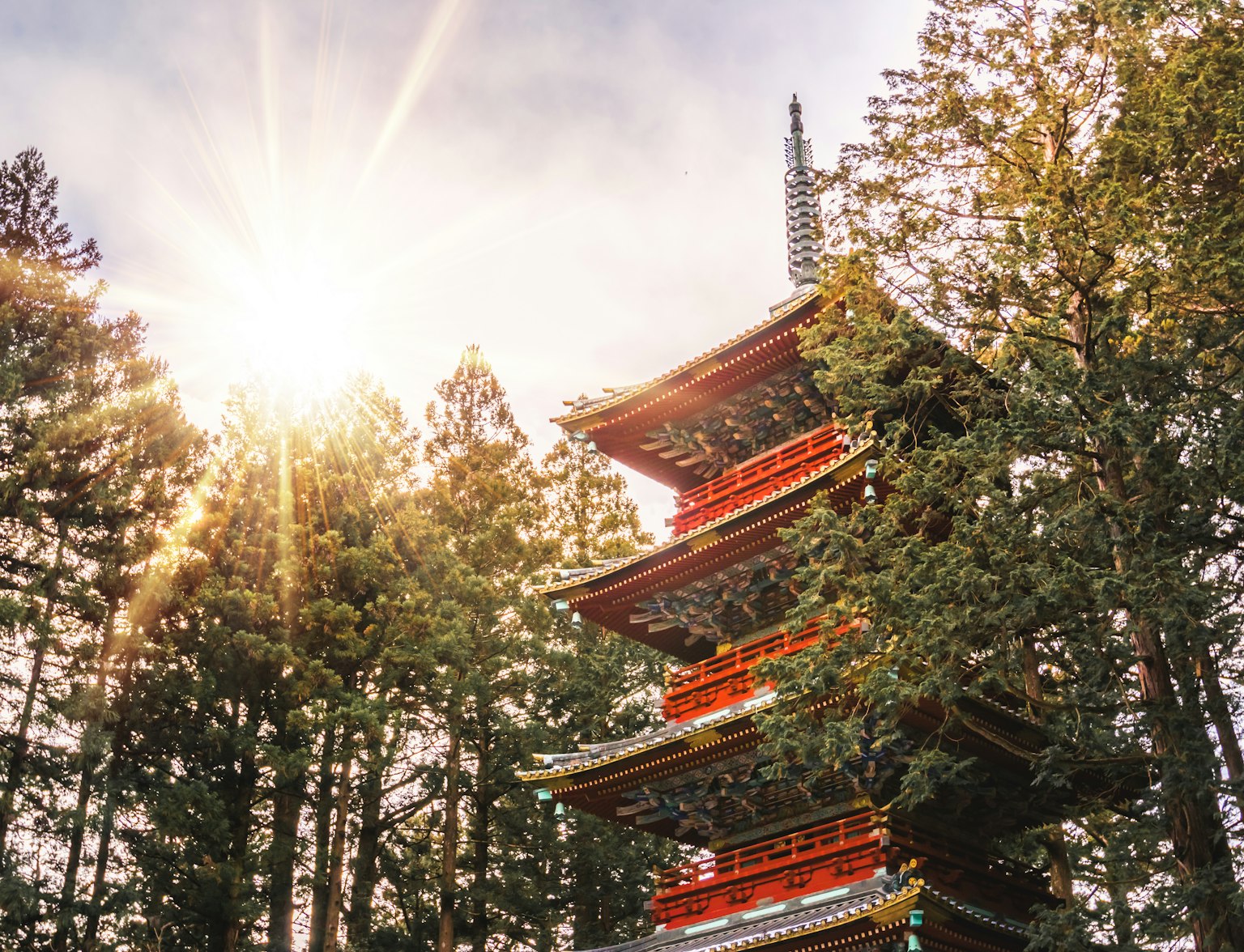
Embark on a morning stroll through the historic Nikko Toshogu Shrine.
2. Kamakura
Kamakura , often referred to as the "Kyoto of Eastern Japan," is another popular day trip from Tokyo. The city's most iconic landmark is the Great Buddha (Daibutsu), a bronze statue standing over 13 meters tall. It's one of the largest Buddha statues in Japan, nestled in the Kotoku-in Temple.
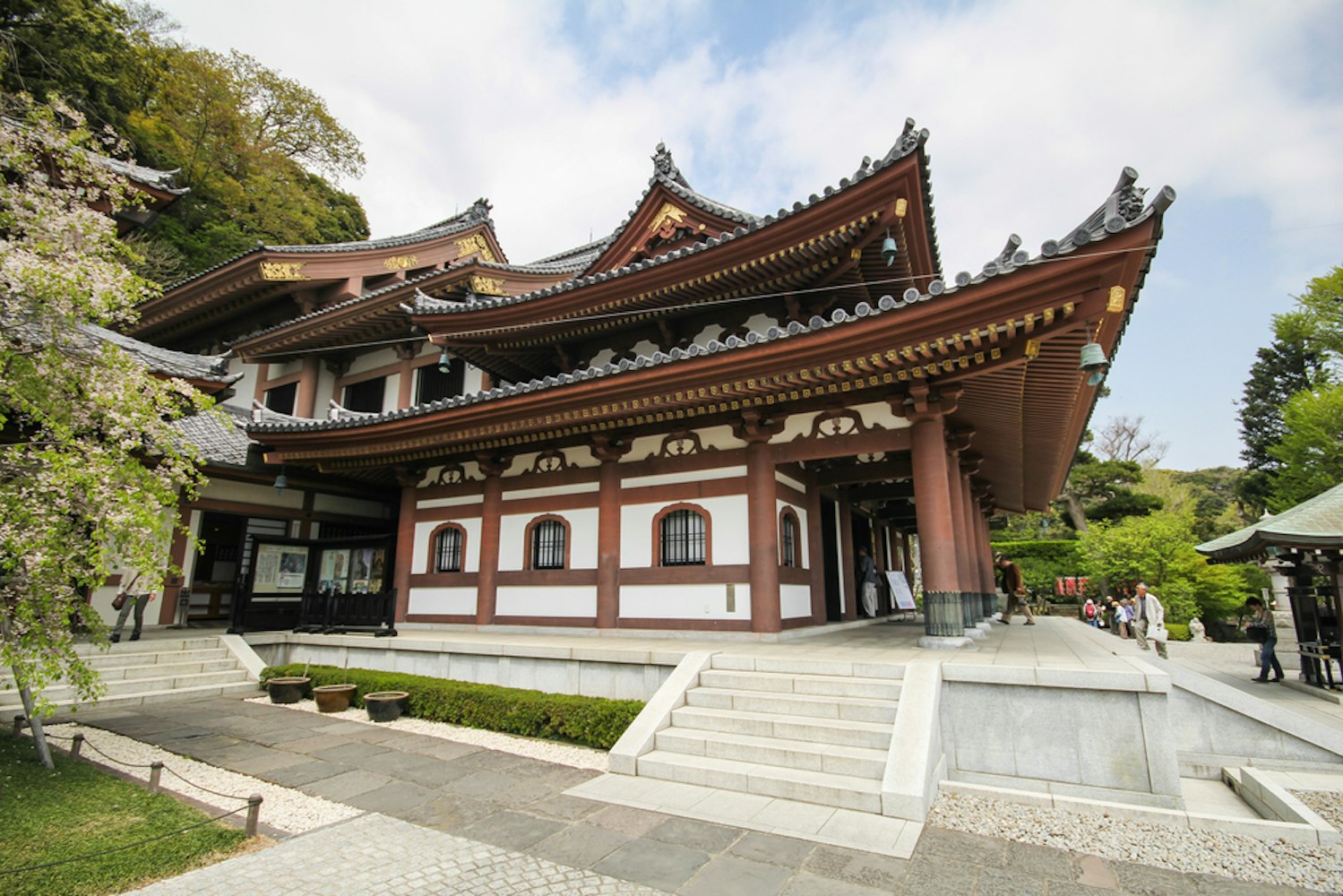
However, Kamakura is not just about the Great Buddha. The city is home to a multitude of temples and shrines, such as the Hase-dera Temple and the Tsurugaoka Hachimangu Shrine. The Hase-dera Temple offers stunning views of the town and the sea, while the Tsurugaoka Hachimangu Shrine is the spiritual heart of Kamakura, rich in history and culture. Stroll down Komachi Street for a vibrant shopping experience, where you can sample local cuisine and buy traditional souvenirs .
Distance from Tokyo : About 50 km
How to Get There : Take the direct JR Yokosuka Line from Tokyo Station to Kamakura Station (about 1 hour).
Key Highlights : Visit the Hasedera Temple and the Zeniarai Benzaiten Shrine, apart from the iconic Great Buddha.
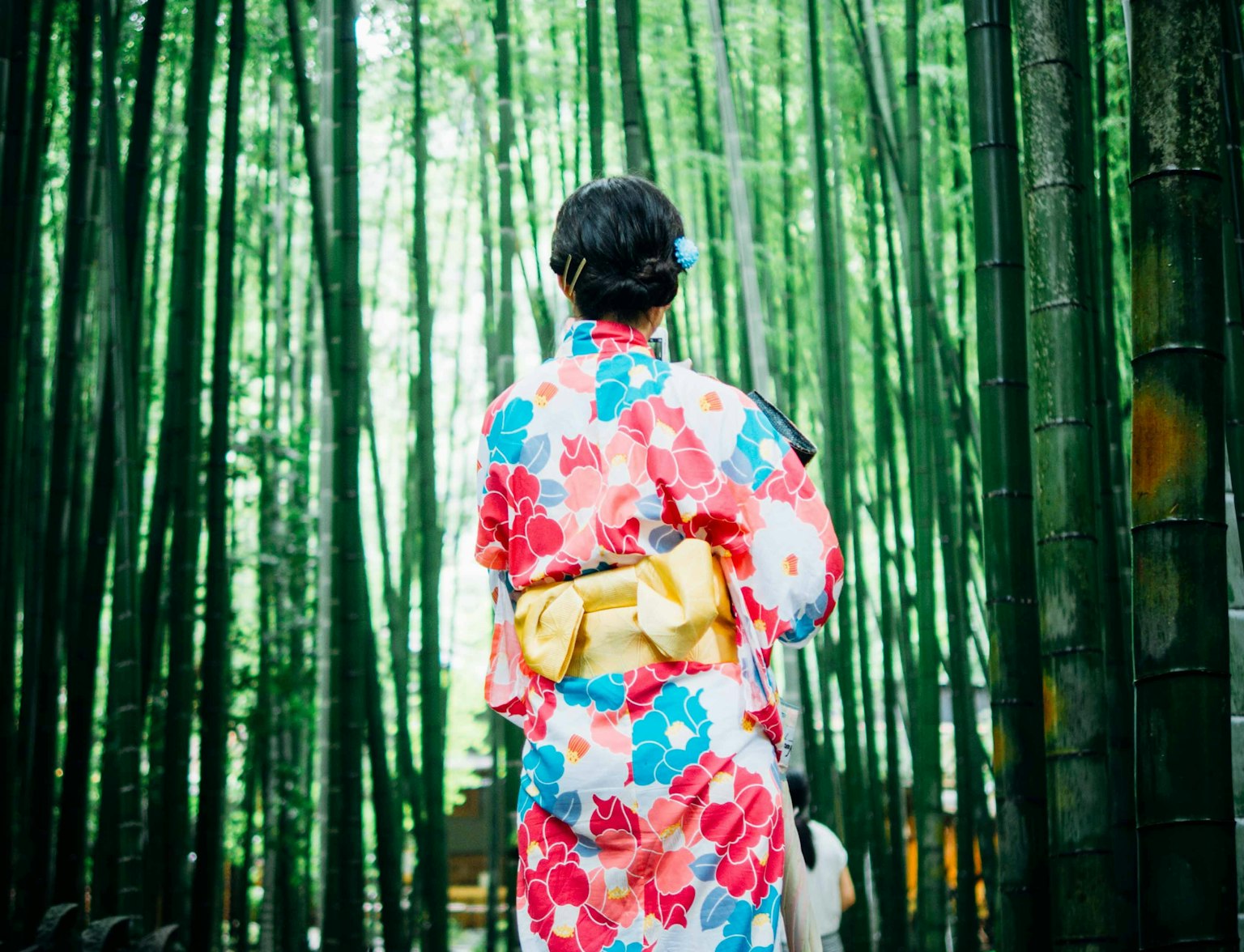
Dive into the heart of historic Kamakura with this rickshaw tour.
3. Yokohama
Just a short train ride from Tokyo, Yokohama is a bustling city with a unique blend of Japanese and foreign cultures. Start your day trip at the Yokohama Landmark Tower's Sky Garden, offering panoramic views of the city.
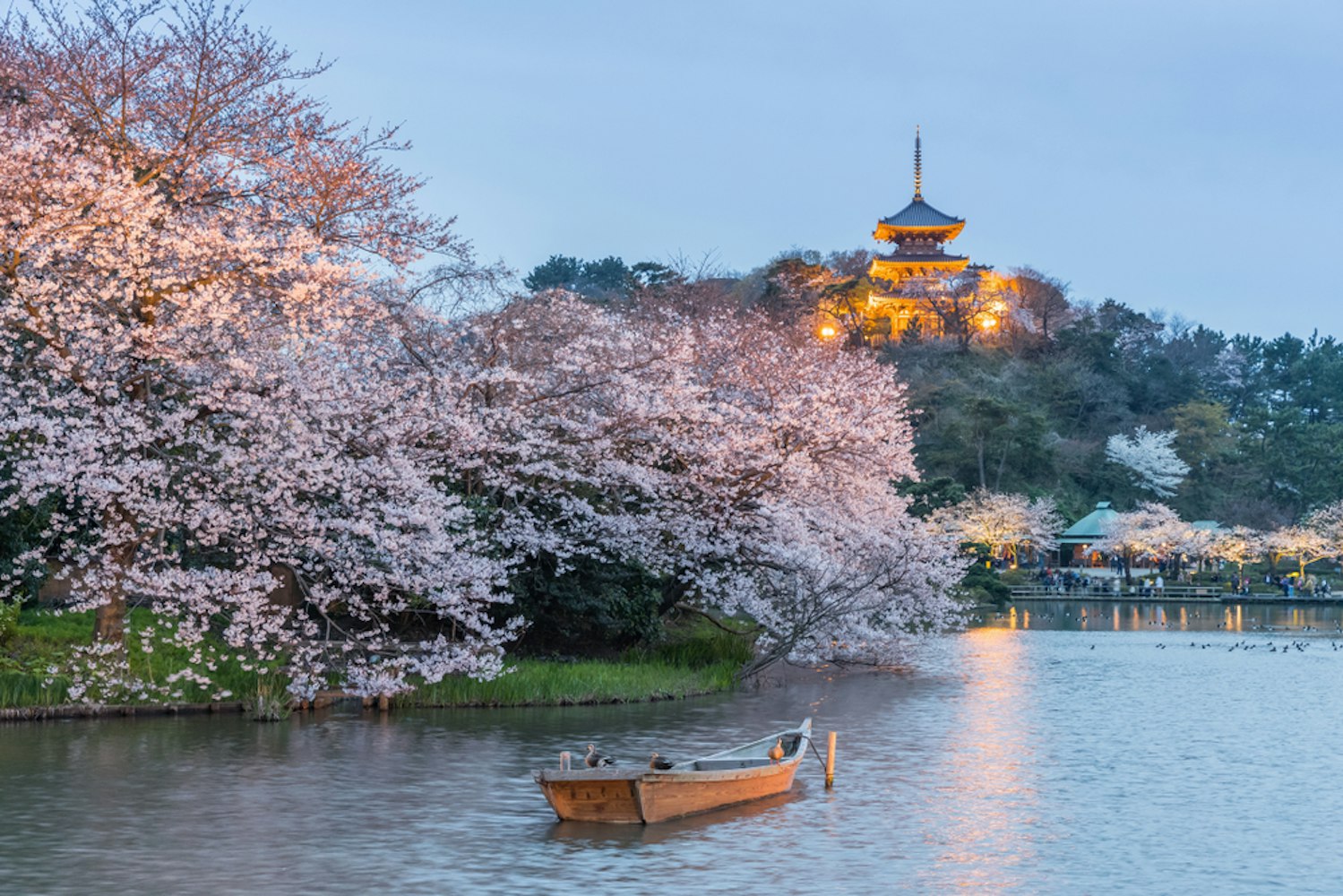
For history enthusiasts, the Yokohama Archives of History provides insights into the city's past, while art lovers can enjoy a visit to the Yokohama Museum of Art . Don't forget to explore Yokohama's Chinatown , where you can savor an array of Chinese delicacies. Round off your day with a leisurely stroll along the harbor at Yamashita Park, soaking in the captivating waterfront views.
Distance from Tokyo : Roughly 30 km
How to Get There : Multiple train options including the JR Tokaido Line (about 30 minutes) from Tokyo Station to Yokohama Station.
Key Highlights : Explore the Minato Mirai district and the Sankeien Garden in addition to Chinatown.
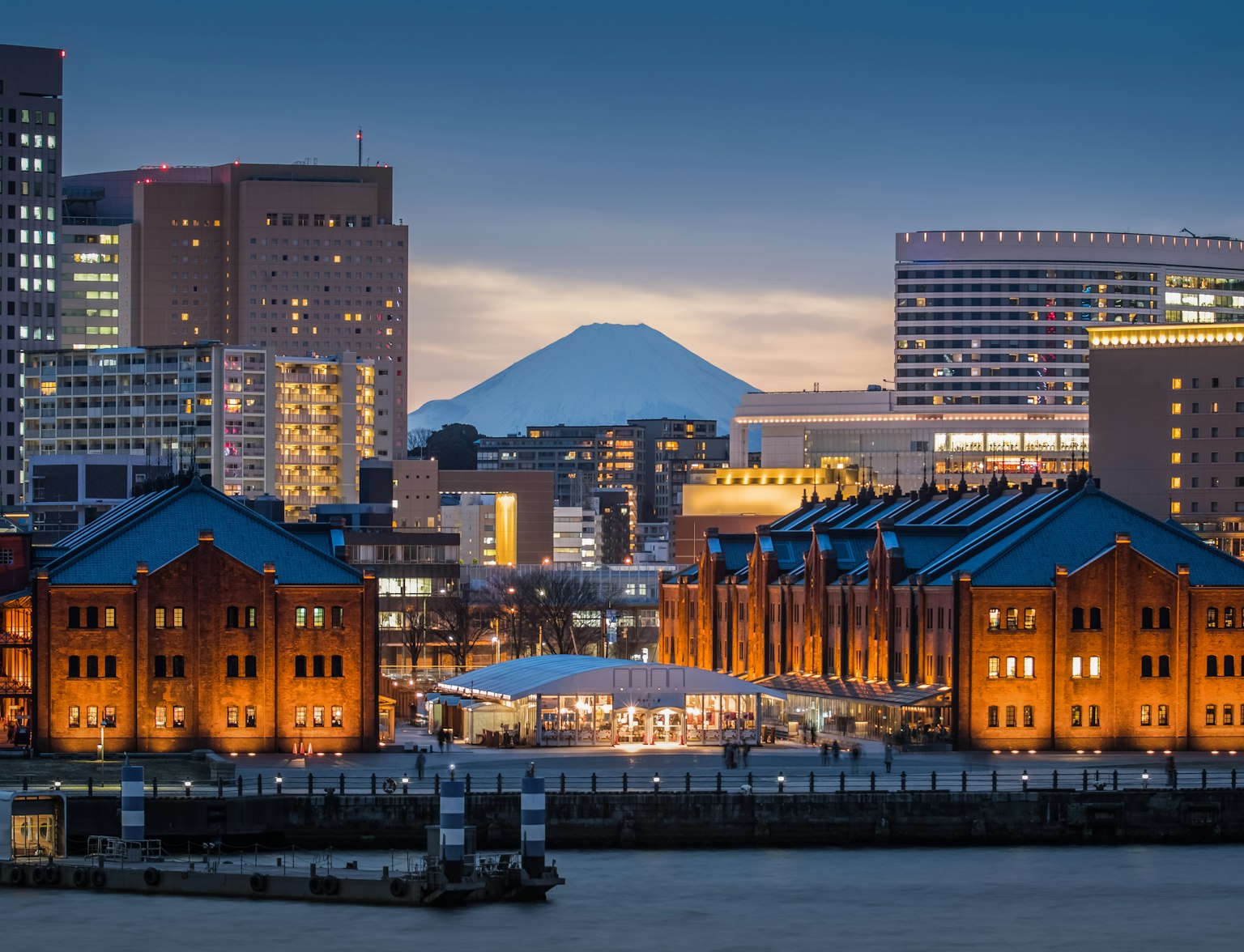
Embark on an exciting Private Yokohama Tour and set sail on the Sea Bass for a breathtaking harbor ride.
Natural Escapes and Scenic Views
Hakone , located in the Fuji-Hakone-Izu National Park, is a popular destination for those seeking natural beauty and tranquility. Known for its hot springs, or onsen resorts, Hakone provides a rejuvenating escape from the hustle and bustle of Tokyo. The town also offers panoramic views of Mount Fuji , especially from Lake Ashi, which you can traverse by pirate ship.
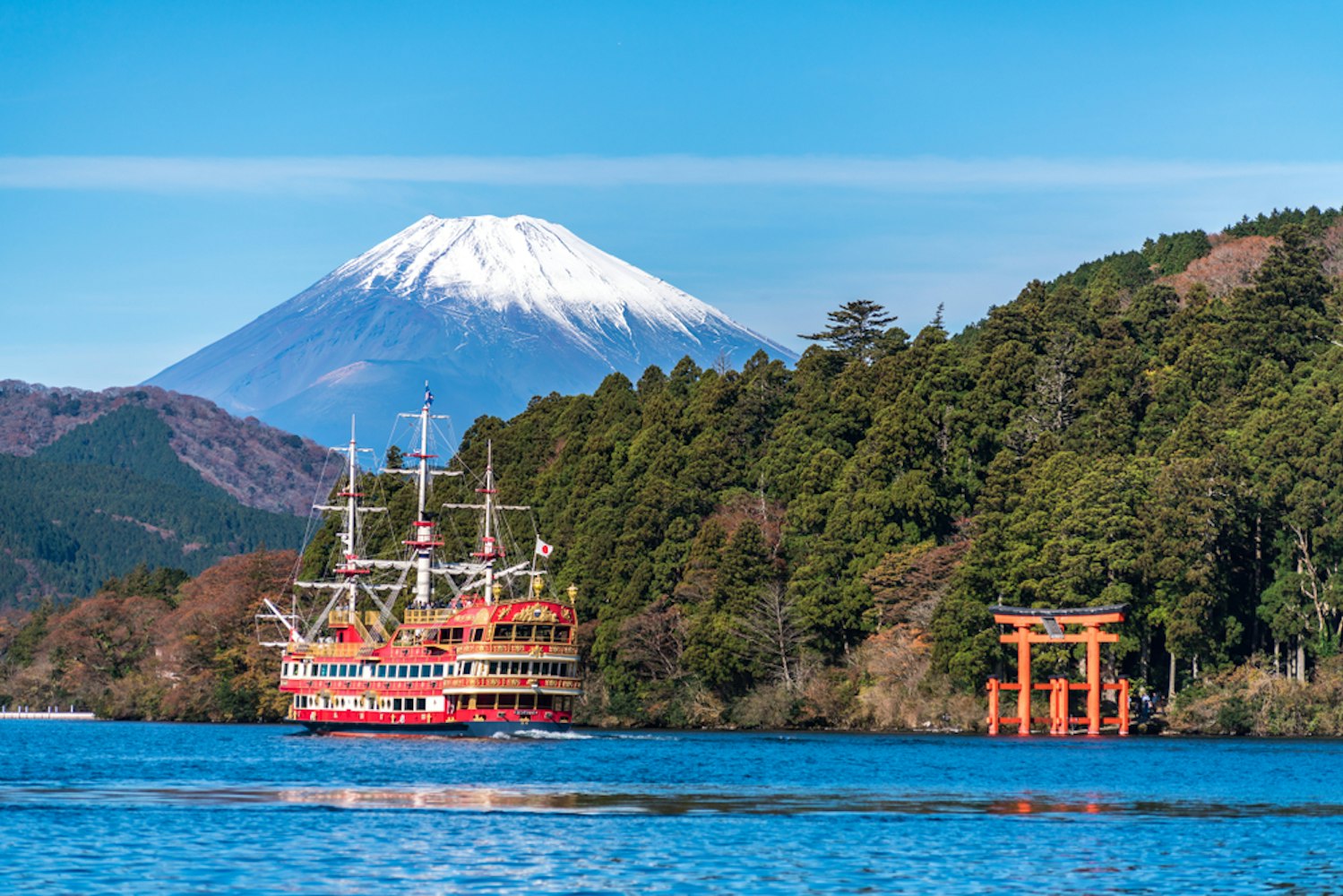
In addition to its natural wonders, Hakone is home to the Hakone Open-Air Museum, where you can enjoy art in a stunning outdoor setting. For a unique experience, take the Hakone Ropeway to Owakudani, an active volcanic zone where you can try black eggs, a local specialty believed to add seven years to your life.
Distance from Tokyo : Around 80 km
How to Get There : Odakyu Romancecar (about 85 minutes) from Shinjuku Station to Hakone-Yumoto Station. Alternatively, take the Shinkansen (about 35 minutes) to Odawara Station, then switch to a local train or bus.
Key Highlights : Cruise on Lake Ashi and visit the Owakudani volcanic valley.
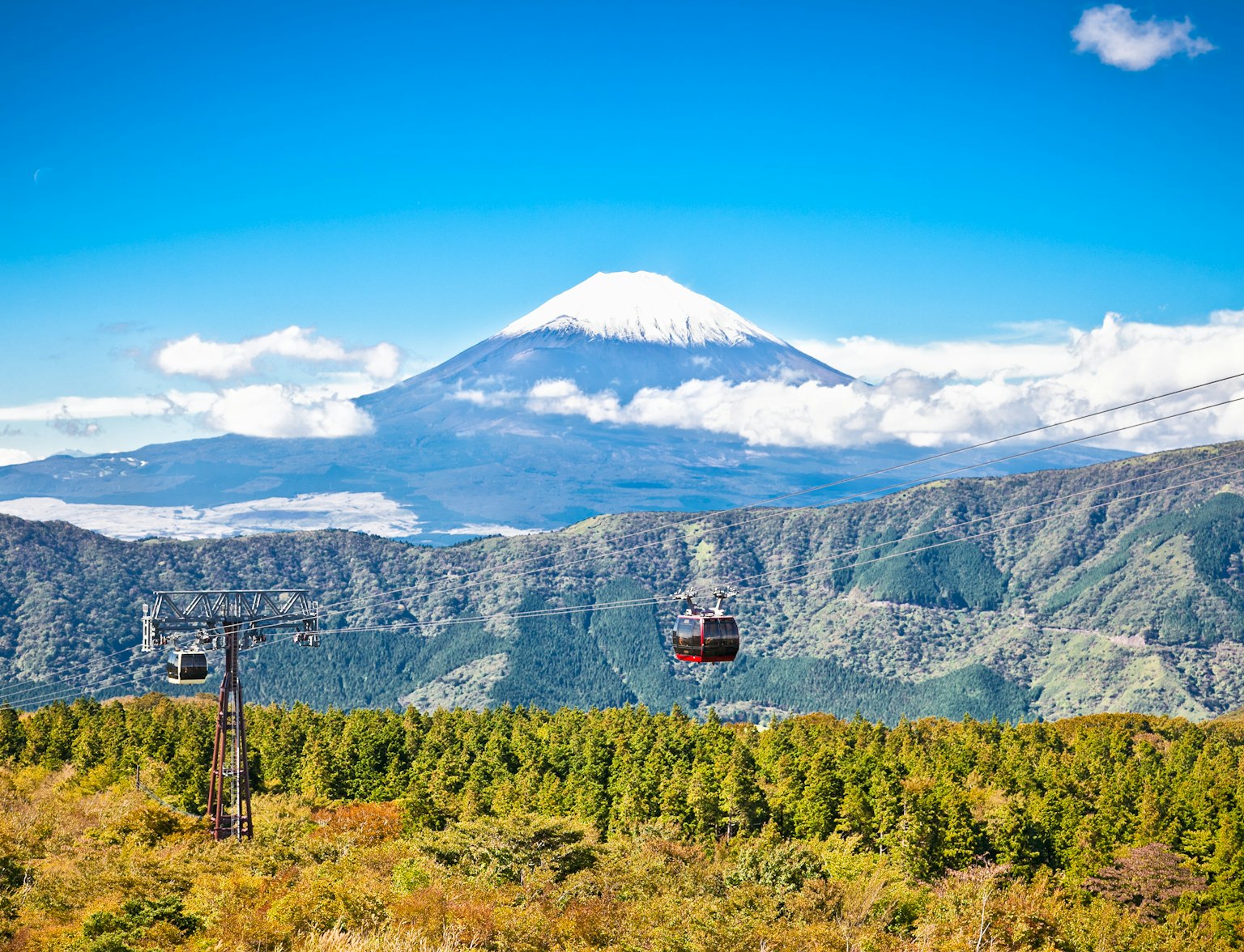
Embark on a mesmerizing voyage from Tokyo to Mt. Fuji and Hakone.
5. Mount Takao
Just an hour away from Tokyo, Mount Takao is a haven for nature lovers and hiking enthusiasts. The mountain offers several trails, catering to different fitness levels, and is especially popular during the autumn leaf season. The cable car and chair lift provide easier access to the mountain's summit, where you can enjoy breathtaking views of Tokyo and Mount Fuji on clear days.
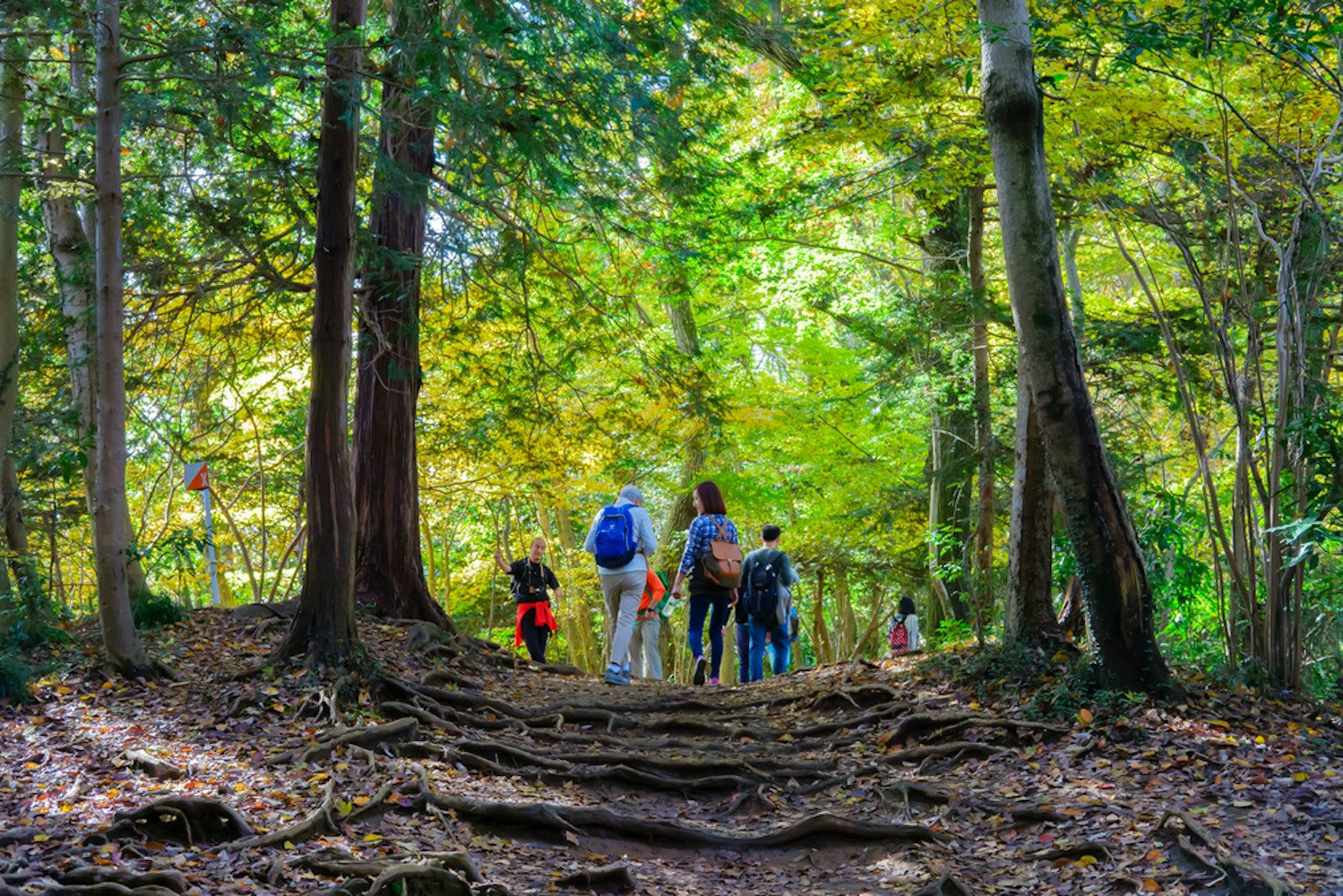
At the base of the mountain, you'll find the Takao 599 Museum , an interactive nature museum that provides insights into the mountain's biodiversity. Don't miss the Takaosan Yakuoin Yukiji Temple, a Buddhist temple located on the mountain, where you can learn about yamabushi, practitioners of Shugendo, a form of mountain asceticism.
Distance from Tokyo : Approximately 50 km
How to Get There : Take a direct Keio Line train (about 50 minutes) from Shinjuku Station to Takaosanguchi Station.
Key Highlights : Explore the monkey park and enjoy the Takaosan Yakuoin Yukiji Temple at the summit.
6. Chichibu
Chichibu, located in the western part of Saitama Prefecture, is a charming city surrounded by mountains. It's a great spot for outdoor activities, such as hiking, rafting, and glamping. Chichibu is also known for its yearly festivals, including the Chichibu Night Festival, one of Japan's top three float festivals.
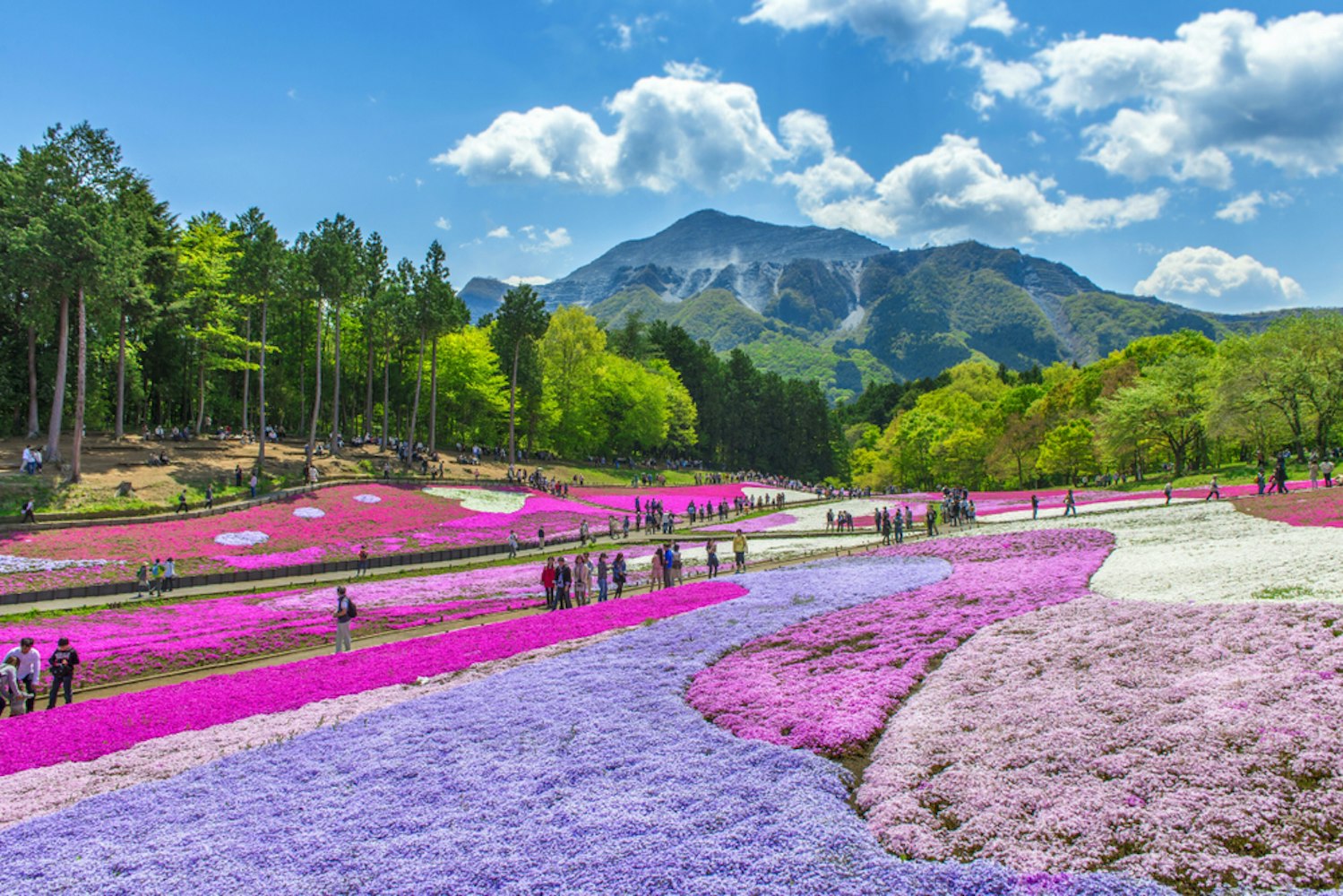
For nature lovers, Hitsujiyama Park is a must-visit, especially during spring when the hillside is covered with colorful moss phlox. History buffs will enjoy exploring the Chichibu Shrine, which features intricate carvings of animals and mythical creatures. Lastly, don't forget to try local specialties such as Chichibu nabe, a hearty hot pot dish perfect for the colder months.
Distance from Tokyo : About 100 km
How to Get There : Seibu Chichibu Line from Ikebukuro Station (about 1.5 hours) to Seibu-Chichibu Station.
Key Highlights : Don't miss the Shibazakura (moss phlox) hill in spring and the Nagatoro River for river boating.
Unique Japanese Experiences
Kawagoe, also known as "Little Edo", offers a unique peek into Japan's past with its well-preserved traditional buildings and cobblestone streets. Start your exploration at Kurazukuri Street, where you can admire the old storehouses turned into shops and cafes. Don't miss the Toki no Kane bell tower, an iconic symbol of Kawagoe.
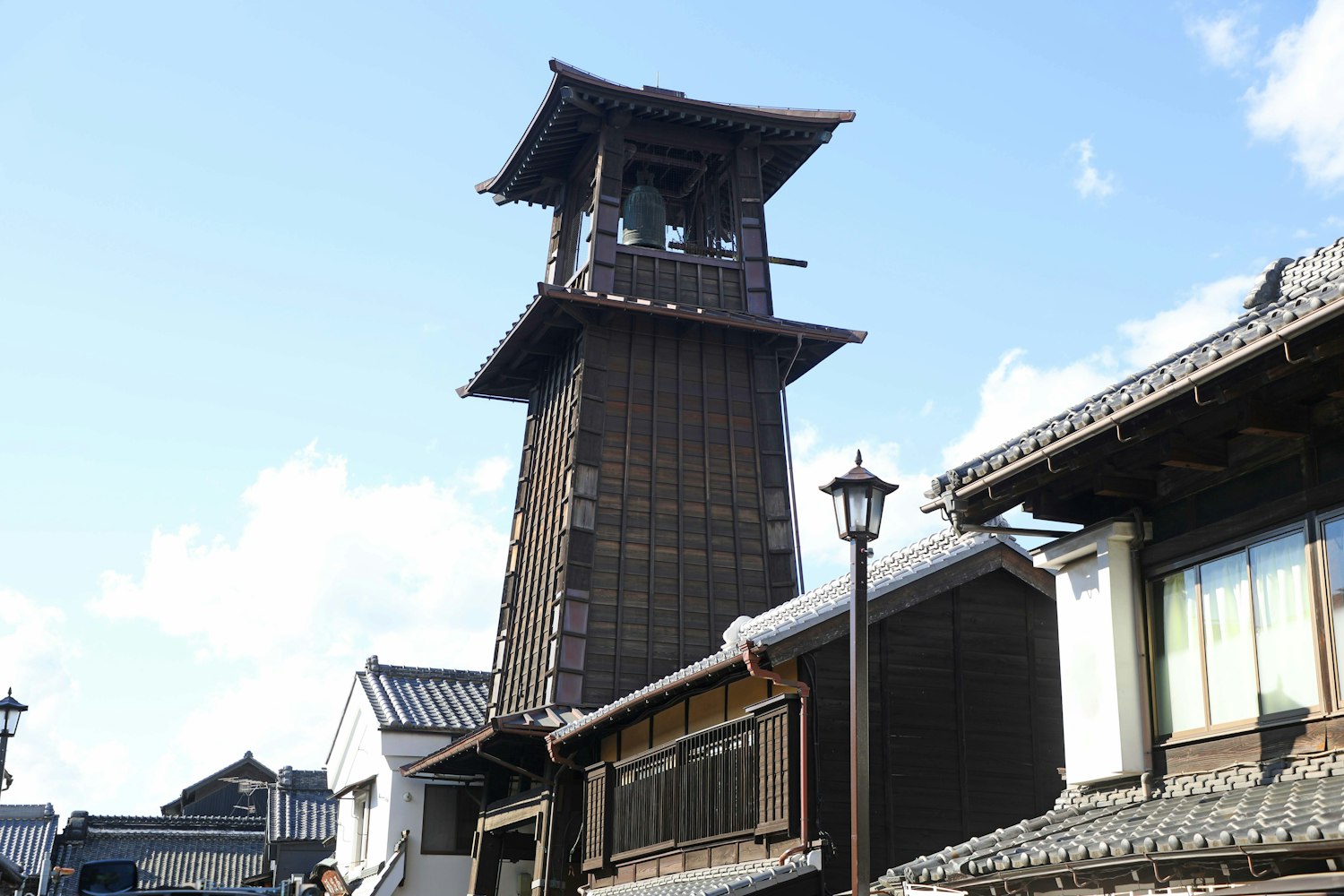
For a spiritual experience, visit the Kawagoe Hikawa Shrine , known for blessings related to love and marriage. The Kawagoe Festival Museum is another must-visit, dedicated to the massive Kawagoe Festival, which is celebrated annually. Finally, satisfy your sweet tooth at Kashiya Yokocho Candy Alley, where traditional sweets are made.
How to Get There : Tobu Tojo Line (about 30 minutes) from Ikebukuro Station to Kawagoe Station. Alternatively, take the JR Saikyo/Kawagoe Line.
Key Highlights : Visit the Time Bell Tower and the Kawagoe Castle Honmaru Palace.
8. Enoshima
Enoshima, a small offshore island, is a perfect day trip from Tokyo . Reachable via the Katase Enoshima Station, the island offers a plethora of attractions. The Enoshima Shrine, a complex of three shrines dedicated to Benzaiten, the goddess of music and entertainment, is a popular spot.
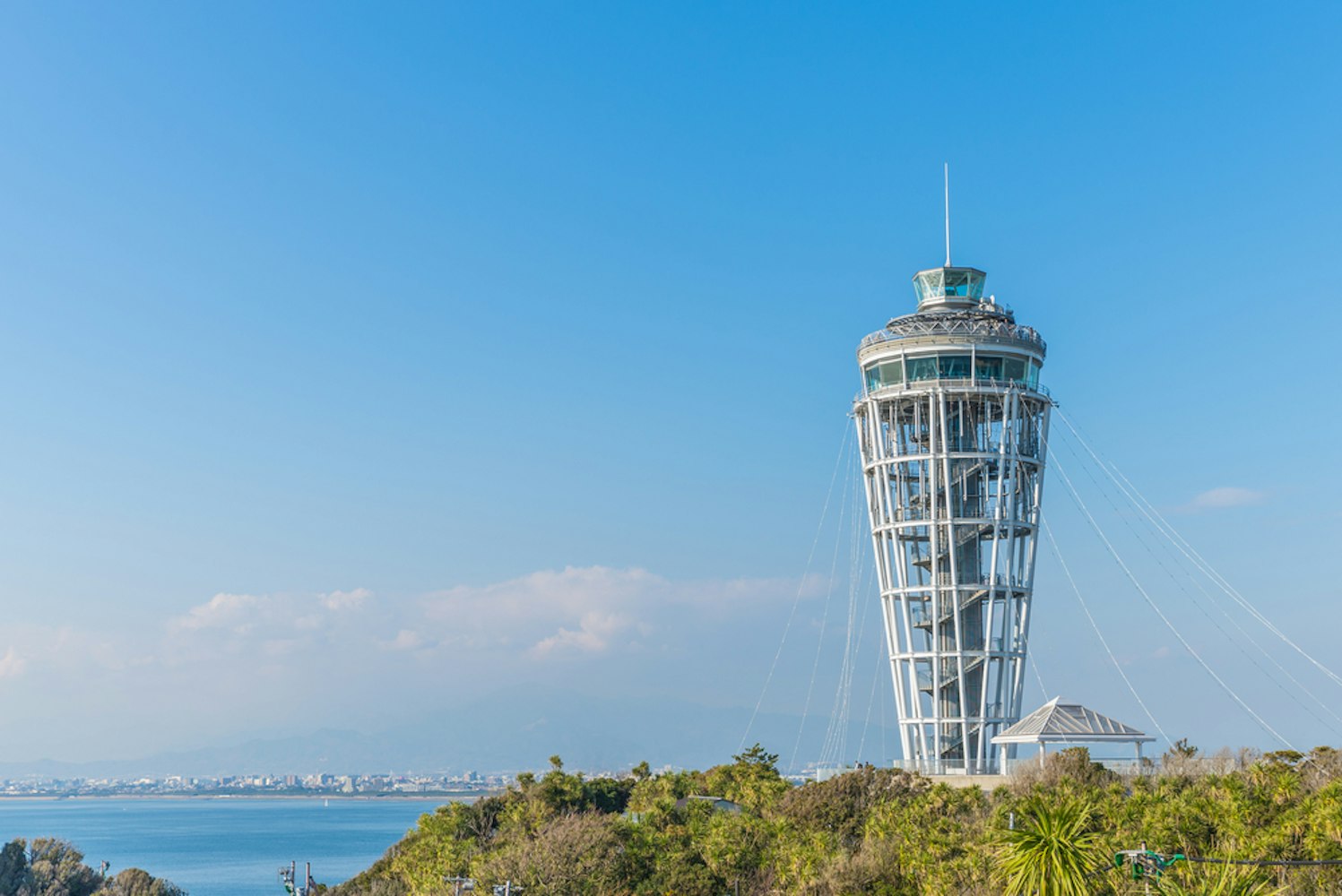
For nature lovers, the Samuel Cocking Garden offers beautiful flora and an observation deck with panoramic views. Don't forget to explore the Iwaya Caves, and enjoy a meal at one of the many seafood restaurants. For a unique experience, take a ride on the Enoshima Escar, a series of outdoor escalators that link the major attractions of the island.
Distance from Tokyo : Around 60 km
How to Get There : Take the Odakyu Line (about 1 hour) to Fujisawa Station, then transfer to the Enoden Line to Enoshima Station.
Key Highlights : Explore the Iwaya Caves and enjoy the Sea Candle observation tower.
Sawara, often referred to as "Little Edo" like Kawagoe, is a historic city in Chiba Prefecture. A boat trip along the Ono River offers a charming view of the city's traditional merchant houses. The city is also home to the Katori Shrine, one of the oldest Shinto shrines in Japan.

Sawara's other attractions include its well-preserved historic district and the Sawara-za Theater, where you can enjoy traditional kabuki performances . The city is also known for its grand festivals, particularly the Sawara Grand Festival, which features large floats and traditional music.
Distance from Tokyo : Approximately 100 km
How to Get There : Take the JR Sobu Line Rapid train (about 90 minutes) from Tokyo Station to Sawara Station.
Key Highlights : Visit the Katori Jingu Shrine and the historic streets of Sawara.
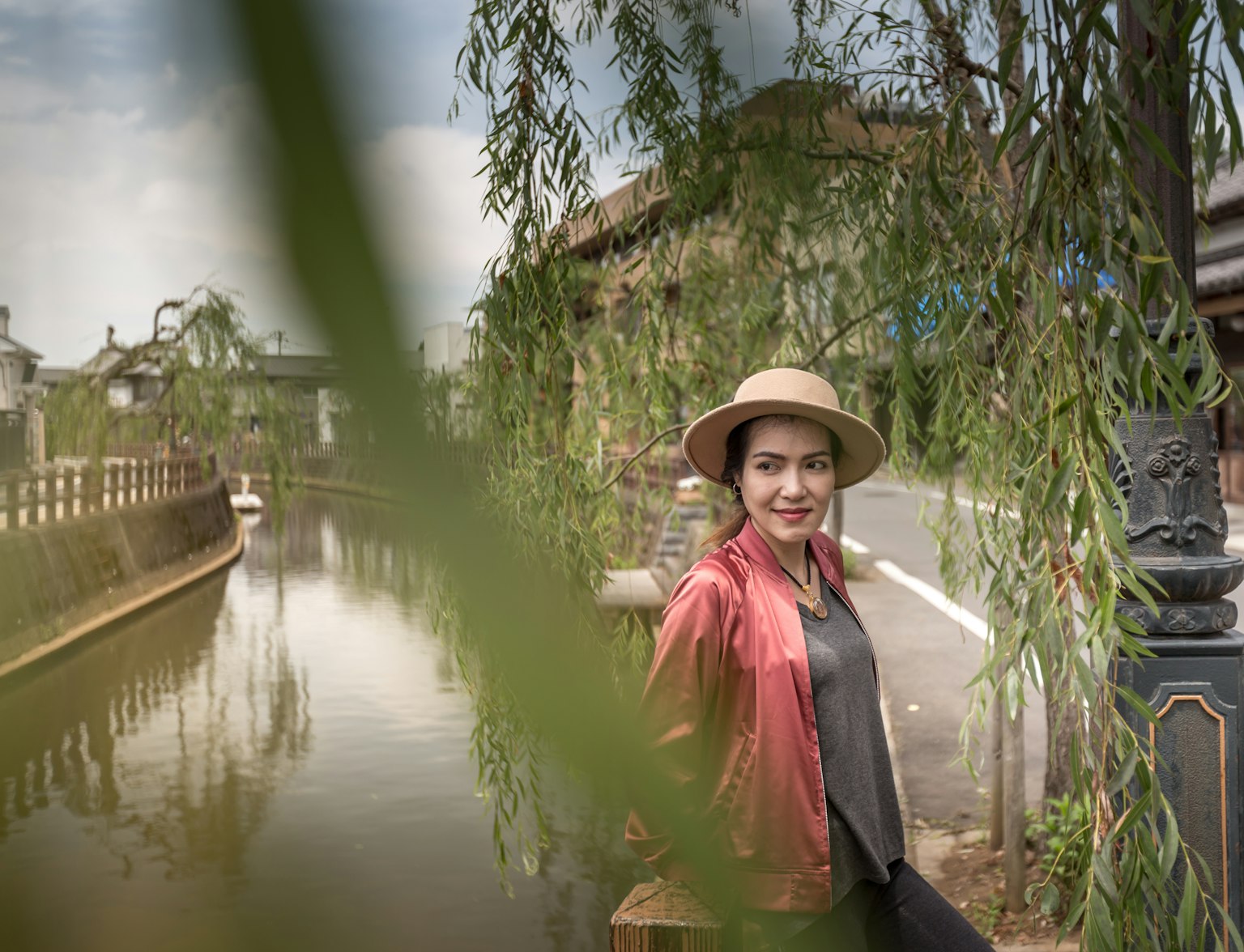
Embark on an unforgettable half-day journey to the enchanting town of Sawara.
Adventure and Outdoor Activities
10. fuji five lakes.
A round trip from Tokyo to the Fuji Five Lakes, less than an hour away by highway bus, offers a variety of outdoor activities and scenic beauty. Lake Kawaguchiko, the largest and easiest accessible of the five lakes, provides splendid views of Mount Fuji . You can explore the lake on a pirate ship cruise or visit the Oshino Hakkai, a set of eight ponds fed by snowmelt from the slopes of nearby Mount Fuji.

Don't miss the Chureito Pagoda located in Arakura Sengen Park, which offers one of the most breathtaking views of Mount Fuji, especially during cherry blossom season or when autumn colors are at their peak . If you're looking for fun things to do, consider a ride on the Kachi Kachi Ropeway or a visit to the Wind/Ice caves.
How to Get There : Fujikyu buses from Shinjuku Station (about 2 hours) directly to the Fuji Five Lakes area.
Key Highlights : Take a boat ride on Lake Kawaguchiko and visit the Kubota Itchiku Art Museum.
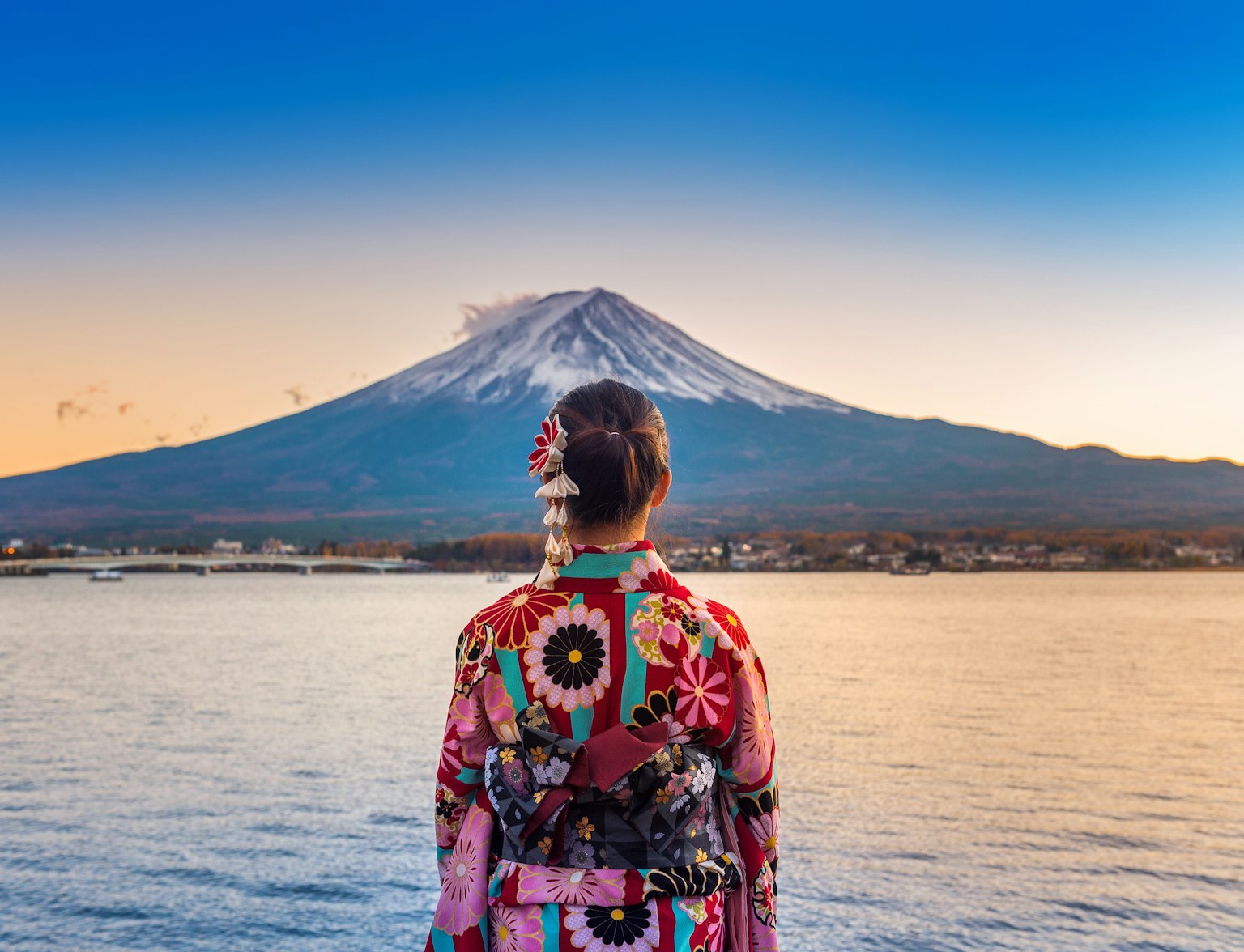
Visit the enchanting Lake Kawaguchiko with this tour.
11. Nagatoro
Nagatoro, only a short walk from the Chichibu Railway's Nagatoro Station, is a popular day trip from Tokyo known for its beautiful scenery and outdoor activities. The town is famous for its river boating experience, where you can enjoy stunning views of the rocky cliffs and lush greenery that line the Arakawa River.

Besides the river adventure, Nagatoro also offers various hiking trails for those who want to immerse themselves in nature. Visit the Hodosan Shrine, located at the base of Mt. Hodo, and take a cable car ride up to the summit for a panoramic view of the town below. Don't forget to try the local specialty, waraji katsudon, a delicious dish made with a large breaded pork cutlet.
Distance from Tokyo : Roughly 100 km
How to Get There : Seibu Ikebukuro Line to Seibu-Chichibu Station (about 80 minutes), then transfer to the Chichibu Railway to Nagatoro Station (about 20 minutes).
Key Highlights : Enjoy the scenic Iwadatami rock formations and participate in traditional river kawadoko dining.
12. Kusatsu Onsen
A visit to Kusatsu Onsen, one of Japan's most famous hot spring towns, is a must for any Tokyo day trip itinerary . Located in Gunma Prefecture, it's known for its high-quality sulfuric waters that are believed to cure all sorts of ailments. The Yubatake, located in the town center, is the symbol of Kusatsu and one of the resort's main sources of hot spring water.
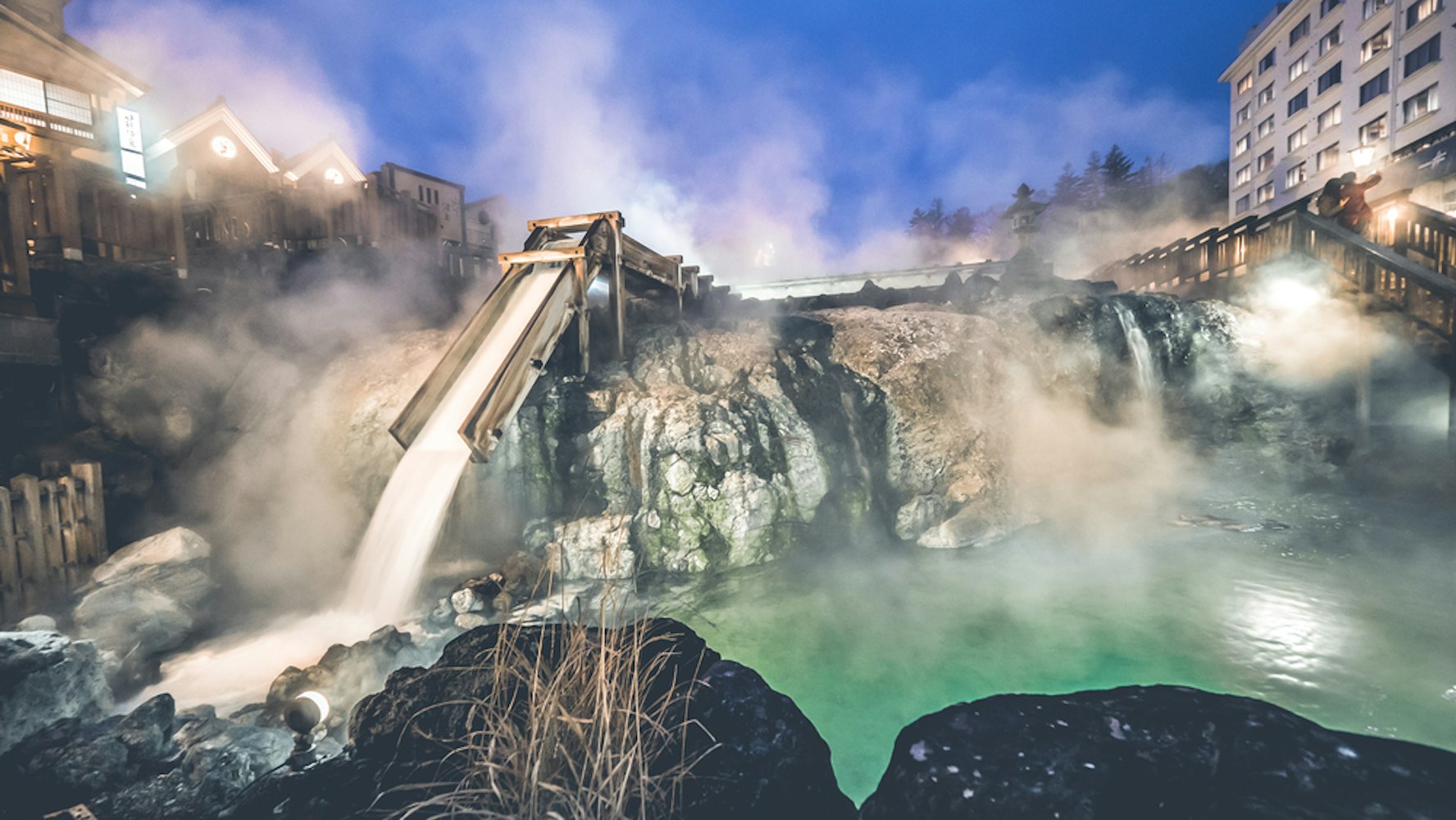
Apart from bathing in the numerous public baths and ryokan, visitors can also enjoy the Yumomi performance, a traditional method of cooling down the hot spring water to bathing temperature without diluting it with cold water. Moreover, Kusatsu Onsen is a gateway to the Joshinetsu Kogen National Park, offering hiking opportunities during the warmer months and skiing in winter.
Distance from Tokyo : Around 200 km
How to Get There : Take the JR Limited Express Kusatsu (about 2.5 hours) from Ueno Station to Naganohara-Kusatsuguchi Station, then take a bus to Kusatsu Onsen (about 25 minutes).
Key Highlights : Experience the Sai-no-kawara open-air bath and visit the Yumomi performance.
Family-Friendly Destinations
13. disneysea.
Tokyo DisneySea, located just a short trip away from central Tokyo, is a unique amusement park featuring seven themed ports inspired by the myths, legends, and lore of the sea. This makes it a fantastic day trip destination for families. From the adventurous Indiana Jones ride in the Lost River Delta to the enchanting Mermaid Lagoon, there's something for everyone.

One of the highlights of Tokyo DisneySea is the Mediterranean Harbor, where you can enjoy a gondola ride or dine in one of the waterfront restaurants. The park's impressive nighttime show, Fantasmic!, is a must-see. Remember to check the schedule ahead of time as it offers unlimited rides, making your day trip from Tokyo an unforgettable experience.
Distance from Tokyo : Approximately 20 km
How to Get There : JR Keiyo Line/Musashino Line to Maihama Station (about 15 minutes), then transfer to the Disney Resort Line.
Key Highlights : Explore the unique themed ports like Mediterranean Harbor and Arabian Coast.
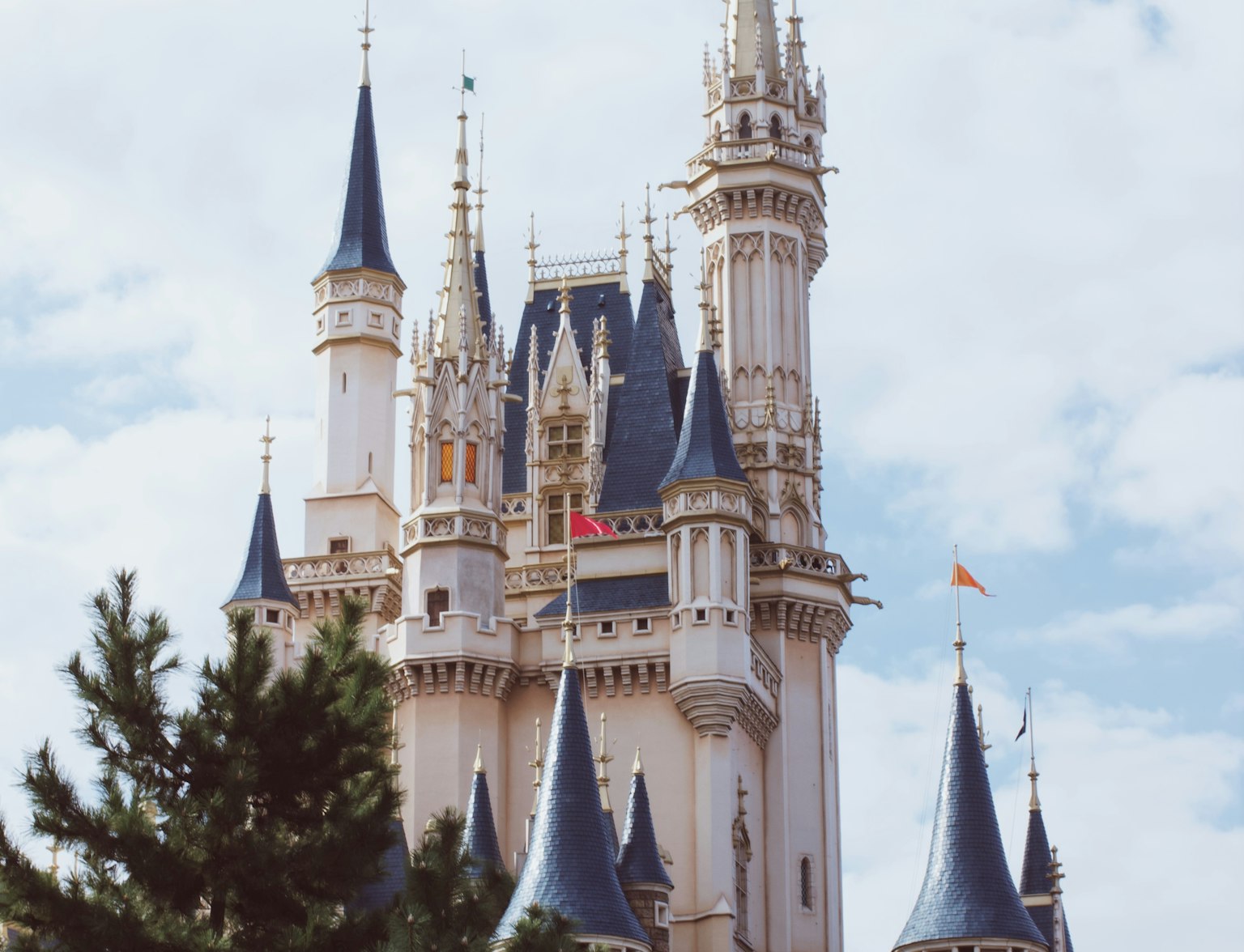
Get to DisneySea hassle-free with this private transfer from your hotel.
14. Yomiuriland
Yomiuriland , one of the biggest amusement parks in the Kanto region, is an excellent choice for a family day trip from Tokyo. The park boasts over 40 attractions, including thrilling roller coasters, a water park (open during the summer season), and the popular Ferris wheel offering amazing panoramic views of Tokyo.
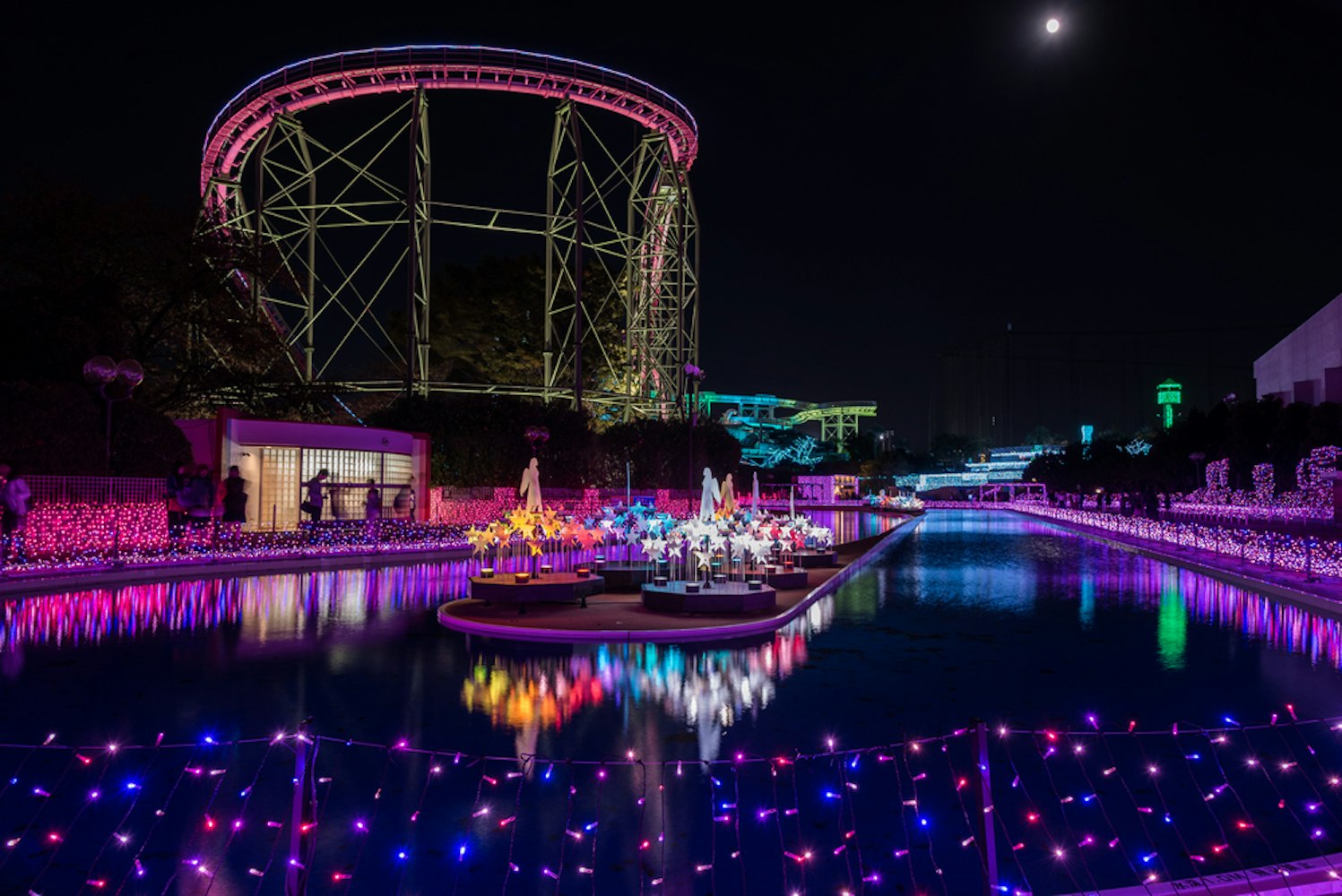
During the cherry blossom season, Yomiuriland becomes a popular spot for Hanami (cherry blossom viewing) with over a thousand cherry trees in bloom. In winter, the park transforms into a magical wonderland with its famous Jewellumination, a spectacular light show designed by a leading Japanese lighting designer.
Distance from Tokyo : About 25 km
How to Get There : Take the Keio Line from Shinjuku Station to Keio-Yomiuriland Station (about 30 minutes), then take the Gondola lift to the park.
Key Highlights : Enjoy the thrilling roller coasters and the seasonal illumination events.
15. Mother Farm
Mother Farm, located in Chiba Prefecture, is a great day trip option for families with young children. The farm offers interactive experiences like milking cows, feeding animals, and strawberry picking. Kids will love the petting zoo, where they can meet and feed a variety of animals including sheep, rabbits, and guinea pigs.
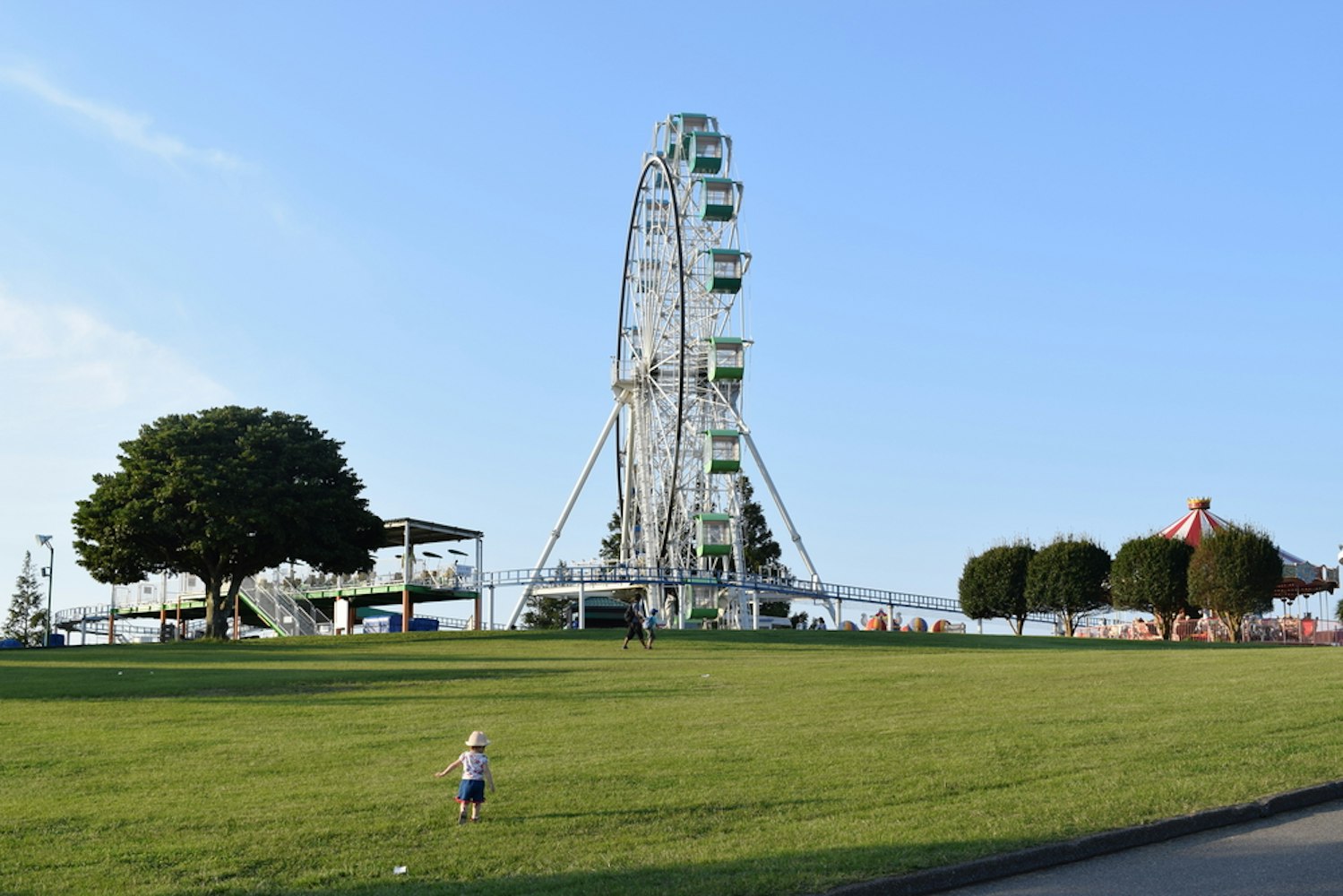
The farm also features fun attractions like the Sheepdog Show, where you can watch dogs skillfully herd sheep, and a horse-riding experience. Don't miss the chance to try their farm-fresh ice cream and cheese, made with milk from their own cows.
Distance from Tokyo : Roughly 80 km
How to Get There : Direct buses from Tokyo Station (about 2 hours).
Key Highlights : Participate in strawberry picking and interact with farm animals.
Food and Culinary Excursions
16. shimoda.
Shimoda, located on the Izu Peninsula, is a fantastic day trip destination from Tokyo . Known for its rugged cliffs and scenic beauty, Shimoda offers more than just picturesque views. It's also a culinary hotspot. The city offers a variety of local specialties that you mustn't miss. One of them is 'Shirasu', tiny white bait fish often served over a bowl of rice or used as a topping for pasta.

Additionally, Shimoda's location by the sea means it's a great place for fresh seafood. Don't miss out on trying the local sushi and sashimi here. For those interested in history, take a walk along the picturesque Perry Street and visit Ryosenji Temple to add a cultural touch to your food adventure.
How to Get There : Limited Express Odoriko train from Tokyo Station (about 2.5 hours).
Key Highlights : Visit Perry Road and the beautiful Shirahama Beach.
17. Utsunomiya
Utsunomiya, a bullet train ride away from Tokyo, is the perfect destination for food lovers. This city is most famous for its gyoza – Japanese pan-fried dumplings. There are numerous gyoza restaurants around the city, each with its own unique recipes and flavors. Some even offer gyoza with unconventional fillings like cheese or curry.
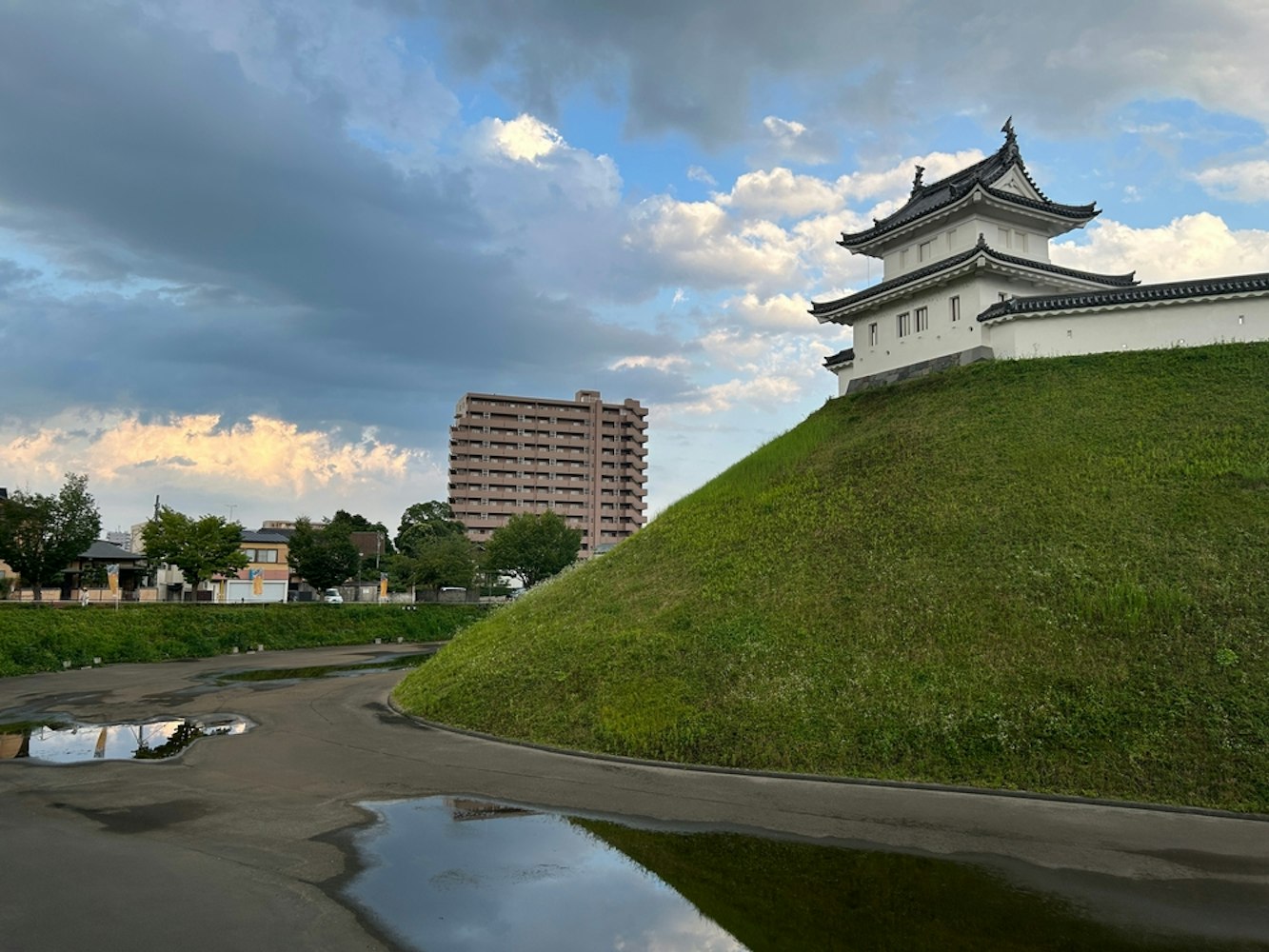
Apart from gyoza, Utsunomiya is also known for Oya stone, a unique stone used in construction. You can visit the Oya Stone Museum and explore the underground mine, then finish your day with a delicious gyoza meal. The combination of food and culture makes Utsunomiya an excellent day trip option.
How to Get There : JR Tohoku Shinkansen (about 50 minutes) from Tokyo Station.
Gastronomic Exploration : Enjoy the city's famous gyoza and visit the Oya Stone Museum.
Koshu, located in the Yamanashi Prefecture, is another great day trip destination from Tokyo. This area is renowned for its wine production, particularly the Koshu grape variety which is indigenous to Japan. Visiting local vineyards and wine tasting are popular activities here.
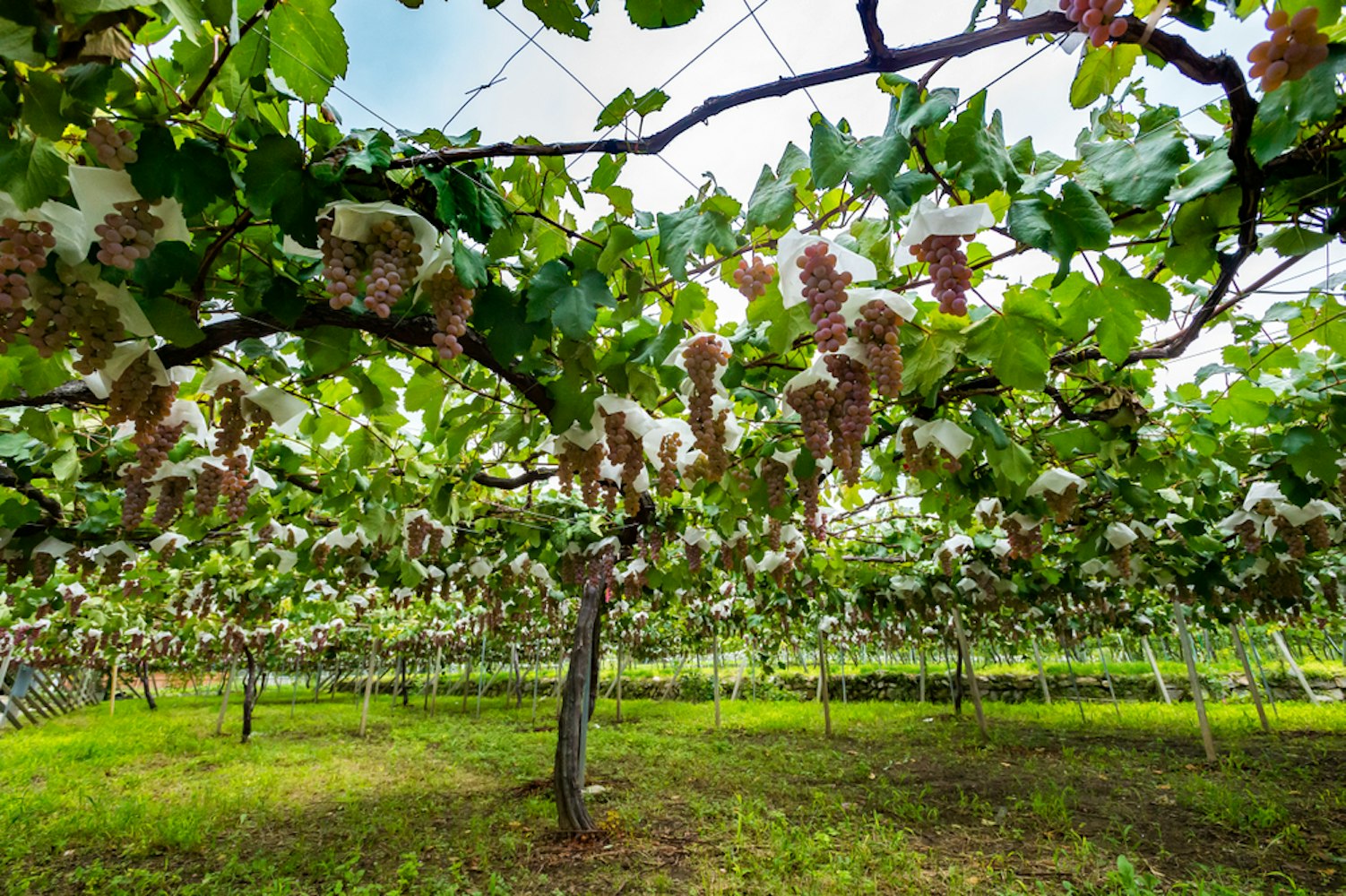
Food enthusiasts will also love exploring the local cuisine in Koshu. The area is known for 'houtou', a hearty noodle soup dish that's perfect for the colder months. Also, don't miss out on trying delicious fresh fruits like peaches and grapes, which are grown locally.
Distance from Tokyo : About 120 km
How to Get There : JR Chuo Line Limited Express from Shinjuku Station to Enzan Station (about 90 minutes), then a short taxi ride.
Vineyard Adventures : Explore the local wineries and the Katsunuma grape region.
Off the Beaten Path
19. okutama.
Okutama, located a stone's throw away from the hustle and bustle of Tokyo, is a paradise for nature lovers. Known as Tokyo's backyard, Okutama offers a plethora of hiking trails for those seeking an escape into the wilderness. The Mt. Mitake hike is one of the most popular day trips that leads you to a serene Shinto shrine at the summit.
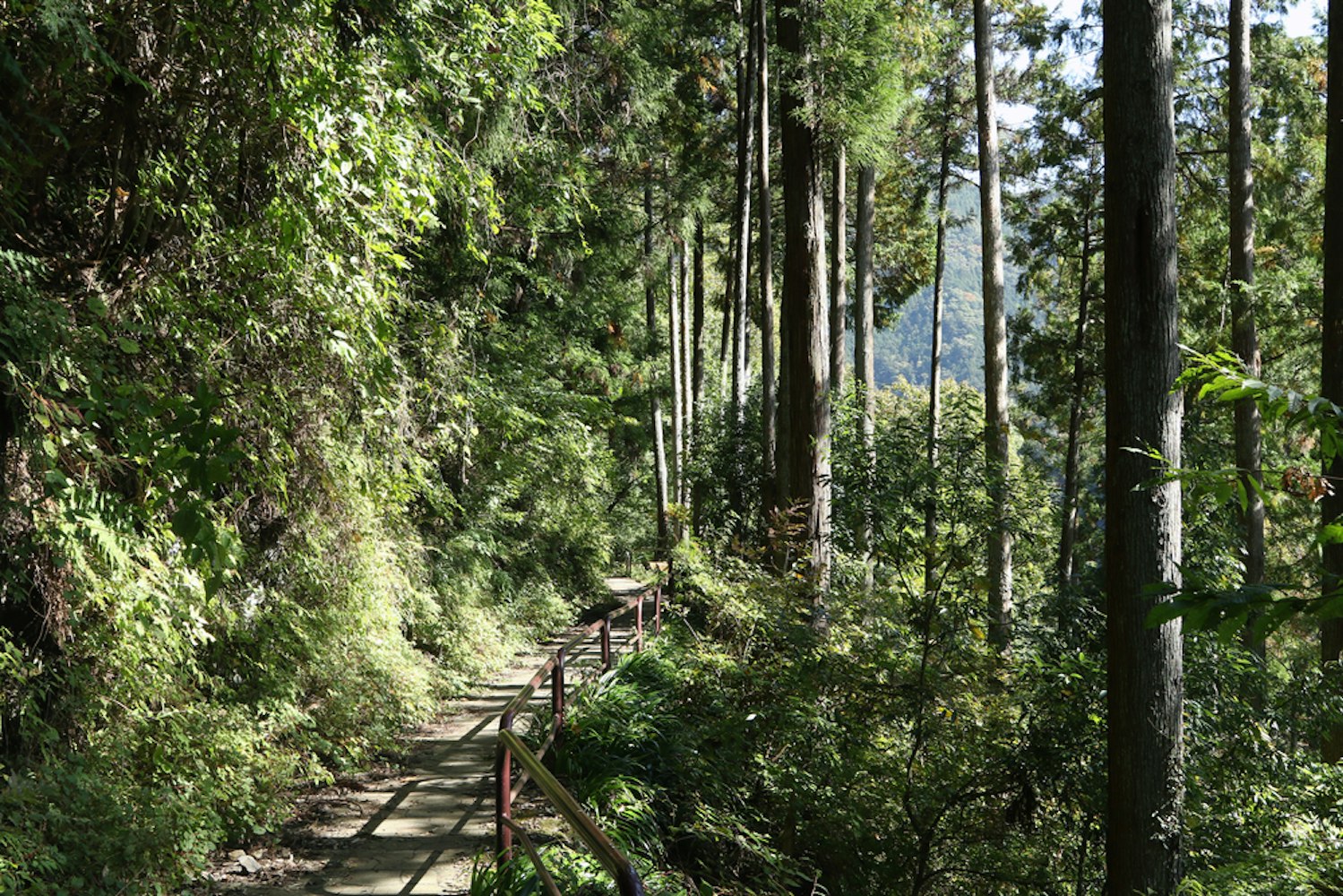
The town also houses the stunning Okutama Lake, which you can explore on a pirate ship cruise. Adventure seekers can indulge in activities like rafting and canoeing in the Tama River . After a day full of activities, relax in a traditional Japanese inn and soak up the local culture. Okutama is a year-round destination, but the autumn colors and spring cherry blossoms make it extra special.
How to Get There : JR Ome Line from Tachikawa to Okutama Station (about 2 hours).
Nature Exploration : Hike the Okutama Mukashi Michi trail and visit the Nippara Limestone Caves.
20. Boso Peninsula
Just a mere two hours away from Tokyo Station by highway bus lies the Boso Peninsula, a haven of natural beauty and cultural history. Boso Peninsula is known for its beautiful beaches, hot spring towns, and traditional temples, making it a great off-the-beaten-path day trip.
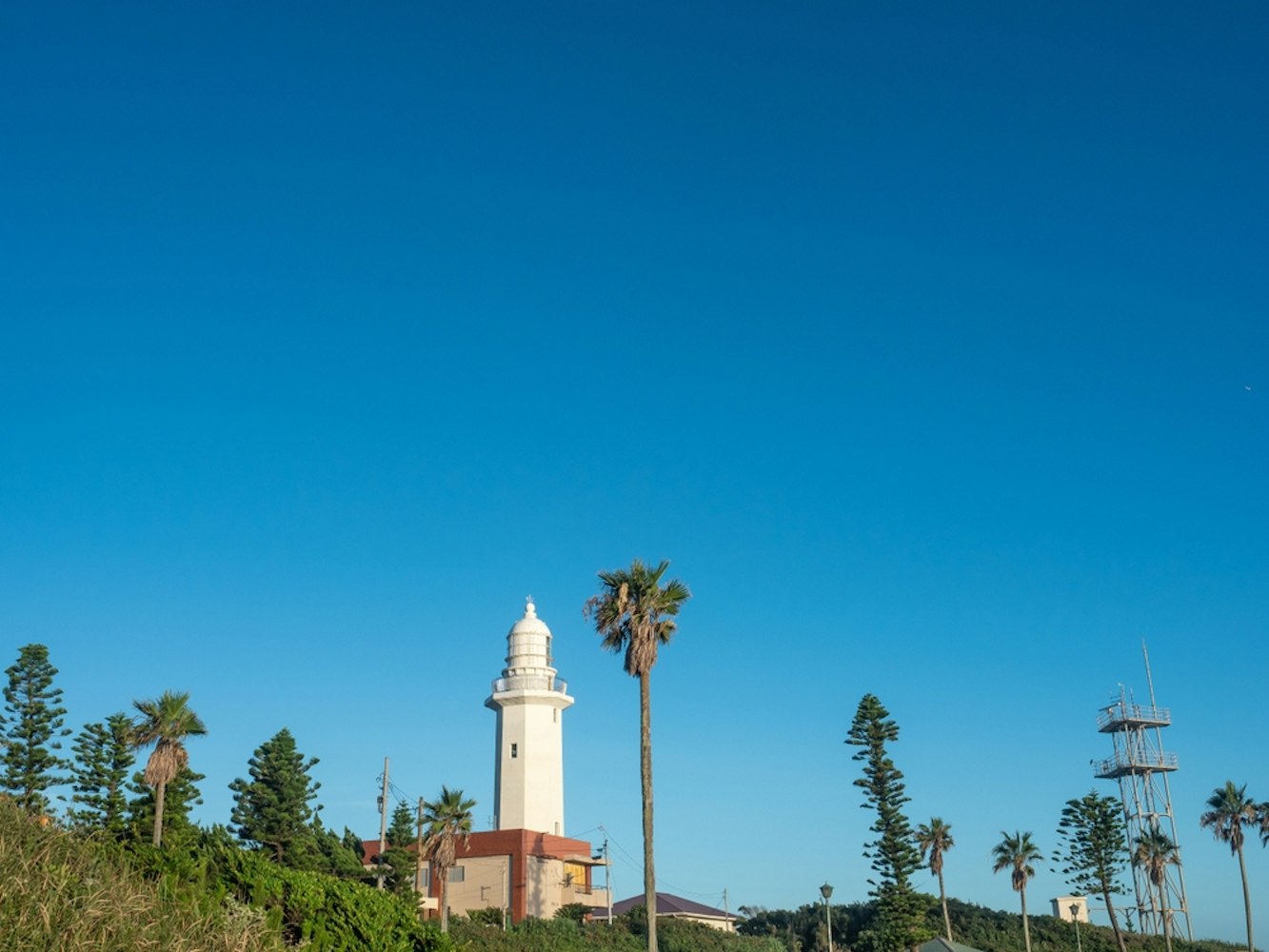
The peninsula is home to Kamogawa Sea World, a marine theme park where you can interact with various sea creatures. Don't forget to visit the quaint town of Tateyama and the Nojimazaki Lighthouse, the southernmost point of the peninsula. The area is also famous for delicious local seafood, so be sure to stop at one of the many restaurants for a meal. Boso Peninsula is a perfect destination for a weekend trip, offering a refreshing break from the big city life.
How to Get There : JR Sobu Line Rapid or JR Uchibo Line to Tateyama or Chikura Stations (about 2 hours).
Rural Discovery : Explore the Tateyama Castle and the Nojimazaki Lighthouse.
Wrapping Up the Tokyo Escapades
Exploring 20 excellent day trips from Tokyo, we've seen that the city's surroundings are brimming with opportunities for adventure. From historical landmarks and natural wonders to culinary hotspots, each trip offers a different facet of Japanese culture and scenery. These escapades are more than just an extension of your Tokyo visit; they're a chance to immerse in the diverse charm Japan has to offer.
Frequently Asked Questions
Where can i go for 1 hour from tokyo.
Several exciting destinations are within an hour's journey from Tokyo. Yokohama, known for its beautiful waterfront and the lively Chinatown, is a popular choice. Another option is Kamakura, where you can walk through Japan's ancient history. You can also consider visiting cities like Tokorozawa and Zama.
Can you do a day trip to Kyoto from Tokyo?
While it is technically possible to do a day trip from Tokyo to Kyoto thanks to the Shinkansen bullet train, it isn't highly recommended. The journey one-way takes about 2-3 hours, meaning you'll spend 4-6 hours of your day on travel alone. It's best to plan at least an overnight stay to fully enjoy what Kyoto has to offer.
Is Osaka a day trip from Tokyo?
Osaka is about a 2.5 to 3-hour Shinkansen ride from Tokyo. While it is possible to visit Osaka as a day trip from Tokyo, it would be a long day with considerable time spent on travel. Similar to Kyoto, if you'd like to experience Osaka's rich culture and delicious street food, it's recommended to plan for an overnight stay.
Is 1 day enough for Hakone?
One day is usually sufficient to explore the main attractions in Hakone such as Lake Ashi, the ropeways, and Owakudani. However, if you wish to take a leisurely pace and fully enjoy the scenic beauty, the hot springs, and the local cuisine, staying overnight would be a better option.
How long is the bullet train from Tokyo to Hakone?
The bullet train (Shinkansen) from Tokyo to Odawara, the nearest station to Hakone, takes approximately 35-40 minutes. From Odawara, you can take a bus or a local train to reach Hakone, which is about another 15-40 minutes depending on your specific destination within Hakone.
Continue reading
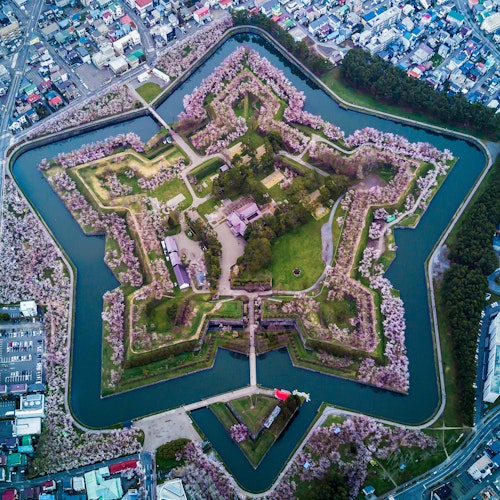
- India Today
- Business Today
- Reader’s Digest
- Harper's Bazaar
- Brides Today
- Cosmopolitan
- Aaj Tak Campus
- India Today Hindi
I spent 10 days travelling Japan during Sakura 2024. It's a spell hard to break
A trip to japan during its legendary cherry blossom season is life-altering in the best, humblest, most efficient of ways..
Listen to Story

- Japan is a wonderland in spring
- The months of March-April are the busiest in Japan in terms of tourist footfall
- People from all over the world travel to Japan in spring to see its famed cherry blossoms
April 17, 2024 · 2 min read

Embark on a 4-day adventure through Tokyo Ashigarashimo District, where tradition meets modernity. Begin your journey with a peaceful stroll through Shinjuku Gyoen National Garden, an oasis in the heart of the city. Spend the rest of your first day immersing yourself in the bustling streets of Shinjuku City, known for its unique character. Day two takes you to the electric energy of Akihabara Electric Town, a haven for tech enthusiasts and anime fans. Later, unwind at Ueno Park, a city park that offers a tranquil escape. The third day is steeped in culture with a visit to Sensō-ji, Tokyo's oldest temple, followed by shopping at Nakamise-dori Street. Cap off the day with breathtaking views from the Tokyo Skytree's observation deck. Your final day is a retreat to nature at Owakudani, an active volcanic valley, and the serene beauty of Lake Ashi. This itinerary promises a blend of Japan's rich culture, cutting-edge modernity, and natural wonders.
- Day 1: Serenity and Bustle in the Heart of Tokyo
Shinjuku Gyoen National Garden

Begin your Tokyo adventure with a peaceful stroll through the Shinjuku Gyoen National Garden, a lush oasis amidst the city's hustle. As the first stop of your day, this expansive park offers a tranquil retreat with its meticulously maintained landscapes. Spanning over 58 hectares, the garden presents a blend of traditional Japanese, English, and French garden designs, making it a picturesque spot for relaxation and a gentle introduction to the day's explorations.
Attraction Info
- 11 Naitōmachi, Shinjuku City, Tokyo 160-0014, Japan
- Suggested tour duration: 2-3 hour
- Open from 10/1-3/14,Tue-Sun,9:00am-4:30pm;Open from 3/15-6/30,Tue-Sun,9:00am-6:00pm;Open from 7/1-8/20,Tue-Sun,9:00am-7:00pm;Open from 8/21-9/30,Tue-Sun,9:00am-6:00pm;Closed on Mon,*The park is open every Monday from March 25 to April 24 and November 1 to 15; Rest days: year-end and New Year holidays (December 29th to January 3rd).
Recommended Nearby Restaurants
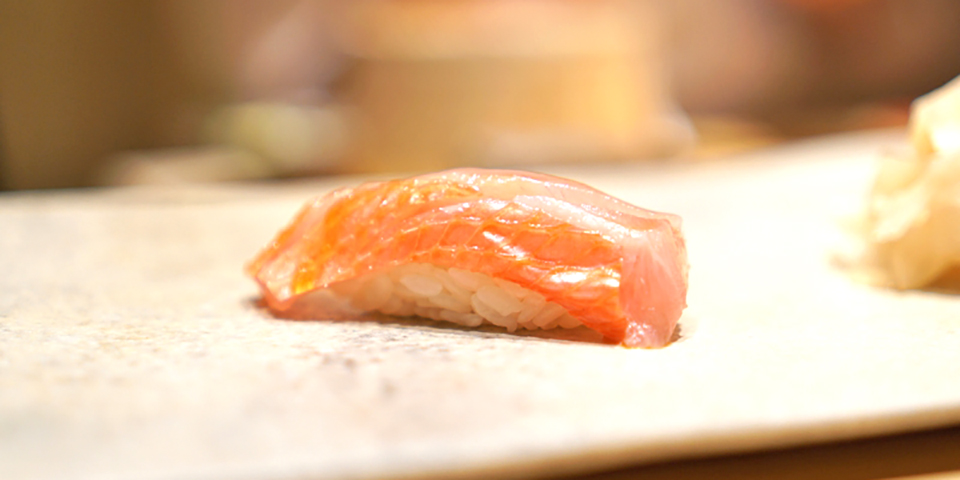
Shinjuku City
After unwinding in the greenery, dive into the vibrant life of Shinjuku City. As a characteristic neighborhood that never sleeps, Shinjuku offers a full day's worth of excitement with its myriad of shopping options, entertainment venues, and dining experiences. From the towering skyscrapers to the underground arcades, this district is a microcosm of Tokyo's dynamic culture and a perfect juxtaposition to the morning's serene garden visit.
- Tokyo, Japan
- Suggested tour duration: 0.5-1 day
- Open 24 hours
Where to Stay Tonight
Shinjuku kuyakusho-mae capsule hotel, hotel yuyukan.
- Day 2: Tokyo's Tech & Nature - Akihabara and Ueno Park
Akihabara Electric Town
Kickstarting the second day in Tokyo's electric heart, Akihabara Electric Town is a must-visit for anyone looking to immerse themselves in the city's vibrant tech culture. Located at 1 Chome-12 Sotokanda, this characteristic neighborhood is a paradise for tech enthusiasts and anime fans alike. Spend your day exploring the endless rows of electronic shops, gaming stores, and unique maid cafes. Akihabara is not just a shopping district; it's a cultural experience where the latest in technology and Japanese pop culture blend seamlessly.
- 1 Chome-12 Sotokanda, Chiyoda City, Tokyo 101-0021, Japan

After a day surrounded by the buzz of technology, unwind amidst the tranquility of Ueno Park, a lush city park that offers a peaceful retreat from the urban excitement. Situated in Taito City, this expansive green space is a breath of fresh air with its beautiful ponds, museums, and the famous Ueno Zoo. With a two-hour stay, you'll have ample time to enjoy a leisurely stroll under the cherry blossoms if you're visiting in spring, or discover the historical monuments scattered throughout the park.
- Uenokoen, Taito City, Tokyo 110-0007, Japan
- Open from 5:00am-11:00pm
Hotel Kangetsuso
Hotel new ueno.
- Day 3: Spiritual Heights and Sky-High Sights in Tokyo
Kickstarting our third day with a serene visit to Sensō-ji, Tokyo's oldest temple, sets a tranquil tone amidst the bustling city. As you pass through the iconic Kaminarimon Gate, the vibrant hues and historic charm of this cultural landmark invite you for an hour of exploration and reflection. The temple grounds, with their intricate architecture and the hum of visitors, offer a glimpse into the spiritual heart of Tokyo.
- 2-chōme-3-1 Asakusa, Taito City, Tokyo 111-0032, Japan
- Suggested tour duration: 1-2 hour
- Open from 4/1-9/30,6:00am-5:00pm;Open from 10/1-3/31,6:30am-5:00pm
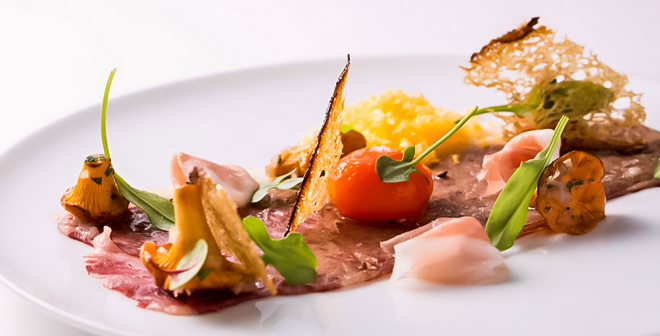
Nakamise-dori Street
A short stroll from the temple tranquility leads us to the lively Nakamise-dori Street, a perfect contrast to our morning's peace. Here, you'll have two hours to immerse yourself in the bustling atmosphere of this traditional shopping street. Lined with an array of shops selling souvenirs, snacks, and handcrafted goods, Nakamise-dori is a feast for the senses and a treasure trove for those looking to take a piece of Japan home.
- 1-chōme-36-3 Asakusa, Taito City, Tokyo 111-0032, Japan
Tokyo Skytree
Capping off the day, we ascend to the awe-inspiring heights of Tokyo Skytree. Within an hour, you'll be transported to the observation deck of the world's tallest tower, where breathtaking panoramic views of the city await. As the skyline stretches out before you, the observation deck offers a unique perspective on Tokyo, allowing you to reflect on the day's journey from historic depths to modern peaks.
- 1 Chome-1-2 Oshiage, Sumida City, Tokyo 131-0045, Japan
- Open from 04/01-04/06,10:00am-10:00pm;Open from 04/08-04/13,10:00am-10:00pm;Open from 04/16-04/20,10:00am-10:00pm;Open from 04/22-04/27,10:00am-10:00pm;Open from 05/07-05/11,10:00am-10:00pm;Open from 05/13-05/14,10:00am-10:00pm;Open from 05/16-05/18,10:00am-10:00pm;Open from 05/20-05/25,10:00am-10:00pm;Open from 05/27-05/31,10:00am-10:00pm;Open 10:00am-9:00pm on 04/15;Open 10:00am-9:00pm on 05/15;Open 9:00am-10:00pm on 04/07;Open 9:00am-10:00pm on 04/14;Open 9:00am-10:00pm on 04/21;Open from 04/28-05/02,9:00am-10:00pm;Open 9:00am-10:00pm on 05/12;Open 9:00am-10:00pm on 05/19;Open 9:00am-10:00pm on 05/26;Open from 05/03-05/06,8:00am-10:00pm,Last admission for the TOKYO SKYTREE Tembo Deck is 8 p.m. for the TOKYO SKYTREE Tembo Galleria is 8:30 p.m
Hotel Livemax Asakusa Sky Front
Entire typical japanese house1min walk to skytree.
- Day 4: Hakone's Natural Wonders - Owakudani and Lake Ashi
Begin your final day with a visit to the steaming volcanic valley of Owakudani, a testament to Earth's fiery power. Nestled in the heart of Hakone, this sulfurous site offers a unique experience where visitors can witness billowing plumes of steam and purchase the famous black eggs, boiled in the naturally hot waters. The eggs are said to extend one's life by seven years. A short cable car ride from Sengokuhara, Owakudani provides not only a geological spectacle but also panoramic views of Mount Fuji on clear days.
- 1251 Sengokuhara, Hakone, Ashigarashimo District, Kanagawa 250-0631, Japan
- The specific business status is subject to the opening situation on that day.
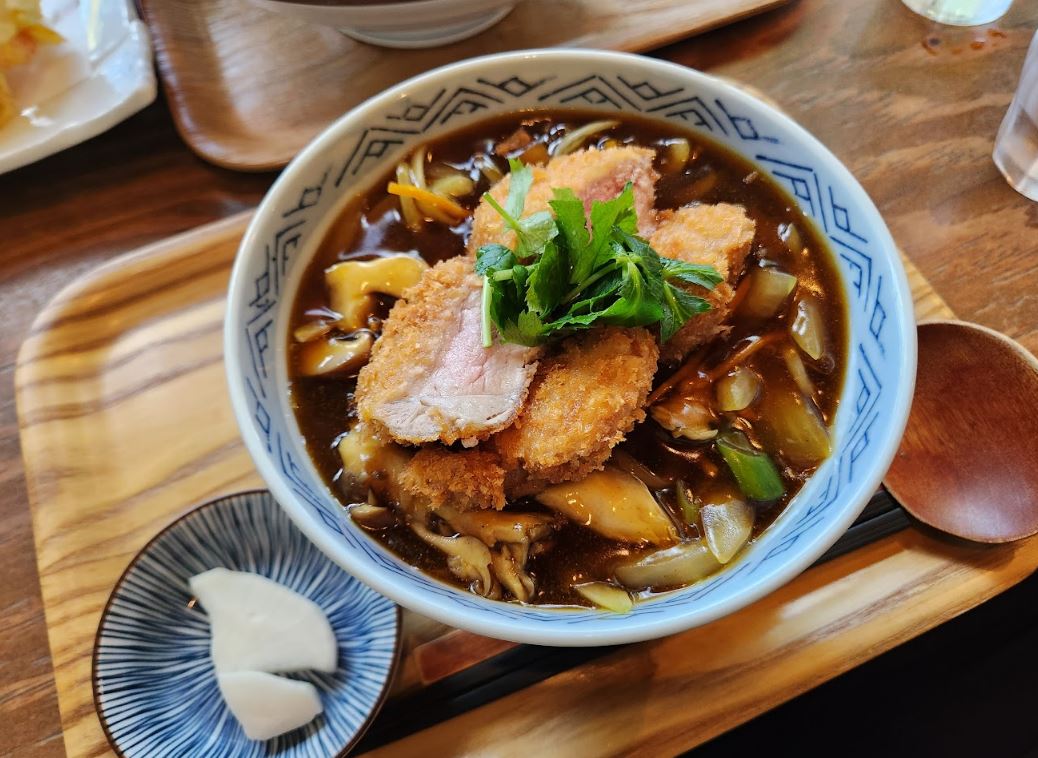
Conclude your Tokyo Ashigarashimo District adventure with a serene day at Lake Ashi, a crater lake with postcard-perfect views of Mount Fuji. Known for its reflective waters and the iconic red torii gate of Hakone Shrine, Lake Ashi is a place of tranquility and natural beauty. Enjoy a leisurely cruise, explore the lakeside shrines, or simply relax by the water's edge. The lake's surroundings offer a rich tapestry of cultural and historical experiences, ensuring your last day is as memorable as it is picturesque.
- Lake Ashi, Motohakone, Hakone, Ashigarashimo District, Kanagawa 250-0522, Japan
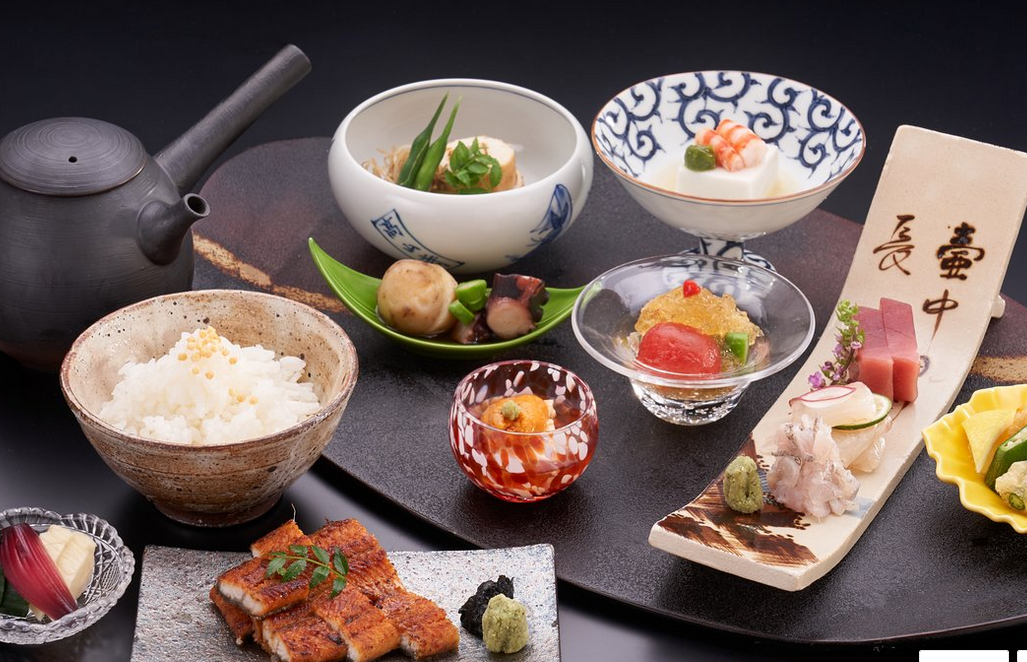
The Prince Hakone Lake Ashinoko
* All user reviews in this article have been translated by machine.
* The information above is subject to change at any time. For the latest information, please check the websites of hotels and attractions.

<h3>Trending Searches</h3>
Popular Content
- Xiangxi 4 Days Itinerary
- Alpes-Maritimes 4 Days Itinerary
- Zhangjiakou 1 Day Itinerary
- Yongzhou 1 Day Itinerary
- Lugano 1 Day Itinerary
- Lahaina 1 Day Itinerary
- Zhanjiang 6 Days Itinerary
- Lisbon Evora 4 Days Itinerary
- Wattens 1 Day Itinerary
- Vancouver 1 Day Itinerary
- Huangshan 5 Days Itinerary
- Qingyuan 2 Days Itinerary
- Dhigurah 1 Day Itinerary
- Manchester Liverpool 2 Days Itinerary
- Kashgar 1 Day Itinerary
- Mengzi 1 Day Itinerary
- Guilin 3 Days Itinerary
- Moramanga 1 Day Itinerary
- Jianghua 1 Day Itinerary
- Berlin Hamburg 2 Days Itinerary
- Customer Support
- Service Guarantee
- More Service Info
- Website Feedback
- About Trip.com
- Terms & Conditions
- Privacy Statement
- About Trip.com Group
Other Services
- Investor Relations
- Affiliate Program
- List My Property
- Become a Supplier

7 Best things to do in Japan in 2024
A s a travel enthusiast starts planning a 2024 travel itinerary, Japan, the Land of the Rising Sun, ticks all the boxes. It is the ultimate travel destination thanks to its historic streets of Kyoto, savoring delicious street food in Osaka, exploring the religious shrines, or staying at the ryokans . From the age-old cherry fields to the peaceful country roads, this place is a feast for the senses.
Springtime being this place's truly magical venture, Japan comes alive with color and energy, and visitors are feasted on a lot of enjoyable destinations to explore. Its rich tapestry of history, culture, and natural beauty offers an array of adventures for every travel enthusiast.
Disclaimer: This is purely the writer's opinion, and might have missed some favorite destinations.
The top activities to experience in Japan in 2024
Whether the avid traveler is a history buff, a food enthusiast, or a nature lover, Japan is the perfect place for their visit in 2024.
Ahead, Team Sportskeeda has thoughtfully created a list of the seven best things to do in Japan in 2024 and make the most of their visit.
- Explore Kinkaku-ji at Kyoto
- Enjoy Hanami in Tokyo
- Feed the deer at Nara
- Learn about the city's history at Hiroshima
- River cruise at Osaka
- Ski at Hokkaido
- Sun-bask on the shorelines of Okinawa
1) Explore Kinkaku-ji at Kyoto
Kyoto, the cultural heart of Japan , is a must-visit spring destination for avid travelers. Considering that the best time to travel is in late March to early April, this holiday and sightseeing place is well-known for its cherry blossoms in full bloom.
Sight-seers should not miss the spectacular Kinkaku-ji (Golden Pavilion) and the traditional Gion District. For lodging, one should consider staying at a classic ryokan to experience the hospitality at its best. Kansai International Airport, the nearest airport, can be easily commuted to thanks to local transportation.
Once in Kyoto, one should also make sure to try out the local cuisines, like kaiseki (a multicourse feast) and various matcha confectionaries. Noted diners like Nishiki Market and Pontocho Alley also rule the culinary delight list.
2) Enjoy Hanami in Tokyo
Be it the onset of autumn or spring, the metropolis of Tokyo, Japan, is always bustling with a unique blend of modernity and ritual. Including Senso-ji Temple and Meiji Shrine, this metropolis' main attractions are decorated with cherry blossoms, catering to a panoramic view.
Once in Tokyo, tourists can enjoy activities like hanami (flower viewing) picnics in Ueno Park and boat or yacht cruises along the Sumida River. For an unforgettable stay, visitors can select a hotel in the vibrant Shibuya or Shinjuku districts and indulge in a wide variety of delectable local cuisines, like sushi tempura and ramen at Tsukiji Outer Market, and the food stalls at Ameyoko Market.
Read more: 6 Best European countries to visit in Summer 2024
3) Feed the deer at Nara
Nara, well-known for its friendly deer and ancient religious shrines, it is always the perfect time for any travel enthusiast to visit this charming destination.
Visitors can engage in activities like feeding deer and exploring the picturesque Isuien Garden at Nara Park and Todai-ji Temple, the main attractions they shouldn't miss. Once here, a holiday enthusiast can stay at cozy homestays or ryokans for an authentic lodging experience. There are also sample local delicacies, like Kakinoha sushi and persimmon leaf sushi, at the best diners in the Nara-machi district.
4) Learn about the city's history at Hiroshima
Hiroshima, a Japan metropolis with a resilient spirit and a profound history, is best visited in early April. From the local Hiroshima Airport, courtesy of its travel-friendly communication, the Hiroshima Peace Memorial Park and Shukkeien Garden are the main places of interest that offer serene beauty. Here, tourists can engage in activities like visiting the Itsukushima Shrine on Miyajima Island and the Hiroshima Peace Memorial Museum to learn about the city's history.
One can also plan their stay at comfortable hotels and savor local cuisines like okonomiyaki and oysters from the best diners like Okonomimura and Mitaki-en.
5) River cruise at Osaka
Considered one of the most vibrant cities, Osaka is famed for its lively environment and mouthwatering delicacies. The best time to visit is late March or early April. Once landing at the Kansai International Airport, a vacationer can enjoy their holiday by visiting the main attractions, like Osaka Castle and Dotonbori.
Thanks to its panoramic view, travelers can enjoy local activities like exploring the bustling Kuromon Ichiba Market and river cruising along the Okawa River. Planning a 2 to 3-day trip to Osaka, a vacationer can book their stay at downtown's trendy hotels and indulge in local cuisines like takoyaki , okonomiyaki , and kushikatsu at street food stalls, and best-eating joints like Mizuno and Kani Doraku.
Read more: 6 Best treks in the world
6) Ski at Hokkaido
Hokkaido, the northernmost island, is a must-see spring holiday destination in Japan, courtesy of its spectacular natural attractions. When hiring local transportation or pre-paid cabs from New Chitose Airport, the best time to visit is late April or early May. During this time, tourists can enjoy the main attractions, such as the vast fields of Shikisai-no-Oka and the majestic beauty of Shikisai Hill.
They can engage in activities like exploring Biei's charming beauty, skiing, Onsen (hot springs), enjoying a relaxing soak in the famous Noboribetsu hot springs, or staying at comfortable ryokans or motels with stunning mountain views. They can also savor these gastronomical delights in local delicacies like fresh seafood , spicy ramen, and tasty dairy products at the best diners like Ramen Yokocho and Nijo Market.
7) Sun-bask on the shorelines of Okinawa
Off-boarding at the Naha airport, Okinawa's gorgeous shorelines and rich history welcome avid travelers, making it an excellent destination year-round for all travel enthusiasts visiting Japan. Once here, travelers can explore the lively marine life at the Churaumi Aquarium and the Ryukyu culture of historical Shuri Castle.
They can rest and recoup at beachfront resorts like the Ritz-Carlton, Okinawa, or Halekulani, Okinawa, to experience the true essence of Okinawa, Japan. Visitors can also spoil their tastebuds with the local flavors of sample Okinawan soba, agu pork , goya champuru, and rafute pork.
Read more: 6 best Spring destinations in the world to take a family vacation
These are the seven best things to do in Japan in 2024 that promise an array of unforgettable experiences for travel enthusiasts. So, avid travelers can start backpacking to enjoy their adventure-packed holiday.
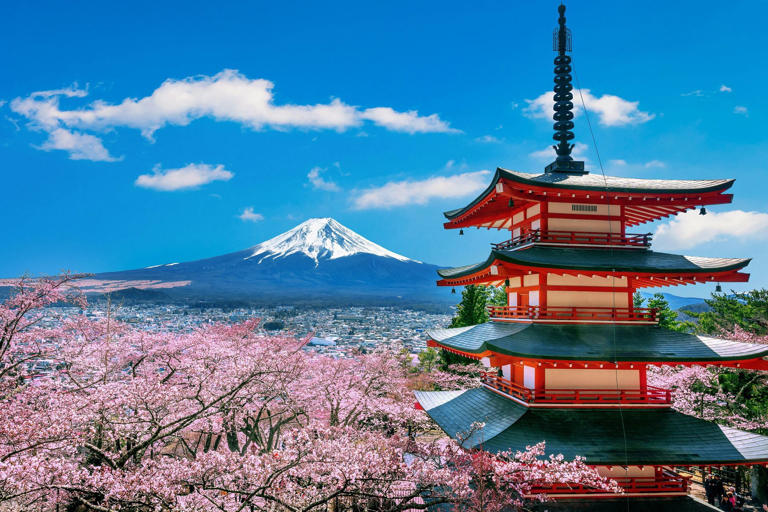
- Skip to content
The Cornell Lab of Ornithology builds the eBird global platform for communities and partners around the world to advance data-driven science, education, and conservation.
Change Region
- News & Resources
- Recent Checklists
- Trip Reports
- Illustrated Checklist
- Hotspot Map
- Rare Bird Alerts
- Printable Checklist
Recent Trip Reports
信州諏訪(短歌) 6 jan 2024.
- Anonymous eBirder
中部山岳国立公園(感動体験) 20 – 22 Oct 2023 (3 days)
Hawks migration at shirakaba pass 8 – 11 sep 2023 (4 days).
Advertisement
Supported by
Heavy Rain and Floods Kill 19 in Oman and Disrupt Dubai Airport
A year’s worth of rain fell in one day in some areas across Oman and the United Arab Emirates, bringing cities to a standstill.
- Share full article

By Yan Zhuang
Follow our coverage of the flooding in Oman and Dubai.
Record levels of rainfall have brought cities in the United Arab Emirates and Oman to a standstill, with at least 19 people killed in Oman and flights being diverted from Dubai’s airport.
In the U.A.E., authorities urged all residents to stay at home, as videos showed cars submerged on gridlocked highways and planes leaving waves in their wake as they taxied down flooded runways in Dubai. In Muscat, Oman’s capital, flash flooding turned streets into raging rivers.
Experts said the extreme deluge was likely the result of a regular, rainy weather system being supercharged by climate change.
The storm first hit Oman on Sunday, causing widespread flash flooding and leading officials to close schools and government offices. On Wednesday, the heavy rains had eased, although the authorities warned residents to remain cautious.
Several areas of Oman received over 230 millimeters, or about 9 inches, of rain between Sunday and Wednesday, according to the country’s National Committee for Emergency Management. The average annual rainfall in Muscat, the nation’s capital, is about 100 millimeters, although other parts of the country can receive more rain.
By Wednesday morning, 19 deaths had been confirmed by the emergency management committee, including an infant. Ten of the dead were schoolchildren who were swept away in a vehicle with an adult, according to The Associated Press. Some schools remained closed in Oman on Wednesday, and some government employees were told to work from home.

The U.A.E. had its largest rainfall event in 75 years on Tuesday, the government said on social media. One area received 255 millimeters, about 10 inches, of rain in less than a day, the country’s National Center of Meteorology said.
On Wednesday, officials at Dubai International Airport, one of the world’s busiest, urged travelers not to go to the airport, with flights continuing to be delayed and diverted. Operations were briefly suspended because of the storm. Emirates, the national airline, said it was suspending check-in services for passengers departing from the airport until midnight.
“Recovery will take some time,” the airport said on social media . “We thank you for your patience and understanding while we work through these challenges.”
At Muscat International Airport, some flights were delayed and canceled, while others were operating on time, said Yousef al-Habsi, an information adviser for the airport.
Although some have speculated that recent cloud seeding efforts by the U.A.E. — using chemicals to increase the chances of clouds producing rain — could have contributed to the extreme weather, scientists said this was very unlikely.
“Rainfall enhancement could not cause that kind of increase in rainfall,” said Steven Siems, an expert in cloud seeding at Monash University in Australia, adding that any effects from cloud seeding would have been “marginal” at most.
The extreme weather appeared to be the result of a relatively normal weather system bringing rain that had been turbocharged by ocean and atmospheric warming, said Janette Lindesay, a climate scientist at the Australian National University. “It’s highly likely that global heating has played a role in the intensity of the event,” she said.
A low pressure system moving over the Arabian Peninsula and the Gulf of Oman had interacted with parts of the jet stream, a river of wind that moves from west to east over temperate latitudes in the Northern Hemisphere, producing rainfall, Professor Lindesay said.
That in itself was not unusual. But with rising air and sea temperatures escalating ocean evaporation, there was more moisture in the atmosphere, she said, which had likely contributed to a bigger and more intense deluge of rain.
“In many parts of the world we’re seeing fewer rainfall events that produce moderate to light rainfall,” she said. “More dry days, but on the days with higher rainfall, it rains more heavily.”
Jenny Gross contributed reporting.
Yan Zhuang is a Times reporter in Seoul who covers breaking news. More about Yan Zhuang
Itinerary Ideas
Nationwide itineraries.
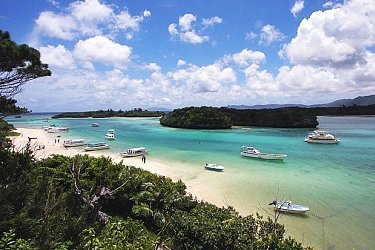
Regional Itineraries
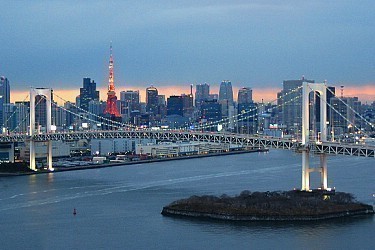
Local Itineraries
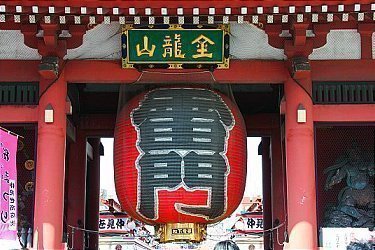
Questions? Ask in our forum .


IMAGES
VIDEO
COMMENTS
Depart Japan from Narita Airport. Regular train tickets will be cheaper than a Japan Rail Pass for this itinerary; however, travelers who do not mind paying extra for the convenience and flexibility of the pass' all-you-can-ride priviledge could consider using a 21-day Japan Rail Pass. Below are some sample budgets for the itinerary, excluding ...
Plan a 20 day tour through Japan from Hokkaido to Hiroshima, and stop for top sights and experiences in Tokyo, Nikko, Kamakura, Hakone, Takayama, Shirakawago, Kanazawa, Kyoto, Nara, and Osaka. ... Travel Japan more flexibly in groups of 6 to 13 people using public transportation. Explore Japan off the beaten path via Japanese public ...
20 days, 19 nights. one less day. one more day. The following is a suggested itinerary for first time travelers to Japan who spend 20 days and 19 nights in Japan, and arrive/depart from Osaka 's Kansai Airport.
Cooling Off Period. 7 Days. Incredible sightseeing including breathtaking Mount Fuji, the UNESCO sites of Shirakawa-gõ Village, White Heron Castle and Golden Pavilion, and the highlights of the Okinawa Islands. 19 nights in comfortable 3 and 4-star accommodation. Breakfast daily and 2 dinners.
NOTE: On my first trip to Japan I spent about 20 days there as I explored Tokyo (6), Kyoto (3), Osaka (2), Nara (1), Hiroshima (3), Takayama (2), Magome-Tsumago (1), and Kinosaki (2). For this, I only used a 14-day JR Pass since I spent 6 days in Tokyo and it was cheaper to just buy single tickets in the subway. ... Most people do this as a day ...
Depending on the routes you take, you could spend anywhere from ¥89,662 ($810 USD) to ¥112,050 ($1,012 USD) just in transportation costs. The cost of a 21-day Japan Rail Pass, plus the cost of trains and busses not covered by the Japan Rail Pass comes out be ¥67,990 ($614 USD). By purchasing the Japan Rail Pass, you could save between ¥ ...
Days 18-20: Sapporo. Sapporo is the fifth-largest city, though it's far removed from the rest of Japan. The region was first home to the indigenous Ainu, though increased immigration in the 19th century saw the Japanese population skyrocket. ... Book Your Trip to Japan: Logistical Tips and Tricks. Book Your Flight Find a cheap flight by using ...
Partially Escorted. Pace. Moderate Pace. Cooling Off Period. 7 Days. Incredible sightseeing, including Japan's beautiful shrines, gardens and temples, charming Shirakawa-go and Takayama Old Town, Kyoto's ancient World Heritage Sites and Kyushu's highlights including the Hells of Beppu. 17 nights in comfortable 3-star accommodation.
TOUR CODE: HH1. 23 days from Delhi to Lhasa. On our Highlights of Himalaya tour you'll discover mystery, beauty, and tradition are…. View Tour. 20 Day South Korea And Japan Tour. TOUR CODE: KR2. 20 days from Seoul to Hiroshima. This highly rewarding 20-day South Korea & Japan By Rail tour kicks off in fine style in….
Here are epic itineraries for Japan for 7, 10 and 14 day trips! About; FAQs; Jobs; Press; Contact; Budget Travel. Budget Travel See All. 5 Offbeat Places to Visit in 2023 . The BEST Black Friday & Cyber Monday Travel Deals of 2022 . ... How to Travel Patagonia on $20 a Day . The 10 Best Free Inca Sites in Cusco . How to Visit Machu Picchu on ...
Location: 3 Chome-4-20 Hondamachi, Kanazawa, Ishikawa Prefecture 920-0964. Omicho Market. ... We are planning a 21 days trip to Japan in April 2019. Ideally we would like to stay in Tokyo and Kyoto and use these cities as a base for day trips (by train) to other cities in Japan. We will spend 3 or 4 days visiting these 2 cities but we are ...
What people love about Fully Guided Tours in Japan. Judi Harris 18 Mar, 2024. 5. The guide was the best. Japan Express: Osaka to Tokyo. MARTIN DOBRESCU 18 Apr, 2024. 5. Very interesting experience. Very good trip, well balanced between mandatory and optional activities.
Located right outside Tokyo, the majestic mountain is one of the most popular day trip destinations in the area. Rightfully so; the stratovolcano is Japan's highest peak at 12,389 feet tall as well as both a Special Place of Scenic Beauty (a great page to bookmark if you want to hit Japan's prettiest sights, by the way) and a UNESCO World Heritage Site.
Day 20 Travel to Matsushima; Matsushima - Matsushima Bay Cruise, Entsuin Temple, Zuiganji Temple; Travel to Sendai Today we will tour Matsushima. Matsushima, near Sendai, is known as one of Japan's three most scenic areas, and has been visited by numerous dignitaries over the years including the famous haiku poet Basho who wrote a very famous ...
After years of dreaming about it a couple of days ago I bought tickets to fly to Japan. We're flying on the 22nd of April, and back on the 13th of May. That gives us 20 days to use! After buying the flights I noticed that the middle week of our trip falls on the Golden Week, so I'm trying to find a way to not be in Tokyo or Kyoto for part of ...
Day 9 - Universal Studios Japan, primarily for Nintendo World. Dinner in Kobe and strolling the waterfront before heading back to Osaka. Day 10 - Himeji castle, grab some Japanese Mcdonalds, head back to Osaka. Do Amerika-mura & Dotonburi. Day 11 - Train to Hakone.
Regular train tickets will be cheaper than a Japan Rail Pass for this itinerary; however, travelers who do not mind paying extra for the convenience and flexibility of the pass' all-you-can-ride priviledge could consider using a 14-day Japan Rail Pass from day 8 to 21 or even a 21-day pass. Haruka 1-Way Tickets can be considered for access to ...
Completing the scene are the serene reflecting pool and traditional Japanese gardens that contain lush foliage, manicured trees, and scenic walking paths. 1 Kinkakuji-cho, Kita-ku, Kyoto-shi, Kyoto, +81 075-461-0013, shokoku-ji.jp. Open daily 9am-5pm. Admission is 500 JPY. Admire Ryoan-ji Temple.
Pre-trip Essentials. Connectivity: 4G WiFi device for ~S$4/day (connects up to 5 devices). JR Pass: 21-Day Whole Japan Rail Pass. Refer to this JR Pass guide for more information. Receive a S$30 Klook Voucher with every Whole Japan JR Pass purchased before 31st December 2019! Transportation: Use the JR Pass for long rides between cities.
Enjoy a fantastic 21-day tour adventure through Japan on a route from Hokkaido to Hiroshima, connecting to must- sees in Tohoku, Tokyo, Hakone, Takayama, Shirakawago, Kanazawa, Kyoto, Nara, and Osaka. ... Travel Japan more flexibly in groups of 6 to 13 people using public transportation. ... 21 Days 20 Nights | from US $8798.00 ...
3. Yokohama. Just a short train ride from Tokyo, Yokohama is a bustling city with a unique blend of Japanese and foreign cultures. Start your day trip at the Yokohama Landmark Tower's Sky Garden, offering panoramic views of the city. Yokohama Sankeien garden , a traditional and typical Japanese-style garden.
Day 8 - Side trip to Nara. On a side trip from Kyoto, visit Nara, home of Japan's first permanent capital. Visit some of the oldest and largest temples in Japan and feed the deer that roam freely in the city.
Apr 20, 2024. In St Moritz: 4 minutes in a minus 110 degree sauna, Swiss wine and ski lessons. For Indians on the Great Masai Mara Safari, 150% hike in fees is no worry. A trip to Japan during its legendary cherry blossom season is life-altering in the best, humblest, most efficient of ways.
3. Age Requirements. The minimum age to rent a car in Japan is typically 18 years old, but this can vary depending on the rental company.Some companies may require drivers to be at least 20 or 21 years old, and there may be additional fees or restrictions for drivers under 25.. 4. Credit Card. Most car rental companies in Japan will require a credit card for payment and to hold as a security ...
April 17, 2024 · 2 min read. Embark on a 4-day adventure through Tokyo Ashigarashimo District, where tradition meets modernity. Begin your journey with a peaceful stroll through Shinjuku Gyoen National Garden, an oasis in the heart of the city. Spend the rest of your first day immersing yourself in the bustling streets of Shinjuku City, known ...
Japan In Three Days: Your Perfect Itinerary. This whirlwind tour takes you through Tokyo's modernity, Kyoto's timeless elegance, and Osaka's culinary delights, offering a taste of Japan's diverse ...
Whether the avid traveler is a history buff, a food enthusiast, or a nature lover, Japan is the perfect place for their visit in 2024. Explore Kinkaku-ji at Kyoto. Enjoy Hanami in Tokyo. Feed the ...
中部山岳国立公園(感動体験) 20 - 22 Oct 2023 (3 days) Nagano Japan. Matsumoto. Hakuba. Otari. Anonymous eBirder. 35 Species. Hawks migration at Shirakaba Pass 8 - 11 Sep 2023 (4 days) Japan.
Flooding in Oman and U.A.E. Advertisement Supported by A year's worth of rain fell in one day in some areas across Oman and the United Arab Emirates, bringing cities to a standstill. By Yan ...
We strive to keep Japan Guide up-to-date and accurate, and we're always looking for ways to improve. If you have any updates, suggestions, corrections or opinions, please let us know: